

49 Things You Need to Do to Plan Your Best Trip (Free Travel Research & Planning Checklist)
- Updated: 04/06/2024
Before you jet off on your next adventure, ensure you have all your travel research and planning in order. To help, use this ultimate travel research checklist to guide you through the necessary steps for more enjoyable planning and a stress-minimized trip.
I love to travel, though I do not necessarily enjoy all the tedious steps required to get out the door and start having fun. So, I rely heavily on checklists like this planning list , a packing list , and a prep and close-the-house list to streamline my departure. Leaning on these saves me time and money and helps to avoid unexpected situations, making for worry-free trips. I hope they can do the same for you.
So, whether you are a seasoned traveler or a first-time adventurer, I have designed this travel research and planning guide to cover the things you must cross off your to-do list before leaving for a trip.
From the fun stuff like flights, accommodation, and local attractions—to the necessary details, especially for more complicated international travel, like getting visas , knowing about local customs, and purchasing travel insurance , use this list to explore the world confident you have things covered.
Table Of Contents
Download your free travel planning checklist here.
Prefer not to print? Jump to my explanation of the 14 stages of trip planning with 49 separate things you should do below. Otherwise, click the image beneath to access and print my free Travel Planning Checklist .
The Importance of Travel Research
Before setting off on any adventure, it is crucial to do your research. Travel research helps you gather information about your destination, allowing you to make informed decision s and avoid unnecessary stress. By taking the time to research and plan, you can uncover hidden gems, know about local events, find the best deals, and arrange your itinerary to maximize your trip enjoyment.
Plus, conducting research helps travelers be more thoughtful and respectful visitors by being aware of local customs.
Sign up for my monthly Discovery Newsletter & get a free Trip Budget Calculator !
Learn how to further simplify your trip research, planning, and organization for every stage of your trip in “ 5 Proven Ways to Simplify and Organize Your Travel Research .”
When to Start Planning a Trip
When is the ideal time to start planning a trip? Whenever you decide to go! Though—several months, or at least six months in advance , is generally best. However, some destinations, like high-demand national parks with limited visitor and lodging capacity, may require planning up to 12 months or more in advance.
Plus, it depends who is traveling . Solo or couple travelers can more easily plan last-minute trips as they tend to have more schedule flexibility (i.e., not following family school break schedules) and can choose from more affordable double or single-room lodging options, which tend to be more abundant.
Because families usually require more of everything , from plane tickets to more spacious lodging and even bigger rental cars, planning further in advance becomes more necessary, especially as it allows them to secure the best of these resources at the best pricing. If you are a family traveler or part of a big multi-generational group, you will want to begin planning further in advance—six months to a year is ideal.
14 Stages of Trip Planning & 49 Tips
How you follow these 14 stages of travel planning depends on how long you have before you depart for your trip and your comfort level with leaving things to the last minute.
Because I do not enjoy the feeling of big to-dos being undone or last-minute scrambles, I aim to complete all 14 stages of travel planning anywhere from one to several months in advance. Alternatively, you may feel more comfortable playing your timeframes looser.
Step 1: Decide on Your Destination (7 Questions)
Step 2: International Travel: Understand Visa & Vaccination Requirements & Travel Restrictions/Warnings (4 Tips)
Step 3: On Budgeting, Know What You Can Spend (Budget Template)
Step 4: Set a High-Level Itinerary (Get Shortcuts)
Step 5: getting there, find the best deals on airfare (3 resources).
Step 6: Getting Around, Rental Cars & Local Transportation Options (6 Tips)
Step 7: Choose Where to Stay (Shortcuts & Resources)
Step 8: Decide, Save & Book the Things You Want to Do (4 Tips)
Step 9: Focus on Food, Reserve Restaurants & Learn About Local Dishes (2 Recommendations)
Step 10: Create, Update & Finalize a Detailed Trip Itinerary (Resources)
Step 11: Plan for Emergencies & Unexpected Situations (3 Tips)
Step 12: Packing & Prepping Your Home Before Your Trip (Resources)
Step 13: Make Your Finances Accessible on Domestic & International Trips (13 Tips)
Step 14: Stay Connected While You Travel (Resources)
You may have several destinations in mind for an upcoming trip—or none at all. To get assistance narrowing down your options, consider your travel wants, needs, and limitations by answering the seven questions below to help you figure this out.
How long do you have to travel?
Your work and school schedules or family obligations may dictate the duration of your travel. Or perhaps budget constraints cap the number of your away-from-home vacation days.
So, before you choose where to go, know how long you can spend there. If your holiday break is limited, you will want to minimize the time or expense of transportation, guiding you to pick closer destinations or places with direct flights.
What do you want to do?
Do you want a warm week lounging on the beach within reach of an easy and affordable nonstop flight? Or are you looking for a city trip with cultural activities? Perhaps the pull of nature is strong, and you want a hiking adventure? Or a bit of all of the above? Know what experiences you or your group would like to have during your time away and pick a place that meets it best.
This question is linked to the one above but digs deeper. Confirm your potential destination offers the right breadth and depth of activities and cultural or culinary highlights. Are there enough things to do and experience to last your trip and meet your wants and needs? Determine whether these options will make for an ideal visit.
How to get there?
Explore how to get to your potential destination. Does getting there require a multi-day drive? Or a flight with a long layover? Gain a high-level idea of the time and cost involved with the “getting there” part of travel and confirm your time off can easily accommodate long transit times if required. Then, further dive into this step by learning your best options for getting around once you arrive, here .
When is the best time to go?
To avoid destinations during their rainy seasons and less ideal temperature times, look up historical weather averages for your potential vacation spot before you commit. Use a helpful site like SunHeron to look at month-by-month temperatures and rainfall for nearly any destination. Doing this will give you a better chance of having the weather be a helper for a great experience instead of a hindrance
What do you want to pay?
It is never fun to start digging into a trip to an incredible place only to realize a few steps in that you cannot afford it. This exact situation happened to us. Several summers ago, we did not plan far enough in advance for a family summer trip to pricey Jackson Hole, Wyoming. Limited availability and expensive lodging options forced us to backtrack and find a more budget-friendly alternative destination—surprisingly, Vail, Colorado.
So, before committing to a spot, set your budget , then do quick hit searches on the costs of available transportation, lodging, activities, and dining to confirm they fit what you can afford.
Is it safe?
Ensuring your health and safety during your trip should be a top priority, especially when visiting an international destination and you are unfamiliar with the customs and language. Before you go, look up travel warnings , read recent traveler accounts on blogs or social media channels, and even message the account owners with your safety questions. Then, check the local news sites. Gathering information about recent on-the-ground experiences will help you decide if this destination is right for you.
Step 2: International Travel: Understand Visa & Vaccination Requirements & Travel Restrictions/Warnings (4 Tips)
This step is for international travel. Before buying your plane tickets, understand entry requirements related to passports and visas, if applicable.
Ensure you have an up-to-date passport & learn about visa requirements.
For international travel, always ensure your passport will not expire soon and it will be valid for your dates of entry. A good rule of thumb is your passport should be valid for six months after entry . However, sometimes it is less. Confirm exact entry requirements by researching this with the official government customs and tourism organization for the country you plan to visit.
A quick online search should get you the answers you need. For US travelers, check and confirm destination requirements on the helpful “ Learn About Your Destination” page of the US State Department website.
If your passport is expired or set to expire within a validity window, like six months, take immediate steps to renew it. In the US, obtaining a new one can take weeks, if not several months. Get all the details you need about obtaining and renewing US Passports here .
Review travel advisories, security alerts, vaccination & other health requirements.
For US citizens planning to travel abroad, search for your destination on the US State Department website , look for travel advisories, security alerts, and detailed information about health matters, including links to vaccination requirements. Or go directly to the US Centers for Disease Control & Prevention (CDC) Destinations page for extensive health recommendations.
Additionally, maintain your safety by booking lodging in busier and well-known areas and following the tips I recommend here to prepare for unexpected emergencies .
If traveling to Europe, know about EITAS, a coming-soon travel permit requirement.
Also, if you plan to travel to Europe, learn about the new electronic travel authorization (ETIAS) for visiting Europe. This coming-soon authorization is not a visa. It is a travel permit. As non-EU Schengen members, US travelers must eventually apply for this new travel authorization before entering Europe.
US travelers, enroll in STEP.
For US travelers for an extra measure of security and safety, consider enrolling your trip with the US State Department as part of their Smart Traveler Enrollment Program, or STEP . Doing this will share your travel status with the US government which will allow you to receive important safety information about your destination country and help the US Embassy contact you in an emergency. Enroll here.
Step 3: On Budgeting, Know What You Can Spend
Does your budget determine where you can go? Or does your destination determine your budget? An essential part of your travel planning is being realistic about what you can afford . There are few better ways to ruin the effect of a top-notch vacation than to return home after it, realizing you overspent, and then having to contend with the pain of outsize credit card debt and the regret that comes with it. Instead, book a trip to a place that meets you where your money is. Memorable travel experiences do not have to cost a fortune.
Use a budget calculator like the one I provide for free with signups to my monthly Discovery travel newsletter , shown above. Or create your own budget that includes the major expense items like transportation, lodging, activities, meals, and incidentals that cover anything from souvenirs to travel insurance to pet sitting.
Once you decide on your destination , determine if you will stay in one place or move around and make multiple stops. Will your path of travel be circular—where you end up in the original place you began so that you are flying into and out of the same airport? Or will it be linear? A linear path means you will fly to one destination and return home from another—requiring plane tickets commonly referred to in the travel industry as open jaw tickets.
Your budget and available vacation time may dictate staying in one place. Or it will allow you to include several different stops in one trip. Get shortcuts to quickly determine a high-level itinerary for any destination in this article .
Flights and related on-the-ground transportation costs can often be the most significant expenses of any trip. To find the best airfare deals, compare prices across multiple airlines. Consider flexible travel dates to take advantage of cheaper fares and rates. Additionally, look to redeem frequent flier miles or sign up for travel credit cards that give you miles bonuses.
Maximize your savings by learning to find the best fare deals using Google Flights Explore and Google Flights price tracker . Or read this overview of how to track down the best airfare deals .
Step 6: Getting Around, Rental Cars & Local Transportation Options (6 Tips)
Familiarize yourself with these six transportation tips for taxis, public transit, rental cars, and safe walking routes applicable to any new destination.
Plan for how to get around.
Knowing in advance how you plan to get around your vacation spot will impact where you decide to book your lodging . If you plan to rent a car and drive, you will want vacation accommodation that provides easy vehicle access—and ideally nearby and free parking. Or, if you plan to rely on ride shares and public transportation, you may want to ensure close lodging proximity to taxi stands or train or bus stops.
Familiarize yourself with local transportation options.
Before you arrive at your destination, familiarize yourself with the local transportation . Research different options, such as public buses, trains, ride shares, and taxis, to determine the most convenient and cost-effective ways to get around. These alternatives can be very different in international destinations.
For example, the most recommended rideshare in Malta, which we visited for a spring break trip , was Bolt, followed by a few others I was unfamiliar with, like eCabs and Ryde.
If you learn about these things in advance, you can pre-download the apps , set up an account, and link payment methods before you arrive. Additionally, consider purchasing local transportation cards or passes, as these often offer discounted rates for multiple journeys.
Get rental car tips & gather resources.
If you plan to rent a car, review these 15 rental car tips which will save you money, reduce potential hassles, and explain how to get complimentary upgrades. Then, understand whether you need to buy rental car insurance —something that even the most experienced travelers get confused by—with this thorough overview .
When traveling internationally, research to find out if you need an international driving permit for your destination. If you do, get this permit in advance, as sometimes the paperwork may take a few weeks. Check to see if you need an international driving permit via this helpful article .
Learn the (local) rules of the road.
For any international travelers, you will want to familiarize yourself with the local driving rules in the country you plan to drive in advance. Doing so can help you avoid unintentional penalties and minimize the chance of on-the-road incidents.
US travelers can understand driver safety abroad by referencing this State Department page . This page provides helpful country links and outlines local driving rules—from default speed limits to signaling requirements to where to park.
Consider pre-booking an airport pickup.
Especially for international trips, if you do not feel confident about your understanding of local transportation options, make things easy for yourself upon arrival. Consider requesting your lodging to arrange a pickup for you . This reserved ride will likely be more expensive, though it will give you peace of mind that you will not get things “wrong” when you arrive.
Then, when at your destination, ask for assistance from your accommodation manager or concierge to help better explain your on-the-ground transportation options .
After an international overnight flight, our family sometimes pre-books airport taxis, as we did on a visit to Rome . When exhausted and running on empty from a long and likely sleepless flight, it is a relief to know our in-town transportation is reliably taken care of.
Know safe walking routes.
If you plan to explore a new destination on foot, familiarize yourself with safe walking paths . Research this ahead of time. Or ask once at your accommodation. The front desk staff and management, who generally live locally, are a valuable resource for sharing the best routes, areas, and times for moving around safely.
Step 7: Choose Where to Stay (Shortcuts & Resources)
Pinpointing the right location for lodging is never easy. To figure it out fast—my first stop is to use the “ Where to stay ” button on Google Hotels , which will show neighborhood-by-neighborhood descriptions and ratings for all major destinations, allowing you to quickly zero in on the right neighborhood for you to stay in. See where to find it in the quick clip below.
Alternatively, run an AI or online search on “ best places to stay in [your destination] ” and review the results. Or, reference up-to-date travel guidebooks , which generally provide a helpful point of view on the best areas to stay.
Additionally, since I find great lodging in top locations has an outsize positive impact on our travel experiences, I put a lot of effort into finding the best places to stay. Get tips on how to do this for your lodging searches in this article .
Step 8: Decide, Save & Book the Things You Want to Do (4 Tips)
Now that you have the framework of your trip set, it is time for the most fun part—figuring out things you want to do once you get there.
Search for things to do online.
If your best trip experience includes seeing top attractions and activities, you will want to research the top things to do in a destination that best fits your interests. Run AI searches or look online for “things to do in [your destination].”
Travel blogs, social media, and sites like Pinterest or Reddit are helpful for this. Or read a guidebook or visit Google Travel , searching your destination to get an idea about the top attractions and get recommendations for more things to see or do.
To determine what you want to do most, read reviews from fellow travelers to understand what to expect. Then, consider purchasing tickets or making reservations for the most popular attractions to avoid long queues and secure your spot.
Save your favorites.
My preferred way to keep track of things I want to do in a destination is to save them to a custom list in Google Maps . Doing this gives me quick access to my favorites on my mobile phone via my Google Maps app while traveling. I share why and how to create similar custom lists in this article .
Check out the guided activity and tour options.
Another good way to round out your research for what to do in any area is by checking out tour booking sites like Viator , Get Your Guide or Airbnb Experiences . Use them to look at the top-rated experiences for your destination. You might discover a cooking class, photo tour, guided hike, history walk, and so much more—activities that could be one of the more memorable parts of your vacation.
Ask for recommendations.
Before your trip, ask your friends, family, and acquaintances for suggestions for what to do in your planned destination if they have already been there. T hen, when your trip is here, and you finally and excitingly arrive— connect and chat with your lodging managers, taxi drivers, tour guides, servers, and any other locals you can befriend to ask for their recommendations.
By doing this, we have learned about many things we would have missed if we did not connect with locals, like off-the-radar restaurants, event-related parades, holiday processionals, or the best spots to catch sunsets. While traveling, we value these local recommendations so highly that we often will reshape our entire plan for how we spend a day to accommodate them.
Step 9: Focus on Food - Reserve Restaurants & Learn About Local Dishes (2 Recommendations)
Does your culinary experience matter to you on vacation? I have a food blogger and cookbook author friend who makes researching places to eat and reserving restaurants her immediate third activity after booking airfare and lodging for any trip. So, if incorporating an epicurean experience into your travel is important, include the two steps below in your pre-trip planning.
Make restaurant reservations.
Search online to get a list of top eateries in your destination. Reference Google Maps, articles, blog posts, or run AI inquiries. Or ask other travelers who have been to the area recently, as they are always happy to share their favorites. Prioritize the places you want to eat and make reservations. If you cannot do this in advance online, do not sweat it. Do it in person when you arrive. Or ask your lodging for dining recommendations and assistance with booking reservations.
Learn about the food before you go.
Although international trips provide ample opportunities for new food experiences, you do not have to go far from home to indulge in regional food specialties while on vacation. For example, on a fall getaway to Door County, Wisconsin , near our hometown of Chicago, we were sure to order cheese curds, a Badger State specialty, paired with local brews.
Before your trip, search online for “best food to eat in [your destination]” to see what tops the list. On a spring trip to Rome , it was Jerusalem artichokes. When in Malta , it was a rabbit dish and many other unfamiliar foods.
Eating at different places and trying new dishes, drinks, and snacks can be one of the most memorable aspects of your travel. To get a head start, take a global tour from these food guide and cookbook recommendations .
Step 10: Create, Update & Finalize a Detailed Trip Itinerary (Resources)
Now that you have your transportation, lodging, activities, and possibly even your dining planned or loosely set, it is time to put it all down to paper. Use an online app like TripIt to keep track of your bookings and day-to-day plans. Or go semi-old school like I do and put it in an Excel document . Since I have yet to find an app that functions exactly how I want, I created my own itinerary framework that includes all the elements I prefer.
I share this free framework downloadable in four file types in this article . In it, I also link to more places to find free or affordable trip itinerary templates.
Then, for safety purposes , share your itinerary with family and friends so they know where you will be when you are away from home.
Step 11: Plan for Emergencies & Unexpected Situations (3 Tips)
Follow these three recommendations to help you avoid or quickly recover from emergencies and unexpected situations while traveling.
Conduct practical safety prep.
Before each trip, familiarize yourself with local emergency service numbers and healthcare facilities in your planned destination. When traveling internationally—particularly to an area at risk for conflict, know where to find your local embassy or consulate. Additionally, ensure your family and friends know where you are going and how to reach you. If you created a detailed itinerary share it with them. Then, continue to check in throughout the trip.
Buy travel insurance.
It is an extra expense every traveler would love to skip. However, given the cost of your vacation and what is at risk—your trip budget, your health, and your property—the cost of travel insurance should be considered an essential and non-negotiable expense, especially for international trips. Read about why to get travel insurance and where to find it in this article .
My preferred resource for buying travel insurance is InsureMyTrip.com , an online travel insurance agent and search engine that I use to shop policies from different insurers, buying from the ones with the highest user ratings.
Know what to do in case of theft.
Do you have a plan for what to do in case your wallet, phone, computer, or passport is taken or goes missing? Do you know how to protect your sensitive data? Or how to quickly replace credit cards or a phone? Or get a replacement passport so you can get home?
If not, familiarize yourself with these steps in case your phone goes missing , or read this account of a traveler who had to navigate getting her phone stolen out of her hand in Cartagena, Colombia.
Then, make front-and-back print and digital copies of all IDs, passports, credit cards, and travel insurance policies, keeping copies easily accessible in case of emergency, theft, or loss. Share copies of all items with a trusted friend or family member who can quickly send them back to you if needed.
Step 12: Packing & Prepping Your Home Before Your Trip (Resources)
Taking care to pack efficiently will make your trip a more comfortable one. Before you go, research weather conditions at your destination and plan accordingly. Make a checklist of essential items, such as toiletries, medication, electronics, and travel adapters. Pack versatile clothing items that can be mixed and matched for different occasions and temperatures. And remember a travel first aid kit with essential medical supplies.
Because I bring many repeat items every time we travel, I spent a year carefully crafting, updating, and tweaking a universal and printable packing list to reuse for every trip. Using this helps me avoid “recreating the (packing) wheel” every time I leave home, which helps save time and minimizes prep.
Access, download, and print this universal packing list , which includes a comprehensive medical kit, here .
Additionally, since I am a fan of checklists and streamlining tasks, I created a second checklist to close the house and prep for packing—that includes to-do items like buying trip-specific gear or picking up medical prescriptions in advance to avoid last-minute scrambles. Check out the list here.
If you are new to traveling and packing, get 25 of my best packing tips that I follow for every trip.
Step 13: Make Your Finances Accessible on Domestic & International Trips (13 Tips)
Before you go on any trip, be sure to have a plan for how to pay for all expenses, access your cash, and use your credit cards.
On domestic trips: two tips on spending and cash.
If your getaway is domestic, this step should be relatively easy, as how you spend will be similar to what you do at home. However, there are two things you may want to consider before you leave. Getting extra cash from a local no-fee ATM and ensuring you have up-to-date logins with mobile pay apps like Zelle or Venmo.
Even in this age of high connectivity, it is still relatively easy to encounter a market vendor, fair, or pop-up snack shop that does not accept credit cards. So, you will want a cash supply handy . Doing this will help you avoid unnecessary and out-of-the-way stops at high-fee and out-of-network ATMs. Sometimes, vendors will also accept mobile payments from apps like Venmo or Zelle.
For example, during a recent domestic trip to New Orleans, our family enjoyed listening to musicians who accepted tips via Venmo, allowing us to scan their QR code and drop some cash—in appreciation of their talent and time. So, before you leave for your trip, if you use these apps, ensure you are actively logged in and can access your accounts.
On international trips: 11 tips for spending, credit cards, cash, and safety.
Prearranging and maintaining comprehensive and secure financial access requires a few more steps when traveling internationally. Here is a list of 10 things you will want to plan for:
1. Determine which credit card(s) you plan to use . Ideally, choose the one(s) that offers the lowest, or zero, foreign transaction fees.
2. If you use a mobile hands-free payment like Apple Pay, ensure your default credit card linked to your mobile payment account is the card with the lowest foreign transaction fees.
3. For travelers who do not already use a hands-free payment method like Apple Pay, consider setting it up, as it is a convenient wallet-free way to pay when traveling. Keeping your wallet tucked away may also make you less of a target for potential pickpockets who tend to mark international travelers.
4. If you plan to use a credit card while traveling internationally, process your transactions in the local currency . At the point-of-sale, avoid converting the transaction to your home currency since this often translates into a less advantageous exchange rate.
5. Know the currency exchange rate between your home and destination country before you leave home—this will help you better manage your spending and budget. Download a currency converter app like XE , to easily translate local prices to your home currency.
6. Plan to take out the local country currency from an ATM when you arrive. Some travelers prefer to pre-buy foreign currency at their local hometown bank before they leave for their trip. However, we are always comfortable doing this at the airport upon arrival.
Know which local ATMs offer the lowest fees for international visitors for cash withdrawals and which charge the highest—and should be avoided. Visit traveler forums and social media groups , or read guidebooks to learn this information.
7. Bring back up cash in your own currency , which you can exchange in an emergency. Include small bills if you can. You can often use these in a pinch for tips and when you run short on small denominations of local cash. However, local currency—depending on the country—is generally preferred.
8. Remove all unnecessary credit , identity, membership, and banking cards from your wallet that you do not plan to use while traveling and store them safely at home. Doing this is preventative in case of wallet loss or theft. Keeping so many cards at home means you will have fewer to cancel or replace.
9. Make copies of both sides of your banking and credit cards . Keep print or digital copies accessible. For a backup— share them with a friend or family member who will be staying home and can send them to you in the event of loss or theft.
10. Have a plan for keeping your wallet and valuables safe while on your trip. Assume on an international trip, you may be a target for pickpockets. Make it difficult for would-be thieves by using secure carrying bags and backpacks with zippered pockets.
Practice never leaving your personal items unattended or on the back of chairs. If you need to set a bag down, wrap a strap securely around a leg or arm. Also, ensure all openings are fully zipped and face inward toward your body. Depending on your destination, consider sewing hidden interior pockets to pants or using money belts under clothes to keep cash and IDs secure.
Another helpful step you can take includes being aware of your surroundings and avoiding being distracted in public by your phone while traveling. It is relatively easy for a cyclist or motorcycle rider to whip by and grab an unlocked phone from unsuspecting hands.
11. Finally, before you go, move ample cash into your checking or ATM-linked account to fund your trip and to fully process automatic bill withdrawals to eliminate the possibility of overdrafts or other unpleasant financial surprises that could happen while you are away. If you do not have auto bill payments set up, pre-pay all upcoming bills before you leave.
Note: Many credit cards and banks no longer require you to alert them when you plan to leave the country as they track trip-related purchases like plane tickets, taxis, and hotel bookings.
However, check with your banking and credit card companies before you go to understand their travel recommendations and to avoid possible suspicious-activity freezes on your accounts.
This step is easy for domestic journeys, as depending on your data plan, you can ideally use your mobile phone to text and call to stay in touch like you would at home. However, constant connectivity gets more complicated for international trips. When traveling abroad, you want to determine how you plan to use your mobile phone .
Will you stay off-network and use it only when connected to Wi-Fi? Or pay a daily network international roaming fee—up to a pricey $10 per day with networks like Verizon? Or, instead, buy a data plan from a local network using e-sim technology?
Does this feel complicated? Even to me, a regular international traveler, and others—it does also. Based on your budget and connectivity needs, you will want to figure out which way of staying connected is right for you. To decide, price out international plans from your mobile carrier and then learn more about going the eSIM route with info in this helpful article .
Once you know how you plan to stay in touch, download apps you anticipate you may need to use. When traveling internationally, this may include downloading What’sApp , a global messaging app and voice-over-IP service heavily used outside of the United States. When abroad, I frequently use this app to communicate with lodging contacts and tour guides and to confirm reservations.
Additionally, be sure to have all lodging or tour booking apps downloaded and updated on your phone. You will want to access the messaging functionality within apps like Airbnb, Booking.com, or other hotel apps, which you may need to use to send and receive communications.
Hands-down, thorough travel research is the key to a stress-free adventure. By taking time to gather destination information so you can make informed planning decisions, you can ensure a smooth and memory-making journey.
From researching your destination and finding the best deals to understanding local customs and preparing essential travel documents, each step plays a vital role in creating your best travel experience.
So, before you embark on your next adventure, check off the items on this ultimate travel research checklist. With research and planning complete, you can explore the world with confidence and peace of mind. The more you know, the better prepared you will be for any unexpected challenges or opportunities that come your way. Happy travels!
Related Reading
If you are searching for more travel planning assistance to help you save time and money and to stay organized, check out the related articles below.
- Google for Travel: Plan Better with These 8 Tools
- Why You Will Love Google Maps for Trip Planning
- Travel Better: How to Best Use Google Flights Explore
- How to Save Time & Money with Google Flights Price Tracker
- 5 Proven Ways to Simplify and Organize Your Travel Research
- Rental Car Insurance: When You Need It & When You Don’t
- Pack Faster & Better with This Universal Printable Packing List
- 25 Expert Packing Tips to Help You Travel Better
- Pre-Trip: A Practical Checklist to Close the House & Pack
Additional Trip Planning Resources
To further help you with travel planning, I share my go-to resources for every trip below.
Google Flights. My first research stop for affordable flights for every trip. Learn why here .
Google Hotels . Use its “ Where to stay ” button to discover the best neighborhoods to base your visit.
Booking.com. For hotel and rental bookings, I appreciate its flexible cancellation, candid user reviews, discounts, loyalty program, and easy-to-use interface.
Viator , Get Your Guide , & Airbnb Experiences . Quickly find and book highly-rated tours and activities on these sites.
Google Travel Things to Do & Google Maps . Find more things to do in your destination on Google Travel, then record where you want to visit on a custom Google Maps list.
AllTrails . Love to hike? Me too. I religiously use AllTrails to discover hiking and biking trails and download its offline maps to manage my hikes.
Guide Along . 5-star self-guided audio tours that are GPS-compatible for US road trips and national parks. We loved the Glacier National Park tour .
Insure My Trip. I never travel internationally without trip insurance. Learn why here . My preferred place to shop and compare policies is InsureMyTrip.com .
Plus, check out the 15 travel apps I use on trips, my preferred guidebooks , and my free customizable travel itinerary template , downloadable in four file formats.

About the author: Janice Moskoff is a travel writer and blogger who loves hiking, exploring the world, and reading. She writes to inspire travel-loving families, adult friends, and couples on her blog, Gather and Go Travel . Check out her bio , learn how she became a blogger , and discover how to work with her . Sign up for her monthly Discovery Newsletter to get her latest travel recommendations and how-to’s .
Love to travel? Sign up for m y monthly Gather & Go Travel Discovery Newsletter and get a free trip budget calculator .
Affiliate Disclosure: Some of the links on this page may be affiliate links, and at no additional cost to you, I earn a commission if you make a purchase. I only recommend products and companies I use. And the income goes to keeping the site community-supported and ads minimal.

Cathedral Rock: How to Make the Most of Your Hike

Why You Will Love Enchantment Resort: A Review

From An Expert: InsureMyTrip.com is My #1 Pick for Trip Insurance

35 Places You Will Love for Your Next Ladies’ Trip

How to Make the Most of Missoula in 3 Days

39 Amazing Ideas for Things to See & Do in Missoula
4 responses.
Sam, you are welcome, thanks for reading.
I’m absolutely blown away by the quality of this content! Thank you for sharing your insights in such a clear and engaging manner. Much appreciated!
Ahmed, thank you for reading it, glad to know it you benefitted from it.
Thanks for the insightful article! It provided valuable information. keep sharing good knowledge ..
Leave a Reply
Your email address will not be published. Required fields are marked *

Welcome to Gather and Go Travel , a blog inspiring families, adult friends, and couples to explore US and international destinations and to get outdoors. I am Janice, an experienced traveler to over 50 countries and a travel writer, book lover, and blogger. Learn more about me , read our story , and how to work with me .

Need an Itinerary for a Spring Trip to Europe? Here are 25 Amazing Ideas

Rental Car Insurance: When You Need It & When You Don’t
Your Family Will Love These 30 Road Trips Near Chicago

Pack Faster & Better With This Universal Printable Packing List

How to Spend 10 Days In Rome, the Amalfi Coast & Sorrento
Instagram....

gatherandgotravel
📍US & 🌎 travel for families, friends + couples 📝 Itineraries, destination guides and ideas + tips ❤️ hiking🥾, mountains + 📚books 🏡 Chicago

love this info?
And receive our F REE Budget Trip Calculator .

© 2023 All Rights Reserved
Travel planning.
Amazeballs Better Travel Guide
Travel Planning Tips
Destinations
Travel Learning
Conversations With Travel Pros
Blogs I Love To Follow
Work With Me / Contact Me
Journey From 100 To 10K
Terms of Use
Privacy Policy
Get A Free Trip Budget Calculator
Sign up for my monthly gather & go travel discovery newsletter packed with tips and vacation ideas and get my trip budget calculator for free..

39 Step Guide to Planning for a Vacation (Checklist & Timeline PDF)
Planning for a vacation can feel overwhelming, especially if you are traveling with kids. Luckily travel planning is my superpower and over the years, I’ve gotten my process and timeline down to a science. To help others, I’ve boiled down my 20-plus years of trip planning experience into this trip planning checklist.
Since travel planning gives me joy, along with the anticipation of the trip, I tend to start planning as early as possible. Therefore, this vacation planning timeline and checklist is spaced out over a 12 month period, which is ideal for international trips. It also allows you to tackle just a few tasks at a time and not be overwhelmed with the planning process.
However, I realize everyone is not an advance planner like I am, so you can always compress this vacation planning timeline to suit your trip.

Download the Vacation Planning Checklist
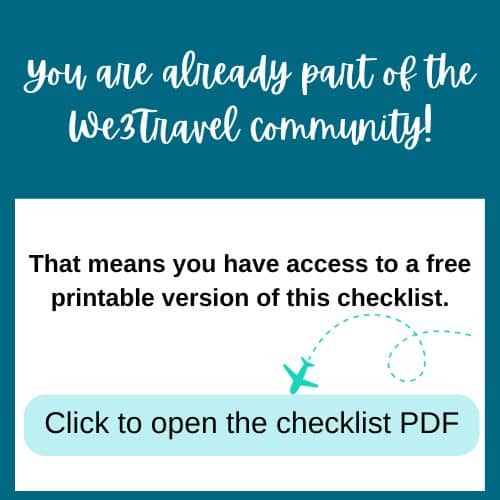
Planning for Vacation Checklist
If you are planning an international trip, especially if you are traveling during peak season or to a very popular destination, you need to start planning quite early. The preliminary stages should begin as far out as 12 months to decide on a destination, budget, and timeframe.
There are destinations, such as National Parks in the summer or Caribbean resorts during Festive Week, that can book up as early as nine to twelve months in advance.
Here is my step-by-step guide for planning a vacation:
Pick Your Destination
The first step to planning a vacation is figuring out where you are going. It sounds easy, but sometimes it takes a lot of work to figure out when, where, and how much. Start by discussing your vacation preferences and how you will make a decision. Will your choice be influenced by budget? Finding a flight deal? Will everyone in the family get a vote?
This process usually requires a bit preliminary research into a various destinations such as how much a trip costs, popular things to do, and the best time of year to visit.
Determine Your Trip Budget
We all have dream destinations, but there is a reason why there is something called a “bucket list”. Not every destination is affordable to us at this time. Sometimes we need to save up for years to afford a trip. Maybe we need to strategize about earning points and miles to make travel more affordable. Other times we need to wait for a flight sale. The whole reason we went to Morocco and Vienna was because we found a flight sale (although those destinations were ones that we were considering.)
When planning your trip budget, be sure to include airfare (if needed), accommodations, local transportation, activities, food, and other expenses such as gratuities, travel insurance, visas, etc. I have many guides to help you understand the trip cost for many destinations including Europe , London , Paris , Italy , Portugal , Amsterdam , Scotland , Iceland , Ireland , Japan , Morocco , and more.
Decide on Dates
Many times, especially when it comes to family travel, we don’t have a lot of flexibility when it comes to travel. Even so, you need to decide if you are traveling for spring break, summer vacation, or over the December holiday break. If you have more availability, you may want to research weather and trends to visit destinations during shoulder seasons or off-season when things are more affordable. Once you decide on a general time frame, you can start to research flight prices.
Research Airfare and Set Alerts
Note: This post contains affiliate links. If you click a link and make a purchase, I may receive a small commission at no cost to you.
Once you have determined your destination and dates, it is time to start planning in earnest. I recommend using an app such as Hopper to see the cheapest times to fly. You can also set alerts and the app will let you know when they think it is a good time to buy.
I also subscribe to Going , which is a flight deal service that lets you set your preferred home airports and destinations and they will send out flight deal alerts.
Lastly, if you want to find the best way to accumulate points and miles through credit card spending and sign up bonuses, I’d suggest downloading the Travel Freely app to track your credit cards and learn how to earn points.
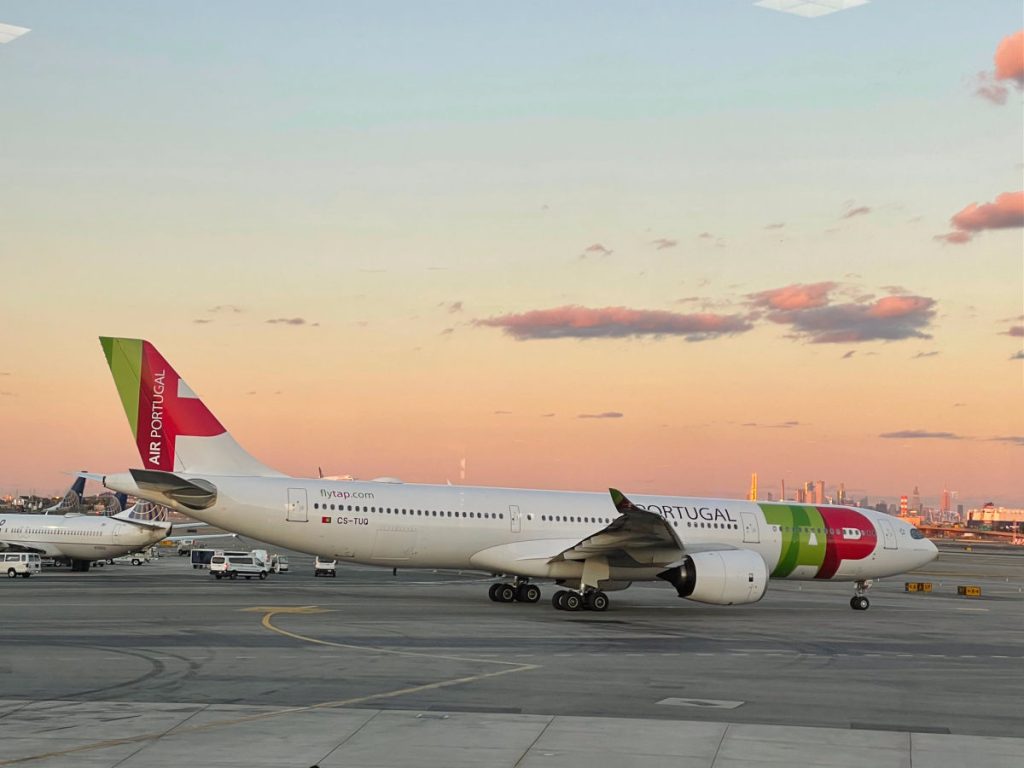
Request Paid Time Off
Before you book anything, especially anything non-refundable, be sure to request time off from your employer and get the approval on record.
Book Flights
Once the above steps are complete, you have a bit more breathing room. I typically try to book my international flights about six to eight months in advance for the most availability of reward seats and the best rates. Domestic flights should be booked about three to six months if possible, or at least four to six weeks in advance.
This is a good time to start paying attention to those flight deal alerts and look for sales around major events like Black Friday or Travel Tuesday. Some airlines also offer anniversary sales (JetBlue) or seasonal sales (Southwest.)
Book Accommodations
If you are traveling during a particularly busy time, you will want to start looking for accommodation early. National Park lodges book up very quickly after reservations open for the following year, generally nine to twelve months in advance. Other destinations that have limited availability and book up at least six months in advance include the Amalfi Coast, Greek Islands , and anywhere that you don’t have a large inventory of rooms and there is a limited season. Remember that you can always try Airbnb and these competitors too for alternatives to hotels.
For other trips, look to book accommodations anywhere from six months to three months in advance.
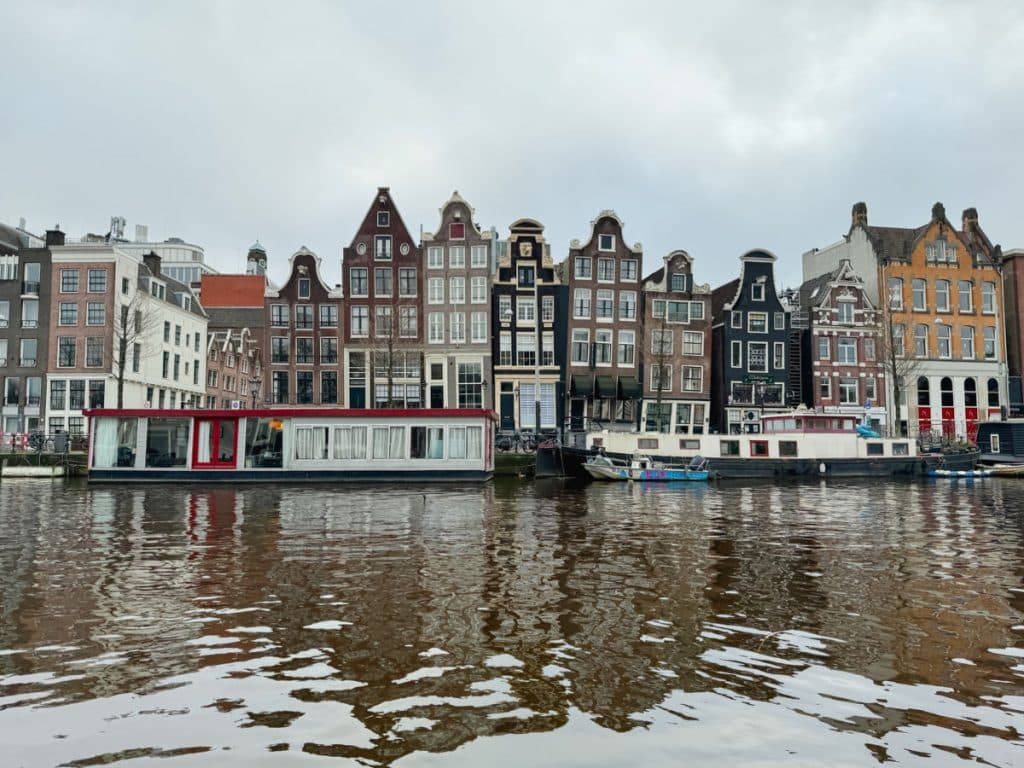
Purchase Travel Insurance
Purchasing travel insurance as soon as you book your trip has a few advantages. First, it protects you in case something comes up that forces you to cancel before you leave (for included reasons.) Also, if you are purchasing cancel anytime or cancel for any reason coverage, you generally need to purchase this within 14 days of your first trip deposit.
Having a travel insurance policy on your whole trip will typically also protect you against trip interruption, baggage loss, theft, and, importantly especially when traveling internationally, medical coverage.
Double Check Passport Validity
Remember that many countries require your passport to be valid for at least six months after your arrival. Double check the expiration dates of all of your travelers’ passports if traveling internationally. Also research your destination’s validity requirements and make sure that you are within that window. Be sure to give yourself a minimum of eight weeks to get a passport renewal and remember that things like government shutdowns can make this time frame much longer.
Check Visa and Vaccination Requirements
When traveling internationally, research if you require any visas or additional vaccinations including yellow fever, Covid-19, and others. If vaccinations are required, you may need to book an appointment at a travel clinic. Some visas can be purchased on arrival but others require paperwork to be completed in advance.
Start to Research Activities and Things to Do
Around three to six months out, you will want to begin to research your activities and things to do. I have some suggestions on how to do this and other ways to prepare kids for an international trip . You need to do this in advance because some attractions require advance reservations that sell out as soon as they open up (such as the Eiffel Tower in Paris or the Anne Frank House in Amsterdam ).
You don’t need to create your full itinerary yet, but what I do is open a Google Doc and when I find something I’m interested in, I copy the website, opening days/hours, and any relevant information (e.g. advance tickets required) into the document so that I can go in later and start to organize by day. I also open Google Maps and star/save each location on the map so that I can start to visualize where everything is in relation to each other and where I am staying (or would like to stay.)
Create An Itinerary Outline
By three months out, you need to really dig into your vacation planning. That is, unless you want to be disappointed when things you want to do or places you want to stay are booked. Start by putting together a skeleton outline.
Go back to the document that you started when researching things that you want to do. Refer to the hours and days they are open and the map to see which things are near each other. You will also want to make sure you have a balance of activities and downtime.
When traveling with young kids, I try to make sure that we only have one organized activity a day, two at most. You can also look to incorporate at least one thing a day that the kids chose to do. Plan the more physical activities and tours in the morning when everyone is fresh and take into consideration the weather as well.
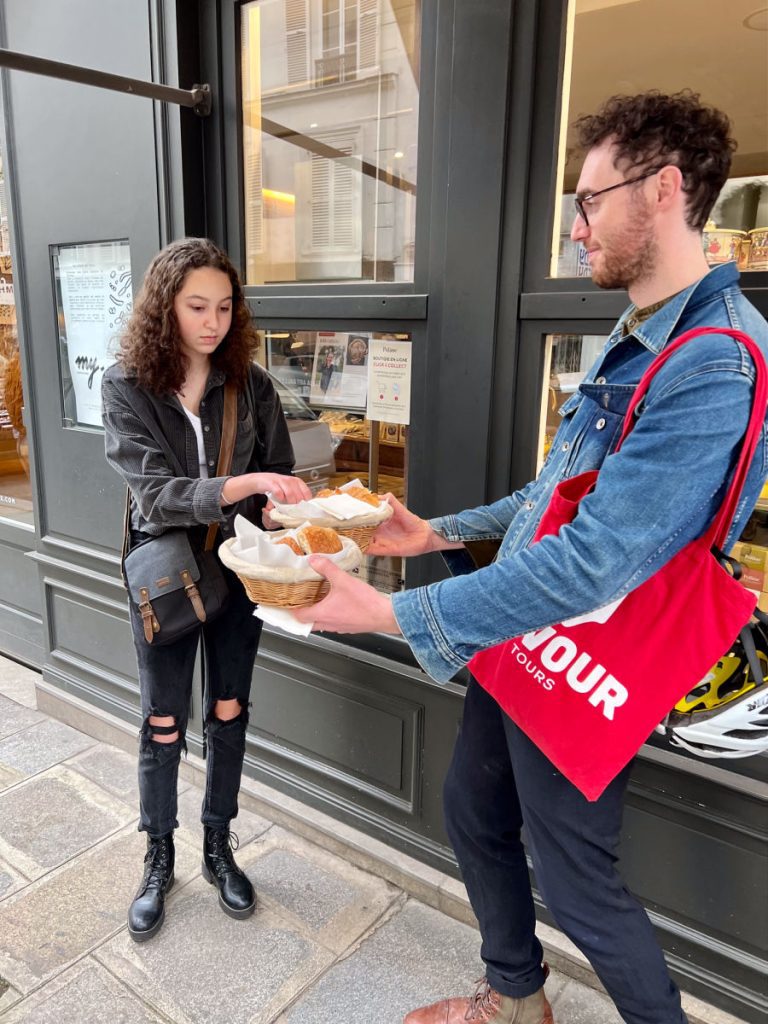
Book Tours & Activities
Start booking your tours, classes, private guides, and activities between three months and one month out. Keep in mind, as mentioned above, some attractions have tickets that go on sale at very specific times and they sell out very quickly. Other attractions, such as the Louvre Museum and many others, require timed entry tickets.
If you are visiting National Parks, keep in mind that some require reservations (such as driving the Going-to-the-Sun Road in Glacier National Park ) and others require permits for specific hikes.
As you book your activities, put the confirmation numbers, contact information, cancellation policy, meeting place, and meeting time in your itinerary and/or your calendar (for the appropriate time zone!) Print any tickets or save them to your mobile wallet. You may also want to file or upload any confirmations or documentation to the Cloud so it is accessible at any time.
Book Your Other Transportation
If you require a rental car, try to book one between three to six months out for international trips, especially if you require an automatic transmission. Since there is usually limited inventory, those tend to book up fast and car rental prices increase the closer you to get to the date.
Trains can also book up, especially if you want an assigned seat in a premium cabin (which makes it easier for storing luggage.) Often trains start taking reservations from about 90 days in advance, but others open earlier.
Book Dining Reservations
Between four and two weeks out, it is time to start researching and booking dining reservations (earlier if you are looking for Michelin Star restaurants.) When reading blogs, I usually make a note about restaurants that they recommend and add them to my Google Doc and Map. I also use Yelp, TripAdvisor, OpenTable, The Fork, and Resy. Because I’m a bit of a research nut, I don’t just look at reviews, I also look at the restaurant websites to get a sense of formality, menu, and price.
I then consider the other activities we have planned for the day and where we will be for lunch and dinner time. If we are exhausted, I know we will want to stay close to the hotel for dinner and have something informal. For days with more downtime, or maybe the last night of the trip, we might want more of a splurge or special meal. When booked, add the reservation time and address, along with the booking method in case you need to cancel, to the itinerary.

Finalize Your Itinerary
Once everything is booked, it is time to finalize the itinerary. I usually keep this as a Google Doc and set it to be available offline. This means that I can edit it and access it on the road. I also print out at least one copy to carry with me and sometimes I’ve given a copy to my daughter too so she can easily see what we are doing each day. When she was younger, we would review the itinerary each night to discuss what we would do the next time. This helps a lot with sensitive kids.
It is a good idea to also send a copy to friends or family in case of an emergency.
Obtain an International Driving Permit
If you are renting a car in another country, you should research whether or not that country requires an International Driving Permit. Note that car rental companies are not very good about providing this information. You can get one at AAA offices, just call ahead to see if you need an appointment.
Order Foreign Currency
It is possible to get foreign currency from a local ATM when you arrive in-country, but then you need to pay additional fees if the bank doesn’t have a partnership with your home bank. And, the ATMs in airports tend to have higher fees. Just in case I have trouble finding an ATM or getting my card to work if I don’t have a PIN, I like to have some currency in my pocket when I arrive. You can usually get a pretty decent exchange rate from your local bank.
I know with Bank of America, you can place your order online and either have it shipped to you or you can pick it up at your local branch. This is a good time to take care of a few other money-related things:
- Let your bank know that you will be traveling so that they don’t put a hold on any transactions;
- Make sure your credit card(s) of choice don’t charge foreign transaction fees;
- Make sure you have a PIN for your chip-enabled credit cards, as some international terminals require a chip and PIN;
- Also notify your credit card provider to let them know about any international travel plans so they don’t trigger fraud alerts or deny transactions.

Arrange Pet Sitting or House Sitting
If you have pets, make sure you arrange pet sitting or kennel boarding. You may also want to consider house sitters for someone to take care of your plants, bring in the mail, and make sure your house isn’t empty. You can find house sitters on sites such as TrustedHouseSitters.com and other resources if you don’t have someone already.
Determine International Cell Plan
Make sure you know what your cell carrier’s international plan options are. Is some data included, like T-Mobile, or do they charge a daily fee, like Verizon? A cheaper option is often to purchase an e-SIM for unlocked, compatible phones. I use Textr because it is much cheaper than using my Verizon international plan. If you are interested, you can sign up using this link to save $3.00 off your data plan.
Purchase Travel Items
This is a good time to look through your closet and see if you need anything for your upcoming trip. Do you have good walking shoes? A lockable day bag? A good packable sunhat ? Are you suitcases in good working order? Do you need a travel umbrella? An international adapter? Make sure to give yourself time to shop and for order to deliverable.
Download Apps, Maps, and Entertainment
While you are on your home WiFi, be sure to download all the mobile apps that you might need on your trip including transit apps, phrasebook apps, airline apps, etc. Also go into Google Maps and download maps for the destinations you are visiting.
Make sure all your mobile tickets are saved in your mobile wallet and download any books, movies, or shows that you might want to use on the trip including on the plane.
Arrange for Mail to Be Held
Call the post office and arrange for your mail to be held while you are away (unless you hired a house sitter.) You may also want to ask your neighbors to keep an eye out for any package deliveries.
Alert Your Alarm Company or Police
If you have a home alarm monitoring service, you should reach out to them and let them know that you are traveling and give them alternate ways to contact you. You could also let the local police know so that they can schedule patrols.
Back Up Your Computer and Phones
If you are traveling with your computer, make sure it is backed up before you leave, same with your phone. Phones are a prime target for theft and computers have a way of getting stolen, broken, or left behind.
Arrange Parking and Airport Transportation
At least 24 hours before departure, figure out how you are getting to the airport and make your transportation arrangements or reserve your airport parking. If using a ride share service, you can schedule a pick up in advance to ensure a driver will be availability.
Packing for a big trip requires some thought so don’t leave it until the last minute. Make sure you are aware of your airline’s luggage weight and size restrictions. Also remember a clear, quart-size bag for your carry on liquids. Don’t forget your important documents, Passports, tickets, medications, etc.
See my tips for packing for a long flight .
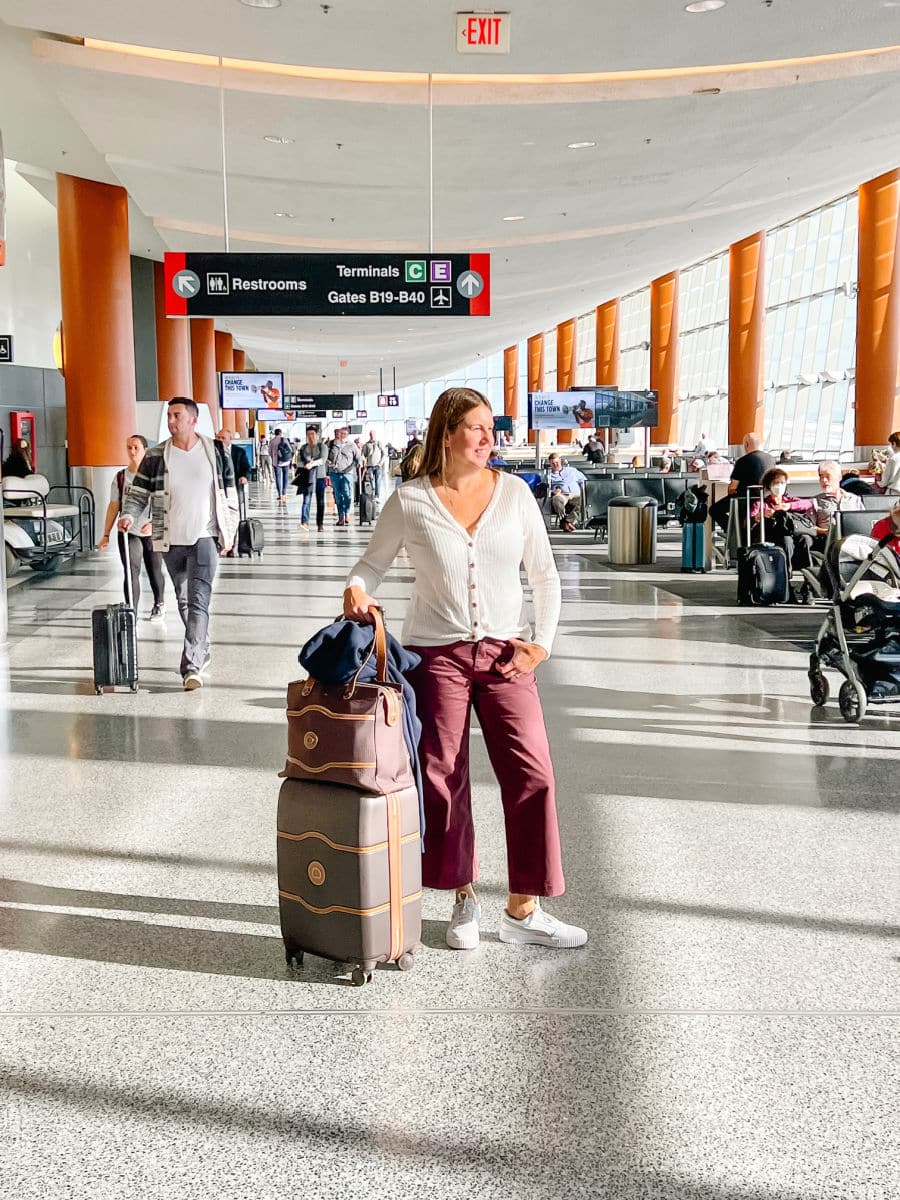
Check In and Download Boarding Passes
Check in to your flight, double check your seat assignments, and download your boarding passes. You want to make sure your passport information and Known Traveler Numbers are all saved in your airline profiles before you check in.
This brings you up to your departure day and that last race to get things done before you leave for the airport!
Set Your Out of Office Message
Enjoy your paid time off! Set your out of office message to let people know that you will be on vacation.
Change Your Voicemail Message
If you are going out of the country and won’t be able to get voice calls, let people know by changing your voicemail message. You can suggest they contact you on FaceTime to WhatsApp instead.
Reset Your Thermostat
Before you leave the house, reset your thermostat so that you aren’t paying to heat or cool your house more than you need to while you are gone.
Empty Perishables from Refrigerator
No need to come home to a stinky fridge! Empty your refrigerator of all perishables before you go away.
Take Out Garbage
Now that your fridge is empty, time to take out the garbage. If you don’t want to bring it all the way to the curb, ask your housesitter or neighbor to bring it out for you on garbage day.
Unplug Appliances
Make sure you unplug appliances such as hairdryers, curling or flattening irons, toasters, or other devices that could catch fire.
Put Lights on a Timer
You can easily turn your lights into smart devices and either set timers or use the app to turn the lights on and off at appropriate times so that your house doesn’t look deserted while you are away.
Secure Valuables
Thieves prey on houses when people are on vacation, that is why it is important to not post on social media until you get home and have the lights go on and off to make it look like you are home. Even still, secure your valuables such as jewelry and computers in a safe location, such as an in-home safe.
Add Last Minute Items to Suitcases
Don’t forget all those last minute items that need to go into your suitcase and carry-on bag…toiletries, brush, wallets, money, chargers, etc.
Double Check Tickets / Passports / IDs
Before you jump in the car, make sure you have your IDs, passports, and any tickets or documents that your trip requires.
Set the house alarm (if you have one) and off you go…have fun!
Download the Trip Planning Checklist PDF
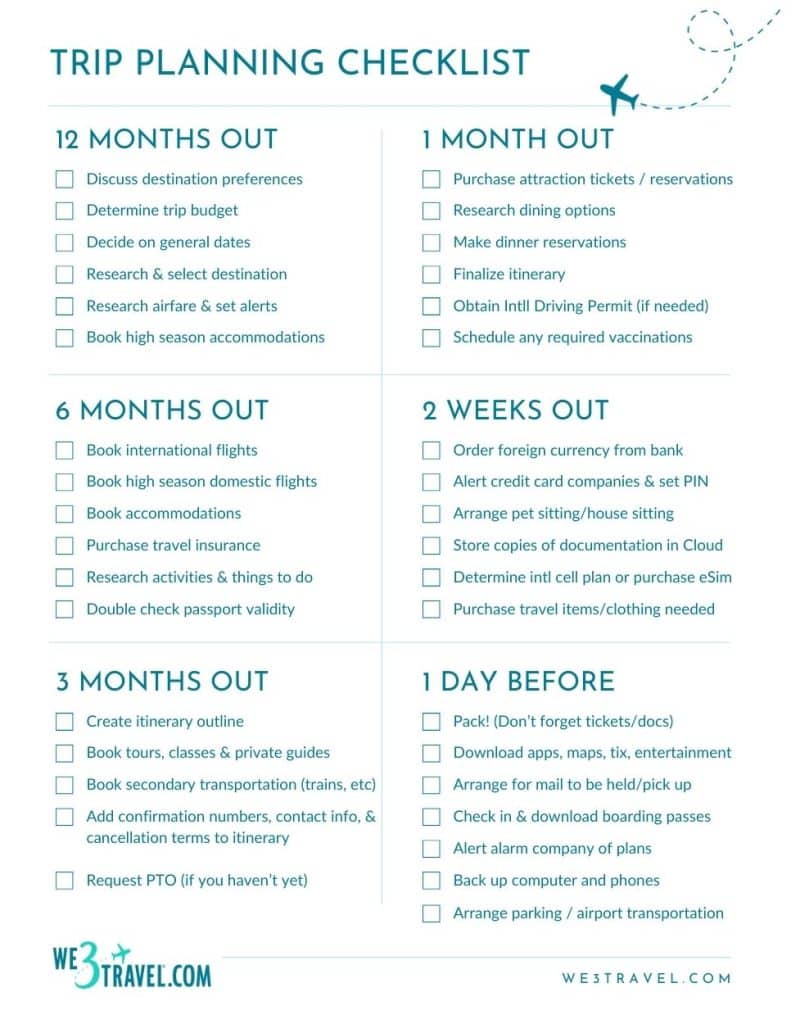
Tamara Gruber is the Founder and Publisher of We3Travel. A former marketing executive and travel advisor, Tamara is an award-winning travel writer and recognized expert in family travel. Tamara is a member of SATW and the Adventure Travel Trade Association, and serves on the Board of the Family Travel Association. She is also the publisher of YourTimetoFly.com and the co-host of the Vacation Mavens travel podcast.
Find this useful? Share it!
Publish Date: March 17, 2024

SIGN UP FOR OUR NEWSLETTER & RECEIVE A FAMILY VACATION PLANNING KIT!
We3Travel.com will use the information you provide on this form to send you newsletters. You can unsubscribe at any time by clicking the link in the footer of any email you receive from us, or by contacting [email protected] . By clicking below, you agree that we may process your information in accordance with these terms.

Start typing and press enter to search
- Work with Me
- Start a Blog
- Yearly Roundups
- 101 in 1001 Goals
- how to start a travel blog
- tips for new bloggers
- write me a guest post!
- Work With Me
A Passion and A Passport
Proving Travel is Possible with a Full-Time 9-5
How to Plan a Trip Like a Pro: The Only Trip Planning Resource You’ll Ever Need
last Updated: December 8, 2022 travel tips
FYI: Affiliate links may be sprinkled throughout the awesome, free content you see below. I’ll receive a small commission when you purchase from my links (at no extra cost to you), which I’ll totally blow on adult things like boba tea and avocado toast. As always, thanks for the support.
Wondering how to plan a trip without all the headaches? Yeah, travel planning can be quite the doozy.
It’s time-consuming, overwhelming, and downright confusing; there’s flights to book, currencies to convert, time to take off, and activities to plan. And that’s not even considering all the getting around once you actually arrive!
Don’t let the stresses of travel planning get in the way of heading to your dream destination. I get it, though, I really do, there’s a lot to do. Planning a trip can seem like a daunting task. But I’m here to help with my travel planning tips!
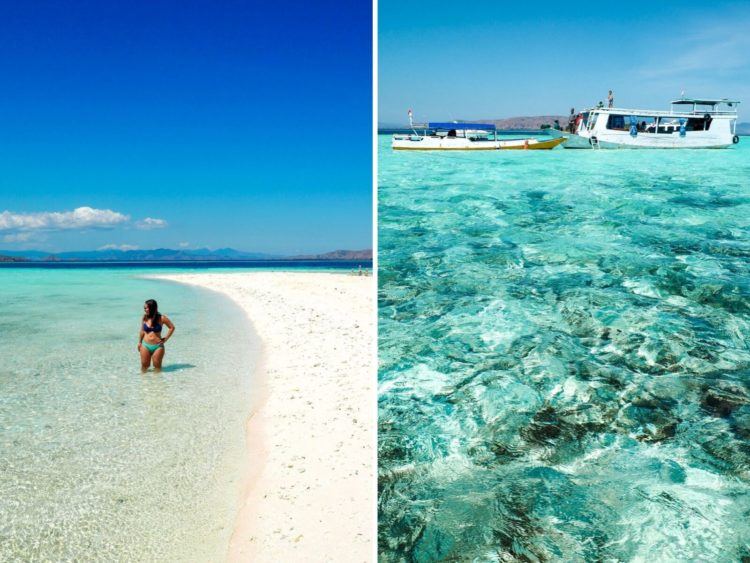
Luckily, I’ve planned dozens (and dozens) of trips, from quick weekend jaunts to Napa Valley and Lassen Volcanic National Park , to faraway exotic destinations like Bali and Morocco (with ridiculously detailed itineraries).
After lots of trial and error (and making tons of mistakes on my part) I’ve figured out a way to ease the travel planning process. I’ve narrowed it down to an easy 18 steps on how to plan a trip, so you, too, can take the trip of your dreams. Whether it’s a 5-day beach break or a culturally diverse 2-week trip to Thailand , follow my advice below and you’ll be off before you know it.
I’m kinda known for my crazy-detailed itineraries, and get lots of people asking me for help on others. I haven’t been everywhere, so wanted to provide this trip planning resource so you can plan epic trips of your own!
This is my exact trip planning method – it’s kinda ingrained in me now, but after getting it all down on paper, I realized I actually prefer doing things in a set step-by-step basis! Perfect for you because you can copy how I plan my trips!

So if you’re looking for a STEP-BY-STEP guide (made for busy professionals like you), continue reading, because this trip itinerary planner is juuuust the thing you’re looking for. Don’t blame me if you plan too many vacations. :p
→ Read Next: How to Travel More (with a full time 9-5 job)
How to Plan a Trip: Actionable steps to planning a trip of your dreams
Step 1: inspiration + fun/general research.
Before we get started on the specifics of how to plan a trip, start with some travel inspo! And sometimes, just getting inspired is half the fun of actually booking the trip (at least it is for me).
I like to use Pinterest , Instagram , good old fashioned travel mags (at the dentist/doctor or when strolling through my favorite store Target), and of course, travel blogs. I constantly find myself swooning over photos I see, and sometimes even book a trip based off of one photo alone, like that time I begged my sister to head off to Chefchaoen with me (I’m a highly visual person if you haven’t noticed).

Since my mind goes into overload during the inspiration phase, I make sure to organize what I find right away as efficiently as humanly possible.
Enter, Google Maps. As soon as I find a spot I wanna visit (whether it be as specific as a restaurant in a little town or a country as a whole), I type it into Google Maps and hit Save → Want to Go. This way, all my finds are kept neatly in one place, and already plotted on a map to see general locations. You should see my Google Maps – it’s covered in those little green pin markers.
A few posts for some inspiration right over here:
- My Life-Long Bucket List
- Most Beautiful Places in California
- 25 Perfect Week-Long USA Itineraries
- Where I went in 2013 , 2014 , 2015 , 2016 , 2017 , and 2018
- 35+ Winter Weekend Getaways in the USA (snowy and warm)
- My Travel Bucket List: USA Edition
- 14 Adventurous Places to Travel
- The Best Beaches Around the World
- The Ultimate South East Asia Bucket List

Specific Bucket-list worthy experiences:
- Meeting the Dragons in Komodo
- Bobsledding in Park City, Utah
- Sailing the Greek Islands
- Staying in an Overwater Bungalow
- Beach bumming Hawaii
Once you’ve narrowed down your list to a few places you wanna go, figure out how much time you’ll need and the best time of year to visit. Make this quick – no need to do intense research just yet. We’re still in the beginning phases of how to plan your trip. They’ll be time later for lots and lots of googling, reading, and finalizing.
Jot it down on paper in 3 columns: Places I Want to See, Time Needed, and Best Time of Year to Visit (based off of weather). I quickly google “best time to go to ____”. Example here:
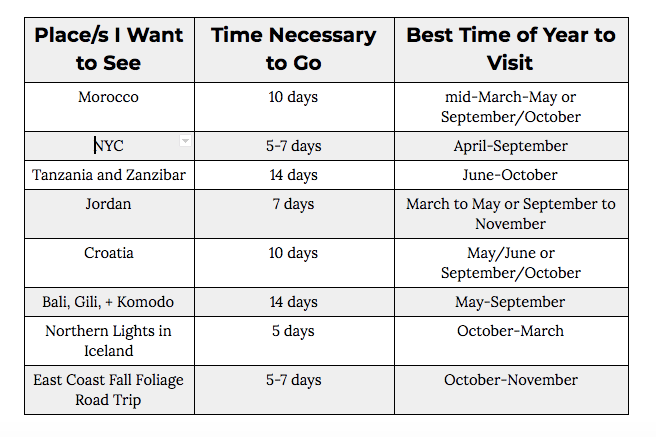
Step 2: Decide on your Destination and Trip Length
How much time are you allocating to this trip? Are you able to use a bunch of PTO and make it an epic adventure? When can you travel? Before you even begin to plan your trip, you’ve gotta know where you’re going and for how long!
Be as specific as possible. Instead of saying “I want to go to Europe”, specify the exact country, and then cities within. “I’m headed to Barcelona and Valencia!” sounds much more real, and you’ve got a much more specific goal to work towards.
Think about the type of trip you want – are you a “see-as-much-as-possible” and “cross-it-off-the-list” type of traveler, or do you want to take a few days to really get to know a place inside and out? I’m more of the first type (hey, yolo, right?), but I’m starting to appreciate spending ample time in destinations I really love.
What kind of weather do you want? Are you looking for a frozen, ice-filled fantasy or longing for a few days basking in the sun ? How do cultural and foodie experiences sound? Are you looking to stay close-ish to home or are you prepared to travel far? All questions you gotta ask yourself when choosing a destination.
TIPS FOR SHORTER TRIPS (up to 7 days)

If you know you’ll only have a few days, don’t pick a place that’ll take you 2 days to get to. We want to maximize the amount of time you’ll actually have in your destination.
And Psst – don’t think there’s much around you? Think again. There’s likely loads within a few hours.
- For example, from NYC, you can get to London in just under 7 hours, the Caribbean/Central America in 3/4 hours (depending on where), Iceland in just 5 ½, and the other side of the country in 6.
- From San Francisco, you can get to Japan in 10 hours, Mexico City in 4 ½, and Hawaii in 5. Cliche, I know, but the world really is your oyster.
Only have a few days? Check out these sample itineraries I’ve created to see exactly how much I’m able to fit in in just a few days!
Coming from the States:
- Long Weekend Trips from San Francisco
- Long Weekend Trips from New York City
- 5 Days in Maui / 3 Days in Kauai
- 3 Days in Mexico City
- 3 Days in Las Vegas
- 3 Days in Washington DC
- 3 Days in Portland, Oregon
Coming from Europe:
- 3 Days in Vienna
- 3 Days in Barcelona
- 2 Days in Venice
- 3 Days in Santorini
- 2 Days in Athens
Coming from Asia:
- 3 Days in Ubud
- 3 Days in Tokyo
- 3 Days in Taipei
- 2 Days in Bangkok
- 3 Days in Singapore
- 3 Days in Hong Kong
TIPS FOR LONGER TRIPS (1 week+)
Longer trips are undeniably much harder to plan, since there’s a bunch of logistics involved in getting from place to place. You probably won’t be staying in the same exact spot for all 7+ days. But as long as you start your research early and follow my itinerary planning advice below, you’ll be a step above everyone else blindly crafting their schedules. P
ractice really does make perfect, so the first long, multi-destination trip you plan will be the hardest. Expect a few hiccups, but just go along with it; that’s just part of traveling!

If you’ve got a longer amount of time, check out these bucket-list worthy destinations for inspiration (and plus, I already planned out the bulk of these itineraries = less leg work/heavy research for you):
- 2 Weeks in Thailand
- 10 Days in Japan
- California Coast Road Trip
- 10 Days in Norway
- 2 Weeks in Croatia (+Bosnia)
- 10 days in Panama
- 2 Weeks in Spain and Portugal
- 10 days in Bali + Komodo National Park
- A Week in Iceland
- 10 days in Greece
And right after I decide on a destination, I always research to see if a visa is involved. Some you can get upon arrival at the airport, while others you need to apply and wait for.
Don’t book a ticket without knowing the visa situation, as airlines don’t check for proper documentation before you book your flight (and it’s possible you’ll get turned away at the airport and need to go back home just as soon as you arrive into the country which requires a visa – not fun!).
Step 3: Choose your Approximate Travel Dates
If you’ve done your due diligence and filled out your own travel planning worksheet above, you already know the best time to visit your dream destination. However, when considering the best time to travel, there’s quite a few factors to think about.
No one wants to get to their destination after planning for months only to realize they forgot to look into the weather patterns. Will it be rainy season? Hurricane season? Ridiculously over-the-top blazing hot (sweating profusely is no fun for anyone). I’ve had friends visit Bora Bora (a wildly-expensive once-in-a-lifetime trip) in the rainy season and I crossed my fingers for sun for them.
I always like to visit a destination in either the high season or shoulder season, for the best chance of perfect or near-perfect weather. I’m someone who despises rain with a passion (some may like it, but just think about if your activities will be dampered because of some precipitation). This is extra important to me, and I’d rather pay a bit more money for higher possibilities of sun and no rain/clouds.
Of course, you cannot predict the weather months from now, but I always look at the expected weather trends in my intended travel month and stay away from the rainy/hurricane season.

For the best combo of pleasant weather and minimal crowds, it’s wise to travel in the shoulder season (weeks/months outside of high season). This will of course change from destination to destination, but in general, late April-early June and September-October is shoulder season in many parts of both Europe and the USA.
Think about when kids are back in school – if you visit when school is in attendance, you’ll have less families traveling and therefore fewer overall people.

Note that high season typically sees higher costs (but hey, it’s high season for a reason!). If you can visit when kids are back in school, you’ll have higher chances of finding a good deal. Visiting during a holiday? If you can plan your travels bypassing Christmas and New Years, you’ll automatically save a whole bunch, as this is the most expensive time to travel to most places.

Attending a Specific Event
Is there a specific festival/event/animal migration you want to attend/witness? For example, Oktoberfest in Germany, whale watching in Monterey, safari in Africa, and Burning Man in Nevada. Full Moon Party in Thailand and the Day of the Dead in Mexico are two other examples.
You’ll need to obviously plan your trip around these dates/months. Do note that it’ll most likely be one of the most costliest times to visit, so plan to book flights and accommodations way in advance.

No need to plan exact dates just yet, just know the general timeframe of when you want to go. For example, this could be 1) early June 2021, 2) between Thanksgiving and Christmas, 3) birthday month, etc.
Step 4: Decide on your Travel Partners
Are you planning on traveling solo or with friends/family/significant other?
Traveling with Friends/Family/Children?
Traveling with other people can be a bit more difficult to plan (you’ve got other people’s interests and budgets to cater to), but the memories will be even sweeter when you can reminisce about your fantastic trip together in a few months.
Planning a trip with family? You’ll likely be deciding on your destination together. Remember – it’s all a compromise. If I want a few days of running around a major city, we always make sure to head to smaller towns/spend a day or two relaxing on the beach for my husband later on in the trip. Everyone should be part of the decision-making process.
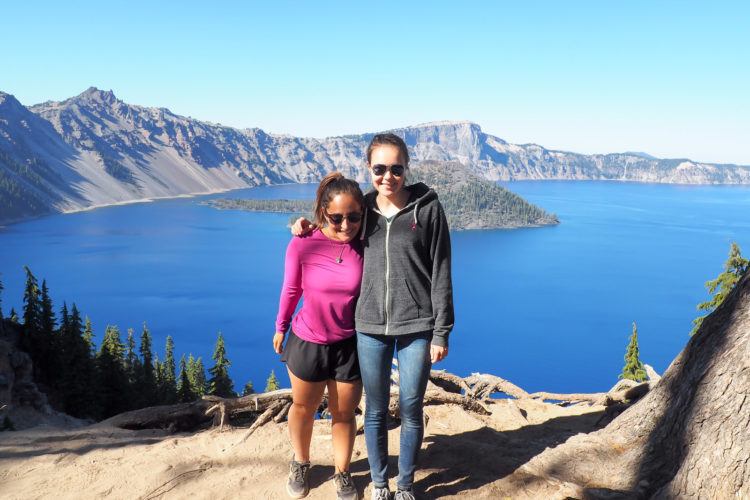
When I’m traveling with friends, I like to have my desired destination in mind as well as approximate dates. Don’t go to your friend and say “wanna travel next year?”. It’s way too open-ended, especially if you have a general idea of where you wanna go. I just started planning a trip for Spring Break, so asked my friend if she wants to accompany me on a trip to Jordan in late March. See, much more specific.
Always know the type of accommodation you both prefer, if this will be a budget/mid-range/luxury trip, and how the other person feels about spending some time solo (if one person wants to do something but the other really doesn’t want to). Your bestest of friends may make the worst travel buddies – be upfront about as much as possible and you’ll have the greatest chance of a smooth trip.
Traveling Solo?
Never traveled solo before? Don’t fret – I just started traveling solo a few years ago and fell in love with the whole concept ! It’s all so freeing! You can pick and choose all your activities, have cupcakes for breakfast (guilty!), and take as many photos as you want (64597 or 0)! Things do end up being a bit more expensive because you’ve got no one to split the bill with, so I typically stay in hostels and eat tons of street food to help with costs.

When traveling solo for the first time, I recommend heading to a country that speaks your language, has an easy currency conversion, and is known for being safe and with a good tourist infrastructure. I loved traveling solo in Iceland , London, and Croatia solo, and would highly recommend these countries for first-time solo travelers!
→ All my female solo travel tips over here (useful for you men as well, but it’s catered towards women, just FYI). 🙂
Step 5: Research Trip Costs
Before you can you do research on trip costs, you’ve gotta know where you’re going (obviously, because places all cost a different amount of money), how long you plan to travel for (more days = more money, usually), and when you aim to go (high season vs. low season can be wildly different in terms of financials).
See, this is why you need to figure out how long you’re planning to travel for before you do your research on trip costs. Every night at a hotel, plus food and activities per day, will add up quickly.
But it’s true – a vacation is only as expensive as you make it. Don’t expect baller champagne on a beer budget. That being said, you still can have a hell-of-a-time without spending a fortune.
Everyone told us that Japan would be over-the-top expensive, and we found it pretty in line with other trips we’ve taken. Must have been those inexpensive AirBnBs we found and eating cheap street food everyday.

If you’re traveling solo you won’t have many opportunities to cut these costs down (hostels are great for solo travelers), but if you’ve got a travel partner and are planning on sharing accommodation, you can automatically save 50% on hotels, car rentals, some activities, etc.
Make a rough outline of how much you think the trip will cost, approximations of course. Be sure to note flight, hotel, meals, activities, transportation, and any possible extras. The more research you do, the fewer surprises you’ll have later on.
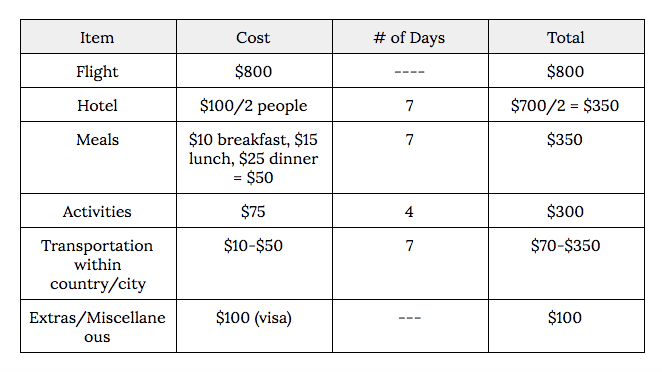
In addition, when thinking about your budget, think about areas in which you could save some money, and what hotels/activities/experiences you feel comfortable splurging on. Would you rather stay at that posh 5 star resort for 2 nights or take a helicopter ride in Maui ? Do you prefer a fancy spa treatment or a night out at the opera? It’s wise to pick and choose a few things you know you can’t live without, and try and cut corners in other areas.
For example, we sometimes stay at airport hotels if we’re arriving late into our destination, which saves us money as they are typically less expensive than hotels in downtown. The next morning we check into the more expensive hotel, but have already saved a bunch of money by spending a night at the less expensive hotel, without impacting our travel plans at all!

Make sure to think about transportation costs too, as these can vary greatly depending on where you’re going. I’m not talking about transportation to your first destination, but how you’ll actually get around once you’re there. You can get anywhere in NYC for $2.75 (which I miss greatly), but if you wanna take day trips outta the city it’s a whole other ball game.
Think about if you’ll be traveling to different cities/places during your trip – be sure to account for a car rental, trains, buses, public transit, Uber, taxis, domestic flights, etc.
*** Always overestimate the cost of travel. There are lots of unexpected and unforeseen costs involved (unfortunately). It’s always best to over over prepared, especially when it comes to finances!!! And if you don’t use all the money you save, you can always allocate the funds to your next trip. Boom!
And once you’ve figured all this out, you can set a rough budget for yourself. I say rough, because things are gonna change. Travel can be wildly unpredictable (especially if you haven’t done enough research).
Step 6: SAVE, SAVE, SAVE!
Time to get saving, my soon-to-be world-traveling friends. Because, well, hate to break it to ya, but you need a large chunk of change to pay for all your fun. You don’t need to save up enough cash for your entire trip all at once, but make sure you have a plan as to how you’ll do so before your trip arrives.
As you’re booking flights, hotels, activities, and as other trip-related expenses come up, you’ll want to have a sufficient amount of money to cover these things straight away.
NEVER go into credit card debt to travel. Just please don’t. Wait an extra few months/year to travel if you need to. The world ain’t going anywhere, but the credit card companies will charge you a hell of a beast of interest, that’s for sure.

To make your finances black and white, write down all the things you spend money on each month (rent/mortgage, car payment/insurance, groceries, gym memberships, etc). Then look at your credit card and write down all the miscellaneous stuff. You may be surprised to see that you’ve spent ~300/month on coffees or ~$80/month on that pilates membership you haven’t used since February.
See if you can split the cost of Amazon Prime/Spotify/Netflix with a friend/family member, as even saving an extra $40 per month can get you a few nights in some places.
Think about ways you can slightly alter your everyday life to save for your trip. Every time you forgo that expensive morning latte or night out at the club/bar, you’re a few dollars closer to your dream trip.
Your friends don’t understand? Get new friends. Haha – but really, explain to them that a night out can cost as much as entry to the Vatican or a few days bumming around in Belize.
Get rid of those weekly/monthly subscription boxes, make your morning coffee at home, and save dinners out for special occasions. There are a billion ways to save money, you just gotta be creative sometimes.
And if you’re lucky, you’ll already have some extra cash lying around to plan your trip- but just remember, never take money out of your emergency fund to go off traveling. Set up a different bank account, with the sole purpose being money saved for travel.
Step 7: Apply for a no-fee ATM card
And since we’re talking cash, now’s the time to apply for a no-fee ATM card.
If you want to avoid those pesky ATM fees every time you take out cash while away, simply look into a no-fee debit/ATM card, such as one through Charles Schwab (which I have and love). You can use the card at any ATM in the world, and Schwab will reimburse you all the ATM fees at the end of the month. Pretty neat, right?
It’s by far the best debit card for traveling Americans. We transfer some money into our Schwab account before a trip, and use that as our spending money (do note that it takes a few days for money to transfer between banks, so do this a few days before jetting off).
More info on Charles Schwab here.

ATM fees quickly add up, with many banks charging around $5 or so per transaction. When traveling, I don’t like to keep a whole lotta cash on me at hand, so rely on local ATMs to take out small amounts when need be. Why shell out money when you don’t have to, right?
Step 8: Apply for a travel rewards credit card
Not all credit cards are created equal. I repeat. Not all credit cards are created equal. If you plan on traveling quite a bit (or even just once), it’s wise to look into a travel rewards credit card for the bonus miles and perks that come along with it.
There are many to choose from, including more general travel cards as well as airline/hotel/brand specific.
We currently use and love the Chase Sapphire Reserve®, which not only gives us $300 a year statement credit for travel, but grants us access into Priority Pass airport lounges worldwide, provides free auto insurance when renting cars, lost luggage reimbursement, and even a concierge service, (and oh so much more).
Don’t let the $450 annual fee scare you; it’s actually only $150 once you spend $300 on travel. Chase typically has great promotions, so be on the lookout for ones providing ~50k+ bonus miles (good for a roundtrip flight to almost anywhere in the world). There’s also the Chase Sapphire, which still comes with heaps of benefits, but you don’t get lounge access and other perks.

In addition, we also use an airline specific credit card, the Delta American Express, since my husband’s airline of choice is Delta. Whenever we book Delta flights using this card, we get extra bonus miles, which we can put to use for future free flights. I wouldn’t recommend only traveling with AMEX though, as many places around the world only take VISA/Mastercard. Hence our need for both.
Other recommended cards include Capital One® Venture® Rewards Credit Card, The Platinum Card® from American Express, and the Chase Ink Business Preferred Card.
When looking for a travel credit card to apply for, check to make sure it has no international ATM withdrawal fees, no currency conversion fees, and reward points for travel (airlines/hotels/cars/etc).
And just FYI, Travelers Checks are kiiiinda a thing of the past, so be sure to have a credit card ok for international use.
Step 9: Book Flights
Booking flights is one of the most nerve-wracking parts of the travel planning process for me. And why? Because not only do flight prices fluctuate daily, but once you book, you only have 24 hours to cancel (as long as you’re booking from the USA). I find it incredibly intimidating, especially because I’m always trying to get the best possible price. And all those options! So confusing!
I rely on Skyscanner and Google Flights when looking for the cheapest possible flights, and sometimes also look on Kiwi . I tend to sway towards Skyscanner the most because it allows you to search an entire month (or time of year) to find the absolute cheapest flight available.

If I ever purchase a flight through a third-party, I make sure to call the airline and confirm my reservation number.
However, 99.99% of the time I book directly through the airlines themselves. Once you find a good deal on Skyscanner or Google Flights, go directly to the airline website to book the flight. And don’t forget to input any airline numbers you are a partner of to rack up those skymiles for later use!
→ Psst – check out Skyscanner and set up price alerts to snag the best deal.
However, always be sure to check low-cost airlines, as they are not always included in third-party sites. A good list can be found here . Southwest and Frontier Air are good options in the USA. More tips on getting the best price on airfare here .
Don’t be that person who paid the most on a flight → be flexible, use miles if you can, and sign up for email notifications (I like to use Skyscanner and Google Flights for this). If you’re a bit more flexible with your destination, make sure to sign up for Scott’s Cheap Flights and The Flight Deal, as you’ll receive insane flight deals. The more flexibility you have, the better your chances of scoring a great price. Be willing to fly midweek and off-hours, at the least, if you can.
Search for low airfares and hit BUY when you feel comfortable (don’t wait as flight prices can drastically change within hours)! Here are some additional tips on finding cheap airfare ! I’m a serial advanced planner when it comes to expensive, long-haul flights, but some of my friends score good deals by waiting until a month or two before. It all depends on your comfort level.
Before booking, you’ll want to have a general idea of your travel route, as this may impact your flights. Will you be flying into one city and out of another? Are you booking a round trip ticket?
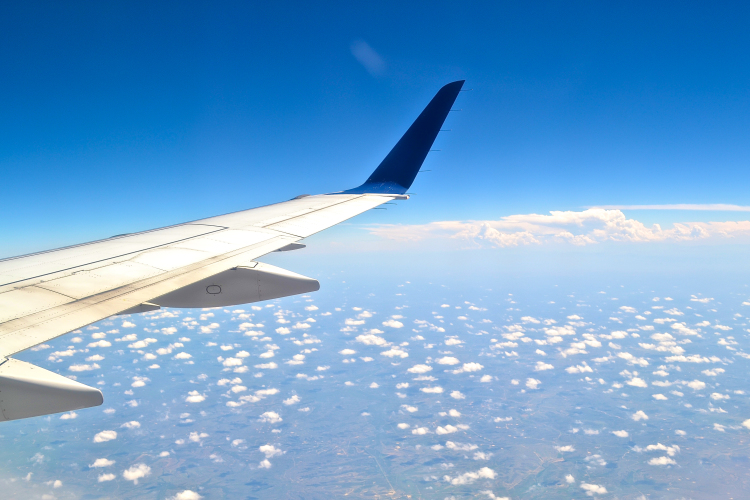
An important note on Passports : Traveling internationally? Can’t leave the country without a valid passport, am I right?! Many countries require at least 6 remaining months on passports before you leave or in order to even enter the country.
If you need to order a new passport, you can check out this passport guide for help, and if you’re traveling within 6-8 weeks (amount of time it usually takes to process passports), you’ll need to get an expedited passport which you’ll receive in approximately 3 weeks for an extra $60. Well worth the money if you find yourself in a pinch and desperately need that passport ASAP.
Step 10: Book Hotels/Accommodations
I like to book hotels relatively early on in my planning process. Why? If you’re traveling during high season (which happens to be me more often than not), there’s a chance your desired hotels could be all booked up! We tend to book hotels that we can cancel, just in case our travel itinerary changes or we find accommodation that suits us better. Most of the time refundable rooms cost a bit more, so just something to keep in mind.
When searching for rooms, I typically do a quick check on HotelsCombined , since they find the best price by checking dozens of booking sites.
→ Search for the best hotel prices on HotelsCombined
When booking accommodation, think about how far the hotel/apartment is from the city center and the activities you want to do. Sometimes, booking a hotel that’s way cheaper will end up costing more than a slightly-more-expensive hotel if you need to shell out extra dough to get yourself places.
Think about how much time you’ll be spending in the hotel. If you’re planning to be out and about all day, why book a fancy room when all you’ll be doing is sleeping and showering there?
We book over-the-top resorts/hotels when we know for a fact that we’ll be able to enjoy all the amenities. Like that time in Bali we stayed at a resort with our own private pool, lush jungle views, and multiple infinity pools. But we were planning on spending an entire day taking advantage of the hotel so it made sense. In Tokyo when we’re out stuffing our faces all day? Not so much.

A few additional places we look for accommodation:
Hotel Tonight : My go-to for last minute deals. Think road-tripping and spontaneous weekend trips. We once paid $23 for a (really nice) hotel in Reno, Nevada. You can now check and book up to seven days in advance. Top tip: download the app in advance in case you’re stuck without wifi for a bit. Use my promo code JKLEINER for a free $25 towards your first booking.
AirBnB : In some cases, we find ourselves wanting a more local experience, so we look to AirBnB for an apartment or condo. With AirBnB, you can rent out private rooms, entire apartments, and even full houses! We’ve had some fantastic experiences and wonderful hosts, and saved a ton of money! Save an additional $40 off your first stay here !
My number 1 tip: heavily research where you are staying – read all the reviews and make sure the property owner is readily available to contact. Always check the cancellation policy.
→ New to AirBnB? We’re giving you a coupon of $40 off your first stay of $75 or more !
Expedia : So great for package deals, as you can literally saves 100’s by purchasing flight and hotel together. Plus, with their rewards program, you can store your points for even greater savings down the line.
Step 11: Get Vaccinated/Medications if Needed
It’s always wise to schedule a travel appointment with your doctor so you can decide what’s best when it comes to vaccinations and precautionary medications with trained medical staff. In addition, I always check the CDC website for recommendations on the such.
Some are more standard vaccines you can get with your primary care doctor, but others (like Yellow Fever for our upcoming trip to Africa), you’ll need to arrange for in advance.
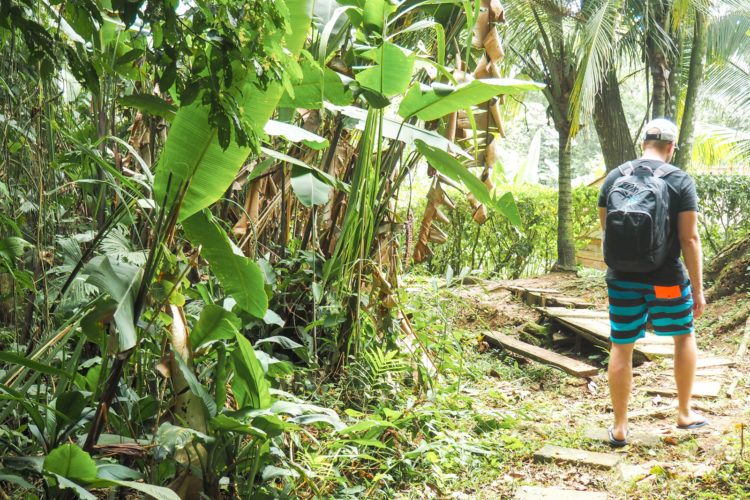
It’s wise to know which vaccines you’ll need early-ish on in the travel planning process, as some need to be specifically ordered and other vaccinations you’ll need multiple, specifically timed spaced-out appointments. Some vaccines are only recommended if you’re visiting particular parts of a country, so don’t feel like you need to get them all if you aren’t even visiting the infected areas.
In addition, research if you need to show proof of vaccines upon arrival into a particular country (they may not let you in without the proper documentation). Ack!
It’s also a wise time to talk to your doctor about any medications (like Malaria pills we took in Thailand and Bali) you may want to bring along.
Step 12: Decide on WiFi/cell service
Some like to be away from it all and go wifi-free, while others will feel more safe and secure knowing they can use their phones. It all comes down to personal preference. I rely on my phone way too much to go completely data-free, so always make sure I have a set plan in place before leaving on any international trip.
Personal Wifi Hotspot
Although you will most likely have wifi at your accommodation, it’s a good idea to bring along a pocket-sized personal WiFi hotspot , to keep you connected during your time abroad. WiFi hotspots are a cost effective option to ensure you can use GPS apps like Google Maps, check your emails, and catch up with friends and family while away.
With this portable device , you’ll have WiFi wherever you go (even if your phone doesn’t have service), unlimited internet (on up to five devices at a time!!!), and it’s fast and reliable. At less than $9 a day, this device can’t really be beat.
Note that some cell phone plans allow for international use, but many of these are costly. I accidentally turned on my phone service for LESS THAN 2 MINUTES once and got charged $150 by my phone carrier! I desperately wished I had a personal WiFi hotspot with me then!
Find more information and plan options here . HIGHLY RECOMMENDED especially when you don’t speak the native language of the country you’re visiting. A true life saver.
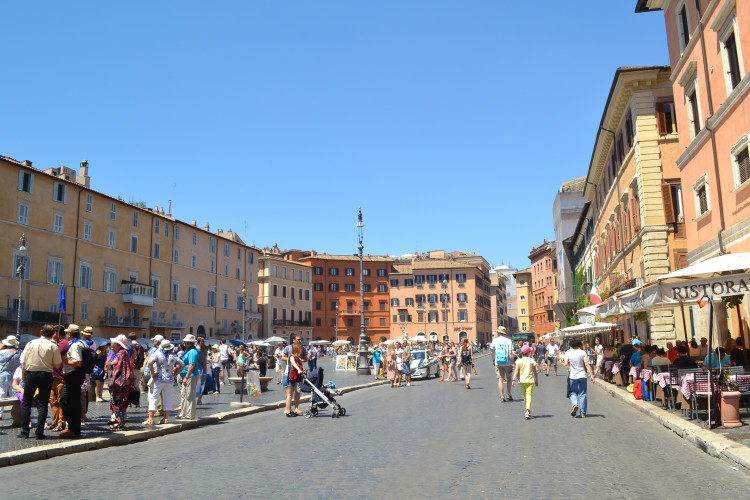
Other Options
Other options include bringing along an unlocked phone so you can use local SIM cards, and looking for plans which include international data.
If you’re thinking about doing a bunch of international travel over the next few years, it may be worth switching to T-Mobile if the service is decent in your home area. My husband and I currently use T-Mobile, and get access to free data in over 210 countries (excluding the one country I was charged an obscene amount of money in – but that was my fault).
Some teched-out cities even have free wifi throughout the city – need to check beforehand (don’t count on this as it’s a relatively new thing, and I wouldn’t rely on the free wifi in case an emergency occurs).
Psst: I always bring a portable battery charger to recharge throughout the day since I rely on my phone heavily for directions!
Step 13: Research + Map Out Activities/Restaurants
Ohhhh, this is where it gets really fun in my eyes. Activities are the bulk of your trip, and probably the main reason you’re visiting the area (besides the food, of course).
Here’s how I like to do it:
1. First, I do some research on things to do in the area (this includes food tours, beaches, museums, popular attractions, hikes, etc), day trips which peak my interest, and anything else I find exciting on Get Your Guide , Viator , and AirBnB Experiences (use this promo code for $15 off your first AirBnB experience).
I’m a BIG FAN of Get Your Guide and Viator when it comes to perusing activities and signing up for tours (they have SO many options). I’ve been using both of these sites for years, and can honestly say 99% of the time the tours are downright AWESOME and a good bang for your buck. I like to plan in advance (sometimes too far in advance), and being able to book specific activities (with the ability to cancel if need be) is something I love about Get Your Guide and Viator.

I recently started using AirBnB Experiences , as they offer some more local-type experiences, such as cooking classes in chef’s homes (I learned how to make macarons in Paris this way!), photography sessions, and more niche city walks.
I also like to use travel blogs from those writers I trust (not all travel bloggers have the same credibility unfortunately, so if something sounds odd/wacky, I do further research/cross reference facts). In order to do this, I usually google destination + “blog”, and pick them out one by one in the search results. You tend to get additional tips and insights you normally wouldn’t have on other large-party sites.

Depending on the destination, I’ll peruse Lonely Planet for even more must-do’s. I used to rely on TripAdvisor, but after I learned that many reviews are fake/bought, I stopped using them entirely.
2. Plot each “attraction/museum/beach/restaurant” on a map → I’ve been using Google Maps lately and love it! If you prefer to use paper maps, get a large one so you can easily see all the spots! But why waste paper and money?
3. Look at the map, and take note as to where these activities fall. I then separate the activities into different areas. This helps figure out which attractions you should see together on a particular day. You don’t wanna be running back and forth across the city/town/destination out of stupidity silliness. Group attractions together that are in the same proximity/close distance.
4. Think about how much time each activity will take. Some attractions will only take a few minutes, while others you may want to devote entire hours. Don’t aim to see a whole bunch of super-intensive things in the same day; try and space them out if you can.

5. Star your top “things to do” in each location. These are the things you’ll aim to see on your trip, while the others will be extra bonuses. Because, lets face it, if you only have 3 days in Paris, you probably won’t have time to see all 235232 museums.
At the end of this process, you should have a handful of main activities you wanna check out, as well as a bunch more less time-intensive ones, listed out by location/proximity to each other.
Depending on the type of traveler you are, you may want to book a few guided tours of the city/area you’re visiting. When I travel (especially on my solo jaunts), I tend to book a few guided tours and day trips. I always meet a few chatty people and end up hanging with them the entire day!
It’s also nice to have someone guide me around for a bit (solo travel gets exhausting). Guided day trips are great if you don’t wanna worry about getting lost on public transport and/or don’t wanna rent a car.
Inspiration for Things to Do/Tours/Day Trips
- Get Your Guide
- Viator
- Airbnb experiences
- Travel Blogs (like mine !)
If there’s a particular + popular restaurant/dining experience your longing after, it’s wise to make a reservation in advance. When we went to Mexico City , we had to book our table a few months ahead of time, and there still wasn’t much availability!
Step 14: Plan Your Day-to-Day Itinerary
Don’t overplan , but definitely keep track of the tours you booked and other sites on your wishlist. I tend to make exceptionally long Google Docs (for easy access without wifi), and roughly plan out my days. This makes sure I don’t forget what’s going on each day; especially helpful if your trip consists of a few different towns/cities/etc.
I always put the date, day of week, and location in the left column, then details about my day in the right.

Some tours are only offered on certain days, so you may need to play around with your day-to-day itinerary until it works out.
The example below (a random few days during my two weeks in Croatia ) is not as crazily detailed as my normal ones, but you get the picture:

Once the itinerary is all set, I then go ahead and book all tours and skip-the-line tickets for popular attractions (imagine not booking a ticket in advance for Frida Khalo’s House in Mexico City, the Louvre in Paris, or the Sagrada Familia in Barcelona). Don’t waste your time waiting in line. Spend 3 minutes booking your tickets now and you’ll be thanking yourself later on during your trip.
Step 15: Book a Car Rental (if need be)
Heading off on a road trip (one of my favorite types of trips)? Don’t forget to book a car rental for the duration of your stay!
In order to save some money, think about if you’ll actually need the car for your entire trip. Are you staying put in your first destination for a few days? Can you get around on foot or inexpensive public transport? Will you really need a car then? Book the car rental for the night before/morning of your first real road trip day.
→ Search for the cheapest car rentals over here !
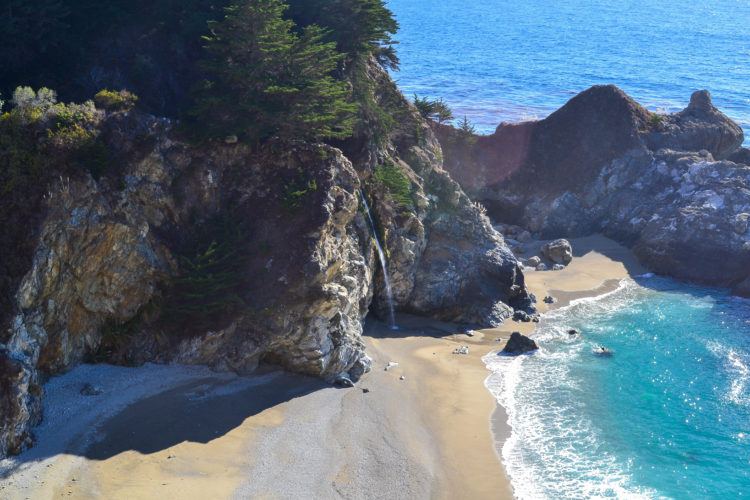
And if you’re primarily visiting one city and doing a few day trips, can you move all your day trips to the beginning/end of your trip to only book the car for 3 days, instead of say 7? It’s silly to pay for an extra day if the car will just sit there all day.
But always check how much a weekly car will cost – sometimes there are deals, and a rental may end up being cheaper in total if you book for longer (crazy, huh?)! It’s wise to think about parking fees and such before getting too excited though.
Additional Reading: Tips and Tricks for your Next Roadtrip
Step 16: Buy travel insurance
Confession time: I was always that girl who never really understood the value of travel insurance. Honestly, I thought it was a complete waste of money. After checking out the highly recommended Safety Wing , I finally came to the realization that it really is worth the (small) extra cost, and it’s just plain stupid to travel without.
Safety Wing is not just for medical insurance, but also helps when luggage is lost, you need to cancel a trip, or when your gear is stolen or damaged when traveling.

Even better, you can purchase at home or overseas (while already traveling) & make claims online from anywhere in the world. There’s really no excuse, especially since the insurance only costs a few dollars a day. You’ll be kicking yourself mid-trip if something goes wrong and you’ve got to pay tons out of pocket.
They say if you can’t afford travel insurance, you can’t afford to travel. Now I won’t travel without it. Get a FREE quote . Planning a trip abroad? Just get the insurance. No excuses.
Step 17: Before you go action items
Thought you were done? So close, just a few more things to do when planning a trip! These last-minute items can literally be done in the few days leading up to your trip. Some only take a minute, but are oh-so-important.
- Tell your credit card companies you’re traveling (you don’t want any cards to get denied because of suspected fraud/theft)
- Arrange for pets to be watched and plants to be watered.
- Get familiar with currency rates. They obviously vary from country to country, and can sometimes be as easy as moving the decimal point a few spots, or as confusing as dividing everything by 7.3. Download a currency converter for your phone for easy conversions on the road (I like Currency XE).
- Learn a few important words/phrases in the local language. I find Duolingo quite fun!
- Do some research on safety, common scams, and any areas to avoid in the destinations you’re visiting. It’s also wise to check out any cultural norms/basic manners in your destination.
- Let friends and family know you’re traveling. Be safe – someone at home should always know exactly where you are, especially if you’re traveling solo.
- Transfer money into Schwab account: remember, this takes a few days, so be sure to transfer as much cash as you think you’ll need for the beginning of your trip. I like to make it easy and just do one bulk transfer before we leave. Remember, using Schwab saves you all those precious ATM fees!

- Buy necessary items: Depending on where you’re going, you may need to pack something specific. Traveling internationally? You’ll most likely need a plug adaptor ( this one works in all countries ) and possibly a converter for voltage. You’ll probably wanna pack a wide-brimmed hat and reef-safe sunscreen for warm-weather destinations. A sarong to cover up with for visiting temples in Asia.
- Credit cards you are bringing
- Travel insurance documents
- Rough itinerary
- Flight/Hotel/Activity reservations
I also like to print out a copy (or 2) of my passport and keep in a separate place. If I’m keeping my passport in my purse with me, I also put a copy in my suitcase/husband’s carryon just in case.

A REALLY IMPORTANT EXTRA TIP: Figure out how you’ll get to your accommodation/into the city from the airport before you take off. The last thing you wanna do when you’re completely drained from sitting on the plane for 10 hours (with potential jet lag) is to figure out how to get to your first stop.
Be kind to yourself and at least write it down (on your handy-dandy Google Doc) beforehand. Consider the time you’re arriving, as public transport may not work all hours of the night.
Step 18: Start Packing!
Phew – so close! I suggest starting to take things out a few days before your trip so you don’t forget anything important. Make sure you’ve got your passport, additional form of ID, copies of credit cards and other documents, and your itinerary. You’ll also want to check the plug/socket type and make sure you have one/a few which fit.

A few of my top packing tips:
- Know your airline’s baggage fee policy. Don’t wanna show up at the airport expecting to get 2 huge suitcases for free and end up having to pay $$$ for them. A great list can be found here , but it’s always wise to triple check on the actual airline website.
- Pack light. Most people take way more than they actually need. Think about the activities you planned earlier, and pack according to that. Put everything on your bed and take out half of the clothing you think you need (yes, half). Not only will this reduce potential fees at the airport, but it’ll make it easier to get around with less baggage.
- Keep all your absolute essentials and one change of clothes in a carry-on. Lost baggage happens; don’t let it ruin your trip. Always keep medications and expensive electronics on your body, as well as a toothbrush!
- Come prepared. We always take along something for motion sickness, altitude sickness, stomach bugs (anti-diarrheal), and other general over-the-counter meds including fever-reducers, pain reliever (Tylenol or motrin), an antihistamine, and antibiotic ointment. Throw a bunch of band aids in your bag as well. You just never know what’ll happen and if you’ll have access to these quickly and easily on the road.
- Use packing cubes. I don’t know how I managed to travel before packing cubes came into my life. They are oh so helpful for organization and to keep my bag from exploding. And if you haven’t ordered packing cubes in time, you can always use large plastic bags. Better yet, roll your clothes into packing cubes and you’ll be golden.
Step 19: And you’re off!
You did it! You planned your trip! Now go enjoy the fruits of your labor and have the time of your life! Just remember to stay safe and take lots of photos! Be sure to read how to stay entertained on long flights before you leave so you’re first 3, 7, or 10 hours of travel isn’t a complete bore!
Hope this ridiculously detailed guide on how to plan a trip helped! Where are you hoping to travel soon?! Now, go help a friend plan a trip, pronto!
Leave a Reply Cancel reply
Your email address will not be published. Required fields are marked *
Save my name, email, and website in this browser for the next time I comment.
June 15, 2020 at 5:27 am
This is so so so helpful! I am a hyper planner as well so this is pretty much exactly what I do. Love this!
June 16, 2020 at 9:15 pm
Yassss! Planners unite! Everyone thinks I'm crazy, but then I go ahead and plan the best trips!
August 5, 2020 at 12:33 pm
Planners unite! Everyone thinks I’m crazy!
September 22, 2020 at 5:24 am
Hi jess, Amazing post! You share some useful blog every time. I appreciate your planning and Your planning always working for me. Thank you for sharing your travel plan.
January 24, 2021 at 4:18 am
An informative read Jess. You’ll have to visit Tenerife one day and do a review of the island.
March 21, 2021 at 9:55 am
I plan to travel to Croatia in 2022. Yes it is more than a year upfront. I like your blogs a lot and will definitely use them. Any suggestions for traveling the Croatian coastline. Want to fly to Rome and travel per train to Venice and from there with a bus/train to a destination in Croatia where I can rent a car. Preferably Poreč then Pula and all along the coast to Rijeka to Zadar, Split and all the way to Dubrovnik.
December 29, 2023 at 6:34 pm
Hi Jessica! Thank you so much for this article – it was very informative! My husband and I are planning on taking a trip to Japan in Spring of 2025. Do you speak Japanese? If not, did you find it difficult navigating the county? I am trying to figure out if I should book a tour group, or if we would be okay just going by ourselves. 🙂 Thanks so much for your help!
December 29, 2023 at 6:36 pm
Sorry! This comment was supposed to be on your Japan article! I don’t know how to fix it. LOL.
You may also love...

Subscribe To The Newsletter
FOR TRAVEL INSPO and FUN
No spam, only fun!
Favorite Destinations

- About Jessica
- How to Plan a Trip
- Fave Travel Companies
- Shop My Faves
Destinations
- World Travel
- San Francisco
- Northern California
- Southern California
- Central Coast

16 Easy Steps for Planning Your Next Trip
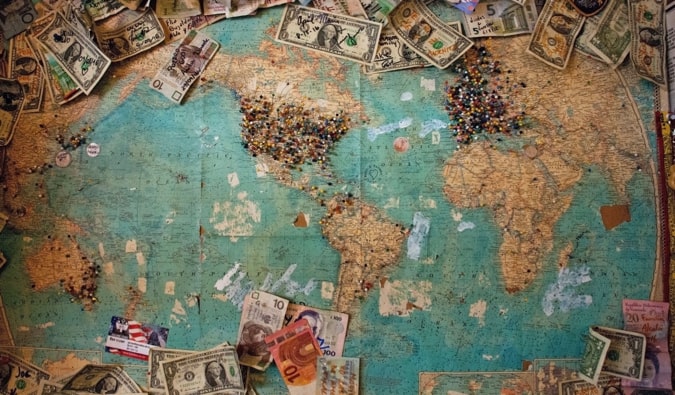
I remember when I started planning my first trip around the world. I had no idea what I was doing.
When I decided to quit my job and travel the world , I walked into a bookstore and bought Lonely Planet’s Southeast Asia on Shoestring . Buying that guidebook was my first step toward long-term travel. It made the trip seem more real, more tangible. It made it all seem possible.
While helpful, the book didn’t exactly prepare me for planning a trip around the world. Back then, there weren’t really travel blogs, sharing economy websites, and apps like there are today. I was excited and determined — but I was lost. I had to figure it out as I went, hoping I didn’t miss anything important.
Trip planning can be a daunting task. Where do you begin? What’s step one? What’s step two? What’s step three?
It’s easy to get overwhelmed, especially when you haven’t done something like this before — and especially considering just how much information there is out there these days. Blogs, social media, and guidebooks have never been more plentiful. There’s a firehose of information out there that can sometimes make the task of planning a trip even more challenging and overwhelming.
After a decade of traveling the world , I’ve planned countless trips and vacations for myself, friends, family, and even group tours. In the beginning, it was trial by fire and I learned a lot of lessons the hard way . However, that helped me develop an efficient checklist that ensures I don’t miss anything important during the trip planning process.
After all, I don’t want to get to my next destination and then realize I forgot something. And neither do you!
There is a lot of information on this website ( and even more information packed into my book ), but one question that comes up frequently is, “Matt, how do I put this all together? How do I plan a trip?”
In a continuing effort to help you get out the door and into the world, I’ve created this step-by-step guide on how to plan a trip. It works for any kind of trip — no matter how long you’re going for! Just follow this checklist and you’ll be off in no time!
Table of Contents
Step 1: Decide Where You Want To Go
Step 2: decide the length of your trip, step 3: research your costs, step 4: start saving money, step 5: get a travels rewards credit card, step 6: switch to no-fee atm cards, step 7: stay focused and inspired, step 8: check for last-minute deals, step 9: book your flight, step 10: book your accommodation, step 11: plan your activities, step 12: sell your stuff, step 13: automate your bills, step 14: pack, step 15: buy travel insurance, step 16: enjoy your trip.
If you want to jump ahead, simply click on any of the links above.
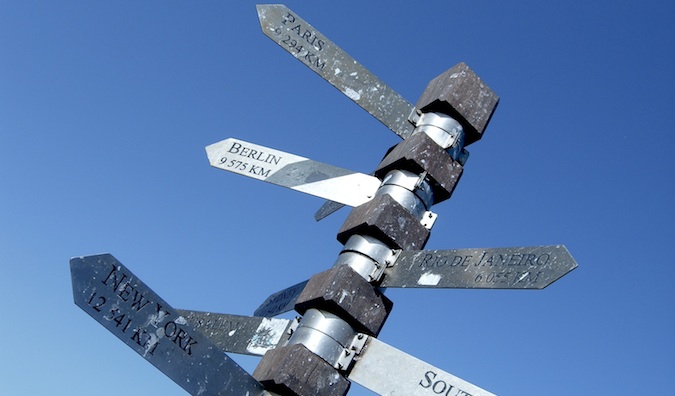
It’s a lot easier to mentally get behind “I am going to Paris in the summer” than “I’m going to Europe” or “I’m going somewhere.” Not only will your trip become more concrete for you and easier to commit to, but it will make planning easier as well…because you know what to work towards. Get specific with your plans. Get detailed. The more focused and concrete your goal, the easier it will be to actually reach it.
Resources for picking your travel destination:
- 200+ In-Depth Destination Guides
- 10 Destinations Under $50 Per Day
- The 10 Best Places to Visit as a Budget Traveler
- The 20 Best Tropical Islands in the World
How much does it cost to travel? That depends!
Without knowing how long you’re going away for, I can’t answer that question. And it’s a question you need to answer so you can start planning!
In order to figure out how much you need to save you’ll need to know how long your trip will be.
Are you going away for a week? A month? A year?
The length of your trip is a huge factor in determining how much money you need. Spend some time mulling that over until you have your answer.
For example, after you say “I’m going to Paris this summer,” add “for X days.” That way you can start to narrow down just how much money you’re going to need to save. “I am going to Paris for 10 days” is a trip that you can plan for. It’s an attainable goal.
So you know where you’re going and how long you’ll be there, but to really nail down how much money you need, your next task is to research the costs in your destination at the style of travel you want.
Do you want to backpack, or would you rather stay in luxury hotels?
How much are hostels, hotels, restaurants, and attractions?
Knowing will allow you to estimate how much money you’ll need for your trip. Here is how to research costs:
- Buy a guidebook.
- Check out my travel guide section .
- Google prices for specific things you want to do, such as scuba diving, bungy jumping, winery tours, etc. ( Get Your Guide is a good place to start for that)
You don’t need to do more than that. There’s so much information on the web that if you go down the rabbit hole of overplanning, you’ll get lost and confused by the firehose of information. Stick to those three things and you’ll be set!
In our example, if you are going to Paris for 10 days and need at least $75 USD a day (not including your flight), you know you need to save $750 USD (though round up to $800-900 USD since it’s good to have extra) for your trip.
If you were to travel around the world for a year, you’d need $50 USD a day .
Here are some other insightful posts that will help you better estimate your costs:
- 5 Ways to Make Your Money Last When You Travel
- How to Know the Travel Info You Find is Legit
- How I Research My Solo Travel Destinations

People bleed a lot of money every day through small purchases: a coffee here, a snack there. All of that adds up. In order to make changes to your spending habits, you first need to understand them. Making a list will do just that. It will also put your financial needs into a better perspective.
For example, if you need $2,000 USD for the trip you’re taking in eight months, that means you only have to save $8.33 USD per day. Couldn’t you find a way to save $8 USD per day? Heck, your daily coffee is most of that!
If you’re struggling to save money, here are 23 ways to cut your expenses and save money for travel . This will help you get started and on the road to saving money in no time!

These days, most cards have welcome offers of up to 100,000 points when you meet their minimum spending requirement. That’s enough miles for a free flight almost anywhere in the world!
If you want a free flight, sign up for the cards that help with that. If you want free hotel rooms, get a hotel card. Either way, sign up for a travel credit card and start earning points today. As long as you can pay off your monthly balance, you’ll get free travel credit.
You don’t need to sign up for very many cards either; pick one or two and focus on those. Do this the moment you decide you want to travel. Don’t wait — waiting equals lost miles, which means less free travel.
Collecting points and miles is what all the experts do to cut their costs and travel longer. It’s what has kept my costs down and me on the road for so many years. While the best cards are only available in the US, there are still plenty of options for Canadians as well as folks from Europe, Australia, and New Zealand.
For more information on travel credit cards and using points and miles, check out these posts:
- Points and Miles 101: A Beginner’s Guide
- How to Pick the Best Travel Credit Card
- The Best Travel Credit Cards
- How to Earn Points by Paying Your Rent
- The Ultimate Guide to Points and Miles
- How to Use Points and Miles in Canada
Once you’re abroad, you’re going to need money. While many countries accept credit cards, in the majority of countries cash is still king. That means you’ll need to use ATMs to withdraw the local currency.
And that also means you’re going to get dinged by ATM fees.
If you’re just away for a week or two, paying a few dollars in ATM fees isn’t the end of the world. But if you’re away for a longer period, those fees add up and chew into your travel budget — a budget you’ve worked hard to grow. Don’t give banks any of your hard-earned money.
How? By using a no-fee ATM card.
I use Charles Schwab , but there are lots of other banks (don’t forget to check your local banks) that don’t charge ATM fees. Additionally, you can join a bank in the Global ATM Alliance .
By using a no-fee ATM card you can avoid those pesky ATM fees, leaving you more money for what it was intended for: travel.
Here’s exactly how you can avoid ATM fees while traveling .
While you get closer to your goal, make sure that you keep feeding your desire to travel. Travel planning can be exhausting and overwhelming — especially if you don’t have support from your friends and family (and especially if your trip is still months away). It can often get discouraging and feel out of reach at times.
Luckily, there are tons of ways to stay focused and keep your spirits high thanks to the amazing community we have on this website. Here are some inspiring travel stories to help keep you inspired to travel:
- Why It’s Never the Perfect Time to Travel
- 13 Travel Books That Will Give You Serious Wanderlust
- How to Change the “I’m Too Poor to Travel” Mindset and Say Yes to Travel
- 8 Ways to Stay Motivated to Travel
Additionally, be sure to join our online travel community The Nomadic Network . Not only will you find support (and tons of tips) online, but we also host regular in-person and virtual events all around the world. These are a great way to get inspired, meet other awesome travelers in your area, and get travel advice.
Okay, you’re inspired, prepared, and on your way to saving money for your trip. But before you go buy that flight or book that hotel, check for deals you might have missed. You may dream of Paris but maybe there are great deals to Berlin right now. Or maybe you can get a seven-day cruise for 70% off, a package deal to Hawaii for the price of your flight to Paris, or 50% off sailing trips around Greece.
These days, there is always a deal to be found — especially if you’re flexible with your dates and/or destinations. Some deal websites worth checking out are:
- Going (Formerly Scott’s Cheap Flights)
- The Flight Deal
- Holiday Pirates
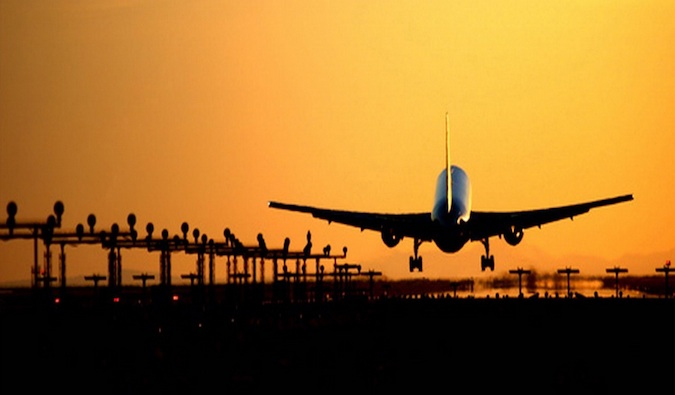
Fortunately, there are still many ways to avoid being the person on the flight who paid the most for their ticket. My two favorite sites for finding cheap airfare are:
- Skyscanner – Skyscanner is the best website for searching multiple destinations at the same time.
For the best deals, book your flight about two-three months in advance. Here are two articles on how to score a cheap flight:
- How to Find Cheap Flights
- Booking Flights: Everything You Need to Know
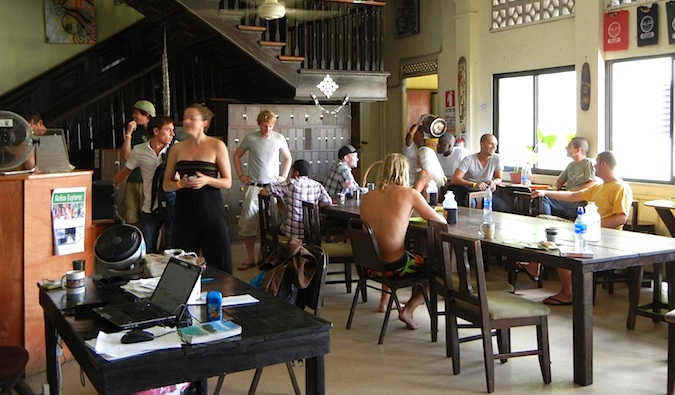
For trips longer than two weeks (or if you are going to be traveling long-term) just book your first few days. That will ensure you have a place to go on arrival. Once there, you can get insider advice from your hotel/hostel staff as well as other travelers. You can then use that info to plan your next steps.
While you can book more than your first few nights, you might end up wanting to change your plans once you land. I prefer having flexibility, which is why I always just book my first few nights and go from there.
Here are my go-to sites when it comes to finding the best deals on accommodation:
- Hostelworld – Hostelworld has the largest selection of hostels and is my go-to site for finding affordable hostels.
- Agoda – Agoda has the best results if you’re heading to Asia (though they sometimes have good US deals too).
- Booking.com – Booking.com is the best overall platform for finding budget hotels and guesthouses.
If you’re on a tight budget or you want to connect with more locals during your travels, consider joining platforms like Couchsurfing or BeWelcome . These communities allow travelers to stay with locals for free as a sort of cultural exchange.
Long-term travelers can also try housesitting or WWOOFing as well as they both offer free accommodation (in exchange for pet sitting or farm work respectively).
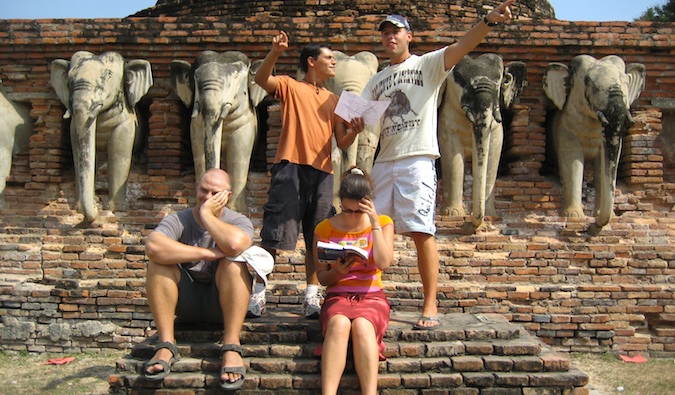
Search online for discounts as well. While some countries offer cheaper prices in person, others give discounts to those who book early/online. Research which is which for your itinerary so you can save money.
For shorter trips, you can also book your activities in advance to ensure you get tickets. For longer trips, book as you go.
Additionally, before you leave home, have a rough idea of what activities are priorities for you. That way, if you run out of time or money, you can focus on your top activities so you don’t miss out. Also, make sure to double-check that there are no holidays or other obstacles that will prevent you from certain activities as well.
If you are going on a long-term trip (six months or more), consider selling your stuff in order to earn extra money for your trip. Start doing this about 60 days before you leave. Some sites to use are:
- Gumtree – An online classified site with a focus in the UK and Australia.
- Amazon – The biggest online store in the world.
- Craigslist – Online global classifieds that have both local and global reach.
- eBay – Another global online classified site.
- Facebook Marketplace – Great for finding people near you (so you don’t need to ship your items).
If you aren’t going to be gone that long, skip this step. If you are going away long-term but want to keep your stuff, move it to a friend’s house or keep it in storage. A good storage company in the US is Public Storage . It’s one of the most affordable options out there.
Get rid of your mail, go paperless, and set up online bill payment for your recurring bills to ensure you won’t miss any while overseas. If you are still going to get paper mail, use a service like Earth Class Mail , which will collect and scan your mail for you. (If you are going on a two-week trip, you don’t really need to worry about this, so you can skip this step, too.)
If you have the option (and don’t want to pay for a mail service), you can also have all your mail sent to a friend or family member.
Additionally, you’ll want to make sure you cancel any phone plans you have or switch your plan to one that is more travel-friendly. T-Mobile is great for travelers going on trips under 3 months. For any trips longer than that, you’ll want to cancel your plan and just buy SIM cards abroad as that will be much cheaper.
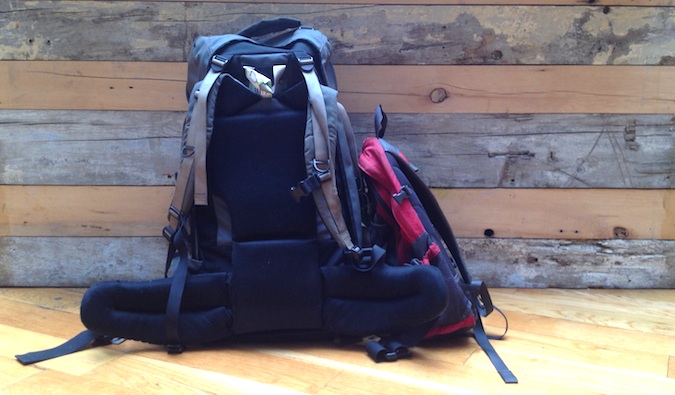
I travel with a 45L REI bag and then a smaller day bag.
Unless you’re heading to multiple climates and need bulky winter gear, you don’t need a massive 70L bag stuffed to the top. Here’s my suggested packing list to help you take just the right amount of stuff and avoid overpacking ( here’s a list for female travelers as well ).
While what you pack will depend on where you are going, remember that you don’t need to pack everything you own. You can buy things you need on the road. You can do laundry overseas. At the end of the day, you have to carry everything you bring. So bring less!
There are a few extra items you might want to pack beyond your everyday clothes, though. Some things I like to bring with me are:
- First aid kit
- LifeStraw bottle with built-in filter
- Packing cubes (to stay organized)
- Travel lock (for hostel lockers)
- Travel adapter
- Quick-dry towel
Additionally, make sure you bring any prescriptions with you so you have enough for the duration of your trip. If that’s not feasible, bring a doctor’s note and prescription with you so you can fill it abroad.
While a lot of people think, “I’m healthy, I don’t need travel insurance . I won’t get sick,” travel insurance is much more than just medical protection. It covers you when your camera breaks, your flight is canceled, a family member dies and you have to come home, or if something gets stolen.
Yes, it’s an added expense. But it’s always better to be safe than sorry. I never leave home without it because I’ve seen first-hand just what can happen on the road.
I never thought I would pop my eardrum while I was scuba diving in Thailand or break my camera in Italy .
I didn’t know I would get knifed in Colombia .
My friend never thought he would break his leg hiking.
Another friend didn’t expect her father would die and she would have to fly back home.
Unfortunately, bad things can happen when you’re traveling. True, these events are few and far between. But they can cost tens of thousands of dollars to handle on your own. If you’re not prepared to pay out of pocket, buy travel insurance.
To help you figure out the best plan for you and your trip, here’s my ultimate guide to picking a good insurance company . It will show you how to pick a good plan that covers you for when you get sick, your flights get canceled, if you get injured, something gets stolen, or your trip is delayed.
Here’s a breakdown of my recommended travel insurance companies so you can see what company offers the best plans for your needs and budget:
- SafetyWing – Super affordable plans for budget travelers.
- Insure My Trip – Best for senior travelers.
- Medjet – Provides additional evacuation coverage to ensure you get home should an emergency occur.
- Insured Nomads – In-depth emergency and non-emergency coverage for long-term travelers and digital nomads.
For more information on travel insurance, you can check out these posts:
- What Does Travel Insurance Actually Cover?
- Is Travel Insurance Worth It?
- Do You Need Medical Evacuation Insurance?
Additionally, make sure you know your rights as an airline passenger. For example, delayed flights to/from Europe often mean you’re entitled to compensation (beyond anything insurance-related).
Learn how to ensure you are compensated if your travels are delayed or your flight is canceled .

If you’re feeling nervous, don’t worry — that’s perfectly normal. You’re about to embark on an amazing adventure — and that’s a huge change. Feeling anxious or nervous or unsure is something every traveler experiences. But you’ve made it this far. Trust your planning, follow your instincts, and you’ll have the trip of a lifetime. I guarantee it.
By using this post as a guideline for your trip planning, you can better organize and prepare for your trip. You’ll check all the boxes, not miss anything, and have plenty of money for your vacation. It can be as simple as booking a flight and packing or as complex as rearranging your entire life to go backpack the world forever.
But, no matter how long your trip may be, this list will help you stay organized and motivated as you plan your trip and step out into the world.
P.S. – Yes, I did leave out visas and vaccinations, because needing those isn’t as universal as the other stuff on this list, but don’t forget to check if you need those, too!
Book Your Trip: Logistical Tips and Tricks
Book Your Flight Find a cheap flight by using Skyscanner . It’s my favorite search engine because it searches websites and airlines around the globe so you always know no stone is being left unturned.
Book Your Accommodation You can book your hostel with Hostelworld . If you want to stay somewhere other than a hostel, use Booking.com as it consistently returns the cheapest rates for guesthouses and hotels.
Don’t Forget Travel Insurance Travel insurance will protect you against illness, injury, theft, and cancellations. It’s comprehensive protection in case anything goes wrong. I never go on a trip without it as I’ve had to use it many times in the past. My favorite companies that offer the best service and value are:
- SafetyWing (best for everyone)
- Insure My Trip (for those 70 and over)
- Medjet (for additional evacuation coverage)
Want to Travel for Free? Travel credit cards allow you to earn points that can be redeemed for free flights and accommodation — all without any extra spending. Check out my guide to picking the right card and my current favorites to get started and see the latest best deals.
Need Help Finding Activities for Your Trip? Get Your Guide is a huge online marketplace where you can find cool walking tours, fun excursions, skip-the-line tickets, private guides, and more.
Hi, I’m Nomadic Matt, the New York Times best-selling author of How to Travel the World on $50 a Day and Ten Years a Nomad, as well as the founder of this website! And I’m here to help you save money on your next trip.
Got a comment on this article? Join the conversation on Facebook , Instagram , or Twitter and share your thoughts!
Disclosure: Please note that some of the links above may be affiliate links, and at no additional cost to you, I earn a commission if you make a purchase. I recommend only products and companies I use and the income goes to keeping the site community supported and ad free.
Related Posts

GET YOUR FREE TRAVEL STARTER KIT
Enter your email and get planning cheatsheets including a step by step checklist, packing list, tips cheat sheet, and more so you can plan like a pro!

- PRO Courses Guides New Tech Help Pro Expert Videos About wikiHow Pro Upgrade Sign In
- EDIT Edit this Article
- EXPLORE Tech Help Pro About Us Random Article Quizzes Request a New Article Community Dashboard This Or That Game Popular Categories Arts and Entertainment Artwork Books Movies Computers and Electronics Computers Phone Skills Technology Hacks Health Men's Health Mental Health Women's Health Relationships Dating Love Relationship Issues Hobbies and Crafts Crafts Drawing Games Education & Communication Communication Skills Personal Development Studying Personal Care and Style Fashion Hair Care Personal Hygiene Youth Personal Care School Stuff Dating All Categories Arts and Entertainment Finance and Business Home and Garden Relationship Quizzes Cars & Other Vehicles Food and Entertaining Personal Care and Style Sports and Fitness Computers and Electronics Health Pets and Animals Travel Education & Communication Hobbies and Crafts Philosophy and Religion Work World Family Life Holidays and Traditions Relationships Youth
- Browse Articles
- Learn Something New
- Quizzes Hot
- This Or That Game
- Train Your Brain
- Explore More
- Support wikiHow
- About wikiHow
- Log in / Sign up
- Planning Travel
How to Plan a Trip
Last Updated: January 29, 2024 Approved
This article was co-authored by Amy Tan . Amy Tan is a Travel Planner and the Founder of Planet Hoppers, a boutique travel design team founded in 2002. Planet Hoppers specializes in brainstorming and creating itineraries for dream vacations, honeymoons, exotic adventures, family reunions, and group trips. Planet Hoppers is a TRUE accredited travel agency and a member of the Signature Travel Network, the Cruise Lines International Association (CLIA), and Travel Leaders. Amy earned a BA in Communications and a BS in Physics from the University of California, Davis in 2000. There are 8 references cited in this article, which can be found at the bottom of the page. wikiHow marks an article as reader-approved once it receives enough positive feedback. In this case, 94% of readers who voted found the article helpful, earning it our reader-approved status. This article has been viewed 555,323 times.
Before planning a trip have a current passport. Purchase traveler's checks. Keep the receipt in a safe place in case of being stolen. Whether for travel or pleasure, schedule some fun. All trips are meant for adventure, relaxation, and enjoyment. By planning well, you can ensure you that you and your family or friends can enjoy a hassle-free trip with only the good kind of surprises to ensue.
Planning Help

Choosing the When, Where, and How

- Keep in mind weather and climatic conditions, merits and demerits of the place, types of recreation (beaches, culture, shopping), and facilities (transport, eating out, etc). What clothes are suitable? How removed from civilization will you be? What does your destination require?

- Do you want to go during the off-season or while tourism is booming? The off-season will offer discounts, but it will also mean closed doors and reduced availability.
- When it comes to weather, do you want to deal with winter or the rainy season? How about when it's hot and muggy?
- And then there's ticket prices – if you're flying, when is it the cheapest to fly? If you are planning to fly on a long weekend , then you should book the tickets well in advance to get the best deal.

- Make a list. Write down the places you want to visit, including restaurants, museums, malls, and other places of interest. This will help give you ideas and prevent being completely lost when you arrive and do not know what to do.
- Include how you're going to get around. Does your itinerary involve cab rides? Using the subway? Trekking on foot? If you are taking public transportation, make sure you know how that's done wherever you're going.

- Companies that help you in the actual "planning" phase of your trip, would be like Gap Travel Adventures, Get A Trip.com, the Automobile Club of Southern California Travels Division (and their counterparts in each of the 50 States), and the American Express Corporation, whereas the giant travel conglomerates, such as Expedia, Travelocity ,Orbitz.com and Priceline (the 4 largest travel vendors in "gross profits" within the United States), aim at the end booking process.
- The five things you can do to help yourself and your budget (that you don't need a travel agent for) are the following: 1) Book your flight and hotels at the same time, not separately 2) Be willing to fly mid-week and off-hours 3) Be willing to fly or land at a neighboring airport within 30 miles (48 km) of each other 4) Pay an all-inclusive price when possible, so that meals and gratuities are included, and 5) The actual season you travel – i will differ the rates by 30-40%.
Figuring Out the Logistics

- Always add some wiggle room, overestimating rather than underestimating. There are always costs you don't foresee or things you want to do that you haven't accounted for.
- If the trip is more than you are willing to spend, make cuts where you can. If it ultimately means cutting the trip short, so be it.

- Ditch that daily sugary latte. If you get a $4 coffee drink three times a week, that's $12 a week, and about $50 a month. That's $300 in six months right there.
- Eat from home more. Restaurants are great, but they're expensive. If you cook at home, you can save money not only because it's cheaper, but because you'll have leftovers that can last you days.
- Quit the luxuries for a while. That last drink on Saturday night? Pass. A movie next week? Nope. Heck, cable? Who needs it when you have Netflix? Take a look at what little things are fun, but that you could live without.

- It is said that you should book airfare around two months out for the best deals – this is that happy place where airlines start discounting their trips to sell tickets, but haven't yet jacked prices up because they're last-minute.
- If you're going somewhere that speaks a different language, take the time to brush up on the basics. You'll be glad you did, and the people you interact with will be, too.

- Many airlines also pair with major retailers, like Target, Amazon, and Apple. If you buy from those stores, you get miles. What's not to like? You're shopping there anyway – you might as well get a free flight for it.
Setting Your Plans in Stone

- And anything else for that matter, too. Many attractions have ticket sales online where you can skip the lines and go right in. Sure, the idea of waiting in line right now doesn't sound so bad, but for three minutes of work right now you can not waste hours of your vacation standing in a line with strangers wishing past you would've had better sense.

- Only you know if you are one of these people that changes their mind often, or often does re-scheduling – or if you are one of these people that will fly out in a hurricane, no matter what!

- Keep your passport, travel documents, visas, and similar items in a safe pouch. You may want to make copies, too, and keep them in a safe place. It will make it so much easier to replace anything that you lost.

- If applicable, put vacation notices on your e-mail, and remember to set your answering machine. Those messages will just have to wait until you get back.
Wrapping Up the Details

- Traveling in a car? Make sure to get lots of foodstuffs, water, and things to do. A CD on tape about a road trip or your specific destination will be great to get you in the mood. Consider "On the Road," " Lost in My Own Backyard," "A Walk Through the Woods," or "Washington Schlepped Here," amongst others. Good music is a must, too.

- Stick to basic pieces and a couple pairs of shoes – it's really all you need in terms of clothes regardless of how long your trip is. A few basic shirts and a few basic pants, shorts, or a skirt will do the job. You can then mix and match as necessary.
- Roll your clothes when packing. This will save you a ton of room and mean you can buy that authentic-looking tiki torch when the mood strikes.
- Create and use a checklist for packing, which helps consistently remind you of all the odds and ends of packing. You don't want to arrive at the airport and remember you forgot the needed documents at home.

- Don't be tempted to take work or home problems with you – then all this planning will be for naught, making it feel like you're still mentally back home. Leave that laptop and your phone off – now is all about exploring and going on an adventure.
Expert Q&A

Reader Videos
- If planning a trip on a severe budget is your number one priority, there are literally hundreds of money saving tips for the actual daily travel plans, that can save you in the hundreds if not thousands of dollars. Thanks Helpful 0 Not Helpful 0
- If peer reviews are more important than shopping by rates, than websites like Trip Adviser.com and some of the top ranked travel blogs, like with Budget Travel and Travel Zoo.com all have stellar reputations for providing unbiased reviews. In Europe, a similar counterpart would be found within Auto Europe.com (full service European travel vendor, not just cars) The Asian markets probably have the widest variety of travel providers. The only reason mentioning names is relevant, is according to Forbes Research many of the other smaller affiliate travel resources have been known to delete from their databases the low-25% of the negative reviews, thus obstructing true peer review analysis. This does not mean however, that one should not consider one of these smaller travel affiliates, though one should do their research and due diligence on that company's trust factor. Many have value-added services the larger companies do not have. Thanks Helpful 0 Not Helpful 0
- Start learning the language of the country you are going to if you are traveling overseas. Thanks Helpful 0 Not Helpful 0

- Don't keep sharp objects in your luggage. Security has been greatly beefed up, and your luggage may be checked. Thanks Helpful 4 Not Helpful 0
- Traveling can be hectic. If traveling to a new place, make sure you keep medication (especially for children). Keep your documents and precious possessions safe. Mugging and theft is common. Thanks Helpful 5 Not Helpful 1
You Might Also Like

- ↑ https://www.theglobetrottingteacher.com/how-to-successfully-choose-your-travel-destination/
- ↑ Amy Tan. Travel Planner. Expert Interview. 12 March 2020.
- ↑ http://www.seat61.com/spreadsheet.htm#.VBx5XvldUss
- ↑ https://www.lonelyplanet.com/travel-tips-and-articles/how-to-budget-for-a-big-trip/40625c8c-8a11-5710-a052-1479d2772aa0
- ↑ http://www.nomadicmatt.com/travel-blogs/planning-a-trip/
- ↑ http://www.nomadicmatt.com/travel-tips/how-to-find-a-cheap-flight/
- ↑ https://www.travelpulse.com/news/features/the-importance-of-travel-insurance-3.html
- ↑ http://www.roadtripamerica.com/tips/How-To-Plan-A-Great-Road-Trip.htm
About This Article

To plan a trip, start assessing your costs by determining where you will stay, like a hotel or a hostel. You should also go online and compare flight prices a couple months in advance for the lowest rates. Additionally, be sure to consider ways of getting around your destination, like rental cars or subways, based on the place you’re traveling to. If you’re traveling internationally, get your necessary documents in order 6 months in advance, like a passport and travel visa, and keep them in a safe place. For more tips on planning a vacation, like how to make a budget, keep scrolling! Did this summary help you? Yes No
- Send fan mail to authors
Reader Success Stories
Angela Heart
Apr 20, 2017
Did this article help you?

Sep 2, 2016
May 5, 2016
Benjamin Hsieh
Alex Walker
Nov 15, 2019

Featured Articles

Trending Articles

Watch Articles

- Terms of Use
- Privacy Policy
- Do Not Sell or Share My Info
- Not Selling Info
wikiHow Tech Help Pro:
Level up your tech skills and stay ahead of the curve

Ultimate Trip Planner (Step by Step with How to Secrets)
Perhaps you’re new to travel or seasoned and looking for some inspiration for your next great adventure. We’ve been traveling since 2001 and have learned a lot along the way. If anyone knows how much work it takes to plan a trip, it’s us!
Planning your own trip is not an easy task.
Fellow travelers come to us often, asking where to start, what is the first step, how do you find cheap flights and hotel deals? The questions are endless. Never fear, we are here to help you take the stress out of planning your next vacation.
This page will help you plan your trip from start to finish. We will not only give you our best advice, but share with you our secrets and teach you how to maximize your travel budget through strategic planning.
This step by step travel planning guide will share our favorite resources, including booking sites, that we use to plan our own travels.
How to Plan A Trip: Quick Guide
Table of Contents
Our top asked question about travel is how and where we book our flights. We always start out by searching available options and prices on Skyscanner.
- Skyscanner Most of our flights are booked through Skyscanner. They show all airlines, even the budget ones.
- Priceline Occasionally you can also find good deals here. Worth a look.
Worth a read:
- 10 Killer Tips on How to Find Cheap Flights
- How to Get Free Plane Tickets
- How to Get Over Jet Lag (Advice from 15 Years of Travel)
- 5 Ways to Survive that Long Layover
- Accommodation
Finding accommodation can be a stressful part of travel, but it doesn’t have to be. We use the following resources to find, review and book accommodation in our travels.
- Our custom hotel aggregator We’ve partnered with one of the top hotel search engines in the world to bring you a comprehensive hotel search engine that looks at all your best options and gives you the best prices available on the web for your search dates. Try it today!
- TripAdvisor We use TripAdvisor to read hotel reviews.
Need help with your itinerary planning? Check out our extensive travel guides section.
Worth a read: 11 Easy Tips on How to Find Cheap Accommodation
Travel Gear
The best place to start when it comes to gear is on our Travel Gear page . Here you will find a breakdown of gear by use; think camping, backpacking, outdoors, city, etc.
If you’re just perusing for random stuff you didn’t know you wanted, these articles are a good place to start.
Worth a read:
- Ultimate Travel Photography & Video Gear Guide
- Best Camera Accessories for Any Photographer
- Man’s Travel Essential – Bluff Works Pants
- Best Carry on Backpacks for Travel
- Best Sleeping Bag Liners: Top 12 Favorites
- Best Compact Binoculars for Outdoors & Travel
- Best Hiking Backpack for your Next Adventure
- Best Travel Rain Jacket to Stay Dry on the Go
- Best Sleeping Bag for Cold Weather: From Africa to Greenland
Packing Lists
Pack lighter on your next trip: Your Guide For Doing Laundry While Traveling
Find the perfect travel bag:
- Affordable Travel Gear Every Adventurer Should Carry
- Gear Review: 30L Shasta Weather Defense Backpack
Packing Advice:
- Ultimate Cruise Packing List (Cruise Essentials for Any Destination!)
- 38 Beach Essentials: The Ultimate Beach Packing List
- A Practical Europe Summer Packing List For All Travel Types
- Travel Essentials for Men: The Ultimate Packing List
- 40 Hiking Essentials: The Ultimate Hiking Packing List
- Ultimate Hawaii Packing List: 27 Essential Items To Not Forget
- Ultimate Cancun Packing List: 30 Key Items You Must Not Forget!
- Ultimate Packing List for Mexico
- The Ultimate Alaska Packing List
- How To Wear A Buff Headwear: It’s Easy!
- Travel Insurance
We never leave home without travel insurance and neither should you! The first thing you do after booking a trip is purchase insurance to protect your investment.
Our Recommended Travel Insurance Providers:
- Allianz Our go to travel insurance agency, we carry a multi-trip plan with them that lasts for an entire year, covering all of our trips in that period.
- World Nomads One of the best travel insurance companies out there. They offer coverage for adventures activities and electronics too.
Articles on Travel Insurance:
- Travel Insurance- Do You Really Need It?
- How to Choose the Best Travel Insurance Policy
- 10 Reasons to Have Annual Travel Insurance
- Travel Insurance for Europe Vacation: Do I Need It?
Long Term Travel
At the beginning of 2012, we began executing a plan to take a 1 year Around the World (RTW) trip, thus beginning our long-term travel lifestyle.
We documented the process on this site before finally leaving in February 2014. Our RTW trip ended up lasting 3 years.
That said, we haven’t stopped traveling since our RTW trip.
Preparing for our RTW trip:
- What We Told Our Families before our RTW
- Giving Up Our Couch To See the World
RTW Planning:
- Where Will 2 Years of RTW Travel Take Us?
- How to Plan a Travel Budget
- 20 Days Till RTW Liftoff
What happened after we left:
- Redesigning My Life At 30- RTW Career Break
- From House to Hostel- A Married Couples Perspective
- 6 Month RTW Recap
- 1 Year RTW Travel Recap
- 2 Years of RTW Travel Down- What’s Next for Divergent Travelers?
- How Traveling the World Changed my Perspective of the USA
To read every single article we’ve posted on this site about preparing for, planning, executing, and experiencing long-term travel, CLICK HERE .
Planning A Trip: Our Entire Process Shared
Step 1: choose a destination.
First things first, where do you want to go? This can be both easy and hard, so remember that there is no right answer. The perfect trip looks different to everyone. This decision alone will set the tone for how you plan a trip.
If you already know where you want to go, great but stick around as there are plenty of tips here for helping you make your plans.
If you are starting from scratch, we’re here to give you actionable, first-hand advice to help you choose a great destination for your vacation.
How much time do you have for this trip?

Knowing how much time you have for your trip will set the stage for where you go and how your trip gets planned. We find that most people are dealing with either fixed vacation time or flexibility when they start the trip planning process.
Either way, how much time you have for your trip will have a big effect on where you can go and what you can do on your vacation.
The biggest oversight is that people often forget to factor their actual travel time into their itinerary . Seems easy to remember but it’s simple to overlook once you get wrapped up in your research and planning.
This information is critical in the planning process and for choosing a destination.
If you have, say, 8 days/7 nights to work with, and you choose to go to Europe, assuming you are coming from the USA you will spend 3 of your 8 days in transit. Meaning you will have only 5 full days at your destination.
Alternatively, if you choose to visit the Caribbean or Mexico, your transit days are a half-day each, meaning you’ll get 7 full days in your destination.
The same can be said for transport times once you are at your destination. If you want to visit multiple places, be sure to do your research and factor in transit times. It’s nice to think that you can be in Paris today, Amsterdam tomorrow and London the day after, but if you do it that way you’ll spend all your time touring the inside of a train instead of actually seeing those fabulous cities.
Travel between places takes time, do not underestimate this in your travel planning.
Who Are You Traveling With?

Are you planning a solo, couple, friend or family trip? Who you are traveling with will have a massive impact on the type of trip you choose to take and where you choose to go.
I can’t stress enough how important it is to sit down with your travel companions and discuss your trip.
Use that time to toss around travel ideas, discuss interests and give each person a chance to talk about places they want to visit and things they want to do on the trip. Chances are you will realize that everyone you are traveling with has a different idea of what your trip looks like.
Utilizing the ideas of your travel companions will ensure that everyone has a memorable experience. Most importantly, don’t leave all the decision making to one person.
We’ve been on trips solo, together, with friends of similar interests, with friends of different interests, with family, with elderly grandparents and they have all been successful. The key is to tailor the trip to the people that are on it.
Travel Style – How Do You Like to Travel?

Believe it or not, this is one of the most important steps in planning your trip. Putting together a trip that caters to your interests and fitness level will go a long way in making your trip everything you dreamed it could be.
Below are some of the most popular travel styles and remember that it is okay to be more than one. A lot of people will combine these trip styles to meet their needs.
If you like to try new things, be outside, and want to add a physical type element to your trip then you’re likely to enjoy an adventure-style trip. If you want an adventure trip, consider planning some hiking, horseback riding, kayaking, rafting, skiing, biking, or scuba diving. Think Patagonia , Antarctica , Alaska …
If it is the finer things in life that you seek, and you want to be pampered in the best hotels and eat the best food, you’re likely to enjoy a luxury-style trip. This will be the most expensive of the trip styles, even if you manage to snag some deals, but will be the ultimate in a pampered, upper-cut getaway. If you want a luxury trip, consider planning your stay at a 5-star property in an exclusive destination. Think Fiji , Maui , African Safari … you get the picture.
If you want to stretch your dollar to get the most bang for your buck and you don’t mind making compromises on the quality of accommodation, food, and transportation, then you’re likely to enjoy a budget trip. It is possible to travel anywhere in the world on a budget, but some destinations are far easier than others. This trip style is best for people that like to explore on their own, make their own itineraries, and manage the day-to-day spending to a cent. If you want a budget trip, consider visiting Vietnam , Mexico , Egypt …
If you like cities, architecture and thrive in a fast-paced environment, you’re likely to enjoy an urban-style trip. This kind of trip will help you to explore every nook and cranny that the world’s best cities have to offer. There are many advantages to being based in a city, including the opportunity to not only explore the city in-depth but also take day trips to the surrounding areas. Europe is a prime place to travel if you want an urban vacation. Some of our favorite cities include Paris , Budapest , Rome , Bangkok ….
Travel Interests – What Do You Like to Do?

Beyond your style, what is it that interests you when you think of taking a trip? Is it the freedom to explore through a road trip ? Is it going on safari in Africa ? Is it walking through history in Europe?
Combining your travel style and interests will give you the maximum potential of living your dream trip. We’re here to help you figure out your travel interests.
To provide some inspiration, we have broken up several main travel interest categories on our site to make it easier for you to find information about the kind of travel that speaks to you.
- POLAR REGIONS
When Do You Want to Travel?

While this may seem irrelevant, the time of year you plan your trip can have a big impact on the destination you choose, how much money you spend and your overall enjoyment. Every destination experiences high, low and shoulder seasons.
High Season Travel
Well, you know what they say, high season is high season for a reason! This time of year typically revolves around the most ideal time to visit a destination. It is the peak season for the best weather and if there are any popular events.
High-season travel can be enjoyable but is also notoriously crowded. You’ll also find the highest prices for air, transportation, and accommodation during this period. It’s not a deal-breaker for us, but we are always mindful to research when high season is for a destination and, to be honest, we typically avoid it.
Low Season Travel
There are many perks to traveling in the low season, such as lower prices on flights and accommodation, way fewer people, and easier planning. However, the trade-off is often less than ideal weather conditions and often many businesses will close during the low or off-season, leaving you with fewer options when you are in town.
Whether to consider low season travel really comes down to where you are planning to go and what your objectives are. There are plenty of places in the world that don’t experience the weather-related low season, such as the Caribbean , that can be perfect for off-season travel.
Shoulder Season Travel
We won’t lie to you; we love shoulder season travel and purposely try to plan all of our travels during this period for each destination. It is the sweet spot of travel, the calm before, or just after, the booming high season.
Prices are generally reasonable, flights priced affordably, and accommodation options are not limited. The weather is typically just as good, if not better than you would get in high season and you get the luxury of not dealing with crowds.
Step 2: Build Your Budget
Once you’ve figured out the type of trip you want to have and when you want to go, you can start building your trip budget. There is no one number that will fit every scenario and everyone will have a different number. We recommend starting by setting a total trip budget and working backwards from there.
Ask yourself: What is the maximum amount you want to spend on your trip?
Once you have this number, you’ll have a better idea of what destinations are a possibility. Something you’ll realize early in your planning is that not all destinations will fit in your budget, with heavy factors being your trip style and preferred travel dates.
That is why I recommend having a number in mind before you settle on the destination.
If you don’t already have an idea of what your dream trip will cost, it is advisable to do some pre-research to see what the average prices are around things like flights, accommodation, and activities. Often when we are planning a trip, these things combined will help us determine if we want to visit a destination.
Picking Destinations by Budget – Our Tricks

We recommend having 3 to 5 destinations in mind and then using your pre-research of them to identify how much you want to spend on your trip. It is important to look at a number of things and not be sucked in by flight or accommodation prices alone.
Look at how much it costs to take day tours or do activities. Look into average prices for meals and transportation. I have heard more than one story about someone scoring a cheap flight deal only to be met with costs that are well over budget once they started booking accommodation and activities.
Trip planning is very much about the big picture and if you have a set budget you want to stick to, it is essential that you do some research in advance of planning.
This practice will also help you to determine future trip costs and give you numbers to save towards.
The key takeaway on budget planning is to make sure you plan for every foreseeable expense associated with your trip. To make sure you don’t miss anything, use our checklist:
- Transportation
Day Tours & Activities
- Meals (both in transit to your destination and while on your trip)
- Entertainment
- Guide & Restaurant Tips
- Airport Parking Fees
- Pre & Post Trip Accommodation if your nearest airport is not close
Step 3: Find & Book Your Flights
You can start searching for and watching flights to your chosen destination up to a year before you want to travel. As soon as you have determined your dates, I recommend to start looking at flight options and setting up flight alerts to watch fares.
Even doing this for a couple weeks will give you a good idea on trends.
If you ask anyone that travels a lot, they will all have a different process to search for flights. However, it is all done with the same goal in mind; to find the best deal to wherever it is you want to go.
Using a Flight Search Engine

We typically start our search by using a flight search engine. Our favorite is Skyscanner for the simple reason that it aggregates all flight options, from all airlines, all across the world.
They even include the budget airlines, which we find helpful when booking short haul flights when in destination, if needed.
By using a tool like this, we are able to see what companies are flying the route we want and what the price points will be. It shows us who flies cheapest and allows us to analyze the number of stops and duration based on those prices.
Another one we love is Priceline . We’ve also had some good luck using Expedia . There are literally hundreds of flight search engines (or online travel agencies) that can help you search for flights.
Using them can be a very effective way to determine your options and gauge prices for your upcoming trip.
One thing to watch for when using flight search engines is who provides the flight. These aggregators will sometimes pull in random online booking companies. While the flights and prices are legit, if you book them you will get a confirmed booking, you will be 100% locked into that flight. Meaning you cannot change or cancel the flight without losing all of the money you paid for the ticket.
If you know your plans are concrete and won’t change, you can save some significant cash going this route. But if you want the assurance of being able to switch your flight and talk to someone who represents the airline, then use this as a tool and book direct with the airline.
Booking Direct with the Airline

Going this route can have numerous benefits if you fly often, let’s say for work. Is there an airline that your office always uses? If so, you likely have a mileage account and status with that airline. This can give you the benefits of earning miles for your flights, lounge access, free checked bags and possible upgrades.
These days, we fly almost exclusively on United. As a result, we hold a high membership status that gives us all those perks I mentioned above. More often than not, we will book flight routes on our preferred airline, even if the cost is slightly higher, just to exercise the benefits and earn miles.
Something else we do is to start by using Skyscanner , to see available airlines for the route, then we go directly to the airline site to book.
This method also gives you the option to manage your booking with the airline if any changes arise. They can help you make changes to the ticket without having to deal with any third parties.
Using Miles to Book Flights

If you have been loyal to a particular airline, either personally or through work, and have an account with some miles in it, you may be able to use those miles to book your flights.
Every mileage program is different, but you can start to book roundtrip tickets for as little as 15,000 miles per person.
Using miles to purchase flights means you only have to pay the taxes for that ticket, the actual flight is essentially free. This is why opening up member accounts with airlines that you use and staying loyal to them is a popular option for travel.
Many travel savvy people, us included, have also perfected the practice of using credit card mileage offers to accrue large banks of miles that can be used to fly all over the world for almost nothing.
If this is something you are interested in learning, check out our Mile Hacking Guide to get started.
Step 4: Find & Book Your Accommodation
Next up is securing a place to rest your head, one of the most essential moves you’ll make to plan a trip. It can also be the most stressful because let’s face it, the options are endless, and the internet can be an overwhelming place.
Your chosen trip style and destination will play a huge factor into how much you spend on accommodation and what will be available to you. Before you start searching, have an idea in mind of how much you want to spend per night, based on your budget, and what kind of accommodation you are looking for.
This will go a long way in helping you to filter through the available options.
Use a Hotel Search Engine

While we have used all of the methods we will share here, the hotel search engine is by far our preferred way of searching for and booking accommodation in our travels. There are hundreds of places to book hotels online that figuring out where to look can be overwhelming.
Each one pulls different information and we were finding that we spent hours searching all the sites for deals. So we came up with a solution to save time and money when it comes to accommodation.
In 2018 we launched our own Hotel Search Engine for DivergentTravelers.com , that gives you the best hotel deals found across the web. Our search engine pulls results from all of the major booking places, including Expedia, Hotels, Booking and many more. All the options, all the deals, all in one place and just for you (ok, we use it too!).
If you’re looking for a hotel, using our hotel search engine will ensure you get the best deal available on the web. You’re welcome!
Vacation Rentals

Alternatively, if you prefer to stay in apartments, condos, houses, or apartments when you travel then using a site like VRBO or Airbnb can be a great option.
We’ve found that using this type of accommodation will give you a more local experience and more freedom during your trip. You’ll have access to a kitchen to prepare your own meals, a living room and will typically be located in a residential area.
Step 5: Figure Out Your Transportation
Once you arrive at your destination, you’ll have to determine how you will get around during your trip. This will likely be a combination of many methods, some of which should be booked in advance and some that can be booked at the moment.
It is important to do enough planning, so you know your options and rough prices before you arrive.
Planning your Arrival

A small part of your trip, but essential to make sure you start your trip right. Have a plan for when you arrive. Whether that be a pre-arranged taxi or notes on how to use public transport to get to your hotel.
Chances are you are going to be tired, possibly jet-lagged if you’ve crossed time zones, and arriving in a new place can be a shock. Being armed with information can lead you to a smooth transition into your vacation.
If you have booked a tour, cruise, or some other type of pre-arranged travel be sure to check that your arrival transportation is included. It often is not or considered an upgrade item that you need to pay for when booking. Seems simple enough, but we hear it all the time that people overlook this small detail!

Whether you’re planning a major road trip or just want to see the immediate area of your destination, renting a car can be a fantastic option. It will give you the freedom to go where you want, when you want to, and is one of our favorite modes of transportation.
It is recommended to make rental car reservations in advance to ensure you have a vehicle upon arrival, especially if you have a preference in car class. It also gives you the chance to lock in a great deal at a reduced rate versus paying counter prices, which are typically very high.
Like with flights and hotels, there are many options for booking car rentals online and it’s possible to book through a third-party site or direct with the rental agencies. We’ve found that you typically get way better deals if you book third party.
Some of our favorite places to search for car rentals:
- USA & Canada Rentals: Priceline | Hertz
- Mexico & Caribbean: Sixt | Priceline | Hertz
- Europe Rentals: Sixt | AutoEurope | HertzEurope
Train Transportation in Europe
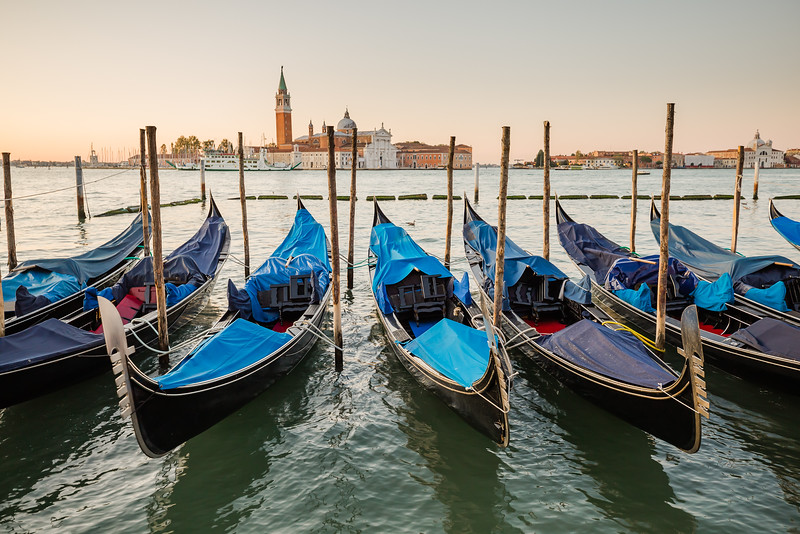
If you’re planning a trip to Europe , one of the best ways to get around is by train. It allows you to skip out on the potential headache of driving and navigating with road signs in different languages.
The train system throughout Europe is extensive, meaning you can access every nook and cranny across all the European regions. Depending on the length of stay, there are a number of passes available to maximize your budget and route. In 2016, we spent 4 months traveling through Europe by train with Eurail .
They offer pass options per country or in time chunks across multiple countries, which offers great flexibility for your trip. Check Eurail Pass Prices
Public Transportation

Any destination you plan to visit will have some type of public transportation system in place. This typically includes some combination, if not all, of the following:
- Uber/Lyft/Grab
- Tourist Bus
These transportation options will all run on local schedules and be bookable when you arrive in your destination. It is usually easy to find information online about prices for these modes in advance, so it is recommended to do that so you can budget accordingly.
Step 6: Start Your Itinerary Planning
This step is going to look completely different for everyone and will be highly dependent on your travel style, budget, and personality.
The biggest piece of advice we can give you is to not plan every second of your trip. It might be tempting, especially if you are short on time and there is a lot to see but leave some time for spontaneity .
When we worked full time office jobs and planned our trips around vacation time (hello, we did this for 13 years!), we used to plan every second of our trips to maximize our time. It was rewarding, we saw a lot and had a ton of fun, but it was exhausting. Don’t be like us.
Find a balance in your itinerary for relaxation and activities. Give yourself some time to just wander around and engage with the local scene. You never know what you might come across and I promise you that those moments will end up being your favorite memories.
Figuring Out What to Do

One word, research. You already know where you’re going and what you’re travel style is, so use the power of the internet to find things that interest you. We are huge fans of using travel blogs (ahem) to research trips.
They can give you fantastic, first hand insight into a destination and help you to learn what is available.
We also love to read guidebooks. I know, we’re nerds, but they really do provide valuable information on the places you are planning to visit. Any brand will do but we prefer to use Lonely Planet .

While many things will be possible to do on your own, most of the best sites will be available in some kind of day tour. We like to explore on our own, but we also like to book day tours. They can help get you into places that might be logistically challenging to access.
Day tours are often available both in your destination and the surrounding area. This can be a great way to see more during your trip. It’s also a great way to get local information and meet people during your travels.
It is possible to book some tours once you are in your destination, but keep in mind that availability can be limited. If you’re traveling during high season, things may also be sold out.
Keep this in mind when you plan a trip and be prepared to book tours in advance to ensure you get a guaranteed spot on the tours you are eyeing up.
Our preferred company for booking day tours and activities worldwide is Viator . This company aggregates tours that are offered by local companies in hundreds of countries. Their website is fun and easy to navigate, breaking up tour options by destination and interest. They also run a lot of web deals and offer early booking deals.
Step 7: Consider Booking a Group Tour
Perhaps you’re finding this information overwhelming and would rather leave the planning to someone else. There’s no shame in this, sometimes we like to travel like that too! If that is the case, we highly recommend you look into taking a group tour.
Advantages of Group Tours

There are many advantages to going this route, including:
- Set itinerary
- Accommodation included
- Transportation included
- Led by a knowledgeable guide
- Meeting new travel companions
We’ve done plenty of group tours and we prefer the intimate experience of small group adventure travel. Our favorite company for this is G Adventures .
Headquartered in Toronto, Canada, G Adventures offers a wide range of award-winning trips to more than 130 countries on all 7 continents. They are an industry leader in sustainable travel and work hand in hand with the non-profit Planeterra to make a positive impact worldwide. Explore tours offered by G Adventures
Step 8: Passports & Visas
If you’re planning to travel internationally, you’ll need to make sure you have a valid passport for your trip. Depending on your passport nationality, you may be required to apply for a visa to enter the country as well.
Doing your research in advance will help you to navigate this process with ease.
If you’re traveling in your home country, you will not be required to carry a passport, a valid driver’s license or ID card will suffice.
Apply for a passport

For those of you taking your first international trip (yay!), you will need to apply for a passport in your home country. The process varies, depending on where you are from, but is usually straight forward.
It is advised to consult with your nearest passport processing center to obtain a checklist of needed documents and step by step instructions on the process.
If you already have a passport: Most countries around the world require that all passports have more than 6 months of validity and 2 blank pages for entry for the duration of the time spent in their country. This is not negotiable and while your passport is technically not expired if it is under 6 months, you will be denied boarding on your flight or fined heavily if you leave with less than 6 months validity. If your passport cannot meet this requirement during your planned trip, you will need to renew it prior to your trip.
Research Visa Requirements

Depending on the issuing country of your passport, you may need to obtain a visa to enter your chosen destination. Doing a little research ahead of time will tell you if you need a visa, how much it costs, the process and whether it can be obtained online or at an embassy.
The visa costs and process vary significantly across countries you’re traveling to and where your passport comes from. This being said, make this part of your initial trip planning process and ensure you have more than enough time to apply.
If you’re looking for a great tool to help you navigate the visa process, we recommend checking out iVisa . This site offers information on what countries require visas and offers assistance in obtaining them. This tool works for all nationalities.
Make Copies of Important Documents

Once you have all your important travel docs for your upcoming trip, make copies to carry with you and to leave at home. These come in handy in the case of an emergency and is a good practice for anyone traveling.
When we travel, we always make copies of the following documents:
- Flight schedule
- Chosen accommodation
- Travel Insurance Policy
We leave one complete copy at home with someone and scan one complete copy into our computer and save it in our email. We also carry a hard copy of our passport, visa, and travel insurance information on each of us while in a destination.
Step 9: Immunizations
If you’re traveling somewhere abroad, chances are high that you’ll need some travel vaccinations . Many destinations do not require immunizations to enter their country, but that doesn’t mean you won’t be potentially exposed to diseases while you’re there.
Do Your Research

Do some research in advance, we always check out the CDC Website , and go on those recommendations. You can also schedule an appointment with your local international travel clinic, who can advise you on health recommendations for the destination you are traveling to.
Keep in mind that some immunizations are series that can last a month or more, plan enough time to complete these before you depart.
Also, some countries require proof of vaccination against certain diseases. Yellow Fever is a good example of this. Many countries in South America and Africa will not permit entry without proof that you’ve had this jab.
Step 10: Phone & Internet
In today’s world being connected is a priority. We know this, as we work online. We’ve come accustomed to being able to access the internet at all hours of the day and night. If this is something you want when you travel, there is a number of options available to help you stay connected during your trip.

Most places you visit these days will offer some kind of WIFI connection. The quality can vary greatly depending on what country you are in and how remote you are during your trip. For the most part, you should be able to access free WIFI a couple times during your trip.
Some countries offer WIFI but you have to pay for it. The same can be said for hotels too. While other countries have it available in all public places, restaurants and even on buses.
Jumping between WIFI points can provide you with inconsistent access to the internet while you travel, so you have to decide if that is fine or if you want to explore other options for staying connected.
Local SIM Card

While we spend a lot of time using WIFI, the nature of running this website means we need to be connected while we’re on the move. Buying local SIM cards to access the local cellular data networks has been a go to option for us in our travels.
Unlike in the states, buying a local SIM card is usually very cheap and easy when traveling abroad. Most major airports will have cellular kiosks in the arrival terminal where you can purchase a SIM and data plan when you get off your flight.
In today’s world, we’re finding that the major cellular networks will offer tourist packages with data packages often up to 20GB and include a local number with unlimited texting and limited calls. It makes being connected while you travel, very easy.
Note: To do this, you will need an unlocked, GSM phone. It will not work otherwise. If your phone is not unlocked, you can call your provider and they can unlock it for you. Most of the time, for free.
International Roaming

While we don’t recommend that you go this route, it is an option. Unless you have T-Mobile, which offers free roaming in more than 100 countries around the world. With the others, you can have your at-home network turn on international roaming.
Companies like AT&T or Verizon have designed travel roaming packages that give you the option of using your home service abroad for something like $10 per day.
This option can be okay if you’re going on a short trip or don’t have your phone unlocked and are okay with high charges for data use. (Hello, 7 days, $70.)
App Based International Data

Alternatively, you could try a service like KnowRoaming , which allows you to pre-purchase data packages for the country you are visiting and then turn it on and manage it through an app on your phone. We tested this out and used it extensively during our travels in 2019.
Services like this work out really well when you plan to visit multiple countries on one trip. Especially in Europe, where each country has its own cell networks that require you to change SIM cards when you cross borders.
With a service like KnowRoaming, your service simply roams when you cross borders and you have the luxury of never changing SIM cards or changing plans. It is very convenient for these situations and worth considering.
As we’ve used it extensively and think it’s a great option, we’ve been able to secure a discount that will give you 50% off your plan purchase. Use promo code DIVERGENT19 to secure this deal .
Step 11: Dealing with Money While Traveling
It’s money time! When people ask us about planning travel, dealing with money is always a hot topic and understandably so, especially when you’re dealing with exchange rates.
We have extensive experience in dealing with money while traveling , from short weekend trips to 2 years of traveling consecutively. Not to mention that Lina used to work in banking.
The length of your trip will greatly affect our recommendations for dealing with money, so we’ll be sure to outline below what works best for what.

You know the old adage, ‘Cash is King’, well forget that in travel. At least when it has to do with your home currency and exchange rates.
Unless you are required to bring a certain amount of USD in cash on your trip or are traveling to a place that uses your home currency or need it to exchange on the black market for better rates (this is real in some developing countries), then we don’t recommend bringing large amounts of cash with you.
Why? Because cash gets you terrible and inconsistent exchange rates.
Instead, we recommend planning to access your money through debit and credit cards.
Using Debit Cards

This is our absolute preferred method for accessing money when we travel. Why? Because we can use ATM machines to withdraw money in the local currency at the highest conversion rate available on the market at the time of withdrawal.
We know what you’re thinking, won’t you lose money with all the fees? Well, no. There are many ways to get around conventional ATM and debit card fees when traveling.
For us, we have a dedicated travel account opened at Charles Schwab that not only refunds every single ATM fee that hits our account, but also does not charge us foreign transaction fees on our debit card.
We transfer money into this account for each trip and use our debit card to withdraw it in local currency. We get the best exchange rates available and pay no extra fees. It’s gold and has saved us thousands of dollars over the years.
Not all banks offer these debit card benefits though. So, we recommend starting by asking your bank about any fees associated with using your card abroad.
Most of the time, even if they charge some fees because you get the best exchange rates you will still pay less than if you exchange cash.
Using Credit Cards

Going beyond the use of debit cards, we use credit cards all the time when we travel. A great way to get around debit card fees is to apply for and travel with a credit card that accrues points or miles and doesn’t charge foreign transaction fees.
Use your credit card when you travel with the intention of paying off the expenditures as soon as you return. This means, you need to set aside any money from your budget that you charged to cover it.
If you’re disciplined enough to do that, using a credit card to pay for everything once you are traveling can have some great perks and avoid a lot of unnecessary fees.
A couple credit cards we love, that do not charge foreign transaction fees and accrue points/miles:
- United MileagePlus Visa
- Chase Sapphire
- Delta American Express
Notify Your Bank(s)

No matter how you decide to go about accessing your money when you travel, be sure to notify all banks and credit card companies prior to leaving. Let them know where you are going and how long you will be gone.
This will ensure that you will have access to your money without any hang-ups or account lockouts. Trust me, those are no fun (we’ve dealt with them before!) and can suck up a lot of your precious vacation time. I once spent an entire day without access to one of our debit accounts in Sri Lanka because I couldn’t reach the bank due to timezone differences.
Step 12: Travel Insurance
In today’s world of wild weather, flight delays, flight cancellations and schedule changes, it has been an invaluable asset to our travel arsenal. From the second you hit purchase on your flights/tour/hotel, you should purchase an insurance policy to cover your trip.
We do not travel without travel insurance.
Why? Because if anything unforeseen should happen (think natural disaster, death in the family, political instability…) from the time you book until you’re safely home from your trip, you will be covered. Taking a vacation is an investment and you should want to protect your spend.
In the scheme of things, the price of purchasing a travel insurance policy to protect your trip is negligible in your total budget. Don’t skip it, you never know what can happen.
Our Travel Insurance Recommendations

Allianz Travel Insurance : A leader in travel insurance, this company offers a variety of plan options depending on your budget, length of trip and party size. We’ve been using their annual travel insurance policies for 4 years and love them. They have had our back for every single delay, cancellation, lost luggage and natural disaster. It costs you nothing to browse policies.
World Nomads : If you are not from the states, I recommend looking at the options offered by World Nomads. They offer worldwide coverage to most nationalities and offer two plan options that cover most travel-related possibilities.
You might also like :
- Ultimate US National Parks Bucket List (All 63 Parks By State)
- Where To Travel Without a Passport: Tropical Beaches and Exotic Places
- 16 Exotic Islands That Are Worth Adding to Your Bucket List
- 10 Cheapest Places to Travel in Europe
- 17 Cheap Travel Destinations (Budget Trips and Travel Guide)
- 13 Stunning Cheap Islands to Visit Around the World
- How to Travel Cheap (12 Tips To Save Money While Traveling)
Did you like this story? Share it!
Travel planning resources, about lina stock.
Lina is an award-winning photographer and writer that has been exploring the world since 2001. She has traveled to 100 countries on all 7 continents. Member: SATW, NATJA, ATTA, ITWA
1 thought on “Ultimate Trip Planner (Step by Step with How to Secrets)”
Thanks for sharing this great guide for great to plan a great tip.
Leave a Comment Cancel reply


How To Plan A Trip: Easy 15 Step Travel + Vacation Planner
by Mark and Kristen Morgan
Published: July 17, 2019
UPDATED: December 31, 2023
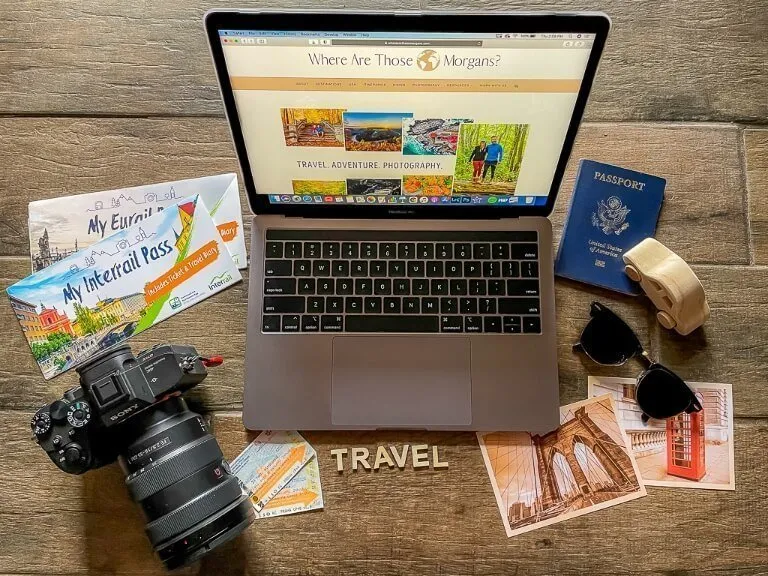
This ultimate how to plan a trip guide will transform your destination daydreams into travel reality within just 15 easy-to-follow steps.
Adventure is calling! But where should you go? How do you get there? And what do you need to organize before you leave home?
This one-stop travel planning resource covers all you need to know about preparing for any trip.
But how can you trust us to cover all of the important travel planning aspects?
The goal is to walk you through 15 simple and stress free steps, from ideas to bookings and from packing to walking out the door. We’ll take you on a journey from idea to reality.
Personally, when we plan a trip, we know that breaking the process up into sections works best. We feel less overwhelmed when we plan in manageable pieces.
Follow the steps in this guide and you’ll see just how easy planning a trip can be. Let’s travel plan!
The Travel Planning Rollercoaster

Planning any vacation is like being on a rollercoaster called the Emotion Overload. In the beginning the rollercoaster climbs slowly, building your excitement before plummeting into overwhelmed anxiety.
The second climb is determination and hard work, followed by a loop de loop as information spins around your brain in circles.
And just when it seems the ride will never end, the carriage comes to an abrupt halt: your plans are finally ready.

Break Up Planning A Trip Into 3 Sections
We are all different. Genetics, personality traits, habits and attitudes make us all unique. But although we are all unique, common patterns emerge among travelers.
Most long term travelers tend to book the first week or month in detail. Once comfortable with the whole idea of backpacker life, they tend to plan just a few days in advance each time they move.
Because who knows what might come up? Those taking shorter trips, such as a 2 week vacation, typically plan almost all specific details in advance.
Because who wants to lose valuable time planning what to do that day with just 2 weeks away from work
No matter how you prefer to travel or how long you intend to travel, the planning process can always be broken down into 3 manageable sections. You will make life easier and less like your brain might explode.
Plan, Book And Pack
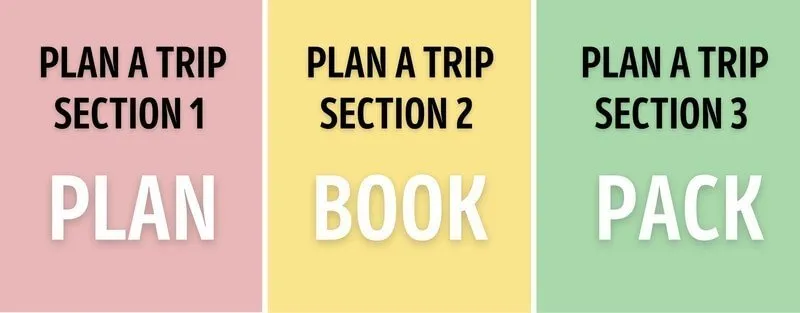
These 3 travel planning sections encompass the same repetitive processes we all follow, every time we travel. When we repeat them enough times, they become autonomous.
You plan your travel goals, you book the essentials, you pack your bags and you go.
But even when taken back to basics, each travel planning section can be time consuming, frustrating and overwhelming. We know from first hand experience when planning multiple long term travel routes.
The key is to break down each travel planning section into smaller, easier to accomplish steps. That way you will eliminate stress and feel the positive reinforcement each time you complete a step.
Follow the easily achievable steps listed below within each travel planning section. Begin to plan your trip in advance, take each step one at a time and we guarantee you will avoid feeling overwhelmed.
All you need to do then is watch your dream trip create itself before your eyes.
Need help with packing? You might like to use our ultimate travel packing resource .
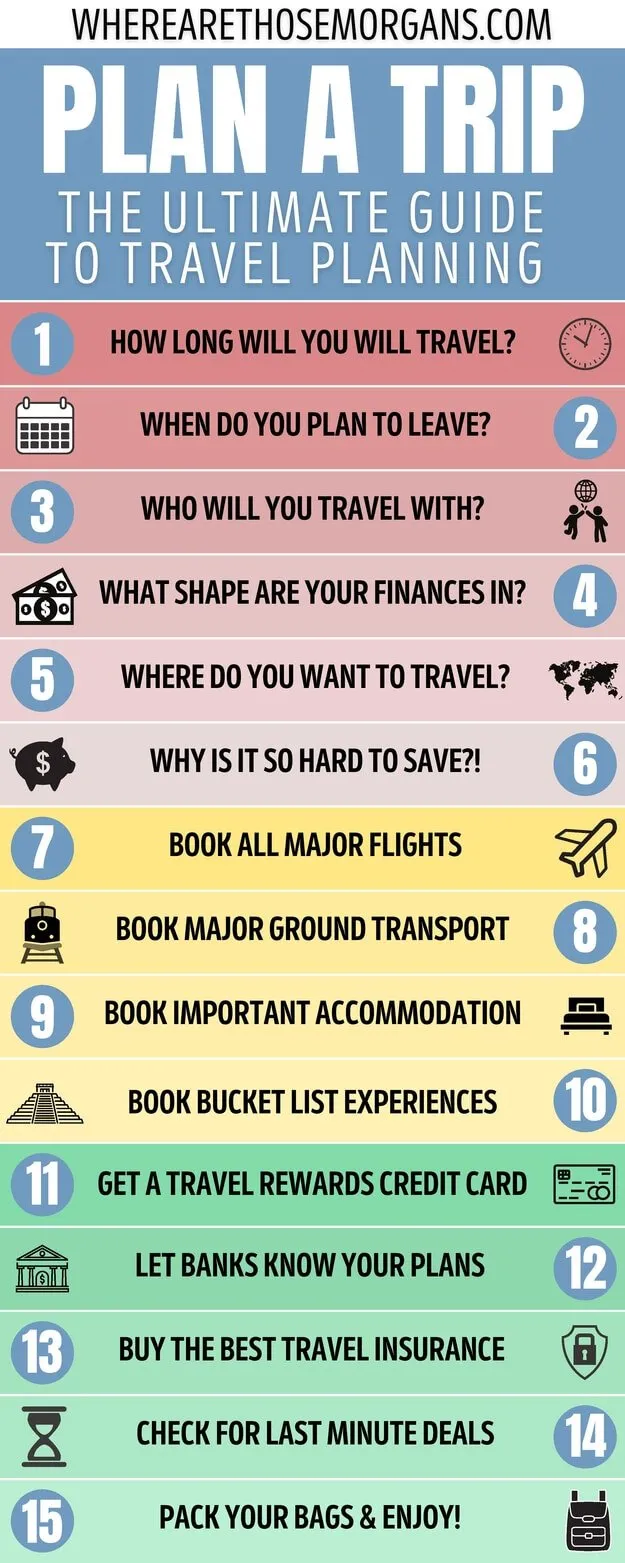
Section 1: Establish Your Travel Goals
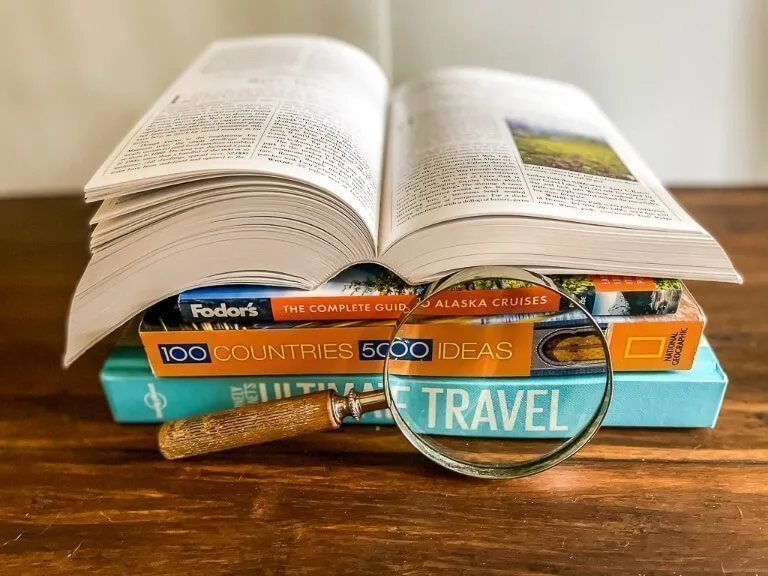
Let’s start at the beginning, the daydream stage.
You know it’s time for a vacation or a long term trip but right now you’re just floating ideas around.
Ask yourself these important travel planning questions (H and 5 W’s):
- How much time will you spend traveling?
- When do you want to leave?
- Who will you travel with?
- What shape are your finances in?
- Where in the world do you want to go?
- Why is it so difficult to save up for your trip?
This is one of our favorite parts of planning a trip because everything sounds wonderful! But before you can book or pack for your potential trip, you need to figure out the basics.
Research Is Key To Planning Effectively
The fundamentals of how to plan a trip begin and end with research.
Every aspect of your plans will require research, from booking flights to buying travel insurance and from packing your bags to visa requirements.
But research starts all the way back at the beginning, before e-tickets arrive in your iPhone wallet and you’re debating between packing your tan vs black shoes.
Research begins with deciding on the most basic of travel planning principles. But don’t confuse basic with a lack of importance. The goals you set at this stage will consequently shape your entire trip.
You will spend a lot of time on google, the same as we do before every trip. If you embrace the research you will do just fine.
By reading this post you are already well into establishing your travel goals and researching travel planning techniques.
That gives you a hand up over other travelers.
You will be more prepared and ultimately have a better trip. The first section of travel planning is designed for you to turn daydreams into actionable reality.
By the end of this section, you will know everything you need to know about the trip you’re going to take. Then, you can start booking!
Consider Your Travel Limitations
We don’t want to rain on your parade but it is critical at this point to manage your expectations and be aware of your travel limitations.
Every one of us is guilty of getting carried away in life, but when it comes to travel planning, be very careful not to take on more than you can chew. Or afford.
Our advice at this stage is to be honest and realistic about what you think is achievable.
- Can you realistically finance a trip to country X and city Y with your budget?
- Is it safe to go to hiking in National Park Z in Winter?
- Do you really want to travel solo or would you prefer company?
- Can you quit your job sooner and still afford your year around the world?
- Are you able to squeeze and extra few holiday days out of your job?

1. How Much Time Do You Spend Traveling?
The thrill of choosing where you want to go on vacation or long term travel is by far the most exciting part of planning a trip. There’s no question about that.
However, before you conjure up your dream Vietnam itinerary or US road trip route , the first piece of the planning puzzle is determining how much time you have on your side.
Time is one aspect of life no amount of money can control.
- On a short beach or hiking vacation from work, will you travel for 7 days, 10 days or 14 days?
- Are you able to take a 3 month sabbatical to backpack South East Asia?
- Or maybe you’ve been thinking about quitting your job to travel without an end date in mind?
- Are your dates flexible or do you have to stick to specific timeframes?
- Do you work remotely or at a physical location?
- Are the kids back in school on Monday morning?
Carefully consider the time you have available and remember there are implications to consider with the amount of time you allocate for your trip.
Example : You will need more money to finance a 4 month trip when compared to 2 months. It sounds obvious, but the point is to ensure you get the balance right between time and travel funds.
Once you establish the amount of time and any specific dates you have to play with, move onto the next planning steps.
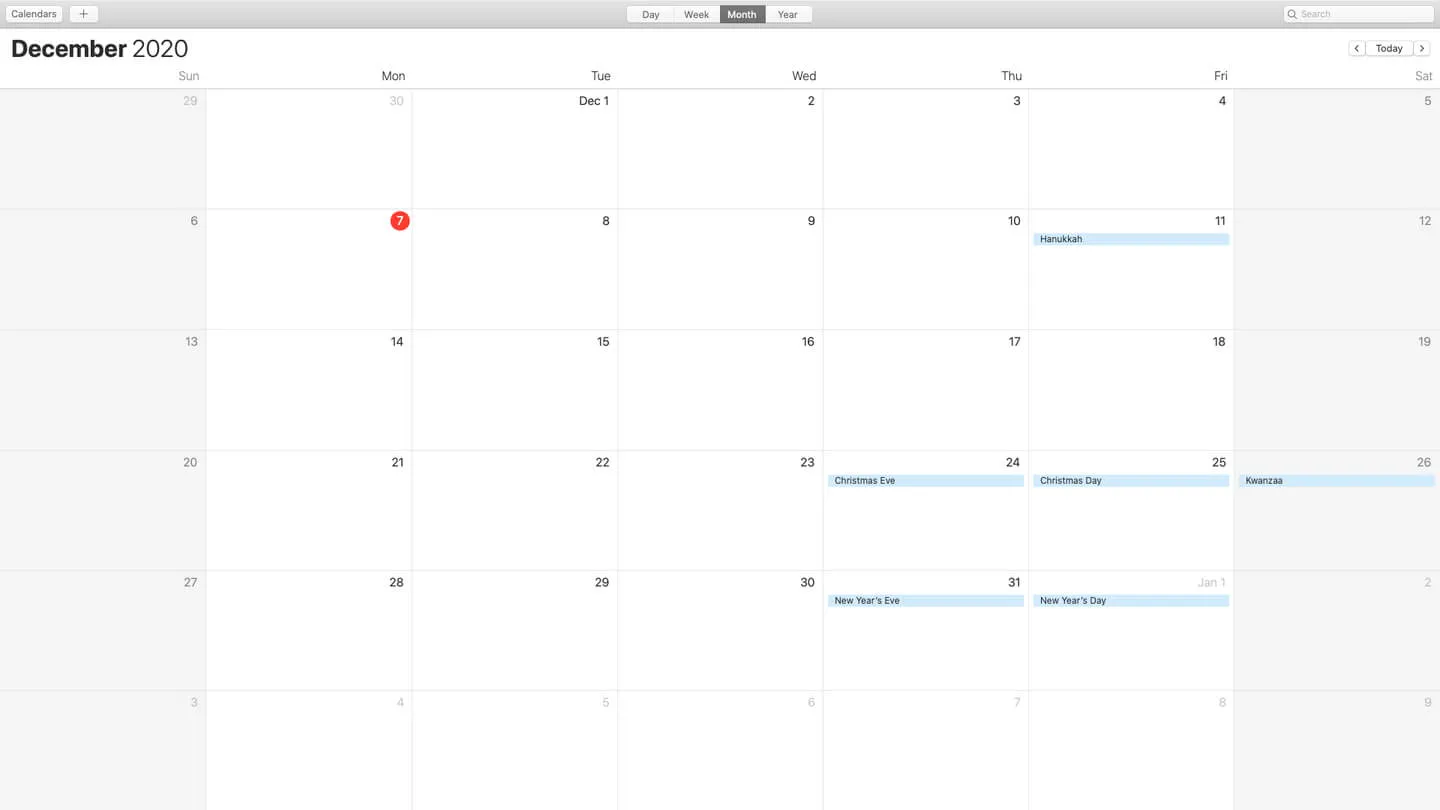
2. When Do You Plan To Leave On Your Trip?
The date you are aiming to leave on your trip is vitally important to your personal travel planning process.
Are you planning a trip way in advance? Or are you last minute planning? The subsequent steps will change focus depending on the answer to those questions.
For those planning a last minute spontaneous trip, you will need to double down and get to work.
Conversely, if you are planning a summer vacation that’s 6 months out, you can relax and take each of the plan a trip step slowly.
It is important to remember that people work more efficiently in different ways.
For us, Kristen works more efficiently when planning early and taking things at a gentle pace, whereas Mark works best under pressure with the clock ticking.
Timing Is Crucial
Consider the timing of your proposed trip.
You will have to account for high, shoulder or low season as well as weather conditions for the time of year you visit and finances will be impacted by how well you plan your leaving date.
Example : Your trip is shaping up to be a 3 week European adventure in Summer. You better believe it is going to cost you! Would you be better off planning to leave in Spring or Fall to suit your budget more appropriately?
If you plan to quit your job in 6 months and travel the world for a year, now is the time to get stuck into planning. A year is a long time and the world is a big place.
Leaving a trip like this until the last minute means you could risk missing out on once in a lifetime opportunities.
Working out the most effective time leave on your adventure gives you the framework to set achievable planning and financial goals .
Remind yourself of the 7 P’s of planning: Piss Poor Planning Promotes Piss Poor Performance.
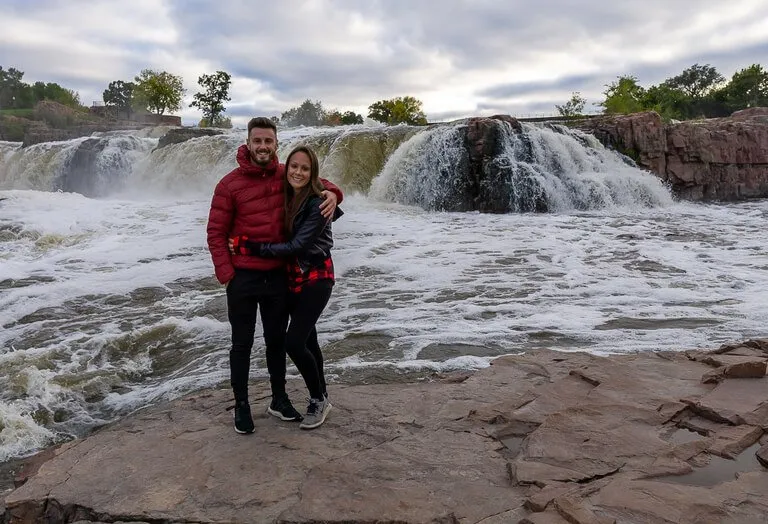
3. Who Do You Plan To Travel With?
Chances are high you already know exactly who you will travel with before you begin to plan a trip. Maybe you’re going on a family holiday or a romantic couples weekend getaway ?
In which case, your travel partners are nailed on. The same applies for us. We always travel as a couple which makes Step 3 obsolete when we plan a trip.
However, many travelers planning trips are undecided between exploring solo or with a friend.
Our world adventures have enabled us to meet hundreds of others traveling. Solo travelers and those traveling as couples or larger groups.
There are pros and cons to all types of travel, just like most things in life.
The important thing to understand for first time travelers who feel anxious about traveling solo is that you will meet people along the way. Even as a couple, you will meet dozens of other couples on longer trips, particularly in Asia and South America.
So, don’t be afraid to plan your dream trip if you don’t have anyone to travel with initially, you will make a ton of friends on the road.

4. What Shape Are Your Finances In?
Working out a rough travel budget is arguably the most important aspect of planning any trip. That remains true if you are leaving tomorrow or in a year.
Take a cautious approach rather than an overly optimistic approach. You will spend more money than you think, trust us on that one.
It’s better to have money left over than run out of cash a long way from home. We’ve seen it happen.
- How much money do you currently have saved up for your trip?
- How much money can you save between now and the date you plan to leave?
- Do you need to get a second job or a second income to bulk your budget out?
- Do you have any cash in reserve in case of emergency?
Before you start dreaming of your 2 week luxury beach vacation to the Maldives or 3 months backpacking through Australia and New Zealand, you need to be realistic about your budget.
Travel Smarter, Not Harder
A good rule of thumb is to consider yours destinations around your budget.
Instead, consider your budget and travel to a place where that same amount of money will allow you to have a much better experience.
See how much we spent in 1 month in Vietnam to use as a reference for travel costs.
If you are planning a short vacation, you will have much more control over finances. You know you’re going to get paid from your job again, so a splurge isn’t out of the question.
In contrast, long term travelers will constantly be checking finances. Once they leave for their trip – that digital bank balance value will decrease every single day until the end.
Travel Tip : When planning a trip around your budget, always always always leave some room for buffer in case of emergency. We’re all used to living to our means and it’s easy to plan down to the last penny but trust us, you never know when you might need a spare US$ 100.
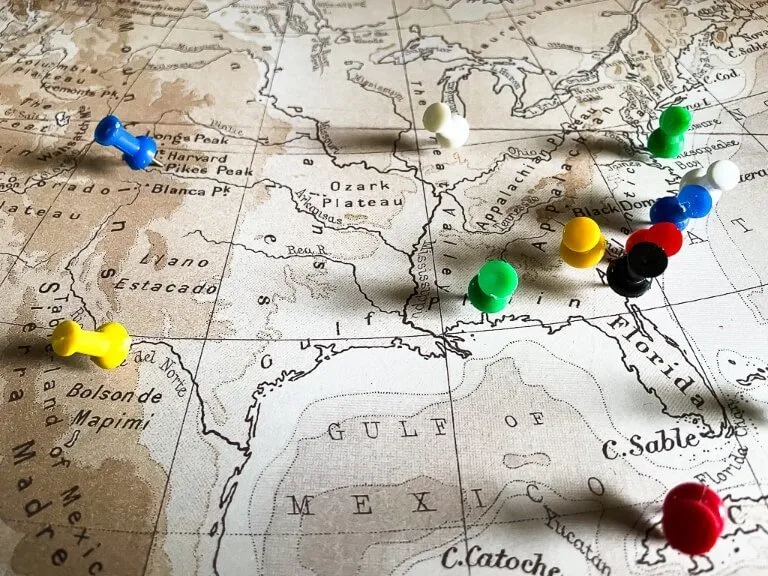
5. Where Do You Plan To Travel?
Now and only now, despite wanting nothing else but to start planning your travel itinerary. It is time to plan your travel destination and route.
You will thank us for leaving you hanging this long because now you have a firm grasp on your travel budget, whether you will be traveling alone or with a group, how long you can travel for and when you want to leave.
Here are some of our top travel inspiration suggestions :
- Grand Teton and Yellowstone National Parks in Wyoming, USA.
- Budapest is a wonderful European city break.
- New York State Parks like Letchworth and Buttermilk Falls are perfect day trips.
- The Atacama Desert in Chile is mind blowing.
- Los Angeles , San Francisco and San Diego are awesome cities to discover.
- Andalusia in Spain is a stunning region to explore.
- Pacific Coast Highway , Utah and South Dakota are epic road trips.
The beauty of leaving this step until you know your budget is having the ability to plan your vacation or itinerary with a clear understanding of which places are feasible and which places you will have to exclude based on price, distance, safety and so on.
Planning travel itineraries takes a lot of work. We find it to be our favorite and least favorite part of traveling – in equal measure! Excitement and frustration.
It is vital you consider public transport routes, airports, safety, hotel availability, time of year, activities on offer, food and so much more.
Choosing A Travel Route
A question we often get asked is: “How do you know where you want to go?”
We do something our ancestors have been doing for over 2000 years: Look at a map!
Seriously, buy a huge map and stick it on your wall. Study each continent and indicate places you would love to visit using pins or colored sticky notes.
If looking at maps doesn’t help, here are some excellent alternatives to find travel inspiration:
- Read the wide range of destinations we write about on our travel blog !
- Read other blogs too. There are hundreds of fantastic first hand resources on the internet written by people who have been to the places you want to visit.
- Change up your google searches to ‘the best place to travel in X year’ or ‘the most obscure travel destinations’.
- Be creative, look for specific events, festivals or concerts around the world.
Once you have a shortlist of dream destinations, fire up google maps and prepare to lose yourself for hours. Design mock travel itineraries lasting 10 days, 2 weeks, a month, 3 months or however long you plan to travel.

6. Why Is It So Hard To Save For Your Trip?
You’ve meticulously planned your next adventure. Now, you need to stump up the cash to pay for it.
Whether you are going on a one week trekking holiday, a one month live aboard scuba diving course or traveling through Africa and the Middle East for six months, you will need to save up enough money to pay for the pleasure.
You already worked out your finances and travel plans in steps 4 and 5, so you have an actionable target to reach. Is your departure date 3 months away? 6 months? A year?
However far ahead you plan to leave, you might need to put a savings process in place to make up the difference.
Saving for vacations or long term travel is HARD. Your excitement is at fever pitch but time seems to stand still. Days at work start to drag more and more the closer you get to the big day.
Be Disciplined
The key to financial success can be found in one simple word, Discipline .
It’s easy to start well with the best intentions but it’s equally as easy to lose focus. Put yourself on a strict no-spending regime if you don’t have the money in savings to pay for travel costs in advance.
Make judgement calls on every single expenditure – is it want or need? Do you want that thing or do you genuinely need it?
If it’s a want, don’t spend the money, save it. Be disciplined .
Once your bank account begins to swell, fight the temptation to ‘treat yourself’. If you think you won’t be tempted, think again.
That 80″ TV you wanted is only US$ 1,000 and you now have 10 of those saved for your trip – can you get by on US$ 9,000?
No you can’t! Put the TV back! Be disciplined .
Plan A Trip Section 1 Complete: Your Tentative Travel Plans Are In Place
You are officially one third of the way towards being travel ready.
There are more challenges to come but you’ve nailed down the hardest part of travel planning.
Narrowing down where to visit and formulating the perfect itinerary is by far the most difficult part of planning a trip for us.
The word perfect was used for a reason, we both have FOMO (fear of missing out) so it takes us an age to finalize our trips.
With the whole world as your travel option, deciding where to go and where not to go can be overwhelming.
Personally, we just take it one step at a time based on our budget and places on our travel bucket list. We systematically include and exclude places, activities and routes until we agree on a winning formula.
Do not feel disheartened when you think you’ve cracked your route and budget but for whatever reason it just doesn’t work out. Go back to the drawing board and start again fresh. You will end up with an even better itinerary.
Section 2: Take Action + Book
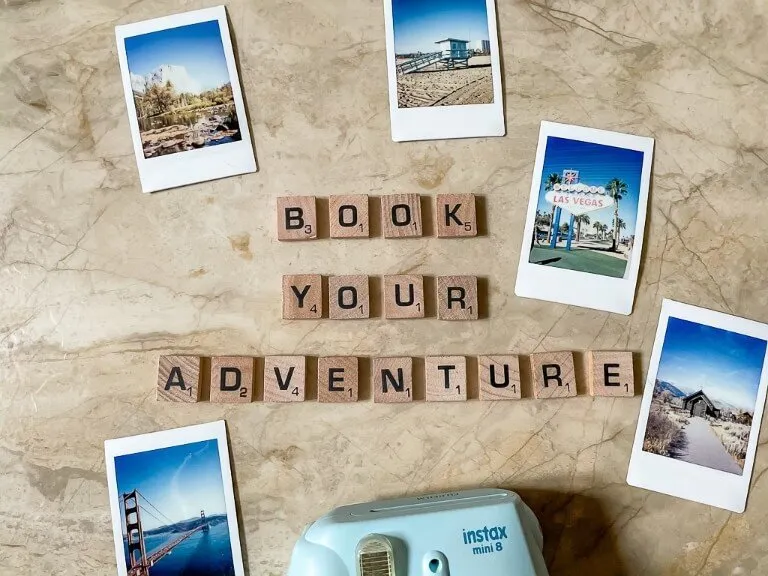
We can all daydream about vacations or backpacking the world for a year. Or imagine ourselves lounging on a beautiful powdery white sand beach in Thailand and hiking into the Grand Canyon .
But until you bite the bullet, until you commit by clicking the buy now button on flights and hotels, a dream is all it will be.
Once you take that giant leap, it becomes tangible.
How many times have you planned a travel route mentally and thought about how amazing it would be and all the things you would do on your trip only to snap back to reality in the office?
Be brave and courageous. Take the plunge and book the important elements of your travel plan. Does this sound like a good story?
“Well, I was going to book a life changing 3 month backpacking trip through South America, but didn’t bother in the end.” That sounds like missed opportunity to us!
Myths About Booking In Advance
Like many other things in life, travel planning gets easier with experience. You learn which aspects of the way you planned and booked your trip worked and which aspects caused problems or lost you money.
However, one thing even the most savvy or accomplished traveler doesn’t always get right is how much of the trip to book in advance.
Here’s the problem travelers face on every trip:
If you book in advance, you plan ahead, book all hotels, buses, trains, activities and flights on your trip.
But what happens? You have no flexibility. If you love a place, you can’t stay longer. If you hate a place, you can’t leave immediately.
And if you don’t book in advance, you plan nothing and have complete flexibility. But you spend all of your travel days booking the next place to stay that night or your flight the next day.
Last minute flights and hotels will have far fewer options and may have seriously inflated prices.
How To Successfully Book A Trip
Here are a few tips to help you book your next trip:
- Find the perfect balance between being organized and flexible.
- Book all of your major trans-continental long haul flights before you leave home.
- Book any hotel splurges you have identified.
- Book any bucket list activities (such as W Trek in Chile) in advance.
- Leave the rest of your trip open ended.
We meet travelers with binders full of confirmation documents who prefer to plan the entire trip down to the ground, even dinner reservations.
Then there are those who prefer to book nothing more than a one way flight and decide everything on the fly (pun intended).
There is no one size fits all best practice or answer to this relentless travel quandary. It depends entirely on your own preferred travel style.
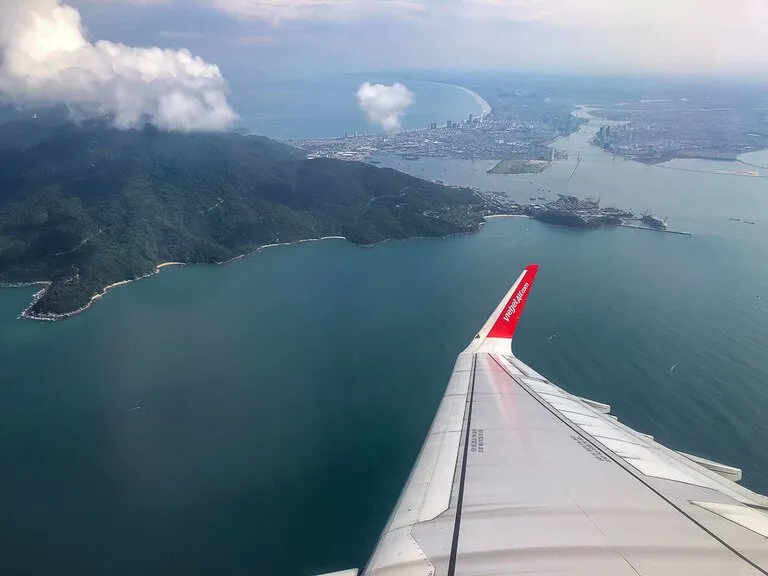
7. Book Your Major Flights To Seal The Deal
Now the real work can begin.
Booking your first flight is the single most exciting and nerve racking moment of travel planning. In one single moment of commitment, you turn your daydream into a reality.
There are numerous flight searching platforms and you can use any you prefer. We personally use – every time we fly and recommend to our friends and family: Skyscanner .
We’ve used each of the major flight search engines and we find Skyscanner to offer the easiest user experience, have the most flight options and consistently lowest prices.
But our favorite aspects of Skyscanner are having the ability (and flexibility) to search for flights by whole month and whole country.
Example: Let’s say you want to fly New York to London.
Instead of selecting an exact date with +/- 3 days (which is what most flight searches offer) you can select by whole month of May for example.
A flight calendar will show the prices of flights on every day that month and between all airports in New York / London.
Check flights with Skyscanner here and start searching for your next flight.
Avoid Flight Price Myths
Booking flights can go one of two ways:
- You prefer to search for a flight, find one at a price you feel is fair and book it.
- You are the type who prefers flight price roulette, playing the algorithm game.
But the thing is you can save money on flights if you put in some research and effort. That being said, there are a lot of myths and legends about booking flights.
Booking International flights on a Tuesday or domestic flights on a Sunday will save big money. Not necessarily true. Prices fluctuate many times a day, week and month.
Clearing cookies and searching incognito will save money. Unfortunately not, no evidence to support that.
Quick Tips On Booking Flights
Our number one tip for booking flights is to be flexible. That’s the way you will save big money.
Look at prices around the dates you want to fly using Skyscanner, you will see how drastically different they can be.
Book your long haul flights as far in advance as possible. The last thing you want is a mammoth cost on your flight home.
Keep an eye on prices 9 months in advance, 6 months 3 months in advance, 1 month in advance and last minute. Watch how much they fluctuate over time.
Research thoroughly, search regularly and build up patterns of prices.
Put flight alerts on specific flights of interest to you. You will receive notifications of changes.
If you see a flight you want and it’s cheap, book it! Don’t wait for it drop by US$ 5 because you’ll find it will go up by US$ 50 instead. Know the right time to pull the trigger.
Flight booking search engines are built on algorithms like everything else online. The key is not to outsmart them, just work them to your advantage.
READ MORE : How to book cheap flight when you travel

8. Book Ground Transport
Booking ground transport in advance depends on where in the world you are traveling, the timing of your trip, the length of your trip and how rigid and flexible you plan to travel.
Example : When we traveled 3 months in South America, we booked a 24 hour bus from Bariloche to El Chalten in Argentina before we left the UK. But we did not book any sleeper buses or trains in Vietnam in advance.
We visited Argentina in January, during Peak Season. Flights from Bariloche to El Calafate were expensive (and a bus to El Chalten is required) so we took the much cheaper bus.
The bus books up in advance and we wanted to guarantee seats so we booked in advance.
Conversely, we visited Northern and Central Vietnam in October and knew we would be able to jump on any bus or train we wanted. No need to sacrifice flexibility.
Most Cost Effective Transport Methods By Region
- Europe – Cheap budget flights with Ryanair, EasyJet etc between countries / Trains within countries.
- SE Asia – Cheap flights with Jetstar, VietJet, AirAsia, Scoot, LionAir, TigerAir etc between countries / Sleeper Trains & Buses within countries.
- South America – Flights hit and miss for price. We found Chile and Peru had cheaper flights than Argentina. Best way to get around is by Bus but be aware, some of them are LONG!
- North America – Road trip is the best way to explore. Buy a cheap second hand car or hire a car drive point A to B. Trains and domestic flights are expensive. Traveling by bus is a cheap option but not a great one.
The take home is to understand the region you plan to travel through.
How are public transport prices impacted by season? Variations in prices if booking in advance vs last minute?
Example : Let’s say you’re traveling Europe by train but not Interrailing. Booking trains in advance WILL save you money. Do not leave European train bookings until the last minute.
By researching and understanding these things, you can quite literally rescue your travel budget from total annihilation.
If you prefer to drive yourself around a new place to taking public transport, always check prices for hire cars with Rental Cars for most options and best value.

9. Book Accommodation
Booking accommodation can be both extremely rewarding and extremely frustrating.
Some travelers embrace the best deals hunt, whereas others despise losing time trawling through endless lists of hotel prices.
As with all other aspects of travel planning, the key is to find the right balance between how much time you invest and how much money you can save.
There are a limited amount of flights you can choose between, right?
It’s the opposite for accommodation, there are SO many options for where you will sleep at night, no matter where you travel.
If you let it, this process will overwhelm you within seconds. How do you choose between 1000 hotels? When do you stop searching for an even better deal?
The scenario of your trip will affect the benefits of booking hotels in advance.
Example : Beach vacations and resort hotel complexes can go either way. Sometimes you can pick up big money saving last minute deals. It’s a risk but it can pay off.
However, if you’re on a tight budget and backpacking for a month through Thailand in low or shoulder season, it would be worth turning up in person to negotiate a better deal.
Use Hotel Booking Search Engines
Something we find fascinating when we meet travelers on the road is the diversity of platforms everyone uses to book accommodation.
Some swear by Airbnb, others use Agoda or Hostelworld and a high proportion use Booking.com. Personally, we use Booking.com to book our hotels.
We have been using Booking for years and still to this day we are staggered by how many hotel owners pull faces at us or make comments like ‘wow, you guys must have that booking genius thing, this is the lowest price I’ve seen.
We do have Booking Genius Level 3 and you can have it too by simply creating a free account and booking your hotels with Booking.com .
The same applies to Hotels.com, Agoda, Airbnb, Priceline and many others. Find a hotel booking service you like, create an account and reap the loyalty benefits.
That’s not to say hotel search engines have the best prices period.
We ask certain hotels for a price directly and if it’s more than what we can see on our Booking.com app, we simply book a room on our app right at the check in desk.
Quick Tips For Booking Hotels
Similarly to booking ground transport at the trip planning stages, we only book certain hotels in advance before we travel.
Typically, we will book hotels as we go to allow total flexibility. However, there are three scenarios when we book hotels in advance:
- If we plan to visit a big city like London, New York City , Hong Kong or Dubai in shoulder or high season.
- When planning itineraries including rural N ational Park s with limited hotel options.
- Big splurges on a luxury hotel so our travel budget doesn’t take a huge mid-trip pounding.
When searching for hotels, always use filters and sorting to cut through the crap and display exactly what you are interested in.
Search engines by default will display hotels based on featured. So what is featured?
It is hotel search engines listing hotels in their own order, but we like to sort by user rating and review count.
If a hotel has 2,500 reviews and a guest review score of 8.7, we would add it to our shortlist.
Once we have enough hotels in a shortlist we look at their locations, nearby amenities, nearby major attractions and transport hubs etc.
READ MORE : How to book cheap hotels for travel
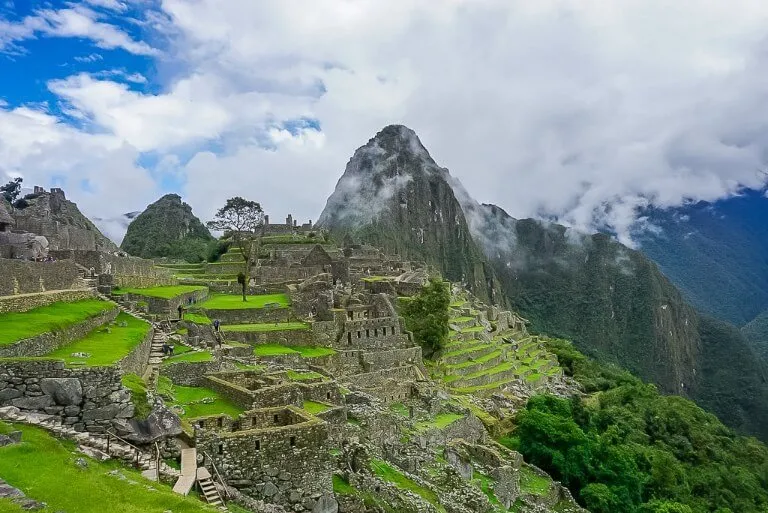
10. Book Bucket List Experiences
Your final bookings at this stage of planning your trip are reserved for any bucket list experiences.
You’ve planned a route through a country or continent, so you should know all of the bucket list places you will be visiting. However, unless you research thoroughly, there’s a small chance you might miss something.
Life is about learning from mistakes.
One of ours when traveling Europe was when we visited Interlaken and Grindelwald in Switzerland but we hadn’t researched things to do before hand.
So we didn’t know about the Jungfrau rack railway line through the Eiger to the top of Europe at 3,454m. Once we discovered it, we’d already spent our allocated budget which isn’t difficult in Switzerland.
Plan major activities ahead. Make a spreadsheet or a checklist, even book some ahead of time if you have to or prefer to plan your whole trip in advance.
The more planning you do in advance, the less you will miss on the road. There are times when you will have no choice but to plan months ahead.
A few examples are the W trek in Torres del Paine (Chile), Half Dome hike at Yosemite National Park (California) and hiking down the Narrows at Zion National Park (Utah).
Not planning ahead will result in missing something epic. If you don’t typically plan things like this in advance, now is the time to learn some new core skills.
Section 2 Complete: Major Bookings Are Made
You’re almost over the hill and it’s plain sailing from here. The hard work has paid off, now all that’s left is preparing and packing for the adventure that awaits you.
Booking flights, transport, hotels and activities is part of the travel planning experience.
Try to enjoy the process. If you feel overwhelmed at any point, step away for a few hours or days. That is a tried and tested method of successfully planning a trip.
There have been times where we’ve had to walk away from planning for a day or two.
Remember, you can book hotels anywhere at any time, you don’t always have to book your entire trip before you leave.
If there’s one particular leg of your journey where you can’t quite make transport work or there are no cheap hotels available, just go back a few steps and alter your route accordingly.
This is a common travel planning stumbling block.
It can be infuriating to have a route perfected, only for something not to work and find yourself back at the drawing board.
But consider this, would you rather be at home with this problem? Or in a foreign city with no idea where to go next, how to get there or where to sleep that night?
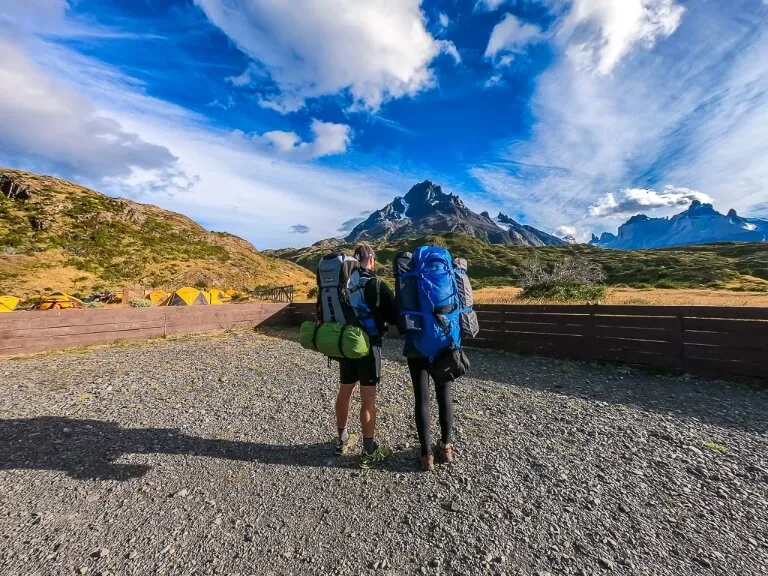
Section 3: Prepare And Pack
You’re on the home stretch. There are just a few important admin tasks to complete before you can finally say you are ready to leave on your trip.
Get stuck into these last few steps as soon as possible, tick the boxes, put your feet up and enjoy a nice cup of Yorkshire tea.
Section 3 of travel planning is about giving yourself the best return on your expenses, travel safety, insuring your property and packing the right gear for your trip.
It would be easy to switch off once you’ve secured your important bookings but you would be shooting yourself in the foot.
Instead, keep the ball rolling into this final section. Use the momentum to make the best choices possible as you complete your travel planning process.
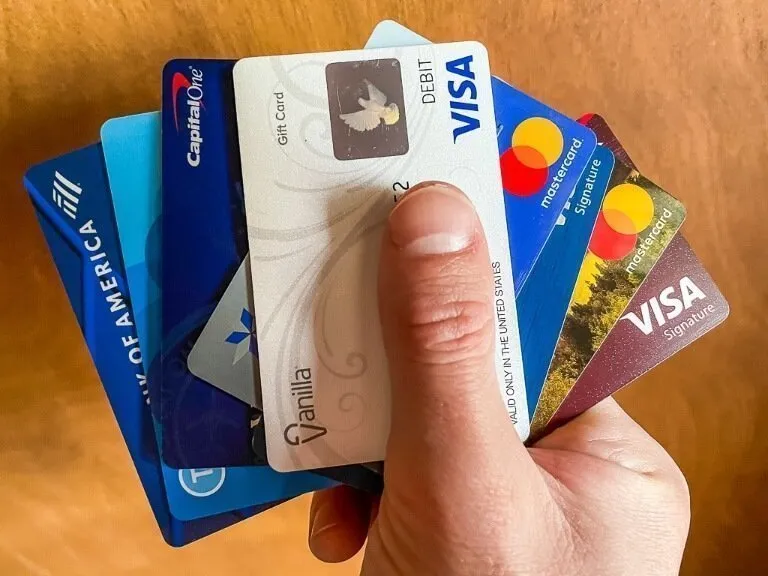
11. Travel Rewards Credit Cards
You might be from a country where paying with debit and credit cards is the norm. Heck, you probably even pay for things with your phone these days.
However, when you travel through certain regions, such as parts of South East Asia, you won’t always be able to pay for goods and services with your cards.
Cash is often king in developing countries or countries with few tourists.
Example : We spent a month traveling North/Central Vietnam and can count on 1 hand the amount of times we paid for anything using a credit card. In order to withdraw cash from ATM’s without incurring a fee, we used our travel rewards credit card.
So, aside from always carrying a handful of US dollars in cash as a safety net, here’s the best money saving advice for any trip you ever take abroad, limit the amount you use your debit card.
If you use your debit account, you can kiss goodbye to your travel budget. The local bank will charge you a fee and your bank at home will charge you a hefty fee. Double whammy. Not fun.
What To Do Before Your Trip
Sign up for a no foreign transaction fee on all withdrawals and purchases travel rewards credit card.
On longer trips you will be taking money out of ATM’s regularly. Local ATM withdrawals will yield better exchange rates than airport exchanges.
Always choose local currency when withdrawing money, not your home country currency.
Research the best travel rewards card before you leave on your trip. Residents of the US are fortunate because competition is fierce, which drives fantastic offers on travel credit cards.
At a minimum, you should be able to pick up a travel rewards credit card giving you 1.5% cash back on all purchases and withdrawals.
Some offer points instead of cash back, which can be saved and used to pay for a flight later in your trip. Look for any special points and bonuses for spending X amount of money in Y amount of time.
Choose the card that offers the best perks for your travel style.
Example : Bank A will give you 1,500 points bonus if you spend US$ 3,000 within 90 days. Those bonus points equal US$ 150 that you can put towards a flight.

12. Tell The Bank About Your Travel Plans
It would blow your mind if we told you the amount of people we meet traveling the world who have experienced blocked credit cards.
Blocked cards in turn lead to no money and expensive phone calls back home to unblock said cards.
The banks are doing it for your protection but when you’re stuck in the back of beyond and can’t pay for anything or withdraw money, you will be in trouble.
Example : You have a Bank of America checking account, a Capital One Venture travel rewards card and an American Express travel card, you need to tell every one of those banks what your rough travel plans are.
It doesn’t hurt to keep them updated as you travel because plans can change.
We will contact our banks each time we move to a new continent and give them a rough idea of the countries we intend to visit, plus an estimated duration. Remember the 7 P’s of planning.
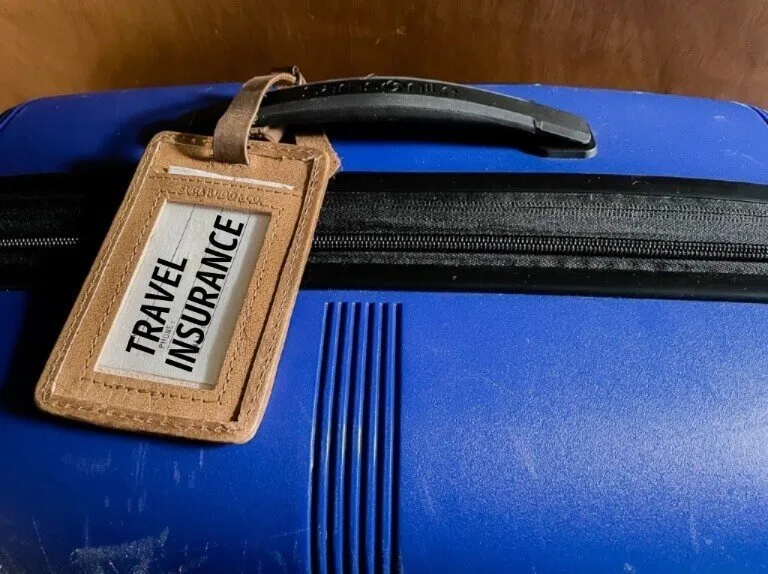
13. Get Travel Insurance
We’re not going to frighten you into buying travel insurance with gruesome tales. We’re simply going to say it is not worth the risk to travel without insurance.
You may be debating running the risk because insurance can be expensive.
We understand, it’s a bit of a blow when you think all your costs are nailed on the head and you see how much travel insurance is going to set you back.
But believe us, skipping it is not the smart move. Especially if you are backpacking for longer periods. Knock on wood, nothing serious has happened to us yet on the road.
No lost backpacks, no serious injuries, no muggings. But that could change at any moment, all it takes is being in the wrong place at the wrong time.
Travel Insurance Is Worth The Peace Of Mind
Could you imagine the cost involved in being repatriated to America with a serious illness or injury sustained on the other side of the planet? No insurance would leave you in financial despair for years.
Example : You’ve just bought a brand new Sony A7R IV mirrorless camera for US$ 3,000 for your trip and you lose it or have it stolen on your first day traveling. You don’t have insurance. Imagine the pain!
There are plenty of travel insurance providers, such as Allianz, AIG and Travelex but right now we use and highly recommend World Nomads.
The company was created by travelers for travelers and they will tailor an insurance plan to suit your trip. You can get a free quote and choose between Standard or Explorer plans.
Be sure to do your own research but use World Nomads as your reference. See if you can get better coverage.
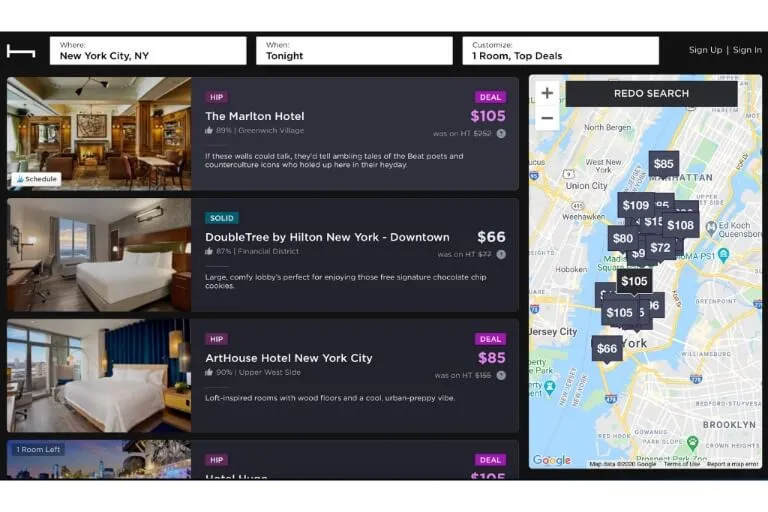
14. Check For Last Minute Travel Bargains
This is where we hope you don’t find an amazing last minute deal that’s US$ 200 cheaper than what you booked back in section 2.
Last minute deals are a gamble. Sometimes they pay off but mostly, they don’t. Never leave any of your major flight routes or bucket list activities until the last minute.
It’s always worth keeping an eye on hotel and flight prices, even for things you already booked that may include free cancellations or free changes to the booking.
If you can pick up the odd money saving last minute bargain, great. But don’t leave your entire trip to chance.
In the days leading up to your departure, check prices on (non-major) flights, trains, hotels and tours that you are interested in taking.
There are always flash sales on things, it’s often a case of being fortunate enough to stumble across them at the right time.
Here’s something important to remember if you started planning your trip months ago. High season might have moved into shoulder season or low season in a place you want to go.
But be aware that the opposite may also occur.
You could have planned on last minute deals because when you were researching the prices looked amazing, only to have unwittingly transitioned into peak season for the place you are visiting.
Last minute deals are going to cost you and your options will be greatly diminished in peak season.
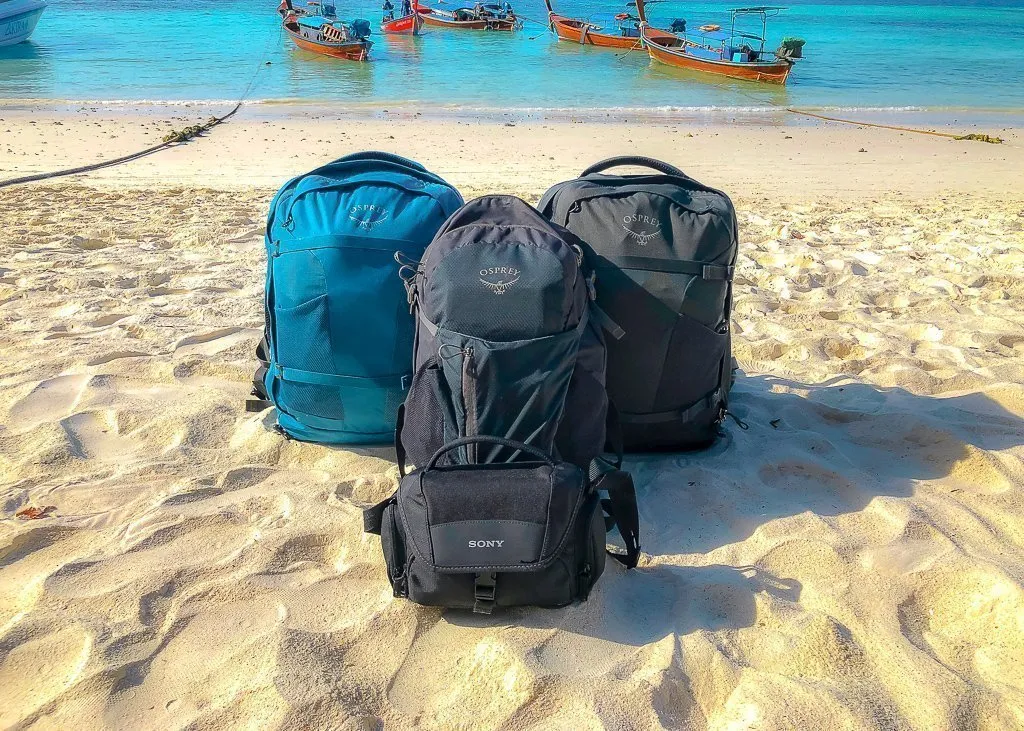
15. Pack Yours Bags It’s Time To Leave
Your travel plans are in place, you’ve booked the important things and prepared efficiently. All you need to do now is pick the perfect backpack and fill it with the right gear for your destination.
If you think you can handle traveling with just 40L of space which means you can carry on to flights, don’t miss this review of our top rated travel backpack, Osprey Farpoint 40 .
For those who will carry a larger main pack and need a second smaller backpack to carry on, read our review of the innovative and versatile backpack perfect for travel photographers: Peak Design Everyday Backpack .
We won’t go into a huge amount of detail with this planning step. Instead, you can find all you need to know about packing for your trips in our detailed Travel Packing resource.
Here are a few addition packing tips for your trip:
- Be sure to pack according to where you’re going. If there are varying climates on your itinerary, pack for warm and cold weather conditions, even if that means taking a bigger backpack.
- Pack carefully, make sure every single item is fit for multi-purpose use. Do not pack fancy shirts and jeans if you will only use them once, you will end up throwing them out half way through your trip.
- We all have our own dress styles and preferences but our best advice for packing is to take plenty of comfortable gear.
Just remember, the most successful travel planners are the ones who can accept when they need to take a few steps back in order to take many steps forward.
More Travel Resources
- E-Books – Shop our travel guidebooks
- Packing List – The ultimate travel packing list
- Gifts – The best gifts for a traveler
Want more travel content? Head to our Travel Blog to discover new destinations around the world.
We hope these 15 steps help you plan the perfect trip!
Please let us know if you have any questions about this trip planning guide in the comments below.
Happy Travels ,
Mark and Kristen
Enjoy This Trip Planning Guide? Pin It For Later!
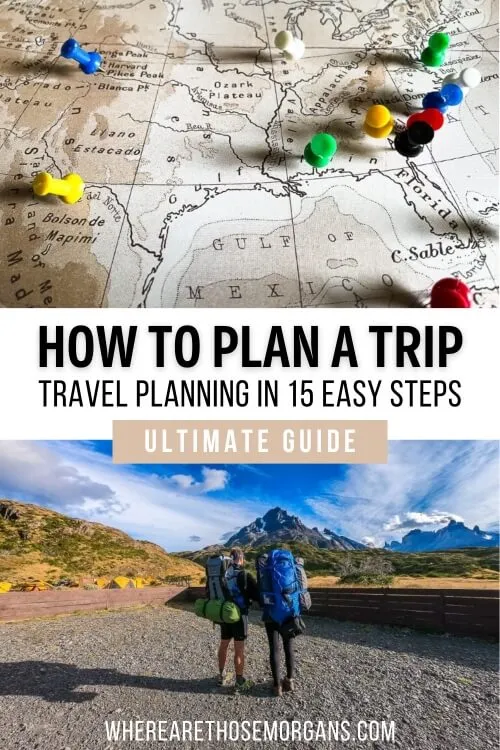
Note : This article contains affiliate links. When you make a purchase using one of these affiliate links, we may earn a small commission at no extra cost to you.
All Rights Reserved © Where Are Those Morgans, LLC. Republishing this article and/or any of its contents (text, photography, maps, graphics, etc.) in whole or in part is strictly prohibited.
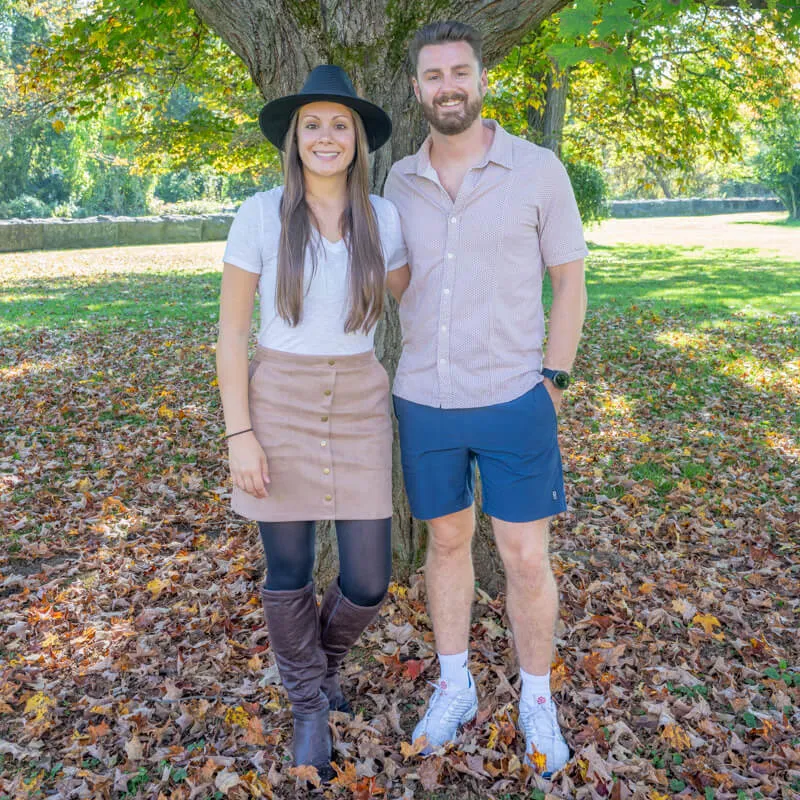
Mark and Kristen Morgan are travel, hiking and photography experts. Over the last 6 years traveling full time, they have explored more than 40 countries and 30 US states.
Where Are Those Morgans has been featured in USA Today, Gestalten, Get Your Guide, CityPASS and Condé Nast Traveler along with various other publications. Read more about us .
Leave a Comment Cancel reply
Subscribe to our newsletter
Get the latest in travel straight to your inbox
Click here to subscribe

10 Ways to Make Trip Planning Less Stressful
Our recommendations for how to best navigate all the complexities of travel in 2022..
- Copy Link copied

Island destinations like Maui may be in high demand this year, but there are ample ways to get there stress-free.
Photo by Shutterstock
Has there ever been a more confusing time to plan a trip? Between skyrocketing flight prices and a mishmash of mask rules , we understand how overwhelming it can be. So, we’re giving you the tools you need to plan an amazing trip minus the stress and find the sweet relief that comes from being on the road again.
Here are 10 ways to be better prepared when you travel in 2022.
1. Book your trip at least two to three months in advance (more if you’re going abroad).
Most experts agree that booking a flight at least four weeks in advance—ideally six to eight weeks before travel—is key to getting a better deal and could save travelers as much as 51 percent, reports AFAR aviation correspondent Barbara Peterson . Use the calendar feature offered on search sites such as Google Flights ; this allows travelers to see the entire span of airfares and select dates when pricing is lowest. Traveling a day before or after your originally intended travel dates can often get you a cheaper fare, says Naomi Hahn, vice president of strategy for booking site Skyscanner .
Increased demand for outdoor travel (along with more flexible work schedules) have all but eliminated the shoulder and off-seasons in some popular destinations, reports AFAR’s Bailey Berg. “Top destinations are seeing a double-digit increase in hotel demand compared to prepandemic—spring shoulder season might be gone in some places,” says Nancy Lien, a public relations manager at Expedia Group, adding that it’s a trend we’ll likely see continue this fall. So once you know where you want to go, make a reservation. Cancellation policies are still fairly generous.

Low-cost carriers such as French Bee can get you to Europe for less.
Courtesy of French Bee
2. Set your expectations: Flights are expensive right now, but deals still exist.
Have you been on the receiving end of an $800 round-trip airfare between, say, New York and Orlando lately? You’re not alone: Thanks to rising fuel prices and increased travel demand, booking app Hopper predicts domestic airfares will average $360 round-trip by May, up from $235 at the start of 2022. International tickets will top out at $940 on average in June, up from $650 in January, Hopper says. And jet fuel prices, the airlines’ second highest expense after labor, are likely to stay high due to the impact of the Russia-Ukraine war on energy supplies, reports Peterson.
But don’t be deterred. We recently broke down all the ways you can still find a good flight deal in 2022 . If you’re willing to take a chance on a new low-cost airline like Breeze and Avelo , they offer cheaper flights that usually undercut the going rate on major U.S. carriers. Expect to pay à la carte for bags, seat selection, etcetera. Pro tip: JetBlue has the biggest economy seats among domestic airlines, and La Compagnie offers business class for half the price between Newark and France.
3. Use a travel agent
If ever there was a time to find and use a trusted travel advisor, now is the time. Between frequently changing pandemic travel restrictions, possible last-minute changes and cancellations, and the fact that many of us have, er, kind of forgotten how to flex our travel muscles, a travel advisor will be your best ally.
So, where do you start? How do you find a good travel advisor? We may be a bit biased, but we think the travel specialists that make up AFAR’s Travel Advisory Council are some of the best in the biz. We reach out to them constantly for their expertise, and there’s no reason you shouldn’t either. Another great resource is Virtuoso , a consortium of luxury travel advisors and a network that can help you identify travel consultants who specialize in the destination or type of trip you are planning, whether it’s a family vacation , wellness escape, Europe trip or a safari in Africa.

Arches National Park in Utah has a new reservation system for 2022.
4. Make that national park/museum/dinner reservation ASAP.
We’re in a Type A planner’s world right now. If there are activities you’d be sad to miss during your travels—be it a museum or dinner reservation, a theme park or show—book them as soon as you have your flight confirmation. Restricted or timed entry began in popular spots like Barcelona and Venice before the pandemic, and it has become a way to limit the number of guests to a safe, comfortable level, including at some of the nation’s popular national parks .
Know that not all serendipity is lost. You might be able to score a day-of pass because of canceled reservations, if you’re willing to take the risk.
5. Pack a COVID test—or several—and talk through your “what if I get COVID abroad” plan.
If you go abroad, you risk getting stuck there for upwards of two weeks if you test positive for COVID. (As of April 21, the U.S. still requires a negative COVID test within one calendar day of entering the country.) Rather than stress about it, come up with a game plan. Make sure you know where you would stay during that additional time abroad were an unfortunate positive test to occur.
As for testing procedures, there are ample ways to get COVID tests for international travel . Some hotels will offer free COVID tests to guests, especially in popular tourist destinations such as Mexico, and some domestic and international airports (in Costa Rica and Germany among others) will run COVID tests onsite.
We recommend you pack at least two CDC-approved COVID self-tests per person in case you cannot find a testing location in a pinch.
6. Check your passport expiration date (and make sure you have a vaccine passport , too).
Remember that you still need at least six months of validity on your passport to enter or leave most countries. Thankfully, if you need to renew your passport, wait times have come way down from last year . We’ve created a handy guide for how to expedite your passport application if you find yourself in a rush. If you do need a new passport, the good news is you may score a cool new “Next Generation Passport” when you get one.
While traveling, you never know when you might be asked to show proof of vaccination status. Make sure to have the physical copy of your vaccine certificate , a photo of it handy on your mobile device, and a digital version just to cover all your bases. Also make sure to be up to the date on the latest vaccine requirements. Some destinations require that travelers be boosted if they received their one- or two-dose vaccine regimen more than nine months prior.
7. Buy travel insurance.
There are many reasons your trip can get derailed these days, and travel insurance can really help defer the added costs of changes and cancellations. Additionally, some countries actually require visitors to buy travel insurance before arriving. Travel credit cards may offer trip cancellation or rental car protection—here’s our guide to the cards with the best insurance . If you want the absolute gold standard in COVID-era coverage, Covac Global will evacuate and repatriate you if you have a positive PCR test and at least one symptom. We have also broken down how “ Cancel for Any Reason” travel insurance can (and can’t) help you on your travels. For some, it may very well be worth the added cost.
8. Pack added patience: staffing shortages remain an issue.
Labor shortages remain an issue at hotels, resorts, restaurants, and airlines throughout the world. What this means for travelers: It’s important to be respectful and patient, because the staff that remains is trying to meet sky-high demand. The lines might be longer at the airport and there could be ample delays. Take a deep breath and remember what a privilege it is to travel at all. Hospitality is a two-way street: If you expect staff to be good hosts, be a good guest as well.
9. Get TSA PreCheck, Global Entry, or Clear.
Staffing shortages apply to airports and TSA, too—especially during a travel high season like spring break. Airports big and small aren’t immune; we’ve seen 60-minute waits at airport security everywhere from Newark Liberty International to Denver and New Orleans. We highly recommend that you get to airports earlier than normal (if your normal is two hours before flight time, good job!). Your other best bet is to apply for one of three tiers of security “fast pass”:
- TSA PreCheck: $85 for five years . Good if you mostly travel within the United States. Children age 12 and under can get through on a guardian’s PreCheck.
- Global Entry: $100 for five years . Worth the upgrade if you plan to go abroad at least once in the year. It includes PreCheck, speeds up your wait time at Customs, and is very easy to renew online. Note that if you travel with children, they’ll all need Global Entry as well.
- Clear: $179 annually. Gets you through security even faster than PreCheck. If your home airport is one of the dozens with Clear and you’re a frequent traveler, the program is worth signing up for on top of Global Entry and TSA PreCheck.
Read on for more about the differences between TSA PreCheck, Global Entry, and CLEAR.
10. If you’re nervous about the fluctuating mask mandates , play it safe and just wear a mask.
When in doubt, break out that N95 or KN95. We have compiled the best face masks for travel . Peace of mind can go a long way.
>>Next: How to Calm Your Travel Anxiety

Winter is here! Check out the winter wonderlands at these 5 amazing winter destinations in Montana
- Travel Tips
How To Plan A Trip: An Easy Travel Planning Guide
Published: November 16, 2023
Modified: December 28, 2023
by Rodi Kindle
- Plan Your Trip
Introduction
Planning a trip can be both exciting and overwhelming. Whether you’re embarking on a solo adventure, a romantic getaway, or a family vacation, careful planning is crucial to ensure a smooth and enjoyable experience. From choosing the perfect destination to booking flights and accommodations, travel planning requires careful consideration of various factors. In this easy travel planning guide, we’ll walk you through the essential steps to plan your trip effectively.
Travel planning allows you to make the most of your time and resources, ensuring that you don’t miss out on any must-visit attractions or experiences. By following these recommendations and tips, you’ll be well-prepared to create a memorable and stress-free travel itinerary.
Whether you’re a seasoned traveler or this is your first time planning a trip, this guide will provide you with valuable insights and practical advice to help you make the most out of your travel experience. So, let’s dive into the essential steps of travel planning and get ready for your next adventure!
Step 1: Determine your destination
The first step in planning any trip is deciding on the destination. Consider your interests, preferences, and the type of experience you’re seeking. Do you want to relax on a tropical beach, explore historic landmarks, immerse yourself in a different culture, or embark on an outdoor adventure? Research various destinations and make a list of places that align with your interests.
Factors to consider when choosing a destination include the time of year, weather conditions, and your budget. If you’re traveling during peak tourist season, popular destinations may be crowded and prices for flights and accommodations could be higher. Alternatively, visiting during the off-peak season may offer more affordable options and fewer crowds.
Think about the distance you’re willing to travel and the transportation options available to reach your chosen destination. Consider whether you prefer a domestic or international trip, and take into account any visa requirements or travel restrictions.
Furthermore, take the time to research the safety and political situation of your potential destinations. Check for any travel advisories or warnings issued by your government, and read reviews from other travelers to gain insight into the current state of your desired location.
Ultimately, the choice of your destination should align with your interests, budget, and the kind of experience you’re looking for. Once you have narrowed down your options, you can move on to the next step of the planning process.
Step 2: Set a budget
Setting a budget is an essential step in travel planning as it helps you determine how much you can realistically spend on your trip. Consider your financial situation and allocate funds for transportation, accommodations, meals, activities, and any other expenses that may arise during your journey.
Start by determining how much you are willing to spend overall on your trip. This will give you a rough estimate of how much you can allocate to each aspect of your travel, such as flights, accommodation, and daily expenses.
Research the average costs of your chosen destination to get an idea of how much you need to budget. Take into account the cost of living, transportation, attractions, and dining options in the area. Consider whether you prefer a luxurious or budget-friendly experience, and adjust your budget accordingly.
Be sure to factor in any additional expenses such as travel insurance, visa fees, and transportation to and from the airport. It’s also important to set aside some extra funds for unexpected expenses or emergencies that may arise during your trip.
Consider ways to save money during your trip. Look for deals on flights and accommodations, consider alternative modes of transportation such as buses or trains, and opt for budget-friendly dining options like street food or local eateries.
Keep track of your expenses as you plan and throughout your journey. This will help you stay within your budget and make adjustments if necessary. Use online travel budget calculators or mobile apps to assist you in managing your finances effectively.
Remember, setting a budget allows you to plan your trip within your means and ensures that you can fully enjoy your travel experience without financial stress. So, take the time to assess your expenses and allocate your funds wisely before moving on to the next step of travel planning.
Step 3: Decide on the duration of your trip
Deciding on the duration of your trip is an important step in travel planning as it helps you determine how much time you can allocate to each destination and activity. Consider your schedule, budget, and the attractions you want to explore.
Start by assessing the amount of time you can take off from work or other commitments. Take into account any travel restrictions or visa limitations that may affect the duration of your trip.
If you have a specific destination in mind, research the recommended duration for visiting that location. Some places may require a longer stay to fully experience their culture, attractions, and activities, while others can be explored in a shorter timeframe.
Consider your travel pace and personal preferences. Do you prefer a leisurely trip with plenty of downtime, or do you prefer a fast-paced adventure packed with sightseeing? Factor in travel time and any jet lag that may affect your energy levels upon arrival.
If you plan to visit multiple destinations, allocate sufficient time for each location based on your interests and the activities you wish to engage in. Remember to account for travel time between destinations and consider the feasibility of fitting everything into your desired timeframe.
Keep in mind that a longer trip may require a larger budget due to increased accommodation, dining, and transportation costs. Balance your desire to spend more time in certain locations with the overall cost of your trip.
Once you have determined the duration of your trip, you can move on to the next steps of travel planning, such as researching and gathering information about your chosen destinations and booking flights or transportation.
Remember, the duration of your trip should align with your interests, budget, and available time off. So, take the time to carefully consider these factors to ensure a well-balanced travel experience.
Step 4: Research and gather information about your destination
Researching and gathering information about your destination is a crucial step in travel planning. It allows you to familiarize yourself with the local culture, attractions, customs, and practical information essential for a smooth and enriching travel experience.
Start by reading travel guides, online resources, and blogs to gather insights about your chosen destination. Look for information about popular tourist sites, local customs, transportation options, safety precautions, and visa requirements.
Check out travel forums and social media groups to connect with fellow travelers who have been to your destination. Seek their advice, recommendations, and firsthand experiences to gain valuable insights and tips.
Research the best time to visit your destination. Consider factors such as weather conditions, peak tourist seasons, and any festivals or events that may be happening during your trip. This information will help you plan your itinerary and determine which attractions or activities to prioritize.
Learn about the local culture and customs. Familiarize yourself with local greetings, etiquette, clothing norms, and any specific cultural practices or taboos. This will help you show respect to the local community and avoid any cultural misunderstandings.
Research transportation options within your destination. Find out about public transportation systems, availability of rental cars, and the cost of taxis or ridesharing services. Knowing how to get around will help you save time and money during your trip.
Look for recommendations on accommodations, dining options, and local cuisines. Read reviews and compare prices to find the best options that fit your preferences and budget. Consider the proximity of your accommodation to major attractions and amenities.
Make a list of the top attractions and activities you want to experience. Prioritize them based on your interests and available time. Research entry fees, operating hours, and any restrictions or reservations required for certain attractions.
By conducting thorough research and gathering information about your destination, you’ll be well-prepared to create an itinerary, make informed decisions, and make the most out of your travel experience.
So take the time to delve into the details and immerse yourself in the charm and wonders your chosen destination has to offer.
Step 5: Book flights or transportation
Once you have determined your destination and gathered information about it, it’s time to book your flights or transportation. This step is crucial, as it often affects your budget and can impact the overall logistics of your trip.
If you’re planning to travel by air, start by researching flights to your destination. Use flight comparison websites or online travel agencies to find the best deals and compare prices. Consider factors such as flight duration, layovers, and airline reputation.
Flexibility in your travel dates can help you find cheaper flights. Consider flying during off-peak seasons or on weekdays, as prices tend to be lower during these times. Be sure to book your flights well in advance to secure the best rates.
If you’re traveling by other means of transportation, such as trains, buses, or ferries, research the schedules, fares, and availability. Look for reliable booking platforms or official websites of transportation providers to make your reservations.
Consider the proximity of your accommodation to the airport or transportation hubs. It’s convenient to choose accommodations that offer easy access to public transportation or provide shuttle services to and from the airport.
When booking your flights or transportation, it’s essential to consider travel insurance. Travel insurance provides coverage for unexpected events such as flight cancellations, delays, or medical emergencies. Consider purchasing travel insurance to protect yourself and your investment.
Before finalizing your bookings, double-check the details to ensure accuracy. Verify the departure and arrival dates, times, and terminals. Make note of any luggage restrictions or additional fees that may apply.
Once your flights or transportation are booked, it’s a good idea to set up travel alerts or notifications to stay updated with any changes or delays. Save electronic copies of your itineraries, e-tickets, or reservation confirmations for easy access during your trip.
Booking your flights or transportation early ensures that you have the best options available and allows you to focus on other aspects of your travel planning.
So, take the time to research and make your bookings, ensuring a smooth and seamless journey to your destination.
Step 6: Find accommodation
Finding suitable accommodation is a crucial step in travel planning as it directly impacts your comfort and overall experience during your trip. Here are some steps to help you find the perfect accommodation.
1. Determine your budget: Set a budget for your accommodation. Consider how much you are willing to spend per night and allocate a portion of your overall trip budget to accommodations.
2. Research the options: Use online travel platforms and booking websites to explore various types of accommodations. Consider factors such as location, amenities, and reviews from previous guests.
3. Consider your preferences: Determine the type of accommodation that suits your needs. Options include hotels, hostels, guesthouses, vacation rentals, or even unconventional options such as homestays or house swaps.
4. Location: Consider the location of the accommodation in relation to your planned activities and attractions. It’s convenient to stay in a central location or near public transportation for easy access to the places you want to visit.
5. Read reviews: Take the time to read reviews from previous guests to get an understanding of the quality and service provided by the accommodation. Look out for any common issues or concerns mentioned in the reviews.
6. Compare prices: Compare prices of different accommodations that fit your criteria. Consider any added charges or fees, such as resort fees or taxes, when comparing prices to ensure you are getting the best value for your money.
7. Book in advance: Once you have found the perfect accommodation, book it as soon as possible to secure your reservation. Popular accommodations can fill up quickly, especially during peak seasons.
8. Check the cancellation policy: Before making your reservation, carefully read and understand the cancellation policy of the accommodation. This will help you navigate any potential changes or cancellations in your travel plans.
9. Contact the accommodation: If you have any specific requests or questions, reach out to the accommodation directly. This could include inquiries about special amenities, room preferences, or any other concerns you may have.
10. Confirm your booking: After making your reservation, double-check your booking confirmation for accuracy. Take note of any important information, such as check-in and check-out times or any special instructions given by the accommodation.
By following these steps, you can find the perfect accommodation that meets your needs, budget, and preferences, ensuring a comfortable and enjoyable stay during your trip.
So take the time to explore your options and secure your ideal accommodation in advance.
Step 7: Create an itinerary
Creating an itinerary is an essential step in travel planning as it helps you organize your time, prioritize your activities, and make the most out of your trip. Here’s how to create an effective itinerary:
1. Identify your must-see attractions: Make a list of the top attractions or activities you don’t want to miss in your chosen destination. Research their opening hours, ticket prices, and any specific requirements.
2. Consider time and logistics: Take into account the duration of your trip and the time it takes to travel between attractions. Be realistic about how many activities you can fit into each day, allowing for breaks and downtime.
3. Prioritize your interests: Determine your main areas of interest – whether it’s historical sites, museums, outdoor activities, or cultural experiences. Allocate more time for the activities or attractions that align with your interests.
4. Plan for flexibility: While it’s important to have a schedule, leave room for spontaneity and unexpected discoveries. It’s impossible to predict everything, so allow yourself time to explore and embrace new experiences.
5. Group activities by proximity: Cluster activities or attractions that are located close to each other. This will help you maximize your time and reduce travel time between destinations.
6. Consider the local culture: Take into account any cultural or religious practices that may affect the opening hours or availability of certain attractions. Plan your itinerary accordingly to make the most of your visit.
7. Explore local cuisine: Include time for trying local dishes and exploring different dining options. Research popular local foods or restaurants in each area you plan to visit and add them to your itinerary.
8. Pace yourself: Avoid overloading your itinerary with too many activities in a short amount of time. Give yourself time to relax and enjoy the surroundings. Remember, quality experiences are better than rushing through a long list of attractions.
9. Utilize travel apps and resources: Make use of travel apps or websites that offer itinerary planning tools or suggestions for your destination. These resources can help you create a well-structured and efficient itinerary.
10. Be mindful of your energy levels: Take into consideration your own energy levels and travel preferences. Avoid cramming too many strenuous activities in a row, and allow for rest or leisurely exploration.
Remember that an itinerary is a tool to guide you, but it’s okay to deviate from the plan if you discover new opportunities or if unexpected circumstances arise. Flexibility and spontaneity can lead to unexpected joy and memorable experiences.
So, take the time to create a thoughtful and well-balanced itinerary that allows you to fully enjoy your trip and make the most out of your chosen destination.
Step 8: Pack your bags
Packing your bags is a crucial step in travel planning, ensuring that you have everything you need for a comfortable and enjoyable trip. Here’s how to pack efficiently:
1. Make a packing list: Create a comprehensive packing list to ensure you don’t forget any essentials. Include clothing, toiletries, travel documents, electronics, and any other items you may need.
2. Check the weather: Research the weather conditions of your destination during the time of your visit. Pack appropriate clothing and accessories, such as jackets, hats, or sunscreen, to suit the climate.
3. Pack versatile clothing: Opt for clothing items that can be mixed and matched easily. Choose neutral colors and versatile pieces that can be dressed up or down to maximize outfit options while minimizing luggage weight.
4. Consider local customs: Take into account the cultural or dress norms of your destination. Pack appropriate clothing that respects local customs, especially if you plan to visit religious sites or conservative areas.
5. Pack travel-sized toiletries: To save space and comply with carry-on restrictions, transfer your toiletries into travel-sized containers. Remember to adhere to airline regulations regarding liquid quantities.
6. Organize your belongings: Use packing cubes or separate bags to categorize and organize your clothes and belongings. This will not only keep your suitcase tidy but also make it easier to find what you need during your trip.
7. Keep important documents together: Gather all your travel documents, including passports, tickets, accommodation reservations, and any necessary visas. Keep them in a secure and easily accessible place.
8. Pack essential electronics: Bring along the necessary electronics for your trip, such as smartphones, cameras, chargers, and adapters. Consider the voltage requirements of your destination and pack the appropriate adapters.
9. Don’t forget medication and first aid: If you take any prescription medications, ensure that you have an ample supply for the duration of your trip. Pack a basic first aid kit with essentials like band-aids, pain relievers, and any necessary medications.
10. Travel with essential valuables: Keep your valuable items, such as cash, credit cards, and jewelry, in a secure bag or pouch that you can carry with you at all times. Consider using a money belt or a hidden travel wallet for added security.
Remember to pack light and avoid overpacking, as it can be cumbersome and may incur additional luggage fees. Consider doing a trial pack beforehand to ensure that everything fits and that your luggage is within weight restrictions.
By following these packing tips, you’ll be well-prepared for your trip, ensuring that you have everything you need while avoiding the stress of overpacking. So, pack smart and travel with convenience and peace of mind.
Step 9: Plan your meals and dining options
Planning your meals and dining options is an important step in travel planning, especially if you’re a food lover or have specific dietary requirements. Here’s how to make the most of your culinary experiences during your trip:
1. Research local cuisine: Familiarize yourself with the local cuisine of your destination. Look for signature dishes, traditional specialties, and popular food markets or street food scenes. Researching local cuisine beforehand allows you to anticipate and embrace the flavors of your chosen destination.
2. Make a dining wish list: Create a list of restaurants, cafes, or food stalls that you’re interested in trying. Read reviews, consult travel guides, or seek recommendations from locals and fellow travelers. Prioritize your list based on your preferences and budget.
3. Consider dietary restrictions: If you have specific dietary restrictions or allergies, research restaurants or eateries that cater to your needs. Look for places with gluten-free, vegetarian, or vegan options, and ensure that you communicate your dietary requirements clearly when ordering.
4. Explore local markets: Visit local markets or supermarkets to immerse yourself in the food culture of your destination. Purchase fresh ingredients, local produce, or unique snacks to enjoy during your trip. It’s a great way to experience the local lifestyle and culinary offerings.
5. Learn basic phrases: If you’re traveling to a destination with a different language, learn basic phrases related to dining, such as “hello,” “thank you,” and “menu.” This will help you communicate your preferences and dietary needs to restaurant staff.
6. Embrace street food: Street food can offer some of the most authentic and delicious culinary experiences. Research popular street food markets or vendors in your destination. Follow local recommendations and observe cleanliness and hygiene practices when selecting street food options.
7. Be open to culinary adventures: Don’t be afraid to try new dishes or flavors. Push yourself outside your comfort zone and embrace new culinary experiences. You may discover unexpected favorites and create memorable food memories.
8. Consider meal timings: Take into account local dining customs and meal timings. Some cultures have specific meal times, such as a siesta or late-night dining. Adjust your plans accordingly to ensure you don’t miss out on local dining experiences.
9. Allow for spontaneity: While it’s good to have a plan, allow room for spontaneous dining experiences. Leave a few empty meal slots or explore local recommendations from friendly locals or fellow travelers you meet along the way.
10. Stay hydrated and practice food safety: Drink plenty of water, especially in warmer climates, and be mindful of food safety practices. Wash your hands regularly, opt for bottled water in areas with unsafe tap water, and choose restaurants or street food vendors with a good reputation for cleanliness.
By planning your meals and dining options in advance, you can truly savor the flavors and culinary delights of your destination. So, research, embrace, and indulge in the local food scene during your trip.
Step 10: Prepare necessary travel documents
Preparing the necessary travel documents is a crucial step in ensuring a smooth and hassle-free trip. Here’s what you need to do:
1. Check your passport: Ensure that your passport is valid for at least six months beyond your planned travel dates. If it’s expiring soon, renew it well in advance to avoid any last-minute complications.
2. Apply for visas: Research the visa requirements of your destination country. Check if you need a visa and apply for it early to allow sufficient processing time. Follow the instructions provided by the consulate or embassy and submit all required documents.
3. Organize travel insurance: Travel insurance provides crucial coverage in case of medical emergencies, trip cancellations, or lost belongings. Research and purchase a travel insurance policy that suits your needs and provides adequate coverage for the duration of your trip.
4. Make copies of important documents: Make photocopies or take pictures of your passport, visa, travel insurance, and other important documents. Leave copies with a trusted person at home and keep digital copies accessible while traveling.
5. Check entry requirements: Research and familiarize yourself with the entry requirements of your destination. Check if you need to present return tickets, proof of accommodation, or other supporting documents upon arrival.
6. Research health and vaccination requirements: Check if there are any specific health requirements or vaccination recommendations for your destination. Consult your healthcare provider or a travel clinic to ensure that you are up to date on any necessary vaccinations.
7. Register with your embassy: Consider registering with your home country’s embassy or consulate at your destination. This allows them to provide assistance or contact you in case of emergencies or unexpected situations.
8. Check travel advisories: Stay updated with any travel advisories or warnings issued by your government for your destination. Adjust your travel plans accordingly and be aware of any safety or security concerns.
9. Prepare a travel wallet: Organize all your travel documents in a secure travel wallet or folder. This makes it easy to access them when needed and helps keep them safe and organized throughout your journey.
10. Share your itinerary: Inform a trusted family member or friend about your travel plans. Share your itinerary, contact details, and any important information with them. In case of emergencies, they will know how to reach you and provide necessary assistance.
By preparing and ensuring that you have all the necessary travel documents in order, you can travel with peace of mind and avoid any potential complications or delays. So, take the time to check and organize your travel documents prior to your departure.
Step 11: Make necessary reservations and bookings
Making necessary reservations and bookings is an important step in travel planning to secure accommodations, activities, and transportation during your trip. Here’s what you need to do:
1. Book accommodations: Based on your research and preferences, make reservations for your accommodations in advance. Consider factors such as location, amenities, and budget. Popular accommodations can fill up quickly, so ensure you book early to secure your desired options.
2. Reserve transportation: If you plan to use public transportation or rent a car at your destination, make any necessary reservations in advance. Look for deals or discounts and ensure your transportation arrangements align with your itinerary.
3. Purchase attraction tickets: For popular attractions, consider purchasing tickets in advance to skip the long lines and secure your entry. Many attractions offer timed entry or online ticket options that allow for a more seamless experience.
4. Arrange for guided tours: If you’re interested in guided tours or activities, book them in advance to secure your spot. This allows you to plan your itinerary more effectively and ensures availability for popular tours or experiences.
5. Reserve dining options: If you have specific restaurants or dining experiences in mind, make reservations ahead of time, especially for popular or highly sought-after establishments. Booking in advance guarantees you a table and avoids disappointment.
6. Consider transportation between locations: If you plan to visit multiple destinations during your trip, book transportation tickets or passes between locations. This could include flights, train tickets, or intercity bus passes.
7. Research and book special experiences: If you’re interested in unique experiences such as cooking classes, adventure activities, or cultural performances, research and make the necessary bookings in advance. These experiences often have limited availability.
8. Check cancellation policies: Before finalizing any bookings, make sure to review the cancellation policies. Life is unpredictable, and having flexibility in your reservations can be beneficial in case of any unforeseen changes in your travel plans.
9. Stay organized: Keep a record of all your reservations, confirmations, and receipts in a centralized place for easy reference. This helps ensure a smooth travel experience and allows you to stay organized throughout your trip.
10. Double-check details: Before your departure, double-check all your reservations and bookings to ensure accuracy. Confirm dates, times, and any specific instructions provided by the service providers.
By making necessary reservations and bookings in advance, you’ll have peace of mind knowing that your important travel components are secured, allowing you to focus on enjoying your trip to the fullest.
So take the time to plan and make your necessary reservations, ensuring a well-prepared and smooth travel experience.
Step 12: Plan for transportation at your destination
Planning for transportation at your destination is an important step in travel planning to ensure smooth and convenient travel within the area. Here’s how to navigate transportation options effectively:
1. Research transportation options: Familiarize yourself with the available transportation options at your destination. This may include public transportation systems such as buses, trains, or trams, as well as taxi services, ridesharing apps, or bike-sharing programs.
2. Learn about local public transportation: Understand the local public transportation system, including routes, schedules, and fares. Study maps of subway or bus routes and identify key stops or interchanges that will be relevant to your itinerary.
3. Consider purchasing travel passes or cards: Depending on your length of stay and anticipated usage, determine if it’s worth purchasing travel passes or cards that offer unlimited or discounted rides on public transportation. These passes can save you time and money.
4. Plan for airport transfers: If you’re arriving at an airport, research and decide on the most convenient mode of transportation to your accommodation. Options may include airport shuttles, public transit, or pre-arranged private transfers.
5. Check for ridesharing or taxi services: If you prefer more flexibility or convenience, look into ridesharing apps or taxi services available at your destination. Check if they are widely used and reliable for getting around.
6. Consider walking or cycling: Depending on the location and infrastructure, walking or cycling may be a feasible and enjoyable mode of transportation for shorter distances. Research pedestrian-friendly areas and bike rental options if applicable.
7. Navigate driving regulations: If you plan to rent a car at your destination, familiarize yourself with local driving regulations, including license requirements, traffic rules, and parking availability. Research and book car rentals in advance to secure the best rates.
8. Stay informed about disruptions or closures: Check for any planned closures or disruptions to public transportation routes or services during your travel dates. Stay updated through official transport authority websites or mobile apps to avoid any inconvenience.
9. Embrace local culture and etiquette: Be respectful of the local culture and etiquette when using public transportation. Familiarize yourself with any unwritten rules, such as offering seats to elderly or pregnant passengers, and follow local customs for purchasing tickets or validating passes.
10. Stay safe and be aware of scams: Use trusted transportation services and be cautious of potential scams. Avoid unlicensed taxis, be mindful of your belongings, and stay vigilant while using public transportation, especially in crowded areas.
By planning for transportation at your destination, you’ll be able to navigate the area efficiently and maximize your time exploring the attractions. So, research your options, consider convenience and cost-effectiveness, and choose the transportation modes that best suit your needs.
Step 13: Research local customs and etiquette
Researching the local customs and etiquette of your destination is an important step in travel planning. Understanding and respecting the cultural norms of the place you’re visiting can enhance your travel experience and help you connect with the local community. Here’s what you should do:
1. Learn basic greetings: Familiarize yourself with common greetings and phrases in the local language. Learning to say “hello,” “thank you,” and “excuse me” shows respect and can help break the ice in your interactions with locals.
2. Dress appropriately: Respect the local dress code and customs. In some cultures, modest attire is expected, especially when visiting religious sites or conservative areas. Research the clothing norms and pack accordingly to avoid any unintended cultural offense.
3. Respect religious customs: If your destination has religious traditions, familiarize yourself with the customs and practices related to them. Follow any dress codes or guidelines when visiting religious sites, and be mindful of appropriate behavior and photography restrictions.
4. Observe local customs and traditions: Familiarize yourself with local customs and traditions, such as greetings, gestures, or table manners. Understanding and respecting these cultural nuances can enrich your interactions with locals and demonstrate your appreciation for their way of life.
5. Be aware of gestures and body language: Gestures and body language can vary across cultures and may have different meanings or interpretations. Research common gestures to avoid any unintentional misunderstandings or offense. When in doubt, observe and follow the lead of locals.
6. Respect personal space: Different countries and cultures have varying concepts of personal space. Be mindful of personal boundaries and avoid unnecessary physical contact unless it’s customary or welcomed in the local culture.
7. Follow local dining etiquette: If you plan to dine at local restaurants or with locals, be aware of proper dining etiquette. Pay attention to table manners, serving customs, and any specific traditions, such as tasting a dish before adding seasoning.
8. Know appropriate tipping practices: Research the tipping customs of your destination. In some countries, tipping is expected, while in others, it may not be common practice. Understand the appropriate amount and the preferred method of giving tips.
9. Respect local customs and traditions: Be mindful of and respect local customs, festivals, and traditions. Familiarize yourself with any practices or events happening during your visit, and observe them respectfully, even if you don’t fully understand them.
10. Smile and be polite: A friendly demeanor, a smile, and basic politeness can go a long way in any culture. Approach interactions with locals with an open and respectful attitude, and be open to learning from their customs and traditions.
By researching and embracing the local customs and etiquette, you can show respect for the local culture, connect with the community, and create meaningful experiences during your trip.
So take the time to learn and appreciate the customs of your destination, and enjoy your journey with cultural sensitivity and understanding.
Step 14: Make a checklist of essentials to bring
Making a checklist of essentials to bring is a crucial step in travel planning to ensure you have everything you need for a comfortable and stress-free trip. Here’s how to create a comprehensive checklist:
1. Travel documents: Include your passport, visa, travel insurance documents, identification cards, and any necessary permits or licenses for your destination.
2. Money and cards: Bring sufficient cash in the local currency and consider carrying a mix of payment options, such as credit cards, debit cards, or a travel money card. Don’t forget to notify your bank and credit card companies of your travel plans to avoid any issues with your cards.
3. Medications and prescriptions: Pack any necessary medications, along with copies of prescriptions or doctor’s notes. If you have specific medical conditions, consider wearing a medical ID bracelet or carrying relevant medical information in case of emergencies.
4. First aid kit: Include a basic first aid kit with items such as adhesive bandages, antiseptic wipes, pain relievers, antihistamines, and any special prescriptions or medical supplies you may need.
5. Clothing and accessories: Pack clothing suitable for the climate and activities at your destination. Include underwear, socks, comfortable shoes, weather-appropriate attire, swimwear, and any specialized gear required for activities such as hiking or skiing.
6. Toiletries and personal care items: Bring travel-sized toiletries, including toothbrush and toothpaste, shampoo and conditioner, soap or body wash, moisturizer, sunscreen, and any essential personal care items you use on a daily basis.
7. Electronics and chargers: Don’t forget your essential electronics, such as phone, laptop or tablet, camera, chargers, adapters, and power banks. Consider bringing a portable Wi-Fi device or SIM card if you need internet access on the go.
8. Travel accessories: Include a travel adapter, travel pillow, lightweight towel, reusable water bottle, earplugs, eye mask, and any other accessories that enhance your comfort during the journey.
9. Entertainment and reading materials: Pack books, magazines, or e-readers to keep you entertained during travel or downtime. Don’t forget to bring headphones or earphones for listening to music or watching movies.
10. Miscellaneous items: Consider items such as a travel lock, a universal sink plug, a portable umbrella, a reusable shopping bag, a pen and notepad, and any other personal items that you find essential or useful in your day-to-day routine.
Remember to tailor your checklist based on your specific needs, the nature of your trip, and the destination you’re visiting. Keep in mind any restrictions or guidelines in place for carry-on luggage or liquids when packing.
By using a checklist, you can ensure that you have all the essentials you need for a comfortable and organized trip. So take the time to create a comprehensive checklist, double-check it before departure, and enjoy a worry-free journey.
Step 15: Ensure travel safety and security
Ensuring travel safety and security is a vital step in travel planning to protect yourself and your belongings during your trip. Here’s what you should do:
1. Research the destination: Familiarize yourself with local safety and security conditions of your destination. Check travel advisories or warnings issued by your government, stay updated on current events, and be aware of any potential risks or concerns.
2. Secure your accommodations: Choose accommodations in safe areas and research their security measures. Consider factors such as secure locks, in-room safes, and 24/7 reception or security staff.
3. Protect your belongings: Take precautions to protect your belongings from theft or loss. Use luggage locks, carry a theft-proof bag, and be mindful of your surroundings. Avoid displaying expensive items and keep your valuables secured in a hotel safe or a hidden travel wallet.
4. Use reliable transportation: Opt for licensed transportation services and be cautious when using public transportation, especially in unfamiliar areas. Research reputable taxi companies or use ridesharing apps that have a reliable track record.
5. Stay connected: Ensure you have a way to stay connected with family, friends, or emergency contacts during your trip. Share your itinerary with a trusted person and keep them updated about your whereabouts.
6. Register with your embassy: Consider registering with your home country’s embassy or consulate at your destination. By doing so, they can provide you with important updates or assistance in case of emergencies or unexpected situations.
7. Practice caution with strangers: Be cautious when interacting with strangers and avoid sharing personal information or details about your travel plans. Use common sense and trust your instincts when approached by unfamiliar individuals.
8. Use secure Wi-Fi connections: Be cautious when using public Wi-Fi networks, especially for accessing personal accounts or making financial transactions. Whenever possible, connect to secure and password-protected networks or use a trusted virtual private network (VPN) for added security.
9. Stay informed about local laws: Research and familiarize yourself with the local laws and regulations of your destination. Be respectful of local customs, traditions, and social norms to avoid unintentional offenses or legal issues.
10. Purchase travel insurance: Travel insurance is essential for protecting yourself against unforeseen events or emergencies. Make sure your insurance policy provides coverage for medical expenses, trip cancellations, and lost or stolen belongings.
Always prioritize your personal safety and security during your travels. Stay alert, be aware of your surroundings, and take necessary precautions to mitigate risks. Remember, being proactive and prepared can greatly contribute to a safe and enjoyable travel experience.
So, take the time to ensure travel safety and security, and embark on your journey with confidence and peace of mind.
Step 16: Enjoy your trip!
After all the planning and preparations, it’s finally time to embark on your much-awaited trip! Here are some tips to help you make the most of your travel experience:
1. Embrace the adventure: Approach your trip with an open mind and a spirit of adventure. Embrace new experiences, try local cuisine, and immerse yourself in the local culture.
2. Stay flexible: Despite careful planning, unexpected situations may arise. Stay flexible and adapt to any changes or detours that come your way. Sometimes, the most memorable experiences happen when plans change.
3. Engage with the locals: Interact with the locals and learn about their customs, traditions, and way of life. Engaging with the local community can provide unique insights and create meaningful connections.
4. Seek off-the-beaten-path experiences: While popular tourist attractions are worth visiting, don’t be afraid to explore lesser-known places or hidden gems. You may stumble upon hidden treasures and have a more authentic experience.
5. Take breaks and relax: Travel can be exhilarating but also exhausting. Allow yourself time to rest and relax. Take breaks from sightseeing, enjoy leisurely meals, and recharge to fully appreciate your journey.
6. Capture memories: Take photos, keep a travel journal, or create videos to capture the memories of your trip. These mementos will allow you to relive your experiences and share them with others.
7. Try new activities: Step out of your comfort zone and try new activities that are unique to your destination. Whether it’s learning to surf, taking a cooking class, or going on a thrilling adventure, these experiences can create lifelong memories.
8. Stay mindful and respectful: Remember to be respectful of the local customs, traditions, and environment. Practice responsible tourism, minimize your impact on the environment, and leave a positive impression wherever you go.
9. Stay present in the moment: Put away your devices and take time to fully experience your surroundings. Be present in the moment, savor the sights, sounds, and flavors around you, and create meaningful connections with the places you visit.
10. Embrace the unexpected: Travel is full of surprises and the unexpected. Embrace and appreciate the unexpected moments or detours that come your way, as these can often lead to the most incredible and memorable experiences.
Remember, the purpose of your trip is to enjoy, relax, and create lifelong memories. So, be open to new experiences, embrace the unknown, and allow yourself to fully enjoy the journey.
Wishing you a fantastic trip filled with exploration, adventure, and unforgettable moments!

- Privacy Overview
- Strictly Necessary Cookies
This website uses cookies so that we can provide you with the best user experience possible. Cookie information is stored in your browser and performs functions such as recognising you when you return to our website and helping our team to understand which sections of the website you find most interesting and useful.
Strictly Necessary Cookie should be enabled at all times so that we can save your preferences for cookie settings.
If you disable this cookie, we will not be able to save your preferences. This means that every time you visit this website you will need to enable or disable cookies again.
- Destinations
- Tours and Attractions
- Travel Tips
18 Steps to Plan Your Next Trip or Vacation

It’s the same story every time. Inspired by photos from that friend who travels way more than you, you close your laptop late one night and declare to no one but your houseplants that you will plan an amazing trip, dang it! Cut to 2 months before departure and you realize you haven’t actually accomplished anything on your grand travel plans besides bookmarking 857 tabs for Airbnbs with really cool shower curtains.
Look, we get it. Life gets busy. Your tab-addicted brain tricks you into thinking pinning ideas onto your digital vision board counts as making progress. Meanwhile, your sweet houseplants have been waiting far too patiently to hear back on the details about this theoretical epic getaway.
Let us help you out. Ahead, we’ll walk through the key practical steps for, you know, actually planning a killer vacation from start to dreamy finish. We’ll tackle honing in on a destination, picking dates, building an itinerary that takes your FOMO and spins it into JOMO, booking flights and lodging so you have more than a screenshotted confirmation code and more.
Follow along for tips to turn that digital vision board into a slam dunk of an IRL adventure. One that doesn’t involve touring 12 countries in 36 hours thanks to poor planning. Seriously, do it for your dear houseplants.
Let’s begin!
Step 1: Choose a Destination
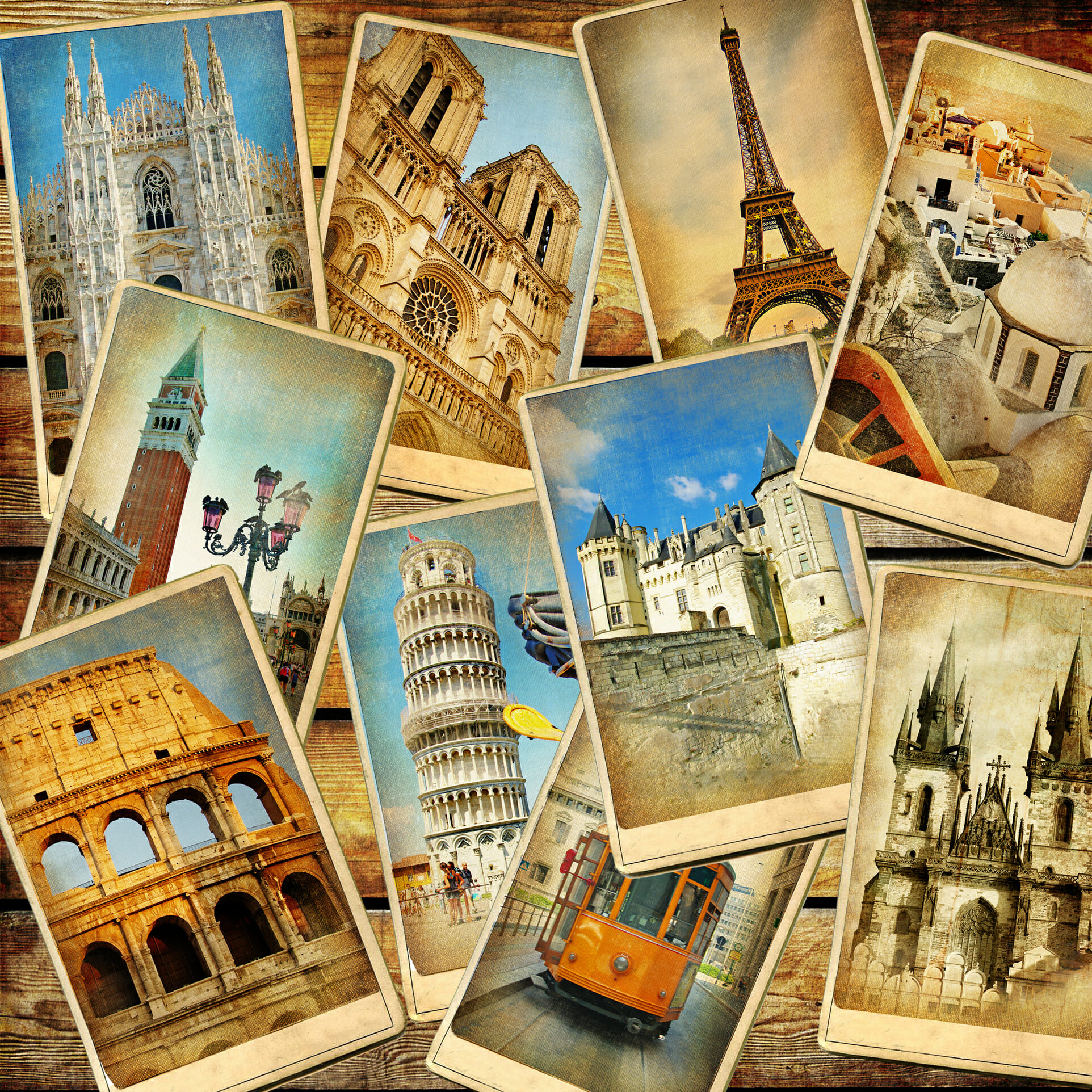
The first step to planning a trip is choosing a destination. This may seem like an obvious first step, but it is important to take the time to carefully consider where you want to go.
Consider your personal interests and preferences, as well as any practical considerations, such as your budget or the time of year you plan to travel.
Research your desired destination thoroughly to learn about the local culture, activities, and accommodations.
With a clear destination in mind, you can begin to plan the rest of your trip, including transportation, accommodations, and activities.
Making the effort to choose the perfect destination will help ensure that your trip is both enjoyable and memorable.
Step 2: Determine a Length for The Trip
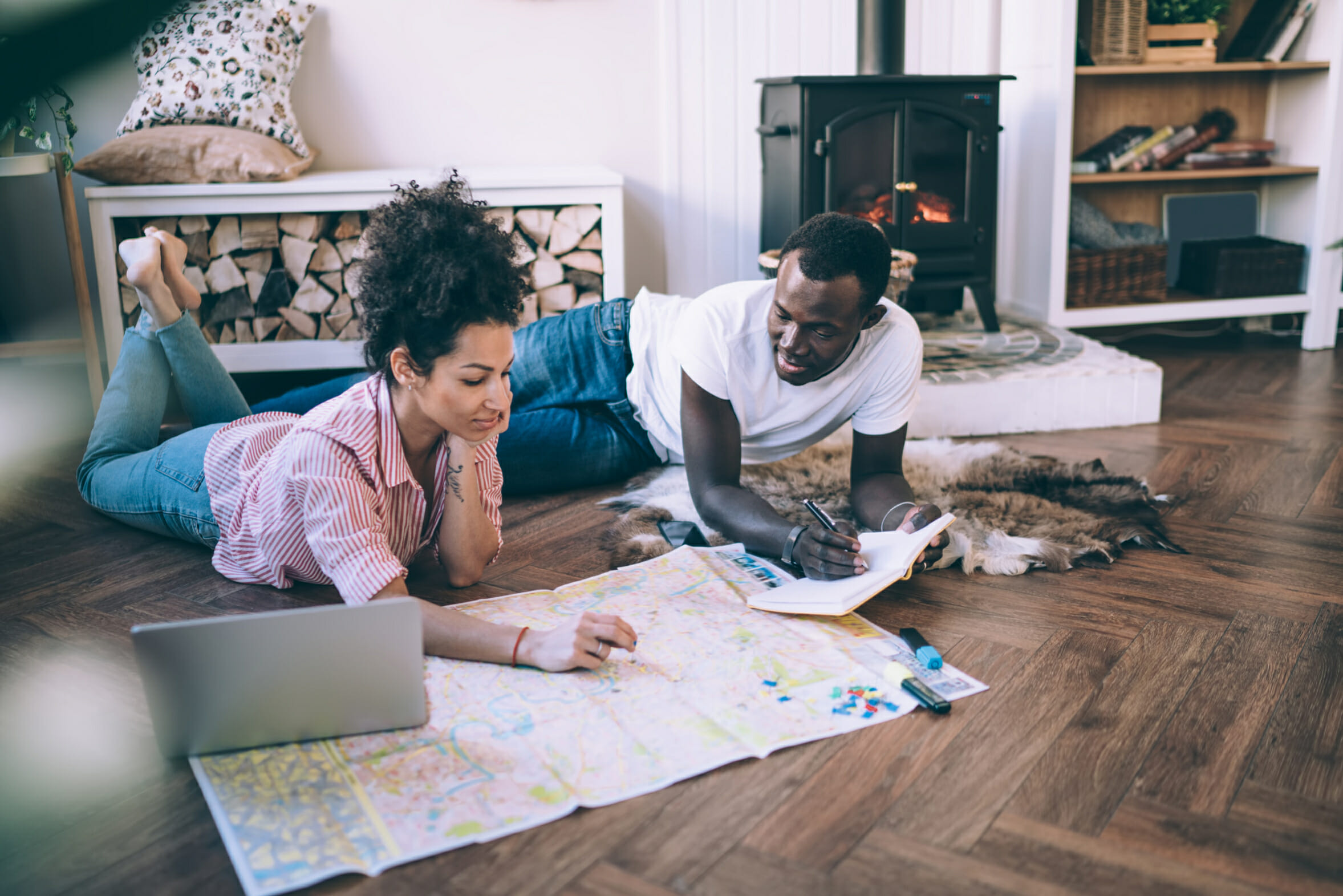
When it comes to planning a trip, one important factor to consider is the length of your adventure.
Whether you’re looking for a quick weekend getaway or a month-long excursion, determining the length of your trip will help you narrow down your destination options and create a more detailed itinerary.
Before deciding on a length, consider factors like your budget, available vacation time, and personal preferences. If you’re working with limited time or funds, a shorter trip may be more feasible.
Alternatively, if you have a flexible schedule and a larger budget, a longer trip may be the perfect opportunity for an extended adventure.
Whatever you choose, planning the length of your trip will ensure that you make the most of your time away from home.
Step 3: Conduct Research on Costs and Expenses

Once you have chosen a destination and determined the length of your trip, it’s time to conduct research on potential costs associated with the journey.
This includes researching cost estimates for airfare, accommodations, car rentals, food, entertainment, and other expenses. Knowing what to expect in terms of prices will help you stay within budget as you plan your itinerary.
Besides, researching potential discounts on transportation and accommodations can help you save money while still enjoying your experience.
Step 4: Start Making and Saving Money
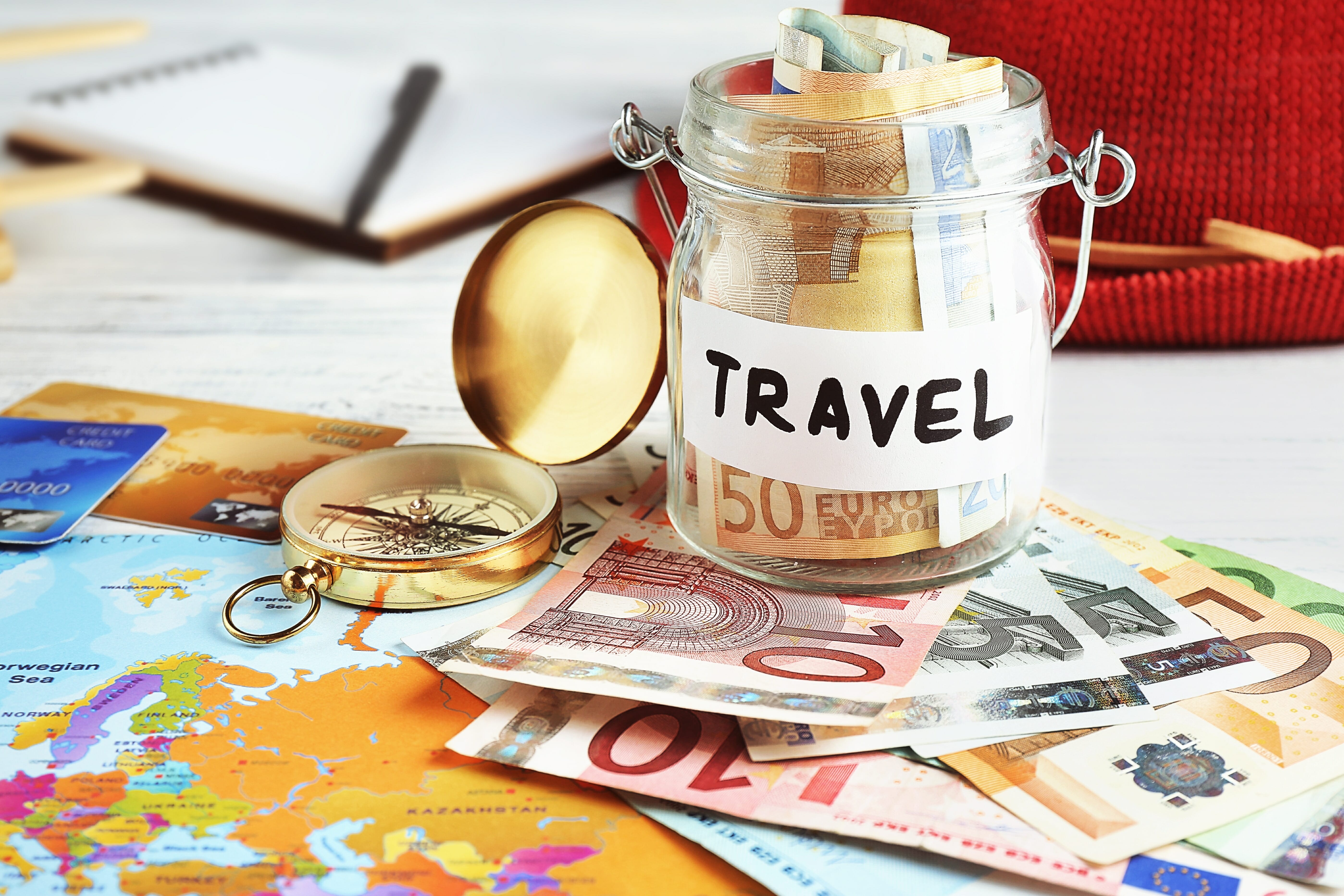
One of the most important steps in planning a trip is to start making and saving money for the journey ahead. While this may seem like a daunting task at first, it can be broken down into manageable steps.
One way to start is by creating a budget for your trip and figuring out how much you will need to save each week or month to meet your financial goal.
Additionally, consider ways to cut back on expenses in your daily life like packing your own lunch instead of eating out or canceling subscriptions you don’t need.
Another helpful tip is to look for ways to generate more income such as taking on a part-time job or selling items you no longer need.
By being smart with your finances and starting early, you can make your dream trip a reality without financial stress.
Step 5: Apply for Travel Rewards Credit Cards

As you continue to plan your next adventure, it’s important to consider the benefits of travel rewards credit cards.
These powerful tools can earn you miles or points that can be redeemed for travel-related expenses like airline tickets and hotel stays.
By applying for and using these cards strategically, you can stretch your budget and get more out of your travels.
However, it’s important to choose the right cards and use them responsibly to avoid racking up unnecessary debt or missing out on valuable rewards.
Step 6: Find an ATM Card that Doesn’t Charge Fees
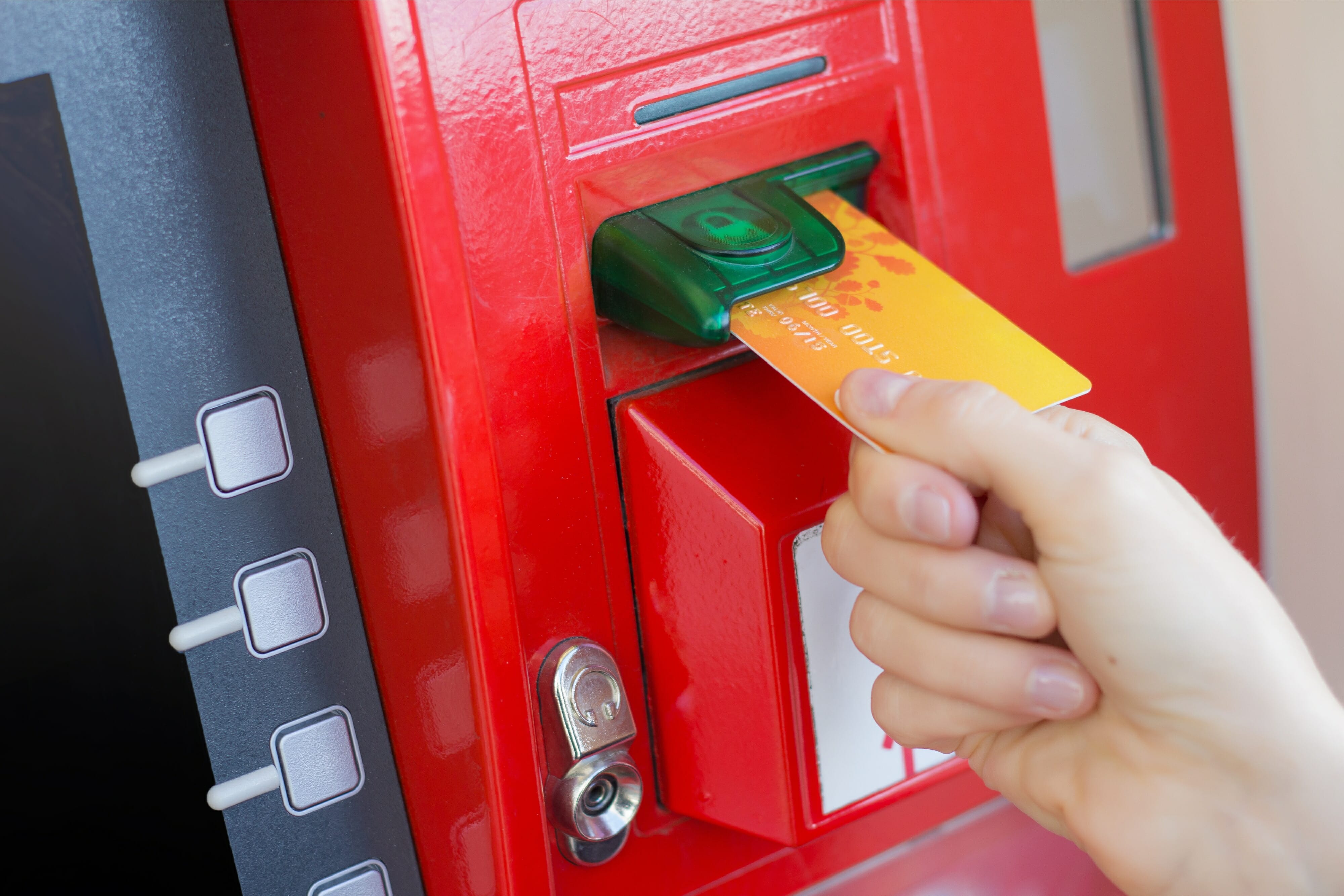
When traveling abroad, it’s important to have access to money. Before your trip, make sure you find an ATM card that doesn’t charge fees for foreign transactions or withdrawals.
This will save you time and money while on the road, and ensure that you can access funds when needed.
Additionally, consider the convenience of a multi-currency debit card, which allows you to withdraw cash or pay with local currencies wherever you go.
These cards are an excellent way to keep your finances organized and secure while traveling the world.
Step 7: Stay Inspired and Focused

To remain on track, remain inspired and focused by keeping tabs on your progress. Take photos of the destination you wish to visit and make sure to check them daily as a reminder of why you’re planning in the first place.
Moreover, look for helpful tips online or talk to people who have traveled to the destination you’re considering. Nothing will motivate you more than hearing someone else’s story of success and adventure.
With a combination of planning, research, and motivation, you’ll be on your way to an unforgettable journey in no time!
Step 8: Look for Last-Minute Discounts and Deals

It’s important to keep an eye out for last-minute discounts and deals. This can be especially helpful if you’re looking to save money or want to take advantage of a spontaneous opportunity.
Sites like Groupon, LivingSocial, and TravelZoo are great places to start your search for competitive prices on flights, accommodations, car rentals, and more.
Additionally, researching potential discounts on transportation and accommodations can help you save money while still enjoying your experience.
Step 9: Take Care of Any Country-Specific Requirements
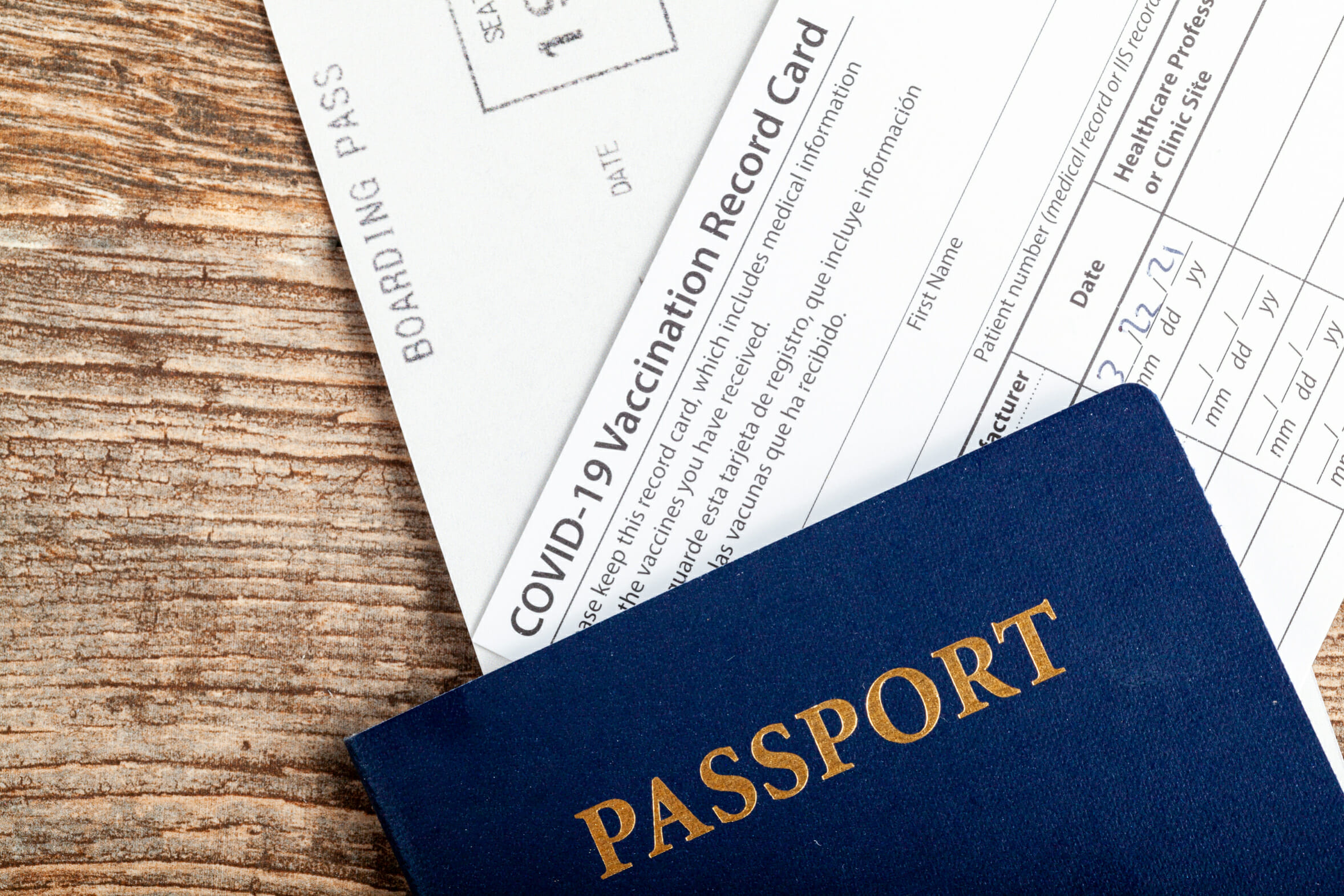
Before setting out on your journey, make sure to take care of any country-specific requirements like visas or vaccinations. These are important steps that must be taken in order to ensure a smooth and successful trip.
Also, familiarize yourself with the language and customs of the destination you’re visiting so that you can navigate your way around without any hassle.
By staying on top of any necessary paperwork and thoroughly researching the local culture, you can ensure that your trip goes as planned.
Step 10: Book the Flight
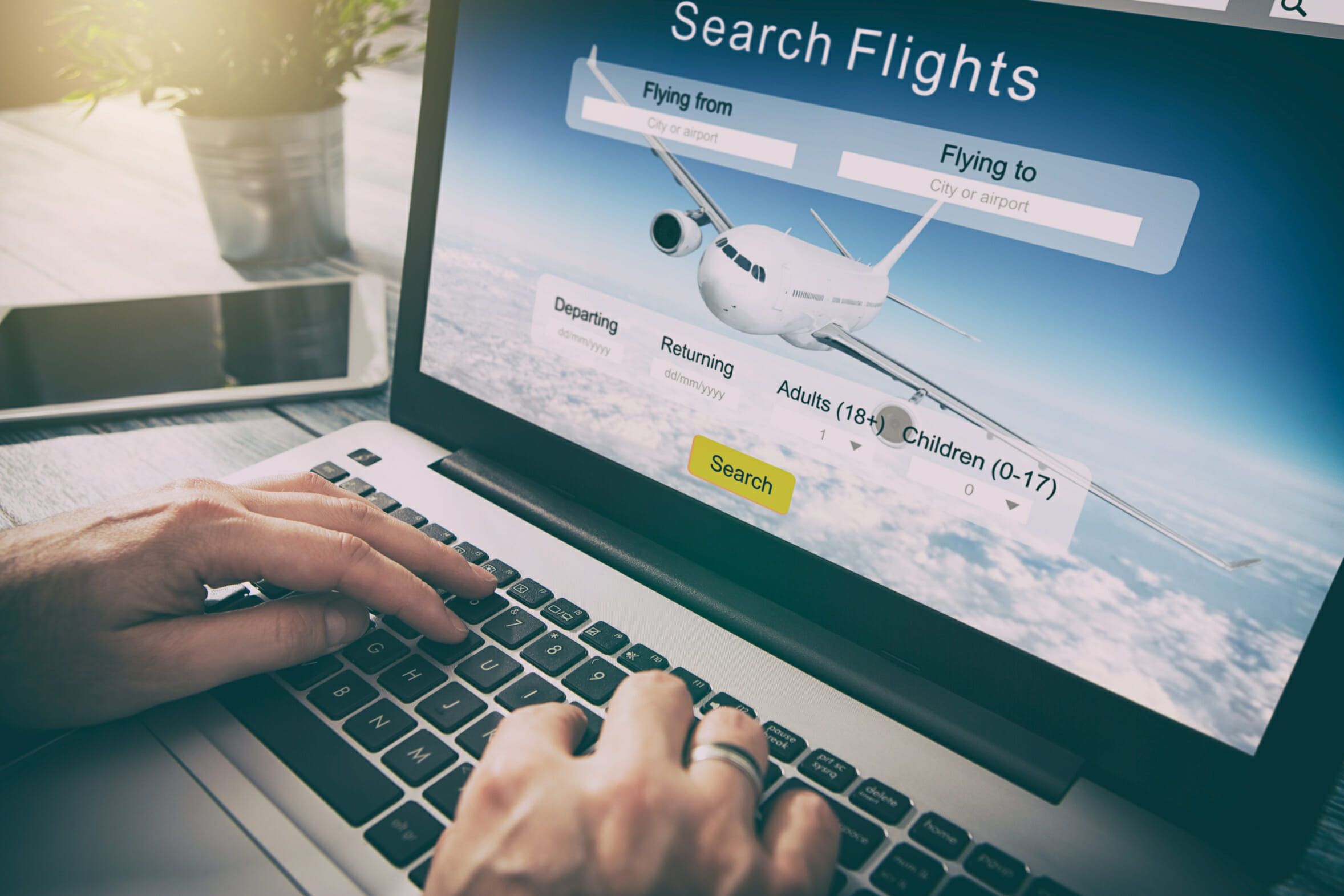
It’s time to book the flights. When booking, be sure to consider the departure and arrival times, as well as layover times if applicable.
It’s also important to compare prices across multiple airlines and booking sites to ensure you’re getting the best deal. In addition, consider signing up for airline loyalty programs or credit cards to earn points and rewards for future travel.
Keep in mind that booking directly through the airline may offer additional benefits such as free baggage allowances and more flexible cancellation policies.
Taking the time to carefully consider all options and details can result in a smooth and enjoyable travel experience.
Step 11: Book the Accommodation
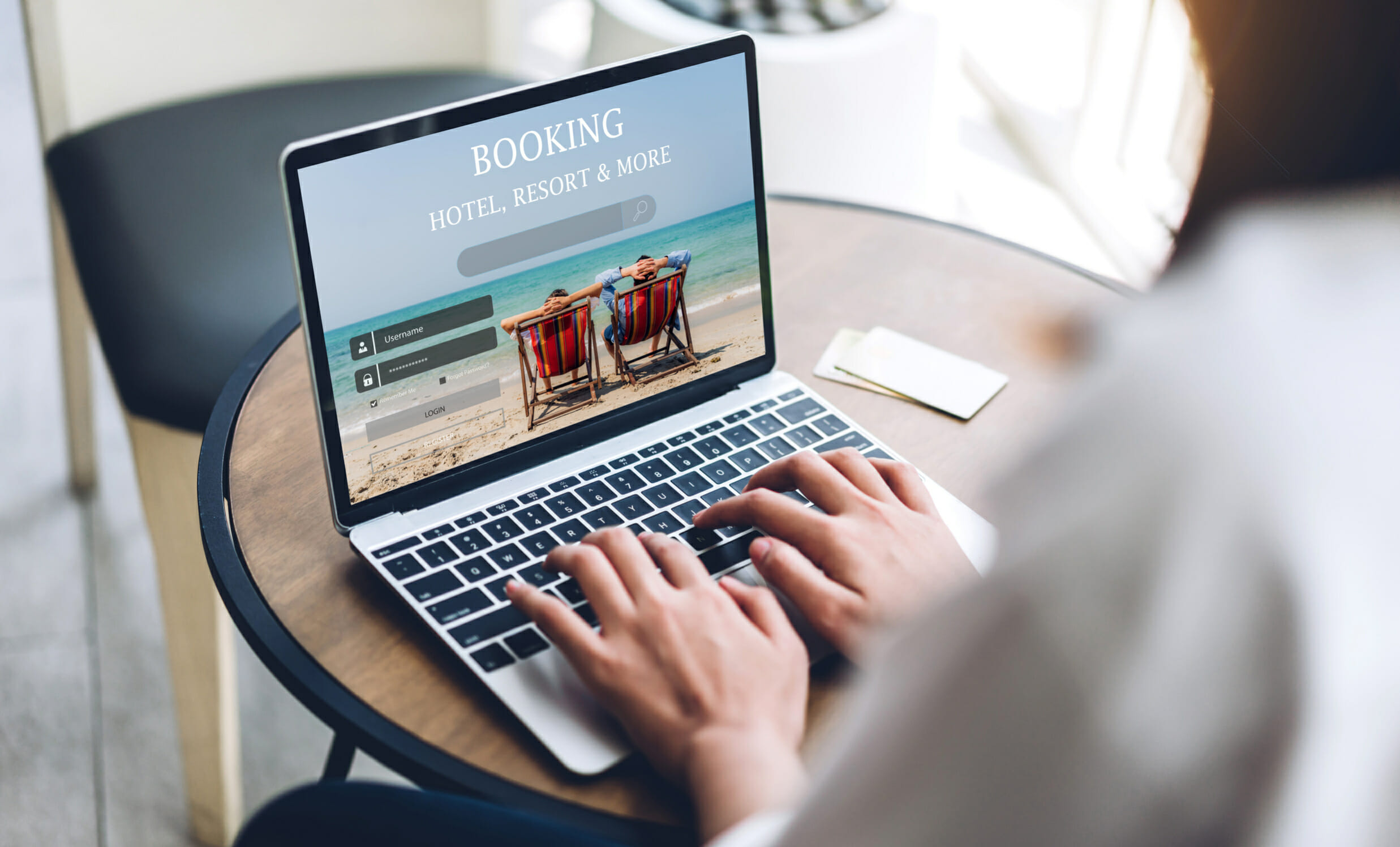
Now that all the major planning is out of the way, it’s time to take the next important step in any trip: booking the accommodation. This can seem like a daunting task, especially if you’re visiting an unfamiliar location.
However, there are a few things you can do to simplify the process.
- Be realistic about your budget and expectations for your accommodation.
- Consider the location in terms of convenience and proximity to your activities.
- Be sure to read reviews from previous guests to ensure you’re making the right decision.
With these factors in mind, you can book the perfect accommodation for your trip and look forward to a comfortable and enjoyable stay.
Step 12: Plan Some Activities
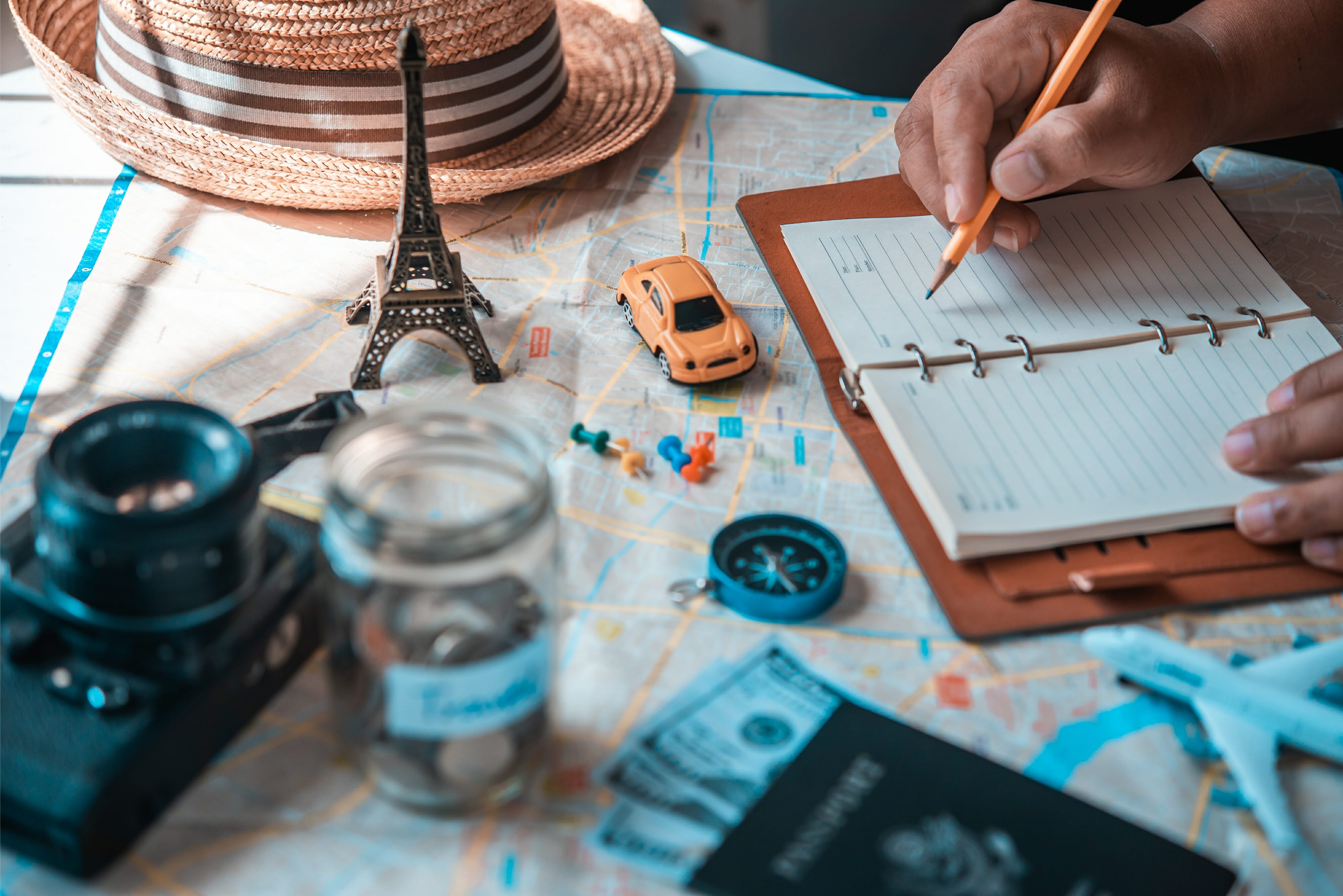
Depending on your destination and personal interests, there may be a plethora of options to choose from. Research local attractions, museums, and landmarks that pique your interest, and make a list of your top choices.
Don’t forget to factor in some downtime for relaxation, and to leave room for unexpected adventures that may arise.
Once you’ve narrowed down your options, consider making reservations or purchasing tickets in advance to avoid disappointment or long lines.
By planning some exciting activities for your trip, you’ll create lasting memories and make the most of your time away.
Step 13: Sell Your Belongings

For this step, you need to take inventory of your belongings and decide what to do with them. Selling some of your belongings can provide extra cash for your travels, lessen storage costs, and simplify the reintegration process when you return home.
Start with items you no longer use or need, like old electronics or clothes you haven’t worn in years. Consider selling on websites like eBay or Craigslist, or host a garage sale.
For larger items like furniture, try consignment stores or furniture resale shops. Whatever method you choose, be sure to properly value your items and take precautions when selling to strangers.
With a bit of organization and research, selling your belongings can be a win-win situation for your trip and your wallet.
Step 14: Automate the Bills

Ensuring that bills are paid on time is crucial, even when you’re away on a trip. That’s why automating your bills before you embark on your adventure is an essential step in trip planning.
With just a few clicks, you can set up automatic payments for your bills, saving you the headache of missed payments and late fees.
Automating your bills can also give you peace of mind, knowing that your finances are being taken care of while you’re away.
Take the time to set up automatic payments for all of your bills before you leave, and enjoy a worry-free trip knowing that your financial responsibilities are being met.
Step 15: Notify Your Credit Card Companies

It’s important to notify your credit card companies before starting on any trip abroad. This step ensures that your card won’t be flagged for fraud and subsequently declined.
Besides, it’s always better to be safe than sorry, especially when it comes to finances. Contact your credit card provider a few days before your departure date and inform them of your travel plans.
They will make a note in their system, alerting them of any international charges made on your card.
This notification also helps with any potential issues that might arise, such as losing your card or having it stolen during your trip. Taking this simple step can go a long way in making your travels hassle-free.
Step 16: It’s Time to Pack!
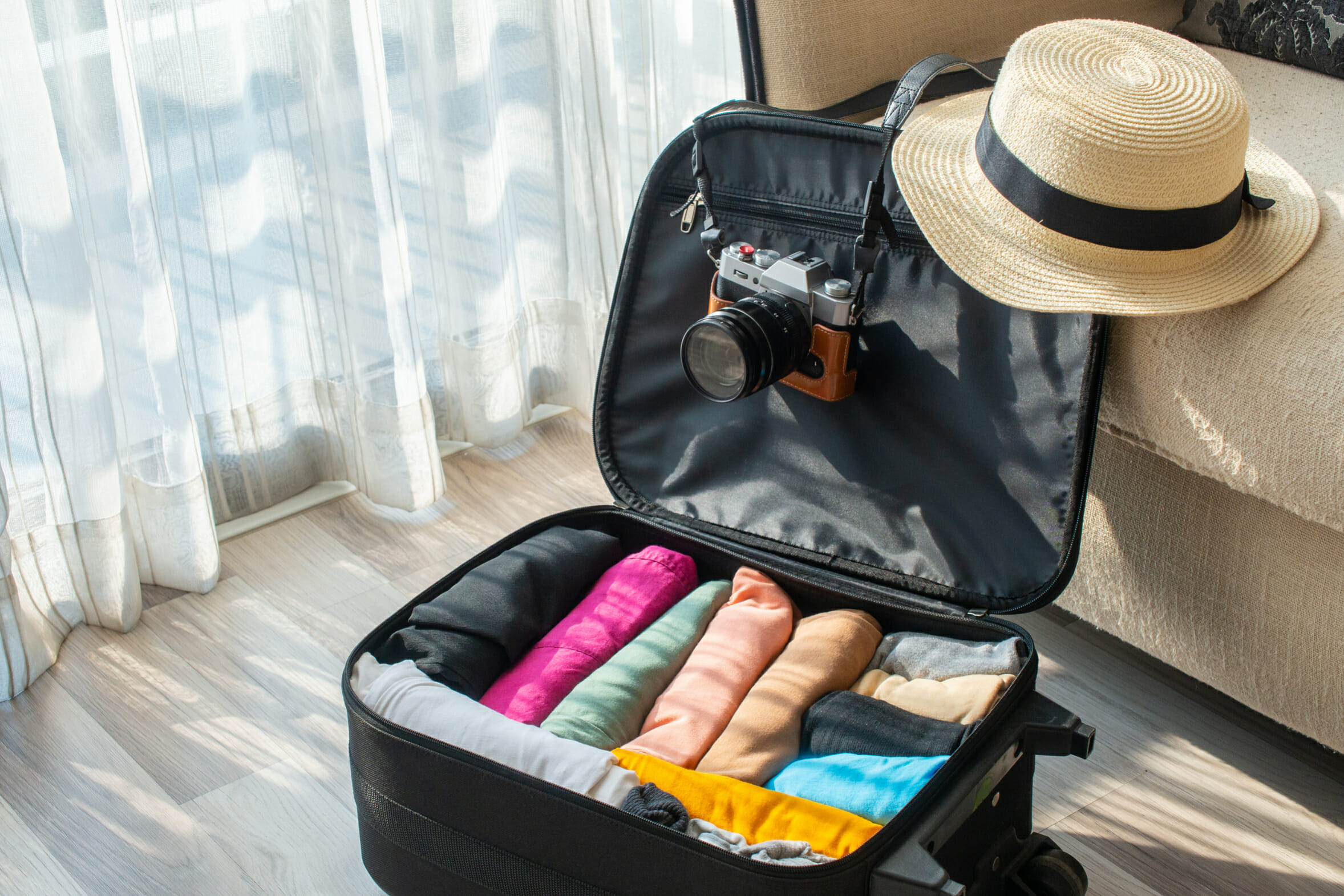
As you near the end of your trip-planning process, it’s time to pack everything you’ll need for your adventures. This step can often be overwhelming, but with some careful planning, it can be straightforward and stress-free.
Begin by making a list of everything you need to bring, checking off items as you gather them. Roll your clothes instead of folding them to save space, and utilize packing cubes or compression bags to keep everything organized.
Remember to consider the weather and activities you’ll be doing and pack accordingly.
Finally, double-check your list and make sure you’ve packed all essential items before hitting the road. Following these packing tips will help ensure a successful and enjoyable trip.
Step 17: Buy Travel Insurance for Coverage
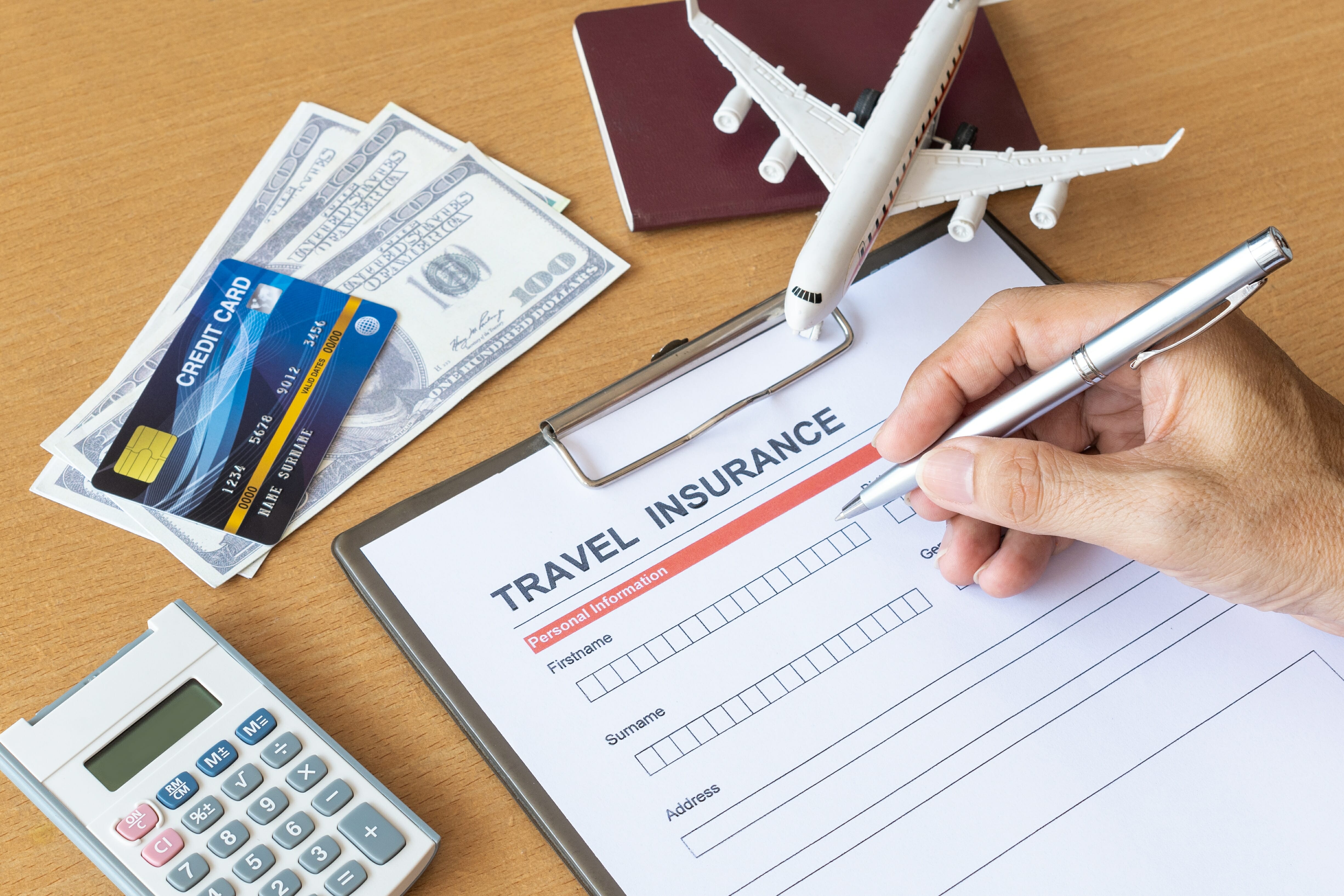
Generally speaking here, it is always advisable to purchase travel insurance. This step provides security and peace of mind in case something unexpected happens during your travels.
Travel insurance can cover you in the event of lost luggage, medical emergencies, flight cancelations, and more. Without this coverage, you may have to pay for any damages out of pocket or incur significant fees.
Be sure to research the different policies available and choose one that best fits your needs and budget. Obtaining travel insurance is a smart move for any traveler, providing much-needed coverage in case of an emergency.
Step 18: Enjoy the Journey!

Once you’ve completed all of the above steps, it’s time to embark on your trip and make the most of it. Remember to take in all the sights, sounds, smells, and experiences that come your way.
Don’t be afraid to explore new places or try something different—you never know what kind of wonderful surprises await you.
Relax and enjoy each moment as if it were your last, for long-lasting memories are made in the present. Most importantly, have fun and make the most of your journey!
Good luck with your travels and safe travels!
Final Words
And that’s it—you’re all set for your next adventure! Following the above steps will help you stay organized, on budget, and ready to take on whatever comes your way.
So what are you waiting for? Get out there and start exploring the world! Bon voyage!
Advertisement
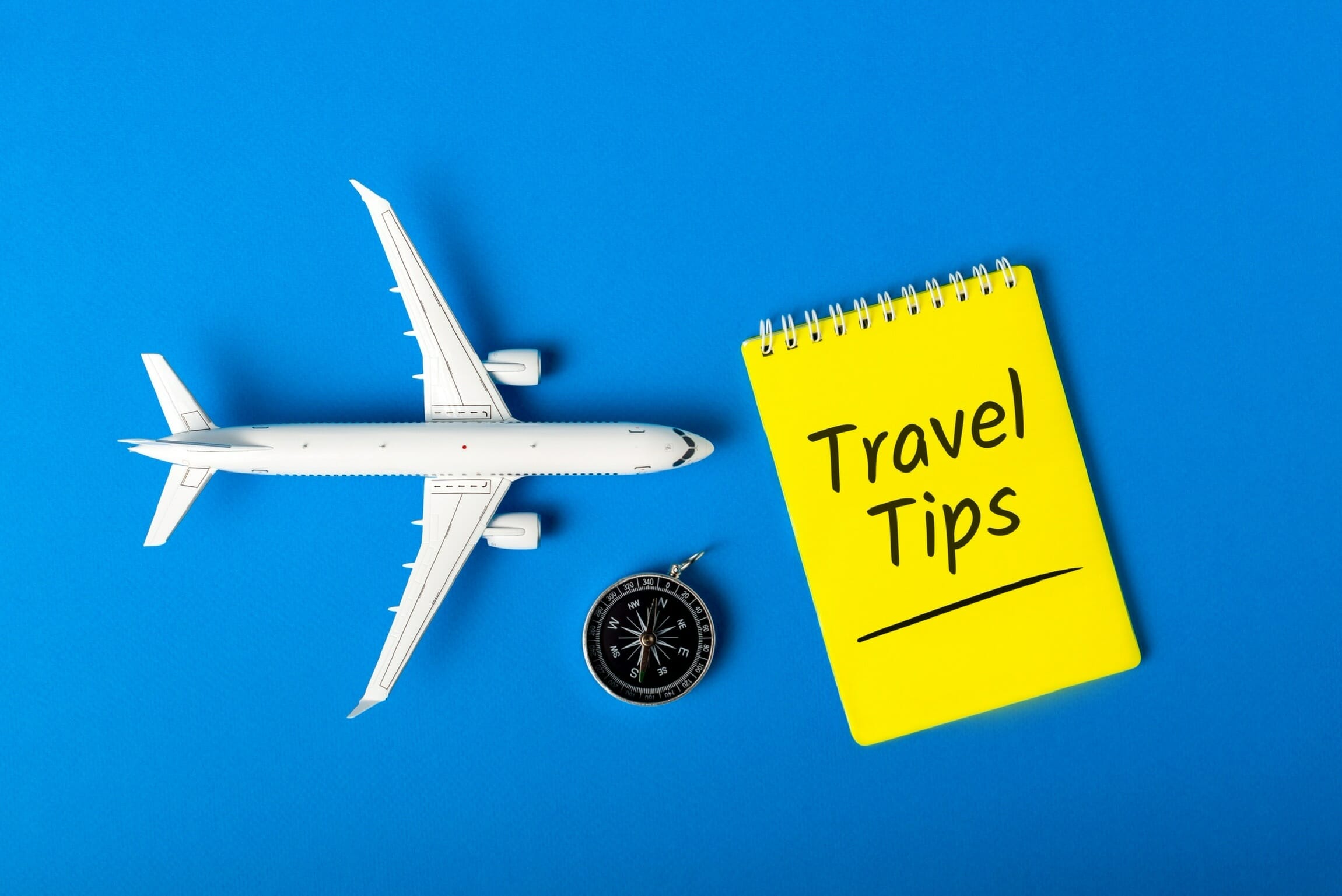
More from TravelMasta
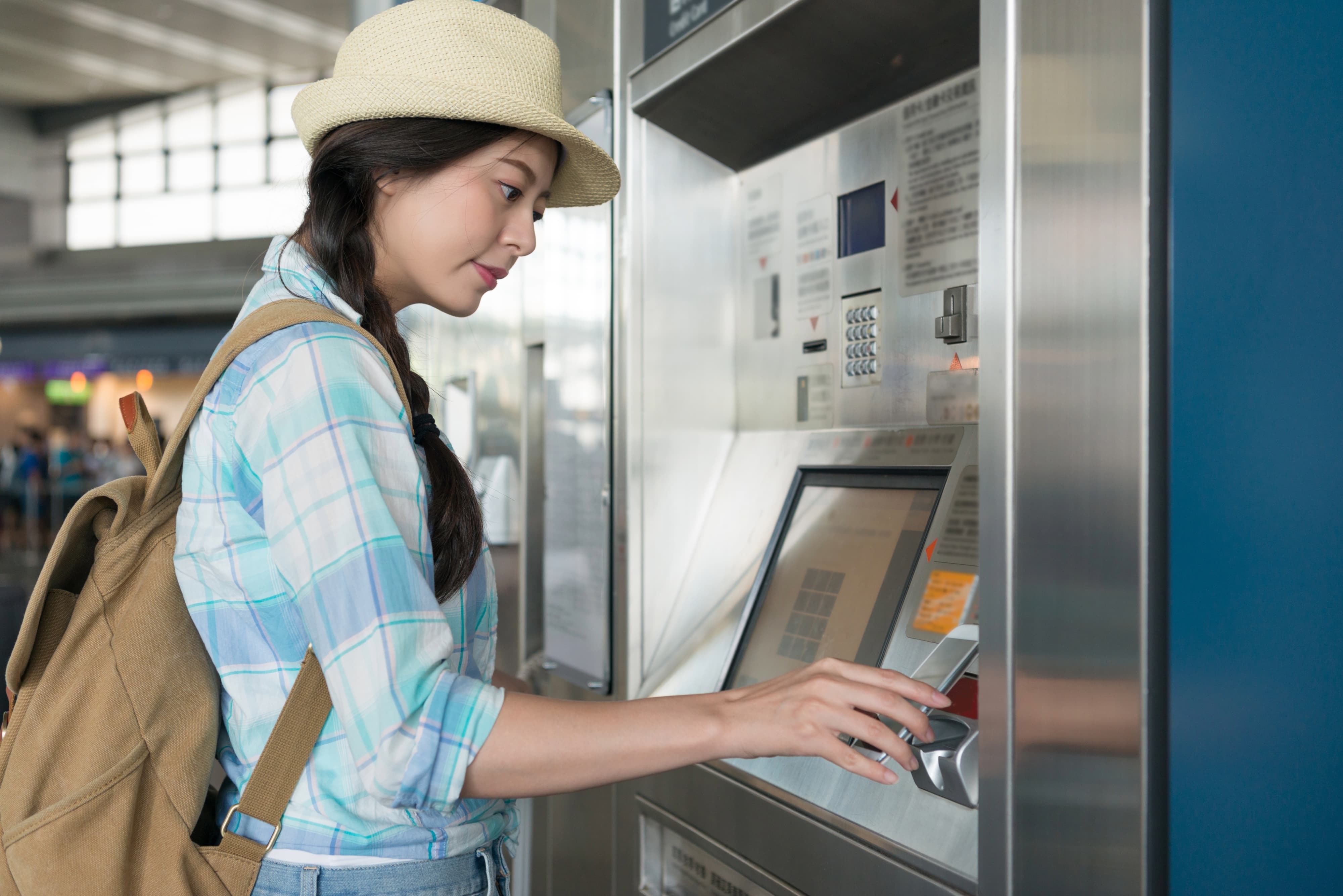
- Skip to main content
- Keyboard shortcuts for audio player

- LISTEN & FOLLOW
- Apple Podcasts
- Google Podcasts
- Amazon Music
Your support helps make our show possible and unlocks access to our sponsor-free feed.
How to plan your dream vacation
Sometimes you crave a vacation — but actually taking one feels out of reach. Maybe you're struggling to find the time or save up the money. Or maybe you just can't seem to launch those plans out of the group chat. Overcome that planning inertia and take the big trip of your dreams. Here's where to start your search, organize your logistics and enjoy yourself.

Copyright © 2024 NPR. All rights reserved. Visit our website terms of use and permissions pages at www.npr.org for further information.
NPR transcripts are created on a rush deadline by an NPR contractor. This text may not be in its final form and may be updated or revised in the future. Accuracy and availability may vary. The authoritative record of NPR’s programming is the audio record.
You will be redirected to your dashboard shortly. We will also call you back in 24 hrs .
- How To Plan A Trip In 5 Simple Steps
23 Mar 2023
It is an adventure you’ve always dreamt of, but haven’t been able to plan and execute properly. Here are some useful pointers on how to plan a trip, that put an end to the cluttered chaos by streamlining your vacations to perfect harmony and pure bliss.
Vacations often start off as a wonderful idea and then eventually end up being a nightmare to manage. Often overlooked, a lot of thought and brainstorming goes into perfectly organizing touring plans. The lack of know-how on how to plan a trip often reflects during “unseen hurdles” on a vacation.
With a little bit of preparation and effort in maintaining a personalized trip planner, travelers can overcome 90% of their difficulties they may face during a trip. Here are some handy trip planning tips that will keep your prepared for the proverbial rainy-day.
1. Pick your destination
If you are wondering how to plan a trip with friends or family than you should probably start from either some stunning pics that gone viral on social media, the scenic setting of a movie, or an irresistible story of a friend’s last trip abroad. Touring plans, more often than not, are triggered by external factors.

Image Source
Must Read: 30 Travel Hacks You Must Know If Just-The-Girls Trip Is On Your Mind
Things to keep in mind before selecting a destination
- There’s nothing to say when a traveler’s mind wishes to visit the beaches, mountains, or a forest. However, picking the right destination according to the season is a key factor in understanding how to plan a trip successfully.
- Check out the best time to visit all destinations. Usually, the ideal season to visit beaches and mountains is completely different.
- Consider the cost factor while picking a destination. Some places are more enjoyable in a luxury budget than others. Going to a luxury destination during the shoulder season (a few weeks before or after the official ‘busy season’) can result in some good discounts on hotels and flights.
- Safety of travelers is a prime concern people specially when you are concerned of how to plan a family vacation. Pay attention to it before stating off the journey (especially when female travelers are included).
- Ease of accessibility or lack thereof is also a factor that can sway the decision of visiting a destination or not. Generally, the popular destinations have a lot of daily flights, trains, and good highway infrastructure to support the tourist influx.
2. Decide the duration of your trip
There is a fine line between getting bored and enjoying every moment at a destination. However, no destination has a predefined ideal duration. Wondering how to plan your road trip? It often depends on the touring plans and purpose of the visit of the travelers. Some travelers like to see new cities every day, whereas some travelers prefer taking it slow by witnessing and enjoying the subtle nuances of places they visit. This is a key aspect of your trip planning which can help your itinerary and budget both. Additionally, Travel Triangle also offers customize itinerary so if you are concerned of how to prepare an itinerary for a trip, no worries!
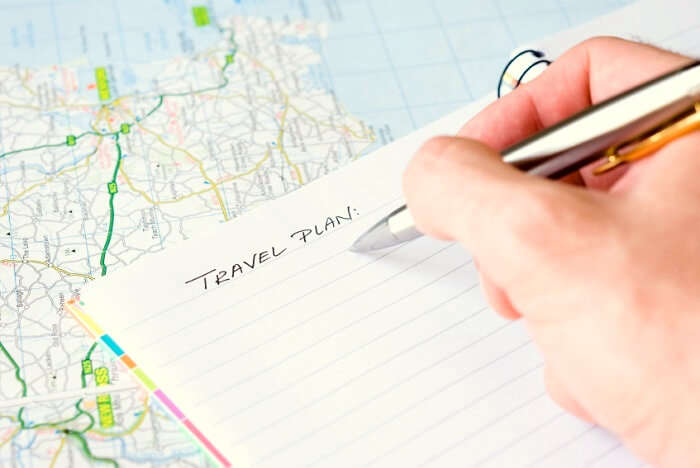
Suggested Read: Things You Ought To Know Before Traveling
Things to keep in mind before deciding the duration of a trip
- A key aspect of a good trip planner is to correctly estimate the number of days required to visit a destination. A road trip planner would elongate the duration of a trip whereas, a trip planned with flight tickets could be a little shorter.
- Trips, where the destination is within 8 hours, can also be done on a weekend provided that the night time is utilized for traveling.
- A trip with a lot of urban destinations will need more time in the sightseeing, and therefore a longer trip duration. Whereas a trip to a tropical beach town would not involve much sightseeing and hence, the duration can be shorter.
- It is advisable to keep a vacant day in touring plans that exceed 7 days. This gives a buffer to things like flight/train delays, traffic jams, weather hold-ups, or a change-of-heart to extend one’s stay at a particular destination.
3. Book flights, train, or bus tickets, and accommodation
After the ideation is complete, booking tickets for your flight, train or bus transfer well in advance is an important step in learning how to plan your trip to perfection. Since flight and train tickets are subject to availability and prices rise over time, getting the bookings done a few months in advance will help you avoid additional costs on your initial budget. Whether you are planning to explore the hidden places in Goa or savour the local flavour of Rajasthan , advance booking can help you with a hassle-free journey.

Suggested Read: 10 Packing & Luggage Hacks For The Smart Traveler
Things to keep in mind while booking transfers and accommodation
- Only book the cheaper non-refundable flight or train tickets if you are absolutely certain of your vacation plans. Otherwise, it is advisable to book refundable tickets if booking well-in-advance.
- Flight prices fluctuate a lot, keep a track on flight prices by using Google Flights Tracker.
- Expect a surge in prices of flights and accommodations if you are booking tickets for a vacation that falls during the peak season of that particular destination.
- Use credit cards that give frequent flyer miles and points on every rupee spent on booking flights and hotels to earn great rewards and cash-backs.
4. Plan the day-wise activities and course of action
It always sounds fascinating and adventurous when touring plans are made on a sudden impulse and gut feel. However, the downside of going on such trips is that there could be many days where the scheduling can go haywire because of everything being so last-minute.
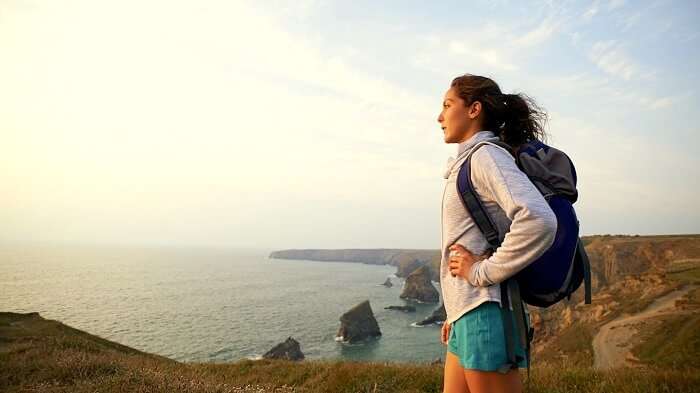
Suggested Read: Travel Etiquettes Around The World
Things to keep in mind while planning day-wise activities
- Depending on the budget and time-at-disposal, getting a rough idea of what activities should be done on what day is a vital ingredient in understanding how to plan a trip perfectly.
- Transfers between destinations should be kept as much as possible during the evening/night. This will provide enough time for sightseeing and activities as most of them are only possible during the day-time.
- Most of the times, it is better to book activities like water sports, adventure sports, boat-rides, and safari rides at the destination itself to get a better price and some scope for bargaining.
- In the trip planner, keep only one or two activities in a day if the purpose of the trip is to relax and take it easy during the vacation.
- At some places, popular tourists activities like skiing, boating, scuba diving etc are closed during offseason. Check the availability of activities before going to the destination.
5. Pack diligently and make all the necessary adjustments
After the bookings are done, it is always advisable for your trip planning to pack your stuff keeping in mind the destination and the influence of external factors on it. The unpredictability of weather, socio-political scenario, or a festive season can adversely affect travel plans. In order to avoid alteration of touring plans due to these scenarios, travelers should do a bit of research before starting their vacation.

Further Read: Travel Myths Busted: Don’t Let These Cliched Fables Ruin Your Travel Experiences
Things to keep in mind while packing for a vacation
- An extra shirt, sweater, pair of jeans, or jumper can always prove handy during trips where the weather is expected to be cold or rainy.
- Things like sunscreen, lotion, or mosquito repellent sound like unnecessary items but they are very vital in preventing any skin-related diseases
- As a part of cultural sensitivity and responsible tourism, travelers must research about the destination they are visiting. Reading about the do’s and don’ts is advisable in order to avoid causing any conflict or disrespect to the local people of the place to be visited.
Vacations are experiences that change people for the good. With a better understanding of how to plan a trip, travelers can enjoy their sojourns without any malice or unfortunate occurrence. Book a tour package to your dream destination with TravelTriangle and enjoy a responsible, thoughtful, and considerate way of traveling.
For our editorial codes of conduct and copyright disclaimer, please click here .
Frequently Asked Questions About Trip Planning In India
Which are some of the offbeat destinations to plan budget trips in India?
Amidst an array of awe-inspiring destinations in India, there are some offbeat destinations that can easily be planned for an ultimate budget trip. Some of these destinations are: 1. Digha - West Bengal 2. Savarkut - Maharashtra 3. Maval - Maharashtra 4. Hampi
Which destinations in India can be explored on a very low budget?
Some incredible places in India can be explored on a very low budget. Some of them are: 1. Pushkar 2. Ooty 3. Lonavala 4. Nainital 5. Rishikesh 6. Hampi
Which place is best to travel for 2-3 days in India?
The best place for a 2-3 day trip in India would depend on your location. If you are located in North Delhi, then Shimla and Jaipur would be a good choice. For people living in South India, Mysore and Coorg must be on the list. For West India, head to Alibaug or Mahabaleshwar. Northeast can head to Pelling or Darjeeling. And East Indians would love to visit Sunderbans or Puri.
What is the best place to visit in South India with a low budget for a 3 to 4-day tour?
Hampi, Coorg, and Ooty are some of the best places to visit in South India if you are a budget traveler.
Which is the cheapest city in India?
Kolkata, Chennai, and Bangalore are arguably the cheapest cities in India. It is affordable for a majority of Indian citizens to rent out a place in these metro cities. Also, the dining options here are pretty cheap compared to other metro cities.
How can I travel cheaply in India?
If you plan to travel cheaply in India, you can live for free at an ashram in Pondicherry, drink at shacks in Goa that serve vodka shots for INR 60 per glass, travel by state-owned buses in Uttarakhand and Himachal Pradesh, and prefer staying at homestays.
How much does a meal cost in India?
A meal in India costs INR 100 at street joints, INR 250-500 at medium-level restaurants, and over INR 1,000 at upscale restaurants. Make sure you taste the local street food while you’re in India. The flavor and the aroma of Indian cuisine is distinct and usually hits all your senses.
Which is the cheapest country to visit from India?
There are various countries that you can consider visiting from India on a low budget. Some of them have been listed below: 1. Malaysia 2. Sri Lanka 3. Bhutan 4. Nepal 5. Thailand 6. Laos 7. Singapore
What are some of the best tips to keep in mind while planning budget trips in India?
If you are thinking how to plan a vacation on a budget to India, make sure to go through the following tips. These tips would certainly come in handy while planning your budget trip and will allow you to have a seamless vacation. Check them out: 1. Research thoroughly - Make sure you research in depth about your destination. Research about the best budget hotels, pocket-friendly restaurants, and transportation options. 2. Travel during the off-season - If you intend to have a vacation that is easy on your pockets, it is vital to travel during the off-season, when the demand is less and prices are not inflated. 3. Travel in a group to share costs related to accommodation and transportation. 4. Travel to offbeat places in the country. Places that are already very popular amongst tourists would naturally cost you more. It is wise to travel to unexplored places and save some bucks! 5. Find accommodation in homestays. Homestays are relatively cheaper than hotels. You can also look for accommodation in budget-friendly hostels. 6. Travel via public transport instead of taxi/cab. Keeping these tips in mind would surely aid you while planning your ideal budget trip in India.
Recent Posts

Un guide complet pour un voyage sur l’île de Langkawi en 2024

रोमांच चाहने वालों के लिए 2024 में 15 बैंगलोर के पास सर्वोत्तम ट्रैकिंग स्थान

15 कश्मीर में सर्वश्रेष्ठ हाउसबोट: प्रकृति प्रेमियों के लिए एक सौगात!

17 Meilleures destinations de lune de miel en Italie en 2024 pour les couples fous amoureux

10 Voyages les plus populaires en Europe pour planifier l’évasion ultime de 2024

52 Lieux touristiques près de Chennai pour profiter d’un merveilleux voyage
Trending Blogs

20 Mysterious Places In India To Visit In 2024 More Bizarre Than The Bermuda Triangle

10 Scariest Roads In India That Are A Driver’s Nightmare

101 Places To Visit In India Before You Turn 30 in 2024

35 Exotic Places To Visit In December In India 2024 To Enjoy A Surreal Vacation

60 Best Honeymoon Destinations In India In 2024

95 Best Honeymoon Destinations In The World In 2023 For A Romantic Escape!
Best Places To Visit In India By Month
Best places to visit outside india by month.
- TravelTriangle
- Travel Tips »
- Tour Packages
- Honeymoon Packages
- Family Packages
- Budget Tour Packages
- Luxury Tour Packages
- Adventure Tour Packages
- Group Tour Packages
- Kerala Tour Packages
- Goa Tour Packages
- Andaman Tour Packages
- Sikkim Tour Packages
- Himachal Tour Packages
- Uttarakhand Tour Packages
- Rajasthan Tour Packages
- Tour Packages From Delhi
- Tour Packages From Mumbai
- Tour Packages From Bangalore
- Tour Packages From Chennai
- Tour Packages From Kolkata
- Tour Packages From Hyderabad
- Tour Packages From Ahmedabad
- Kerala Tourism
- Goa Tourism
- Sikkim Tourism
- Andaman Tourism
- Himachal Tourism
- Uttarakhand Tourism
- Rajasthan Tourism
- Hotels in Kerala
- Hotels in Goa
- Hotels in Sikkim
- Hotels in Andaman
- Hotels in Himachal
- Hotels in Uttarakhand
- Hotels in Rajasthan
Why you should start planning a trip really far in advance

Jan 1, 2022 • 5 min read
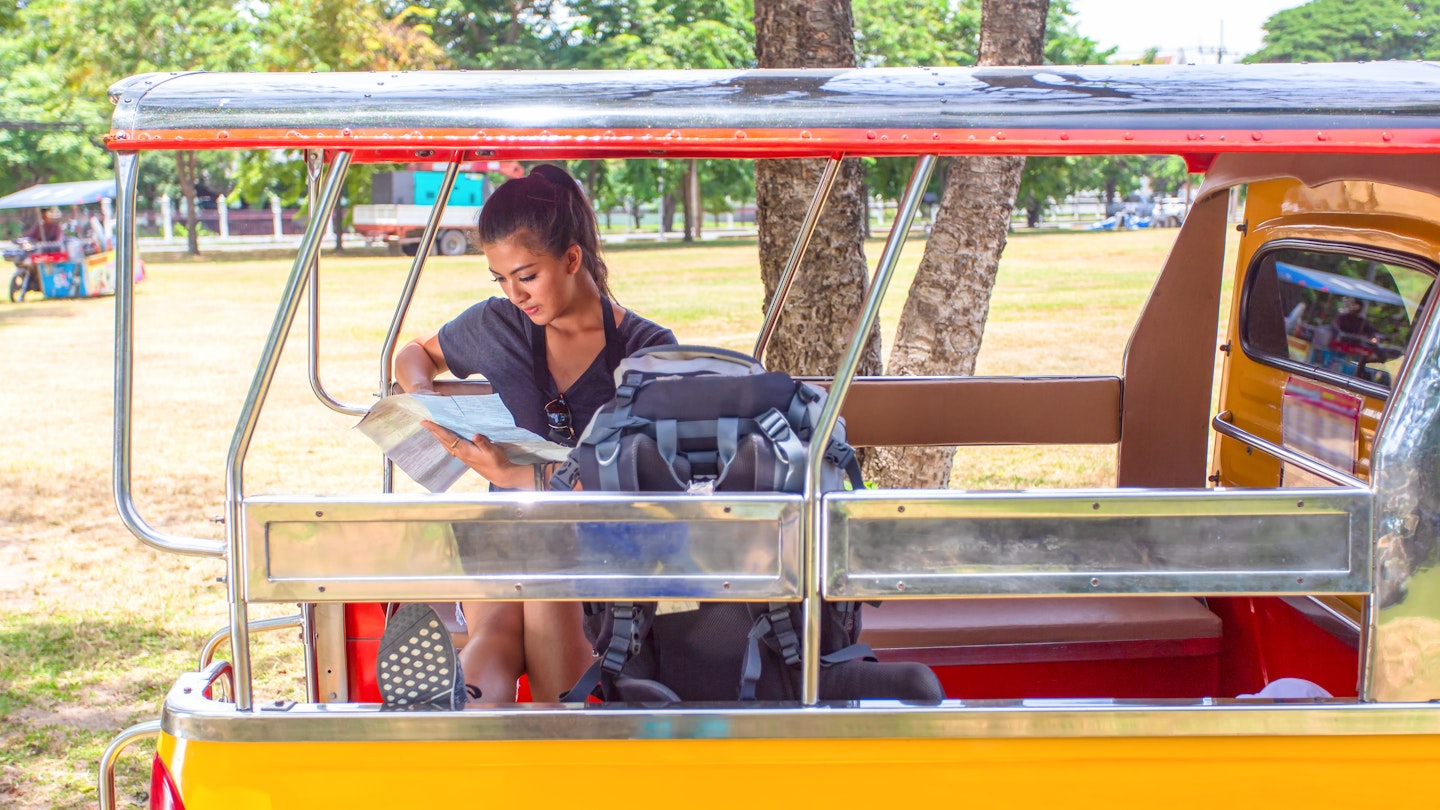
In this new era of travel and travel restrictions, planning a trip far in advance has never seemed more practical © Pakin Songmor / Getty
In a world where spontaneity in travel is almost fetishized, meticulous planners – a group with which I proudly identify – tend to get a bad rep. “You’re dull,” they say, “planning itineraries in advance is boring.” In my humble opinion, this couldn’t be further from the truth.
Regardless, in this era of travel restrictions, we must all become long-term planners; and there are some very good reasons to embrace it. Here are some of the benefits of planning a trip a (very) long way in advance.

Planning ahead can help to save money
Extra legroom. An extra night’s stay. Heck, who wouldn’t want a hotel upgrade? Maybe it’s the fact I’m over 30, but I find a little bit of luxury – whatever that means to you – can take a trip from ‘meh’ to memorable. And the more time you have before you go, the more money you can save for those "treat yo’self" moments.
Staunch budget traveler? You do you. Traversing the globe on a few dollars a day can be an enlightening, life-affirming, addictive experience – but it never hurts to add a bit of slack to the shoestring, so to speak, and planning in advance provides a chance to squirrel away more funds, which can be handy in emergencies.
With all this time on your hands, you can also afford to shop around, wait for flash sales and – where it makes sense to do so – book well in advance. Paying for transport, accommodation and activities over the course of a few months helps spread the cost too.

Take the time to craft the perfect itinerary
Paid leave is precious. Travel is a privilege. If you want to squeeze every last drop out of your next adventure, I implore you to consider my secret weapon: the humble spreadsheet. It might sound as sexy as a bedbug-ridden bunk, but hear me out. When time away is limited, plotting out your ideal itinerary, day-by-day, can help you make the most of it.
There are numerous benefits to taking the Excel approach. You can sense-check the pace at which you plan on moving between destinations, factoring in days for traveling from A to B, plan backup options for rainy days and juggle things around where necessary.
You’ll know where you’re likely to be on the weekends (this can affect what you choose to do, as major attractions will be busier during these times) and you can plug in your pre-bookable big-ticket items while saving room for spontaneity – for example, before a three-week trip to Australia I arranged to go to a popular outdoor spa well in advance but reserved the days either side for whatever we fancied at the time (it was winery hopping on the Mornington Peninsula).
Pro tip: if you’re anything like me, you’ll find too many things to squeeze onto your itinerary ( Melbourne has approximately one quintillion drool-worthy brunch spots). Bookmark them all on your chosen mapping app (the Lonely Planet Guides app is a good place to start) and if you find yourself at a loss on the road, open it up to see what’s nearby.

Book popular things to do
Ever stumbled across the dreamiest of digs on Instagram, immediately pinned all of your hopes and future happiness on staying there, only to find they’re booked out solidly for the foreseeable? I feel your pain.
Planning your travels well ahead not only gives you the widest choice of accommodation – including those quirky-cool home rentals – it also offers the best chance of snagging sell-out gig and theatre tickets, elusive restaurant reservations and a table for drinks in the trendiest spot in town (achingly cool but perpetually occupied igloo bars, I’m looking at you. Your fairy lights give me major FOMO).
The only way to harness this travel superpower is to know what you’re looking for, which means doing plenty of research early on. Admittedly, there is a certain joy in striding into a randomly-selected neighborhood cafe in hopes it’ll be the city’s next undiscovered gastro hotspot, but there’s more fun in trying the food at that limited capacity pop-up place all the locals have been raving about on social media for the last month. Scour guidebooks, magazines, blogs and social media to find the events and attractions you simply can’t miss, then check their availability ASAP and seal the deal.
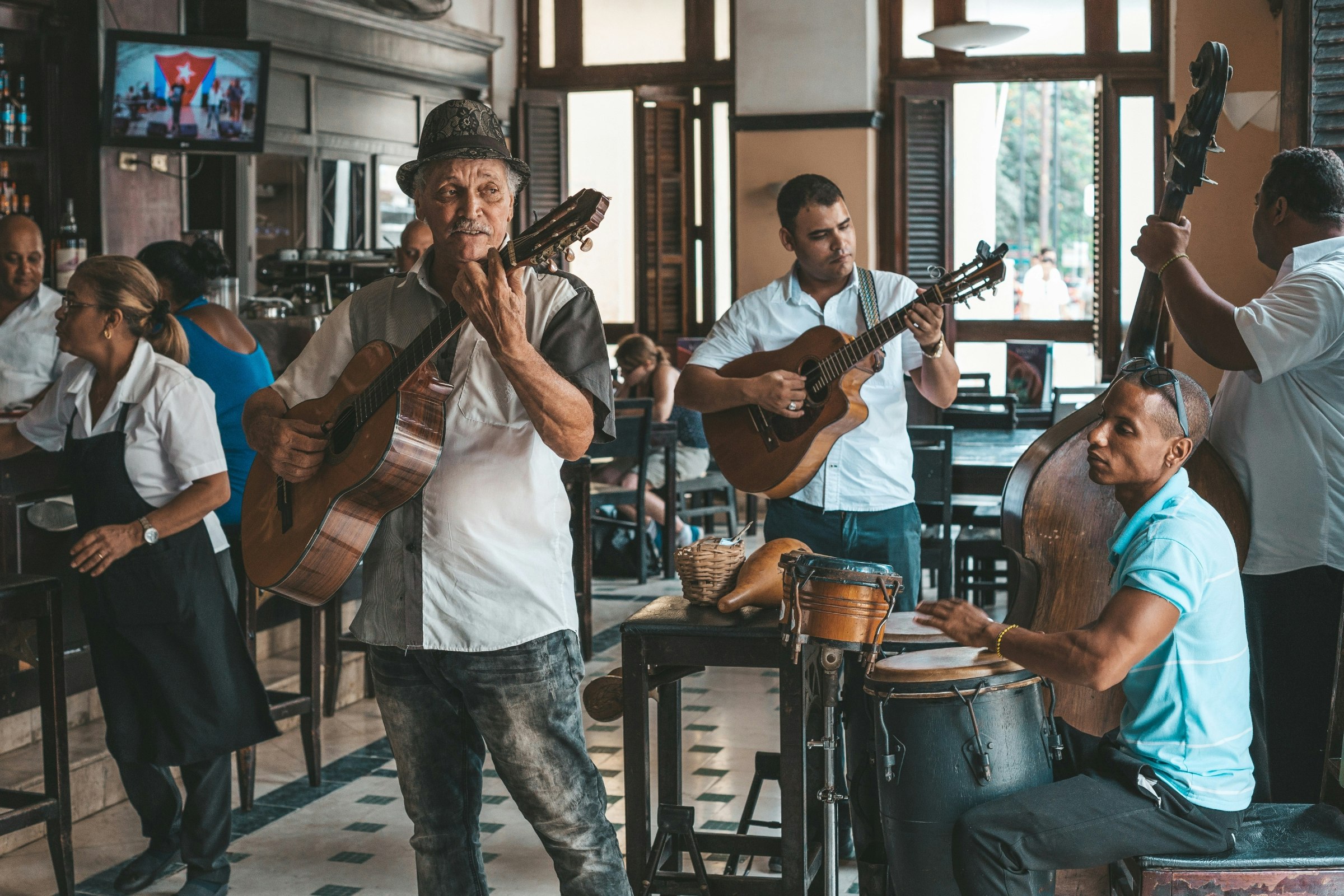
Get to know the destination before you arrive
Some people prefer to know very little about their chosen destination before they go – and I understand the logic, to a degree. With the world increasingly at our fingertips, the joy of experiencing the unknown is almost unattainable.
Browsing Google Street View might not be your favorite way to pass the time pre-trip (reader, it may not surprise you to learn I am partial to the occasional virtual bimble), but understanding the history, geography and culture of a place you’ll soon be immersed in is never a bad thing. Being aware of local customs, taboos and current affairs can only make you a more engaged, respectful and responsible traveler. So get reading in the run-up to your departure!
Want to impress the locals? Consider tapping into the destination’s cultural offerings – books, films, music, language – to prepare you. Guatemala ’s Top 50 chart hits from 2017 will forever be top of my Spotify list.

Achieve packing perfection
Packing. Love it or hate it, it’s hard to get right . But for once, you have the gift of time. Take this opportunity to craft the ultimate capsule wardrobe; stock up on (or locate those pesky) adaptors, spare chargers and all the other paraphernalia you usually have to panic buy at the airport; and get your digital life in order – I’m talking a suite of essential apps, curated playlists, movie downloads and a clean digital camera roll to fill with your prize-winning travel snaps. You might even like to practice packing and unpacking your luggage to optimize your on-the-road technique… or is that just me?
Enjoy the anticipation
The instant gratification of last-minute getaways can be thrilling. But slowing down and mindfully planning a future trip can help us appreciate the true value of travel, instilling a sense of gratitude and wellbeing. Practice patience, relish the anticipation, and research, research, research – while remembering to enjoy the here and now. Plus, if you aren't able to travel at the moment, what else are you going to do?
You might also like: How to budget for a big trip The best Asian destinations for female solo travelers The best Lonely Planet Spotify playlists
This article was first published Mar 25, 2020 and updated Jan 1, 2022.
Explore related stories
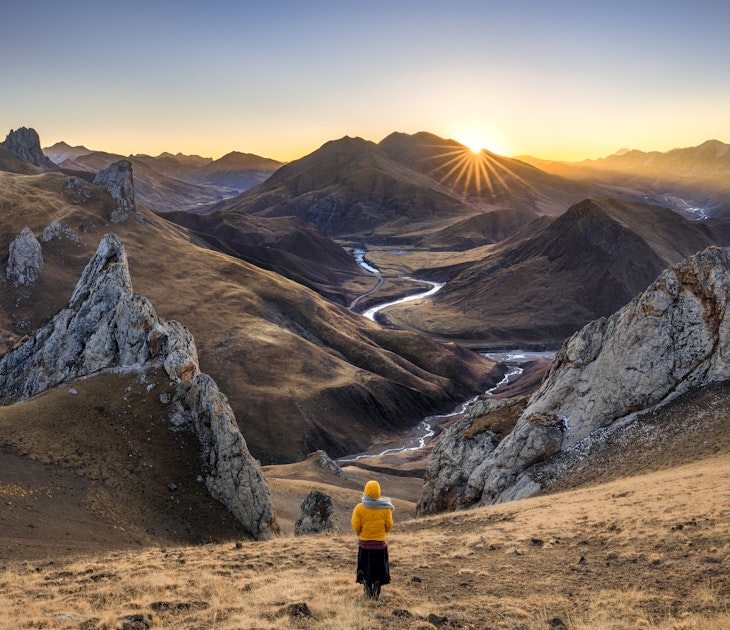
Jan 5, 2024 • 20 min read
As the new year begins, here are 24 of the world’s most life-affirming journeys to consider for nurturing your path to self-discovery.

Aug 17, 2023 • 5 min read

Nov 22, 2021 • 6 min read

May 29, 2024 • 8 min read

May 21, 2024 • 5 min read

May 21, 2024 • 11 min read

Apr 4, 2024 • 5 min read

Mar 30, 2024 • 4 min read

Mar 4, 2024 • 8 min read
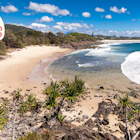
Feb 27, 2024 • 6 min read

8 benefits of planning a trip in advance
A new year has arrived. With it come endless and exciting possibilities for the months ahead—plus hundreds of new 2024 tour dates to choose from! So, if your New Year’s resolutions include getting out and seeing the world, there’s no better time than now to start planning.
We know: 2024 might sound like a long way off when you’re eagerly awaiting a long-dreamed-about adventure, but planning a vacation in advance has its advantages, and plenty of them. Here are eight benefits of planning a trip in advance.

Browse popular tours

4.7 out of 5 stars

4.6 out of 5 stars
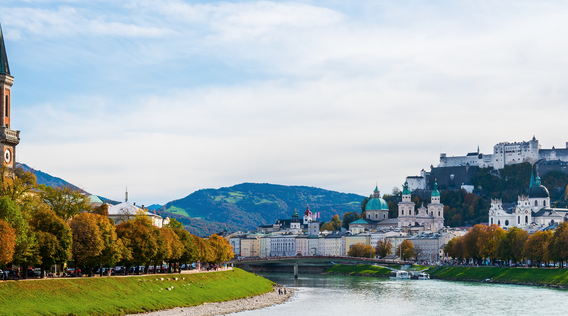
4.8 out of 5 stars
Read more about what’s trending in travel


How to Plan a Trip: An Executable Guide on Planning Your Next Trip
Have you had dreams of an adventure and yet to put together a plan to bring that dream to life, in this article are some tips on how to plan a trip, these will guide you through getting things ready for a perfect vacation.
The ideas for vacation often feel so wonderful, but without going about it the right way, you might end up only seeing the impossibilities and at worse drop the idea.
However, with a bit of preparation and keeping the dream alive, this dream can come into reality.
A lot goes into perfectly planning and executing a travel plan, this article aims to give you some important trip planning tips which will make your trip planning process an easy one.
Are you feeling confused and asking How do I plan a trip?, here is a step guide on how to plan a trip.
How to Plan your Next Trip
1. choose your destination.
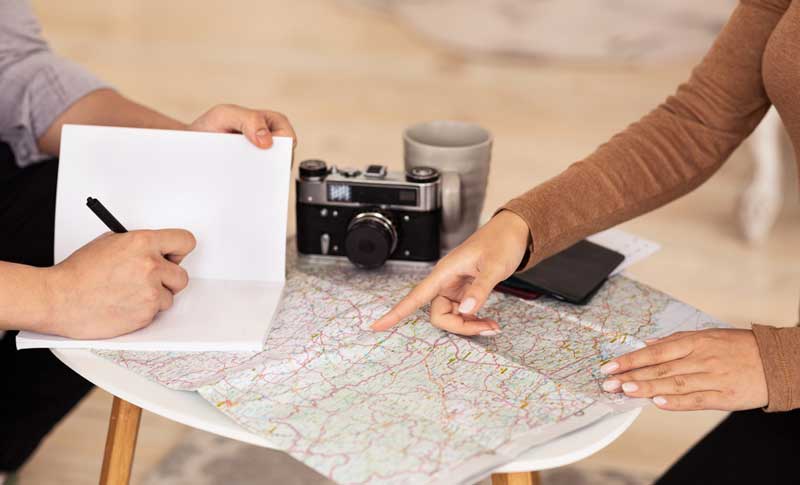
Before you travel, the first thing is to decide where you want to go. Some people are a bit indecisive on how to present where they are headed.
Try as much as possible not to be vague when picking a destination. The importance of this can’t be overemphasized.
Can you mentally picture this difference? “I will visit London in the winter” and “I will visit a place in the winter”. This is the base for your building and makes your planning easier. You work with guided direction because you have a place in mind.
2. Determine the Length your Trip

It is not only essential to know the cost of where you are visiting. It is a good one but you should not be clouded by that alone. Are you going to be away for a week? A month or a year?
Some people may have a specific vacation length probably as a result of their professional engagement or kind of work. Some others could be visa or savings restrictions.
This would help you save unbudgeted costs. So, spend quality time thinking over this until you get an answer.
3. Are you Traveling Alone or with Someone?

One big decision to make here is knowing if you’ll be going alone or traveling with a partner. They both are great options but it is highly dependent on your choice.
A solo travel gives you that liberty of going wherever you want to. Like, you just move wherever you wish to. But, it involves you planning everything yourself (may not be easy, especially for newbies).
Traveling with a partner means you respect that person’s presence. But, you have someone who helps you in planning the trip. At least, you have someone you can chat with, spend a good time on the road, or discuss relevant matters.
No one is a wrong choice anyway, would you like to meet travel buddies, here is a guide on how to find a travel buddy to assist you on ways to find one.
4. Research Your Costs
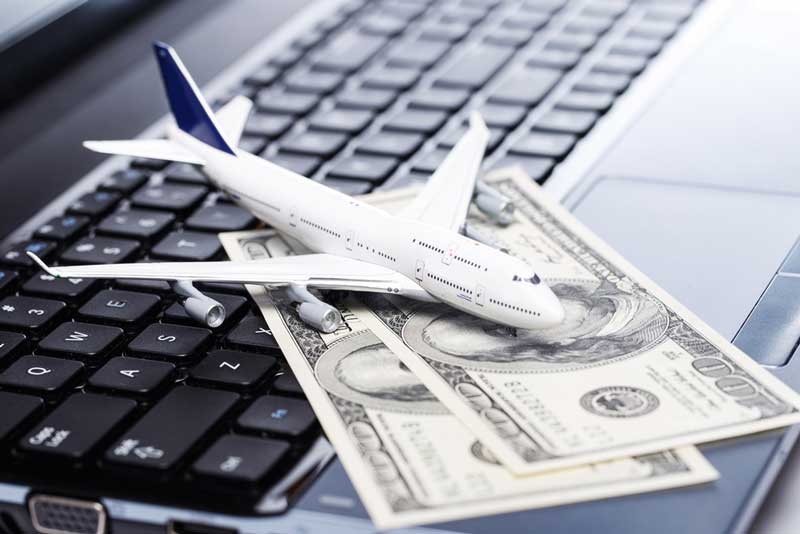
Now, you know your destination and length of your trip, the next is to know how much it would cost you.
To get this done, you have to research the cost of your location and the style of travel you would like. It may not be easy but knowing these would help you pen your costs down.
Would you need a hostel or would you lodge in luxury hotels?
What type of restaurants would you visit? Are there side attractions you have in mind?
It is good you know how these would affect you financially, for example, travelers who choose lodge inexpensive hotels or dining in high-class restaurants end up spending more money!
This is a guide on making research costs
- Procure a guidebook on your location of interest
- Check out communities, join online forums and social groups relating to this.
- Search on Google the specific items, attractions, and accommodation with the prices
- Read up good blog post relating to your location on travel websites
- Resist the temptation of going overboard when planning.
- Get Updated with Steady tips
5. Make and Save Money
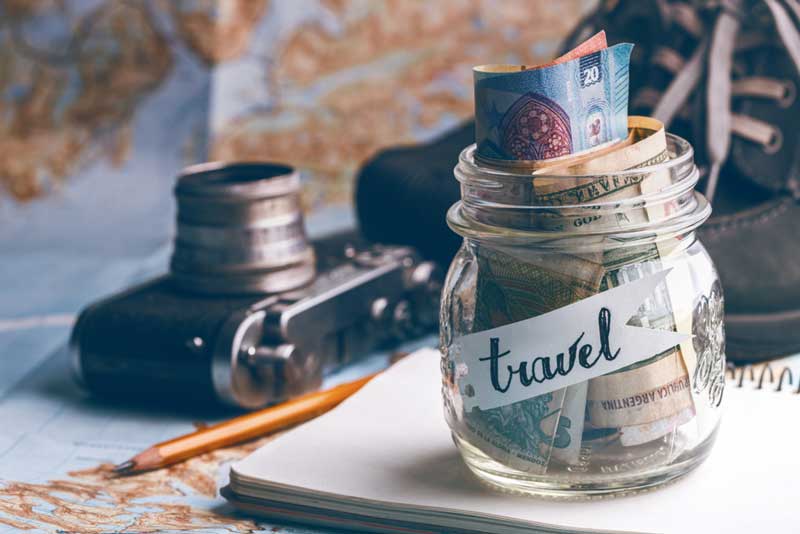
Now you are done with the overall cost of your trip, next up is gathering that amount of money.
First off, you have to bear in mind how much you have at hand and also how much you need to spend. I advise you to keep a detailed list of your current expenses so you have a clear view of how you spend. It helps you to cut back once you’re overshooting.
People to spend daily on unnecessary ventures thereby incurring avoidable expenses. It hovers often around small purchases and they keep building up.
Decide on how much you are to save per day and stand by it. A piggybank would be of help.
6. Obtain a Travel Rewards Credit Card

While you are saving money, get a travel credit card. It opens you to the added benefits attached to owning the card.
Some of them focus more on the cash back rewards while some offer you travel deals. The benefits may include earning sign-up bonuses and some points for your free flights, restaurant deals and hotel reservations, and more.
Most cards, these days offer you up to 50,000 points or more towards their flight by just meeting their minimum spending requirement.
Very essential is you sign up for a card with offers you the rewards you desire. So, feel free to select from the list the card that matches your preferences.
Most professional travelers are now masters in the art of gathering points and miles through credit cards. Putting these cards in good use could be a difference between years of travel and a week-long vacation.
7. Get a No-Fee ATM Cards

When you move abroad, you might need cash mainly. While some countries accept the use of credit cards, some others adore cash the more.
Hence, the need for ATM for withdrawal of local currency. You are going to get hit by the ATM charges.
Like we’ve already established, try to cut out any form of little recurring cost, they accumulate and you would be surprised how much you save by avoiding them.
So, if you are going to stay away for a long period, I advise you to do something in that regards so that banks don’t chew into your hard-earned money
Before starting your trip, you should get a no-fee ATM for withdrawals.
You can check your local bank for listings of these banks that operate these cards. Any bank within the Global ATM Alliance as they don’t charge such fees.
8. Remain focused and Continually Inspired

As you get closer to achieving your goal, your desire to travel must be kept alive.
Planning your travel can be stressful and exhausting. It even becomes more tiring if your family and friends are not in full support of your trip.
This lack of enthusiasm from relatives has discouraged some people and even made them lose their desire.
There are a vast number of ways to remain upbeat and focused before you begin your trip. I will help you with some.
- Read up books that would inspire you about adventure and traveling.
- Follow and read blogs with a post about travelers and their experiences.
- Follow and join social media platforms where find full-time travelers. Engage yourself with their content.
- Be updated on any news regarding your destination.
- See movies about traveling.
- Pay zero attention to naysayers and gainsayers.
9. Anticipate and Look Out for Last-Minute Deals
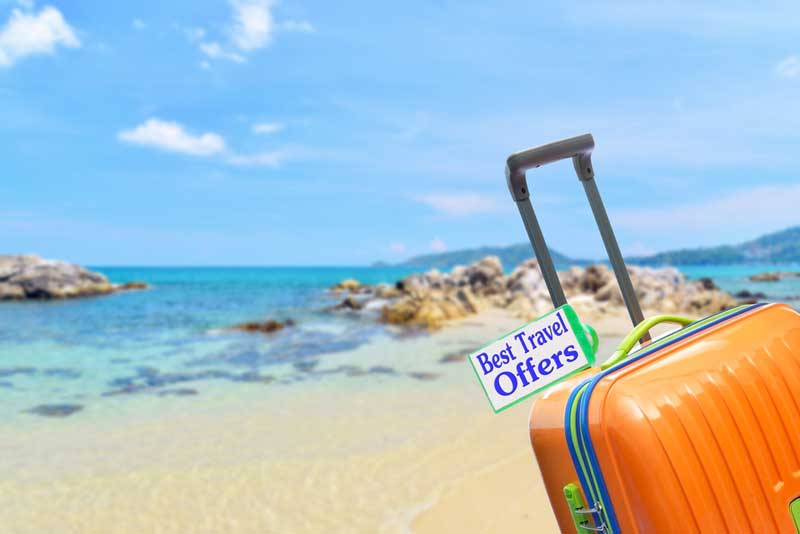
Before you book a hotel or purchase a flight ticket, please have the patience to check for some last-minute discounts. You are potentially saving hundreds of dollars on your holiday if you get the right offer.
It would not hurt checking for these deals even if you have chosen a destination already. Hopefully, an offer you can’t resist would show up.
Tokyo may have been on your mind, but then you see and offer in Helsinki. You may find a week cruise for 60% off to the Bahamas or 70% off sailing trips around Lakeland.
You could save a reasonable amount of money if you exercise flexibility as a traveler.
10. Note Down Country-Specific Requirements
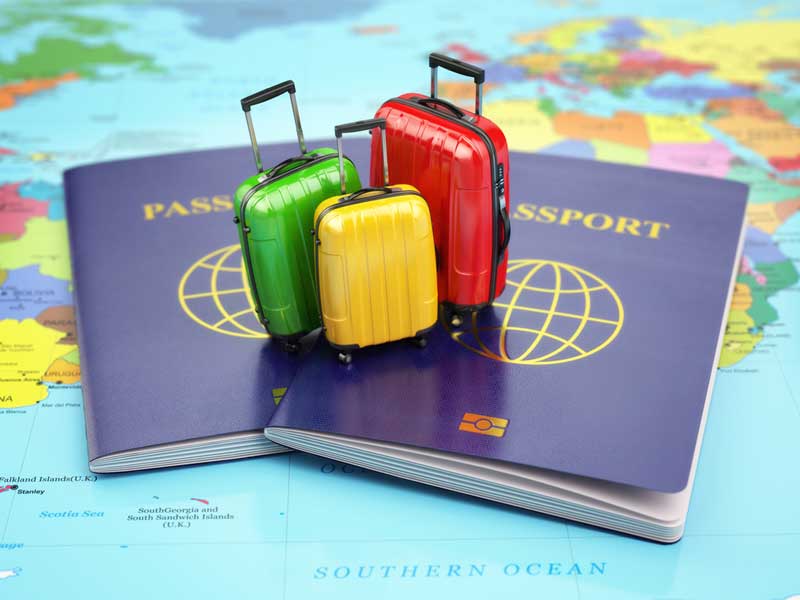
There are specific requirements that are peculiar to different countries. Vaccinations and visas as very important requirements you have to place in your mind when planning your trip.
For example, China and Nepal have as a requirement that every citizen of the U.S must apply for a visa before gaining entry into their countries.
However, most European countries do not need visa applications from any U.S citizen. They accept the United States passport as a visa for tourism.
This is the same with vaccinations, some countries require you to show proof of vaccination when you arrive.
11. Book Your Flight
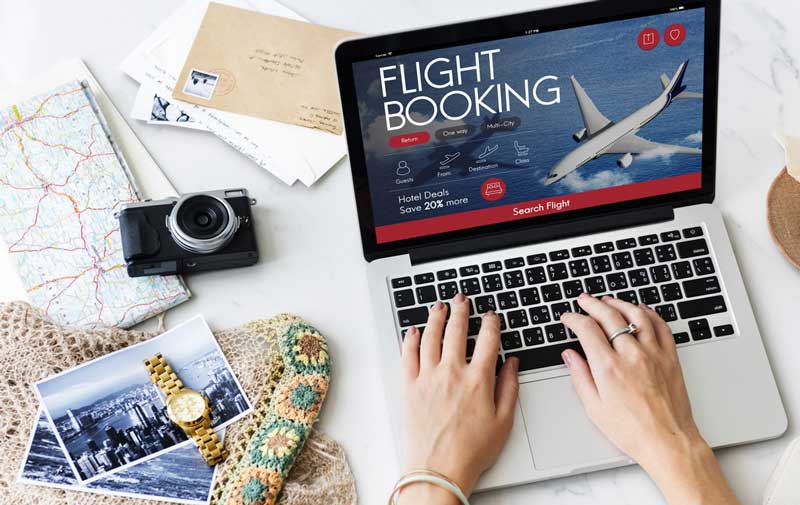
By now, you must have paid for your travel credit card, met the minimum requirement (limit), and received the sign-up bonus and reward miles.
Formerly, it was not tough booking a flight with reward miles, but now it’s not the same way. The reason is because then they were not much more available? So, to beat this, do ensure you place bookings very early.
Also, you try to avoid being on a flight where you are made to pay more for just tickets. here are some recommended sites.
- Momondo – A great platform for finding cheap flights.
- Skyscanner – Skyscanner is one of the best websites for searching multiple destinations at the same time.
- Google Flights – Like Skyscanner, Google Flights is great for open searches to multiple destinations.
- Kiwi – Kiwi is great for finding lesser-known routes or smaller carriers.
- AirTreks – AirTreks focuses exclusively on multi-destination RTW tickets.
- For the best deals, book your flight about two-three months in advance.
12. Book your Accommodation

After you’ve confirmed your flight, it is now safe to book your accommodation. You should wait after confirmation of your flight to book a place for yourself. Little changes in flight schedule may bring about costs you never imagined.
If your trip is for a fixed schedule, go ahead and book an accommodation covering that period before you leave.
Let’s say, you’ll be traveling for two weeks. You are free to book the accommodation that is for the duration of these 2 weeks all at once.
But, if your trip would be more than 2 weeks (or some long-term), then you are advised to book your accommodation for the first few days. You can pay more as you stay more days.
Checkup these go-to sites for the best deals in accommodation, they are Hostelworld, Agoda, Booking.com, Airbnb.
If you wish on staying in various hotels during your visit, then sign up for a hotel credit card before you leave.
Obtain cards from Marriott’s Bonvoy Boundless. They offer a massive welcome bonus and give you six time the points in hotel stays and even get a yearly free hotel stay.
13. Make a Plan of your Activities
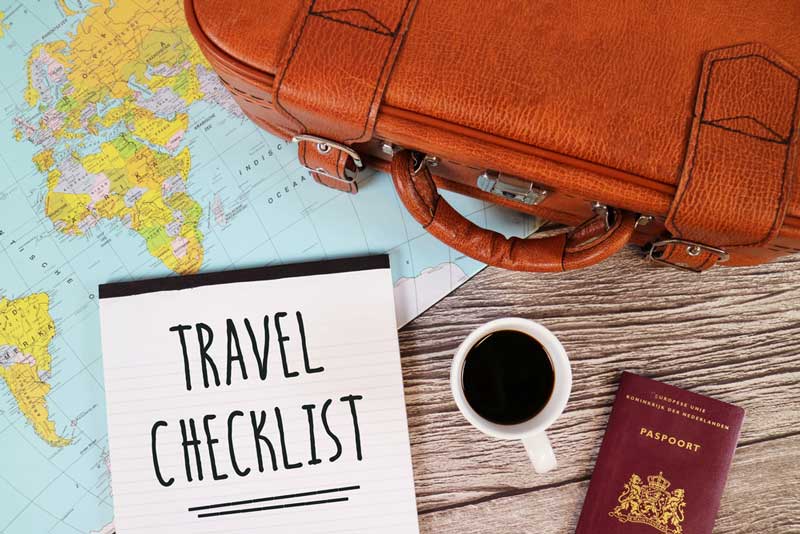
There is no vacation without activities to take in during the period. Hence, you must make a list of the main activities you want to get involved in or enjoying during your travel.
Ensure you have a well-budgeted list with the attaching costs.
In a bid to achieve that, you can make some adjustments to the way you save. It helps you make more money for your trip.
Also, search for discounts. Some of the countries give you discount in person while others offer a discount based on early bookings
In the end, the list of activities helps in giving you this concrete direction. Because you are working with priorities, hence you don’t spend unnecessarily.
14. Sell off Some Properties

Now, if you are making a long-term trip, (let’s say about 6 months, probably more) its expedient you sell off some of your belongings.
First is this, you would make some reasonable amount of money from the sales. I tell you, you’ll be surprised how much you realized at the end.
Secondly, you need not pay for storage! Imagine complete 6 months. That is huge! You can calculate how much it would cost you to store these stuffs for the said time.
So, before making such a long duration trip, start selling about 2 months before your set date. Here are some recommended sites to sell those properties.
- Amazon – Largest online store in the world.
- Craigslist – Classified site, reaching global and locals.
- eBay – An online classified website
- Facebook Marketplace – Here you can find buyers close to you
- Gumtree – online classified site having main focus in Australia and the UK
This step can be skipped if you are not going for long.
15. Switch to Automated Emails

Leaving for a trip does not mean other aspects of your life should change. Before you travel, you should set your emails to paperless options.
Go paperless and ensure you have an online bill payment set up to foot your recurring bills. You would not want to miss any while you are away. You can do this by contacting your bank, they will help with the automation setup.
But, if you still need a paper mail, then Earth Class Mail is at your service. They can access your mail and scan them while you’re off.
Also note that this step is optional, If you wouldn’t stay for long, then skip this too.
You can still switch your mail to a family member or a friend, that’s if you don’t want to pay for mail service. Overall, automation of emails is simple, cheap, easy, and reliable.
16. Inform your Credit Card Company of your Trip

It does not matter how long your trip will be. It would be wise to inform your credit card companies that you will be going overseas.
With this notification, they wouldn’t mark any of your transactions over there as fraudulent and the risk of blocking your card is blotted off.
It’s not fun to sit on the phone discussing with your credit card company trying to iron out issues while enjoying your holiday.
Ensure you have diverse credit and debit cards in your wallet. With this, you remain safe if one card is stolen or gets flagged or even gets lost. So, with this backup, you still enjoy your trip.
17. Time to Pack
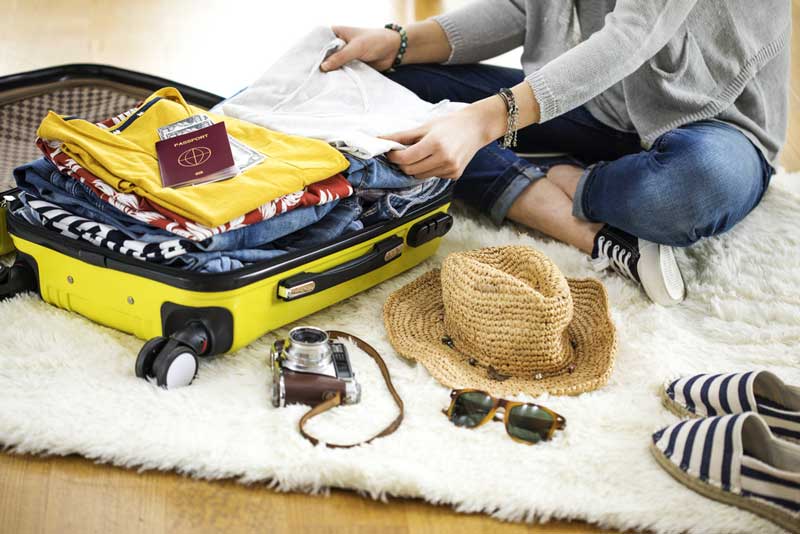
Here is one aspect of traveling that often take a deal on most travelers? People tend to exhibit mixed feelings about when it comes to packing for a trip .
It is could be full of emotions because you would maybe stuck in packing a lot of belongings in “just a case”. But that is the opposite, because when it comes to traveling, it is less.
You don’t need to pack 6 pairs of shoes and 4 sweaters. You just get by it less. So you must be able to strike a balance on what you will be using so as not to pack a whole lot. Expect you are visiting varying climates. You can also pack to sleep in the backseat of your car.
Overpacking can lead to discomfort in your walks, expensive transportation costs, and the likes. So do everything best to avoid the whole hassle.
There are things you can always get abroad so, there is no need to come with them from home. You can easily do your laundry, you can purchase some stuffs by the road, so why bother?
There is one working rule of thumb you can apply here. That is, remove 20% of whatever you packed initially. The remainder will amount to something reasonable that will last s few months.
18. Purchase a Travel Insurance
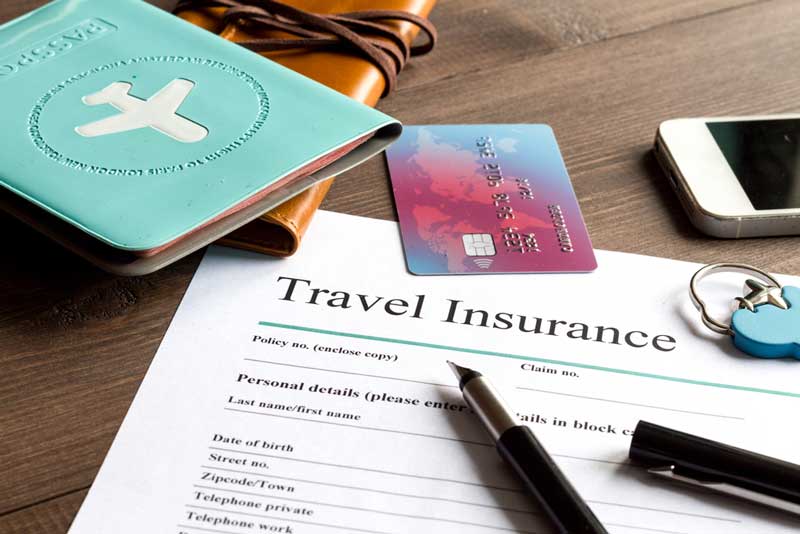
A lot of persons make this mistake of ignoring the procurement of a travel insurance `and even forgo the coverage at the same time.
Some of them say, “It is not necessarily getting an insurance, I’m not sick. I’m very healthy.” Their thoughts tell them no reason why they should buy travel insurance while on holiday.
There is more to travel insurance than just the health protection. This insurance covers you when a flight is canceled, or when your camera gets damaged, or something belonging to you gets damaged or there is a need you go back home to attend to an emergency.
It may look like an added expense, yea. But it is better not to be stranded in difficult situations like these. You can’t tell what would happen next.
We strongly recommend World Nomads. They are good at providing quality insurance. Then for the elderly (over 70 years of age), Insure my Trip is the best.
19. Have Super Fun on your Trip

Now that everything is in place, it’s time to leave, and don’t forget to have fun.
After, finalizing your bookings (all of them), and having your activities all ready, head straight to the airport and board your plane.
Look up, you’ve got to enjoy this, it is the fruits of your labor. You will be amazed at the number of months some people spend in preparation and working out their vacation, only to end up hating their trip.
Put up positivity! True that some people have genuine misfortunes abroad, but a good number of times, travelers suffer from their poor attitude.
You may be nervous (that’s normal for some situations), but don’t let it weigh you down. Trust your plans, show positive. Also, do well to protect your money during your travel to avoid any frustrating situations during your trip, this is an experience of a lifetime, so it’s going to be full of goodness. I guarantee you that.
Irrespective of the timeframe of your trip, this guide will help you stay motivated as you plan. Pin this article and implement these ideas towards achieving that dream vacation.
The pros and cons of carefully planning a trip
Travel planning is a topic where people usually have strongly held opinions. Many people are either meticulous planners or completely free-spirited travelers that wing everything. The majority of people fall somewhere in the middle.
But irrespective of your own personal views about it, there are several pros and cons for careful trip planning. If you happen to be somewhere in the middle, these are important to take into consideration when deciding how carefully you should plan your trip.
Pro: Planning will save you time.
If you’re going to a popular tourist destination, you are one of thousands on any given day. Researching information about popular tourist attractions may save you time that you would otherwise spend in a line to get into a museum. When you’re on vacation, time is of the essence. Having a good idea of the best times of day to go somewhere or pre-buying tickets can save you hours of wasted time.
Con: Planning too much can restrict your ability to be spontaneous.
Planning your trip down to meal times can severely restrict your ability to do something interesting that may come along. For example, I went to Iceland mainly because I wanted to see the Northern Lights. I went at the perfect time of year, but that’s a phenomenon that is unpredictable. And on the night I had originally planned to take a light-hunting tour, the sky was too cloudy and I couldn’t see them. But because I left my evenings relatively open to activities, I was able to book not one, but two additional Northern Lights tours. And I didn’t get to see them until the third night. If I had come to Iceland with only one night allotted for that, I would have left disappointed. But I was able to adjust my trip to prioritize it while I was there.
Pro: Planning can help ensure that you’ll do exactly what you want.
That being said, sometimes planning is not only preferable, but essential, for certain activities. For instance, if you want to go to Machu Picchu, it’s impossible to do so without careful planning. That’s because only a couple of thousand people are allowed to visit the site per day, and tickets sell out far in advance. So if you go all the way to Peru without doing any research or planning, you would find yourself spending a lot of time in Cuzco and not getting anywhere near Machu Picchu.
So if something is really important to you, it’s crucial to look up some information on how to see it. That alone may dictate how carefully you should plan your trip.
Con: Planning may keep you from discovering the things that aren’t in a guide book.
It’s tempting to make a long list of must-do must-see places and create a schedule to make sure you don’t miss out on any of the most popular activities in a certain city. But most popular doesn’t always mean best. I’ve been to Paris twice, and the first time I went, I spent the entire time furiously going to every single museum and attraction in Frommer’s. And I hated it . When I went to Paris a second time without any itinerary, I spent half a day sitting in a beautiful park eating fresh cheese and fruit with a few bottles of French wine, enjoying the hell out of the real beauty of Paris.
There are many street festivals and events that may not be on your radar that may be much more worthwhile than whatever you had meticulously planned to do with your day. But if you don’t give yourself a little freedom, you would never find out.
Pro: Planning can be fun.
Planning a vacation can be almost as fun as going on a vacation. To be honest, my travel addiction is 60% love of actual travel and 40% a chase of that high I get when I book a flight somewhere. It’s like crack but more expensive. Sitting down with your travel companions and looking at all there is to do wherever you want to go, looking at pictures, and making your own list of essential activities is exhilarating.
Con: Planning can take the fun out of the trip.
You know how you can spend all day poring over a recipe and by the time you’re done, you don’t even want to eat it anymore? It’s a little like that. Sometimes planning feels like a chore, which takes the fun out of something that is supposed to be a break from responsibility and work. It can be time-consuming and daunting, and all the planning in the world can’t save you from delays and mishaps. And is there anything more frustrating than wasting time planning something only to have it totally destroyed by a late train? Sometimes the best way to avoid frustration on vacation is to relax with your planning and go with the flow. And if you’re starting to feel a little overwhelmed with the details, let it go. You’ll survive.
So the question remains: how carefully should you plan a vacation?
Well, after you’ve taken these pros and cons into consideration, that’s entirely up to you to decide.
Share this:
- Click to share on Twitter (Opens in new window)
- Click to share on Facebook (Opens in new window)
- Click to share on Pinterest (Opens in new window)
- Click to share on Reddit (Opens in new window)
- Click to share on Tumblr (Opens in new window)
- Click to share on LinkedIn (Opens in new window)
- Click to share on WhatsApp (Opens in new window)
Leave a Reply Cancel reply
Discover more from gnometrotting.
Subscribe now to keep reading and get access to the full archive.
Type your email…
Continue reading

Pre-travel Checklist: 24 Things To Help You Get Ready For Your Next Trip
- Post last modified: June 8, 2021
- Post author: Nicole
You can support this website, at no additional cost to you, by using our links to purchase hotel stays, rental cars, travel products and more. Learn more .
It’s an exciting time. You finally picked a destination, and your flights are booked. Yay! Now the planning really starts. There’s a ton to get done before your trip. Don’t worry, we’ve put together everything you need to prepare for your trip in this easy pre-travel checklist. Useful for both domestic and international travel, these 24 essential things will help get you ready and organized for a great trip.
You may find it helpful to bookmark this page in your browser’s Travel Planning folder so you can find it easily when you need it. Also, we’ve included a handy printable version you can download at the bottom of this post. Happy trip planning!
1. Check ID Expiry & Passport Pages
First things first, no one is going anywhere with expired travel documents.
If you’re traveling internationally, check your passport is valid for at least six months beyond your return flight date. Most countries won’t honor a passport with less than six months validity.
Some countries are picky and require a full clean passport page, especially for visas. Therefore the U.S. State Department recommends having at least two blank pages in your passport. And trust us, they won’t use the endorsement pages in the back.

2. Research Visa Requirements
A biggie for international trips on our pre-travel checklist is to completely understand visa and entry requirements. As many visas take weeks to sort out via an embassy, you’ll want to look into this straight away.

Even if a visa is not required, check if a Travel Authorization is necessary. For example, both Australia and the USA require authorizations for visa exempt travelers before boarding.
This caught out a friend of mine. Unaware of the US ESTA requirement, she was turned away at the gate for her flight to Hawaii. Once the ESTA was granted, she had to re-book on a later flight, at her expense. Yikes!
3. Book Accommodation
It’s rare we book accommodation for our entire trip, as we don’t tend to stay in the same area too long. However, we always sort where we are going to lay our heads that first night.
When traveling there’s so much that can go wrong. We’ve had situations where delay after delay put us at our destination very late at night. Boy, were we grateful to know where we were going when we finally got there.
Booking.com makes searching for the best price across a range of accommodation easy. We’ve been using them since 2008.

4. Arrange Travel Insurance with Medical Coverage
There’s nothing more heartbreaking to your travel spirit than having to cancel a trip, except canceling a trip you still have to pay for.
Travel Insurance is a life saver, literally. Not only can it help financially with cancellations, delays, and lost luggage; the right insurance can help with unexpected medical bills. Most domestic insurance plans don’t provide help with overseas medical care.
When looking for travel insurance, make sure it has healthcare coverage that includes medical and emergency repatriation.
5. Refill Your Meds and Check Local Laws
Obviously, you want to make sure you have enough of your prescription to make it through your trip. However, did you know some prescriptions and even over-the-counter medications can be illegal in other countries?
You may need proof of your prescription with you on your travels. In some cases, you may even need to get prior authorization to travel with your medication. Speak with your destination’s embassy to find out what they require.
6. Get Up to Date on Vaccinations
The new talk is about potential Covid vaccination passports. However, travelers to certain areas of Asia, Africa, the Middle East, and South America know vaccination requirements are already a thing.
Not only should you be up to date with all the standard vaccinations, when traveling internationally check what other vaccinations your destination requires. These may depend on where you live, where else you’ve traveled, and how long you will be there.
Also, consider getting the recommended vaccinations for the area. For example, Hepatitis A & B are rarely required but strongly recommended for most developing nations. Check your government’s travel health advisory (i.e., CDC for US residents, NHS for UK residents) for specific guidance on where you want to travel.
Don’t leave this one until last minute either. Some vaccinations need to be done at least a month before travel.
7. Decide How to Get to the Airport
Will you drive or take an Uber? If you’re driving, check parking fees. Will you park at the airport or at an off-airport lot? Is there a discount for booking early?
Though the US has websites to find discount parking at airports, we’ve personally not found any better deals than just pre-booking directly with our local airport.
However, in the UK we loved yourparkingspace.co.uk , where locals advertise parking spots on their property. Often, it’s much cheaper than parking at the airport.
8. Getting Around Your Destination
Since we are already talking about transportation, the next item on our pre-travel checklist is to work out how you’re going to get around at your destination.
Are you going to rent a car or use public transportation? Do you need to arrange an airport pick-up? Are you going to use any long-distance buses or trains? Usually, you’ll find discounts when you book between 1 – 3 months before your travel.
In the US and Europe, we’ve always had great luck using Rentalcars.com to book our car hire.
9. Get an International Driver's License
If you’re going to drive overseas, you’ll likely need an International Driver’s Permit (IDP) to accompany your home country’s driver’s license.
Honestly, I find these things a bit silly, since there’s no test, it’s just another fee to pay. However, without it most countries won’t recognize your license and it does help translate your license into some languages. Though, not all countries recognize an IDP, so check before you buy.
You must buy an IDP in the country where you hold a valid driver’s license.
- US driver’s license holders can purchase from AAA.
- UK driving license holders can purchase at most post offices.
- Canadian driver’s license holders can purchase from BCAA.

10. Sort Your Money
This is one of the most essential items on our pre-travel checklist. If you’re traveling domestically your biggest concern maybe ATM fees, especially if you use a local bank. However, if you’re traveling internationally there’s a lot more to consider.
- Find a card/bank without foreign transaction fees nor ATM fees.
- Make sure the card(s) you plan to use are accepted at your destination. Not every country readily uses credit cards. Even when they do, brands like American Express and Discover are not widely accepted.
- Always having some local cash on hand will make sure you don’t get stuck. Keep in mind, if you need to order foreign currency, this could take up to a week with your bank.

11. Inform Your Bank and Credit Cards
Yet another one we learned the hard way. Make sure your bank and credit cards know where you’re traveling and your travel dates. This is especially important if you don’t travel often, or you’re traveling to a high-risk area.
When we were in South America, we tried using Jeremy’s credit card for a rental car. He hadn’t let the bank know ahead of time, so the bank rejected the transaction and locked the card. When he called to explain the situation, they required him to come into a local branch to verify ID. Of course, this was impossible and super unhelpful. We would have been in real trouble if we didn’t have my card as a backup.
12. Buy an Adapter
Before heading overseas, check which plug type your destination uses.
If you plan to bring any electronics that need to plug in, like a phone or battery charger, you may need a plug adapter. These inexpensive gadgets are often challenging to find once overseas. We use a worldwide adapter, like this one on Amazon .
Also, check your destination’s voltage. These days, most travel items, like laptops and cell phones, have 95-240 VAC compliant plugs. However, it’s important you check. A plug adapter is not a voltage converter and using the wrong voltage can literally blow up your electronics.

Universal Travel Adapter

Travel Voltage Converter
13. make copies of your documents.
We make three copies of our travel documents, including passports and driver’s licenses.
- One hard copy we keep hidden on us for emergencies.
- A second copy we give to a trustworthy friend or relative.
- The third is an electronic copy we keep in our online cloud storage.
We also make a list of emergency contact numbers, including credit cards, banks, and the closest embassy or consulate.
Finally, we keep hard copies of travel tickets, even when we have tickets on our cell phones. What happens if we can’t access our email, or the phone glitches? We’ve also had situations where the airline/train company, etc., wouldn’t accept a digital ticket.
14. Arrange Pet Sitting
Obviously, if you don’t have pets, this isn’t something you need to worry about, but with three cats, this is high on our pre-travel checklist when planning any trip.
For short trips, we use an in-home pet service. For longer trips, we use a kitty condo boarding service. It’s pricey but worth the extra peace of mind they won’t be getting into anything while we are away. These may look like sweet faces, but trust me, it’s just a cover.

15. Prepare Your Home
When we lived in an apartment it was so easy to take off for a few weeks; we’d turn off the gas and water, and off we’d go. However, living in a house is very different. Newspapers and mail pile up and the lawn grows out of control. To ensure the house doesn’t look like an easy break-in target we have to arrange these things to be managed before we go.
For a full list of items to check through, see our article on Preparing Your Home for Your Trip .
16. Consider Your Safety
Traveling to an unfamiliar city or foreign land is extremely exciting; though, it can also be dangerous. The best way to stay safe is by staying informed.
- Research crime rates, specifically tourist crime, and which areas to avoid.
- As a U.S. national, I also register with the US State Department’s Smart Traveler Enrollment Program (STEP). This program registers my trip with the local embassy in my destination, in case of a natural disaster for instance. They also send me safety updates for my destination.
- Give a loved one your itinerary. Even if we can’t give specifics, which is usually the case, we give general timelines on where we’ll be.
- Consider letting your accommodation know where you’re going and when you should be back. We only do this for remote adventures. For instance, I vividly remember getting lost in a Borneo jungle. It was somewhat comforting knowing the small guest house owner knew where we were. Luckily, it all worked out and we made it back before causing any concern.
17. Figure Out How to Stay Connected
Will your phone work where you are going? Does your carrier have an economical international plan, or do you need to buy a SIM card while you are there? Does your phone allow tethering, or will you rent or buy a mobile hotspot?
How readily available is Wi-Fi? Will it be available in your hotel or at nearby cafes? If you plan on using public Wi-Fi, you may also want to bring your own VPN to keep your data safe.
18. Work Out Your Must Do List
Okay, so now that we’ve worked out all the serious stuff on the pre-travel checklist, let’s get down to the fun stuff! What do you want to do while you’re there?
Though we are not advocates for planning every detail of a trip, we like to have our minimum “must see list”. Remember, it’s easy to miss what you don’t know is there. Do your research ahead of time and mitigate any traveler’s remorse.
19. Research Photo Spots
This one is for my fellow photography addicts. To get those great shots it takes a little more research than just putting something on a “must see” list. To make the most of your trip, figure out the best sunrise and sunset spots. Plus, work out the best time of day for lighting at your “must see” attractions.

20. Consider What to Pack
I have a love-hate relationship with packing.
The part of me that loves it, enjoys the planning side. Okay, fine, it’s actually more the shopping side of the task I love most. But, a lot of planning goes into shopping, am I right? I have to consider the climate and what gear we already have. It’s a lot of work.
The part I don’t care much for is the actual packing. To reduce the stress of packing, we use a packing checklist. Here you can grab a free copy of our Couples’ Weekend Away Packing List .
21. Decide on Luggage
Now you know what you need to pack, the next thing on our pre-travel checklist is to decide what bag(s) to bring.
Depending on where we are going and how we are traveling, determines what bag we use. Also, we always check baggage allowances early. If the bag we want to bring won’t work for the trip, then we have time to buy another one.
To see our favorite travel luggage, check out our post Right Bag for the Right Trip .

22. Learn a Few Basic Phrases
When you’re going someplace where you don’t know the local language, it’s always useful to learn a few key phrases.
At the very least, bring a phrase book. I personally like point-and-speak phrase books, like Yubisahi’s English to Japanese point-and-speak book. By far this was the most useful book I had with me living in Japan.
If you’ll have internet service on your phone, set up the free Google Translator app. Use the camera function to translate signs and menus. So helpful!
A few phrases to know by heart include:
- Hello / Goodbye
- Please / Thank you
- Sorry / Excuse me
- I don’t understand

Japanese Point and Speak Phrase Book

French Picture Phrase Book

Spanish Picture Phrase Book

Italian Picture Phrase Book
23. download some tunes.
Traveling is stressful, especially dealing with airports. One way to keep chill is by listening to your favorite tunes. Create playlists for the airport, something to sleep to on a long flight, something for lounging at the pool, and of course an anthem for the road trip.
I love to road trip to 90’s tunes – give me some Wallflowers, Smashing Pumpkins, Sound Garden, and Matchbox Twenty, traffic just fades away. What’s your favorite music to travel to?
24. Plan the First and Last Day
Often overlooked, the last item on our pre-travel checklist is so important.
Have a plan for your first day. You should know where you’re staying and how you’re getting there from the airport. Also consider what time you can check in. If you arrive before check in, is there a safe location to leave your bags as you go out and explore?
On your last day, consider what time you need to check out of your hotel vs when you actually fly out. Can you get a late check out? Is there a safe place to leave your bags?
Download the Pre-Travel Checklist
Download a printable copy of this pre-travel checklist to plan your next trip.
See our Travel Resources Page for more travel planning and packing guides.

We recommend and use these companies to arrange our travel plans; they make travel planning easy and affordable. If you have questions on our experiences, feel free to ask us !
- Book Flights: Skyscanner
- Book Accommodation: Booking.com
- Book Rental Cars: Rentalcars.com
- Buy Travel Gear: Amazon
You Might Also Like

How To Correctly Use Lightroom Presets For Your Travel Photography

Protect Your Camera from Harsh Weather: Rain, Snow, Cold, Humidity

Cropped vs. Full Frame Camera Sensor: Which Is Better?

Our Readers Share Photos Of Their Favorite Local Destinations

How To Install Lightroom Presets to a Mobile Phone, Without A Desktop

Road Trip Tips: Making Hot Meals Without a Kitchen
Though we aim for accuracy, travel is an ever-changing world. Please check information with the facility you plan to visit.
Privacy Overview
- Skip to Nav
- Skip to Main
- Skip to Footer
Heading to a River This Summer? Here’s How to Stay Safe
Please try again
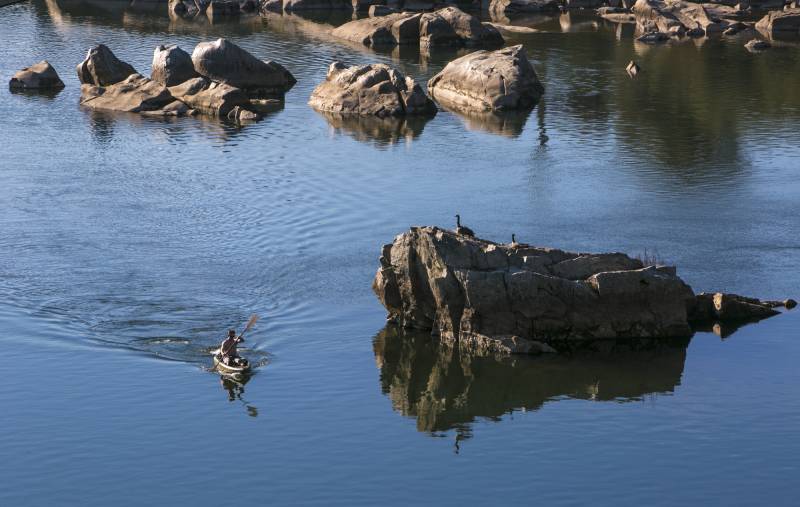
Northern California is getting a major heat wave this week . And when the weather gets as warm as this, many residents seek relief from the sun by heading out to the state’s beautiful rivers.
Some rivers, like the American River, are not flowing as harshly as they did last year when conditions led officials to warn that swimming could be life-threatening. The snowpack — which contributes to strong, cold river flows — in the Sierra Nevada mountains has been average this season, in contrast to 2023’s epic winter . For example, this graph shows the water outflow into the American River.
However, your local river could still be fast and cold this year — and pose a potential threat even if you’re not planning on going into the water.
If you’re planning to visit the river this season, here are some tips from officials to ensure a safe trip for you and your loved ones.
Be particularly careful at the South Yuba River
As they did in 2023 , Nevada County officials are again emphasizing possibly dangerous conditions at the South Yuba River due to fast and often unpredictable water flows, according to public information officer Taylor Wolfe.
“Our Yuba River is majestic, but she’s also unforgiving, and it only takes an instant to lose a life,” District 4 Supervisor Sue Hoek said in a news release, which also reported that one person has already died in the high water flows of this river in May .
“Tragic and fatal accidents happen at the river every year, and this year, water flows are even more unregulated with the water flowing from Spaulding Dam,” Nevada County Consolidated Fire District Operations Chief Pat Sullivan said. “In an area where you could be standing on a rock high and dry in the morning, you could be knee-deep in cold and dangerous fast-flowing water in the afternoon.”
Check the status and temperature of the river
Sarah Kennedy, California State Parks’ boating safety education and outreach coordinator, told KQED in 2023 that visitors should check out Dreamflows and American Whitewater , two handy websites that allow you to assess the flow of a river before you go.
On these maps, the color green denotes the rivers where the flow is safer — but be warned that even these rivers can have high flows that demand caution. For example, while some parts of the Yuba River may be calmer, other parts may be best left to more experienced visitors.
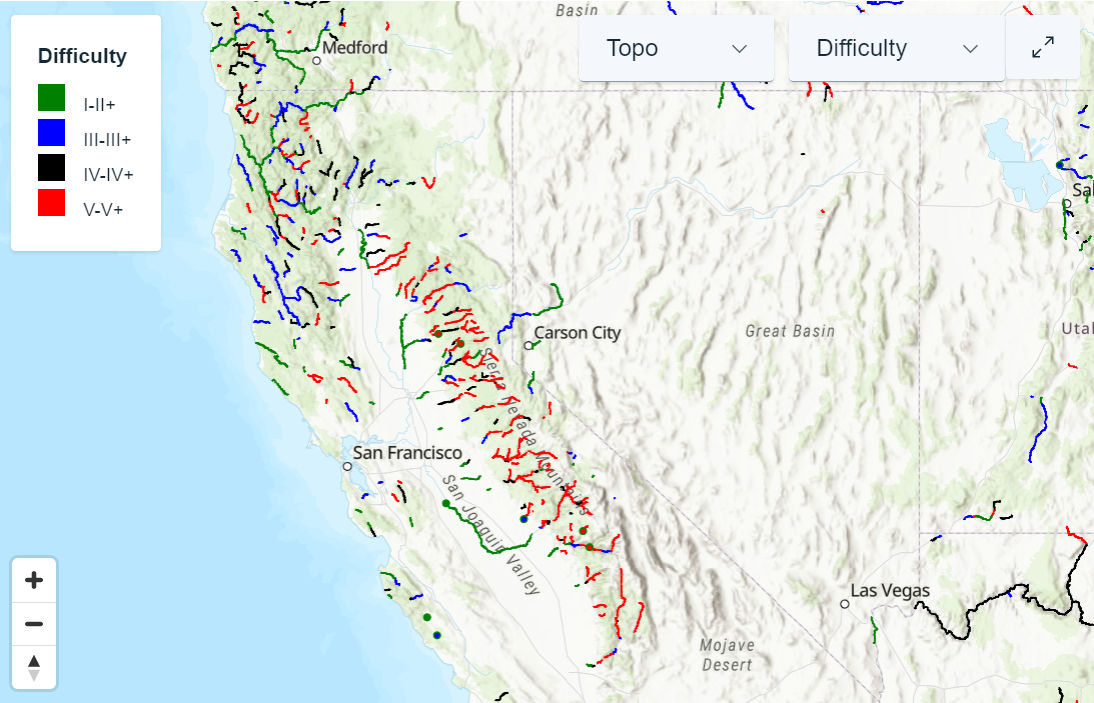
You can also check the temperature of an area’s water using the California Nevada River Forecast Center’s map , where you can also check for any specific messaging around that county’s rivers.
Make sure you pack properly for your river trip
Once you’ve checked online how swift the river is, using a resource like Dreamflows or American Whitewater , here’s a checklist of things to then keep in mind when prepping for your trip, according to experts like Kennedy, Nevada County official Heidi Hall and Sacramento Park’s ranger commander David Spencer in interviews with KQED in 2023.
- Do you have the right shoes to get down to the river if a hike is required?
- Do you have enough drinkable water?
- Do you have enough food?
- Do you have a trash bag to pack out your litter?
You should also be ready for the fact that some of the most picturesque (and private) river spots are in remote areas, potentially with no cell service or amenities like drinking water or bathrooms. Prepare to be “in the wild for the day,” Hall said. (According to a 2024 news release from Nevada County, there can be a 15- to 45-minute emergency response time .)
Kennedy said visitors should know where they are on the river and whether there is a big rapid nearby. She suggested people not wade or swim right now, even if it looks calm.
The reason is hydraulic holes in the river , which can suck people in — even those with life jackets, she said.
Spencer, the ranger commander from Sacramento, asked people to have a plan when getting into the water and to have someone onshore who can track them since the cold water can be quickly disorienting. See more water safety tips about the American River .
Know what you’d do if somebody gets into trouble in the water
If you see someone in trouble in the water or spot somebody falling in, don’t jump in after them.
“It’s hard not to go after someone that you love, but … you’ll probably become a victim yourself,” Kennedy said.
Instead, Kennedy said that “the best thing you can do” is to call 911 immediately with your exact location and a description of what that person was wearing. “ The best thing you can do is keep an eye on them, keep calm, know exactly where you are and be able to give good information” to the emergency services, she said.
Spencer echoes the importance of giving accurate descriptions to 911 operators: On the American River, “we usually will have an airship in the air, or they’ll get one in the air pretty quick to help locate these people,” he said. “And knowing what they’re wearing really helps us.”
Sacramento County’s water safety guidance suggested yelling, “Help!” to draw attention if you spot someone in trouble in the water, and — if you’re able, without getting in the water yourself — reaching toward the person with a pole, branch or paddle, to help them stay afloat until they can get to shore or help arrives. If you have a life jacket or ice chest on hand, you could also throw that out.
To raise the chances of a person staying afloat, Hall said people can put their feet up, facing down the river, and try to go through the rapids to swim out.
Along the South Yuba River, where the cellphone signal is frequently spotty or nonexistent, there are emergency call boxes at Bridgeport, Purdon, Edwards, Maybert Road and Highway 49 river crossings.
Get a life jacket
All of the experts emphasized the importance of having a fitted life vest, especially those good for whitewater, even if you’re just fishing.
“The American River, even with milder flows, can still be dangerous, and the best way to stay safe is by wearing a life jacket,” Ken Casparis, spokesperson for Sacramento County, told KQED in an email.
“If you plan on floating down the river this summer, make sure you have a durable raft or kayak — pool floaties and other pool toys purchased at most big box stores can be easily punctured by branches or other sharp objects stuck in the riverbed,” Casparis said.
Find your county on this list to borrow a life jacket through the Life Jacket Loaner program. Children under 13 on the American River are legally required to wear a life vest.
Think carefully about alcohol at the river
Hall outright advised against bringing alcohol to the river as it impairs judgment.
“A few of our parks have zero tolerance on alcohol,” Spencer also said. “We enforce that pretty strictly.”
“But if you’re going to choose to be in one of those parks that allows alcohol and you choose to be in the water, please be safe,” he urged. “Make sure that you don’t overestimate your abilities.
Whatever you’re doing or consuming, take the time to “make sure people keep track of each other,” Spencer said. “And don’t hesitate to call 911 because seconds really count in the river.”
Pausing on river plans for now? Check out the alternatives
Hall said some lakes could be a safer visit (but can still be cold), such as:
- Sardine Lake
- Grouse Ridge
- Scotts Flat Lake
- Lions Lake at the Nevada County Fairgrounds in Grass Valley, which offers family-friendly fishing.
To learn more about how we use your information, please read our privacy policy.
Election latest: Minister says he 'stands by' Rishi Sunak's Labour tax rise claim
The work and pensions secretary doubled down on the claim by Rishi Sunak that Labour's plans for the country will lead to a £2,000 rise in taxes for each family. Listen to the latest daily edition of the Politics at Jack and Sam's podcast as you scroll.
Thursday 6 June 2024 08:48, UK
- General Election 2024
Election news
- Minister doubles down on Sunak's claims about Labour's tax plans
- Starmer accuses PM of lying | Watchdog 'looking into' tax claim
- Tories accept further donation from businessman who was embroiled in Abbott race row
- Labour drops lawsuit against five former employees
- Politics at Jack and Sam's: The Day... Big election choices must be made
- Battle For No 10: PM and Starmer taking part in Sky News special
- Live reporting by Katie Williams
Expert analysis
- Adam Boulton: Starmer's been given licence to say 'liar'
- Sophy Ridge: No party's being honest about challenges to come
- Ed Conway : The £13,000 omission in PM's tax warning
Election essentials
- Have your say: Be in the audience for our election leaders event
- Trackers: Who's leading polls? | Is PM keeping promises?
- Campaign Heritage: Memorable moments from elections gone by
- Follow Sky's politics podcasts: Electoral Dysfunction | Politics At Jack And Sam's
- Read more: Who is standing down? | Key seats to watch | How to register to vote | What counts as voter ID? | Check if your constituency is changing | Your essential guide to election lingo | Sky's election night plans
Shadow defence secretary John Healey says he is "disappointed" that blocked Labour candidate Faiza Shaheen has decided to stand as an independent.
Ms Shaheen, who initially won the Labour nomination for Chingford and Woodford Green, said she felt "disenfranchised" by the decision to remove her as a candidate, and accused the party of embodying a "hierarchy of racism" .
Mr Healey said he understands why she is "disappointed" but added that she went through "the process that all of us as candidates for Labour have had to go through".
"I'm disappointed she's standing as an independent and one of the really big changes that Keir Starmer has brought in... is to make sure that any allegations are treated through an independent process.
"Any suggestion that there are partial treatments for some people is entirely wrong."
Back to our interview with John Healey now, who has been questioned by Sky's Kay Burley on whether he is trying to "catch out" the public by saying taxes will not be hiked for "working people".
The shadow defence secretary said those facing higher prices are "the people who are working hard and struggle to make ends meet".
Pressed further on the matter, and whether Labour will target unearned income surcharges such as dividends, Mr Healey said "none of our plans require us to raise extra taxes beyond the ones we've already said".
However he added that Labour would have to assess "the true state of the public finances is when we get to open the books".
The Conservatives have accepted another donation from Frank Hester, who made headlines earlier this when comments he made about Labour's Diane Abbott emerged.
The latest data from the Electoral Commission shows he has donated a further £5m to the Tories.
This is on top of the £10m Mr Hester donated last year.
Mr Hester said in 2019 that Ms Abbott made him want to "hate all black women and that she "should be shot".
The comments were reported on by The Guardian back in March.
A spokesperson for the entrepreneur released a statement at the time saying: "Frank Hester accepts that he was rude about Diane Abbott in a private meeting several years ago but his criticism had nothing to do with her gender nor colour of skin.
"The Guardian is right when it quotes Frank saying he abhors racism, not least because he experienced it as the child of Irish immigrants in the 1970s."
They added that Mr Hester rang Ms Abbott to "try to apologise directly for the hurt he has caused her, and is deeply sorry for his remarks".
"He wishes to make it clear that he regards racism as a poison which has no place in public life."
You can read more background to this story here:
We've also heard this morning from Labour's shadow defence secretary John Healey , who has declined to say whether the party will take action against Rishi Sunak and the Conservatives over claims about Labour's tax plans.
He echoed the view of Sir Keir Starmer that the claim of a £2,000 tax increase per family was "a lie", and said the prime minister is getting "more desperate" as the election campaign rolls on.
But asked if Labour will take any action after Sir Keir's claim that Mr Sunak broke the ministerial code, Mr Healey said: "That'll be for the statistics authority to pursue for now."
"But we're really clear that... the trust in British government is broken, it needs to be earned again," he adds, saying that Labour has been "so careful" to explain how it will fund its plans for the country.
"We have seen too much of gimmicks that make no difference to people's lives and broken promises," he says.
Mr Healey says Labour "will not be raising taxes on working people".
Sky News' deputy political editor Sam Coates and Politico's Jack Blanchard provide you with their guide to the election day ahead.
This is day 15 of the campaign. Jack and Sam discuss the Conservatives on tax and if they have their figures on Labour right, the latest on new likely manifesto pledges, and what next for Welsh First Minister Vaughan Gething after losing yesterday's vote of no confidence.
Email Jack and Sam: [email protected]
👉 Tap here to follow Politics at Jack at Sam's wherever you get your podcasts 👈
Back to our interview with Work and Pensions Secretary Mel Stride now, who says he will "fight for every single vote" after a recent poll suggested he was among several cabinet ministers who could lose his seat in the election.
Asked how worried he is, Mr Stride says he has had "majorities with anything from about 10 to 21,500".
"In every single election... I fight for every single vote. I have great pride in the fact that I've stood up for my constituents over many years on many, many issues.
"I hope that will be reflected in the result," he says.
Asked by Sky's Kay Burley what job he would do if he lost his seat, Mr Stride says he won't speculate.
Labour is dropping its lawsuit against five former employees whom it had accused of leaking a controversial report into how antisemitism complaints were handled under the leadership of Jeremy Corbyn.
The former staff members - including Mr Corbyn's former chief of staff Karie Murphy and his former director of communications Seumas Milne - denied the claims and previously said they would "vigorously defend themselves" in court.
A statement from their lawyers Carter-Ruck said: "The party is discontinuing its legal claims against Karie Murphy, Seumas Milne, Georgie Robertson, Harry Hayball and Laura Murray on a 'no order as to costs' basis.
"The five welcome the resolution of the claims."
The Work and Pensions Secretary is presented with analysis by our economics and data editor Ed Conway , who found that each household has experienced £13,000 in extra taxes under the Conservative government since 2019.
You can read that analysis in full here .
Mel Stride, in response, calls it a "number out of context that I haven't had a chance to properly look at".
He says the country has been through "two once-in-a-generation" external events with COVID and the Ukraine war.
"We supported the economy, if you go back to COVID, through furlough, millions of jobs, all that unemployment, that never happened because Rishi Sunak did the right thing," he says.
"We have seen some tax increases, but the trajectory now is downward," he adds.
Mel Stride has described Sir Keir Starmer's claim that Rishi Sunak broke the ministerial code by "lying" about Labour's tax plans as "utterly wrong".
He insists the £2,000 claim was in fact a "relatively conservative estimate".
The Work and Pensions Secretary says costing opposition policies is a feature of general elections "going back decades".
" Alistair Darling, then-Labour chancellor in 2010, carried out a very similar exercise.
"What is driving the animus of Keir Starmer and his colleagues is they know there were questions to be answered," he says.
We've just been hearing from Work and Pensions Secretary Mel Stride , who has doubled down on Rishi Sunak's claim that Labour's plans for the country would lead to a tax rise equivalent of £2,000 per family.
Asked by Sky's Kay Burley whether he stands by the figure despite the UK's statistics watchdog revealing its is "looking into" the claim, Mr Stride says: "The UK Statistics Authority has a role which involves looking at all sorts of statistics and coming to conclusions."
Pressed on whether that means he backs the figure, he says: "I stand by the numbers".
The prime minister's £2,000 claim was further called into question yesterday by a note from the Treasury's chief civil servant, which said the Conservative assessment "should not be presented as having been produced by the civil service".
Questioned on this, Mr Stride says that though the Tories never said the Treasury had signed off on it, a "substantial majority" of items in its opposition policy costings report "are actually a result of Treasury analysis".
"The report itself is very clear on all of this, absolutely crystal clear as to where the evidence is for each finding," he says.
Be the first to get Breaking News
Install the Sky News app for free


IMAGES
VIDEO
COMMENTS
1. Determine which credit card (s) you plan to use. Ideally, choose the one (s) that offers the lowest, or zero, foreign transaction fees. 2. If you use a mobile hands-free payment like Apple Pay, ensure your default credit card linked to your mobile payment account is the card with the lowest foreign transaction fees.
When planning your trip budget, be sure to include airfare (if needed), accommodations, local transportation, activities, food, and other expenses such as gratuities, travel insurance, visas, etc. I have many guides to help you understand the trip cost for many destinations including Europe, London, Paris, Italy, Portugal, Amsterdam, Scotland ...
Step 3: Choose your Approximate Travel Dates. If you've done your due diligence and filled out your own travel planning worksheet above, you already know the best time to visit your dream destination. However, when considering the best time to travel, there's quite a few factors to think about. Weather.
Step 6: Arrange accommodation. Step 7: Reserve a rental car (or alternative transport). Step 8: Buy travel insurance. Step 9: Create your itinerary. Step 10: Book tours and activities. Regardless of whether the trip you are planning is just a one-week vacation or a one-year backpacking trip, you will want to go through each of these steps ...
Step 7: Stay Focused and Inspired. While you get closer to your goal, make sure that you keep feeding your desire to travel. Travel planning can be exhausting and overwhelming — especially if you don't have support from your friends and family (and especially if your trip is still months away).
2. Make a budget. Let's say you figure your trip will cost $1,500, including airfare. It's six months away. That means you have to save $250 a month for the next six months in order to meet the costs of your trip. [6] Here are a few ideas where you can start saving: [7] Ditch that daily sugary latte.
Instead, pack clothes that all go together and can be mixed and matched easily. I like to keep all the clothes I bring in the same family of colors, with a few basic templates: pants + shirt + cardigan + scarf, say, and then I bring 2 pairs of pants and 4 shirts and 2 scarves to mix and match.
Step 4: Find & Book Your Accommodation. Next up is securing a place to rest your head, one of the most essential moves you'll make to plan a trip. It can also be the most stressful because let's face it, the options are endless, and the internet can be an overwhelming place.
Example: You will need more money to finance a 4 month trip when compared to 2 months. It sounds obvious, but the point is to ensure you get the balance right between time and travel funds. Once you establish the amount of time and any specific dates you have to play with, move onto the next planning steps. 2.
Here are 10 ways to be better prepared when you travel in 2022. 1. Book your trip at least two to three months in advance (more if you're going abroad). Most experts agree that booking a flight at least four weeks in advance—ideally six to eight weeks before travel—is key to getting a better deal and could save travelers as much as 51 ...
Determine your budget: Set a budget for your accommodation. Consider how much you are willing to spend per night and allocate a portion of your overall trip budget to accommodations. 2. Research the options: Use online travel platforms and booking websites to explore various types of accommodations.
Review your incomings and outgoings and create a REALISTIC plan to save money each month. If you know your trip will cost $2000, and from your budget, you have worked out that you are able to save $200 per month, be aware that it will take you 10 months to save for the trip. It may even be wise to give yourself some extra time and plan to save ...
Taking the time to carefully consider all options and details can result in a smooth and enjoyable travel experience. Advertisement - Continue Reading Below. ... As you near the end of your trip-planning process, it's time to pack everything you'll need for your adventures. This step can often be overwhelming, but with some careful planning ...
SEGARRA: OK, jet-setters, time for a recap. First, figure out what you want from this vacation. Decide your budget and time constraints. Commit to traveling ethically. Make sure you're aligned ...
Travel during the off-season - If you intend to have a vacation that is easy on your pockets, it is vital to travel during the off-season, when the demand is less and prices are not inflated. 3. Travel in a group to share costs related to accommodation and transportation. 4. Travel to offbeat places in the country.
The instant gratification of last-minute getaways can be thrilling. But slowing down and mindfully planning a future trip can help us appreciate the true value of travel, instilling a sense of gratitude and wellbeing. Practice patience, relish the anticipation, and research, research, research - while remembering to enjoy the here and now.
Here are eight benefits of planning a trip in advance. 1. It makes travel more affordable. The memories you'll make on tour are priceless. But getting to your destination—not to mention staying in those comfy hotels, trying out all those cozy restaurants, and enjoying all those authentic, local experiences—requires a financial investment.
4. Get Smart Luggage. Buying sturdy and reliable luggage bags is one of the most critical stress-free travel tips. If you've ever had your flimsy luggage break down on a conveyor belt or get lost during transit, you know the stress of such situations. An ideal option is this reliable 20-inch carry-on from Wrangler.
If you wish on staying in various hotels during your visit, then sign up for a hotel credit card before you leave. Obtain cards from Marriott's Bonvoy Boundless. They offer a massive welcome bonus and give you six time the points in hotel stays and even get a yearly free hotel stay. 13. Make a Plan of your Activities.
That alone may dictate how carefully you should plan your trip. Con: Planning may keep you from discovering the things that aren't in a guide book. It's tempting to make a long list of must-do must-see places and create a schedule to make sure you don't miss out on any of the most popular activities in a certain city. But most popular ...
Make sure the hotel has everything you need. Book early: Book your accommodation in advance to ensure availability and get the best rates. 4. Here are the last steps to consider when planning your trip: Image credit: Glenn Carstens-Peters. Check the validity of your passport and apply for the necessary visas.
14. Arrange Pet Sitting. Obviously, if you don't have pets, this isn't something you need to worry about, but with three cats, this is high on our pre-travel checklist when planning any trip. For short trips, we use an in-home pet service. For longer trips, we use a kitty condo boarding service.
PLAN YOUR TRIP AHEAD. One of the best ways to avoid crowds while traveling is to plan your trip ahead. Gathering as much information about your dream destination will allow you to plan your travel itineraryflawlessly. While we applaud spontaneity, it's not the best approach to avoid crowds. Impulse decisions can deliver some amazing travel ...
If you're planning to visit the river this season, here are some tips from officials to ensure a safe trip for you and your loved ones. Be particularly careful at the South Yuba River As they did in 2023 , Nevada County officials are again emphasizing possibly dangerous conditions at the South Yuba River due to fast and often unpredictable ...
We spoke a short while ago to Kate Forbes, MSP and deputy first minister of Scotland, and we asked why the SNP thinks Labour's plan to create GB Energy - a publicly owned energy company ...